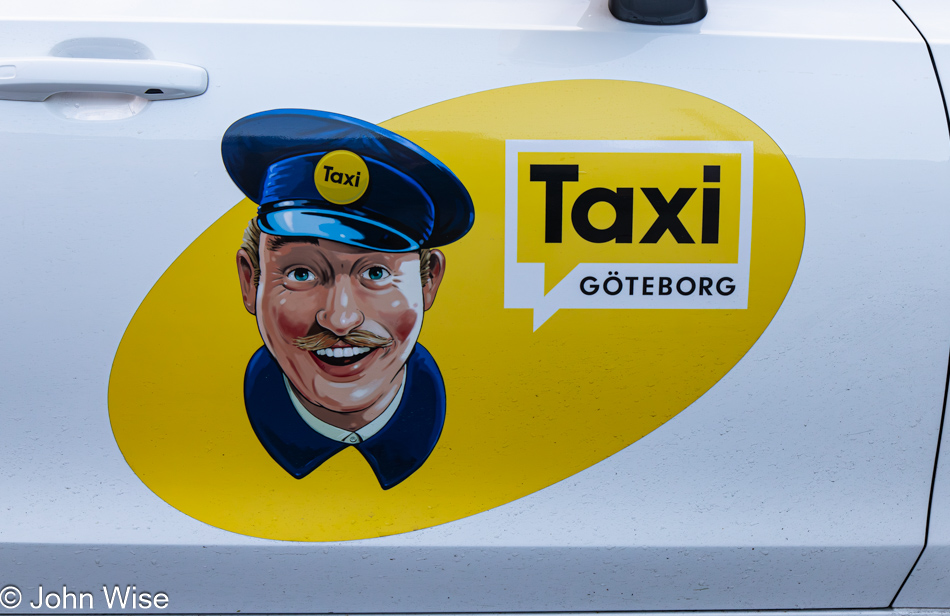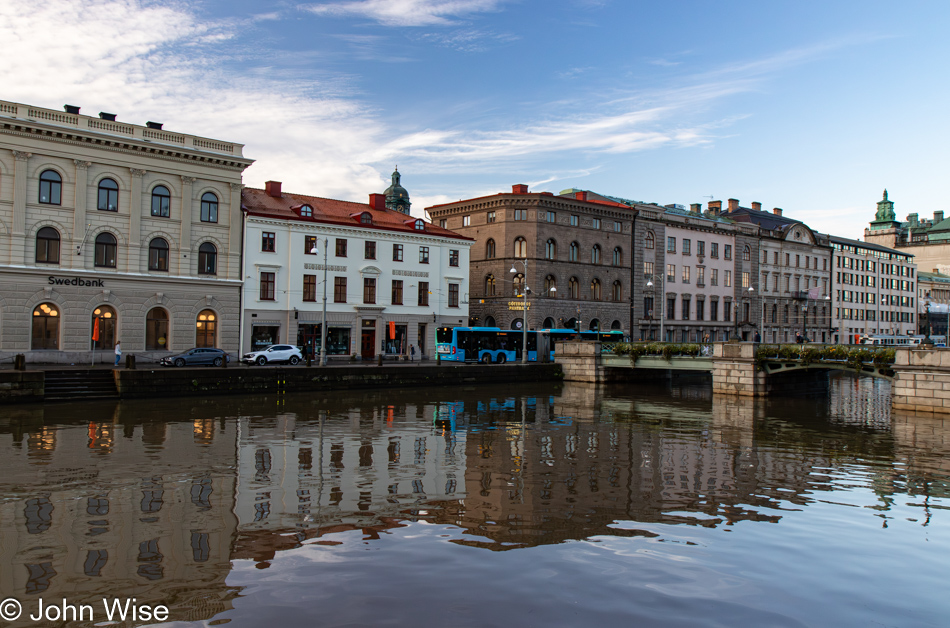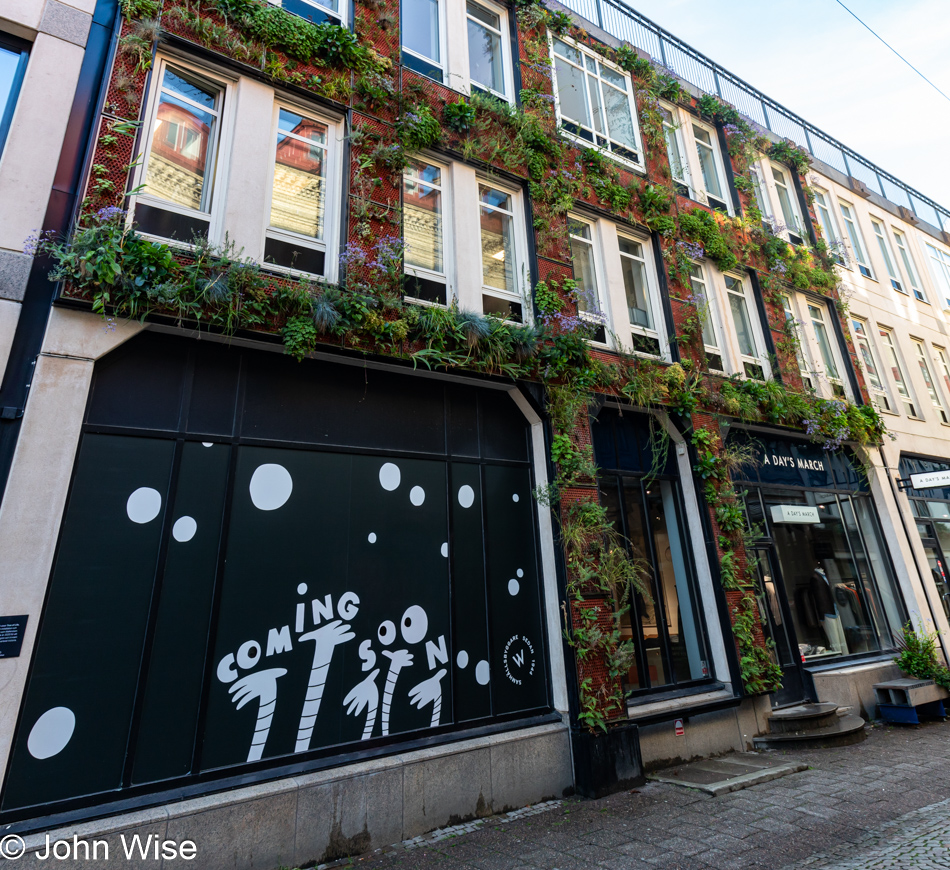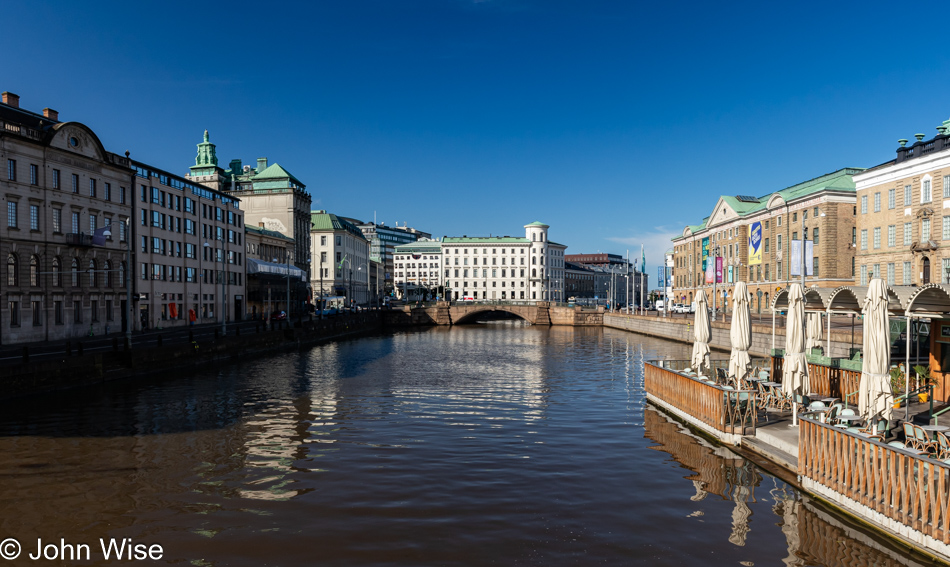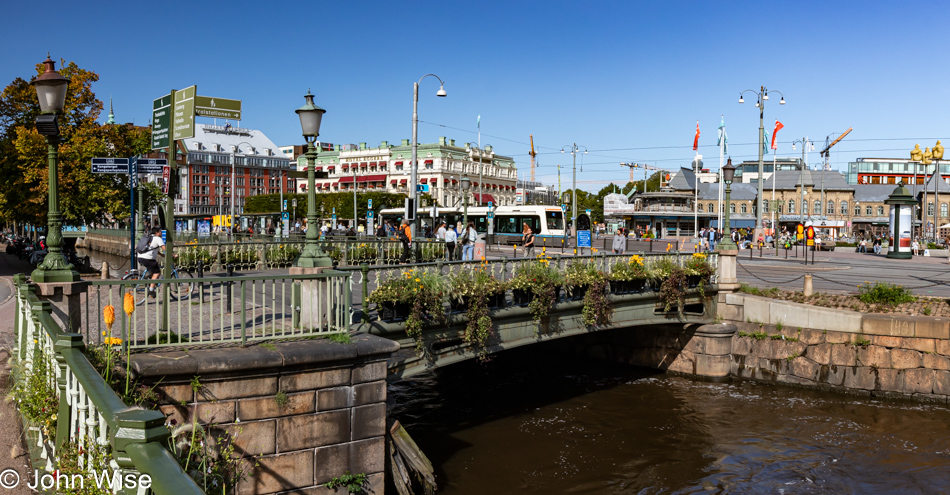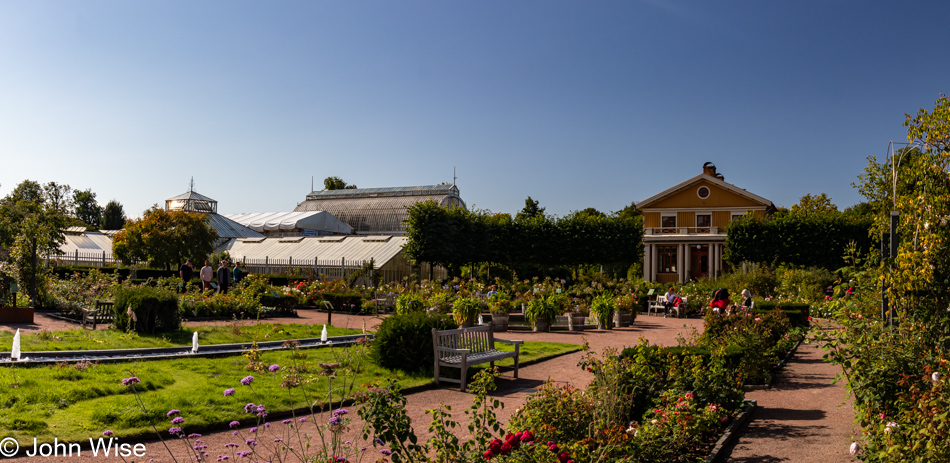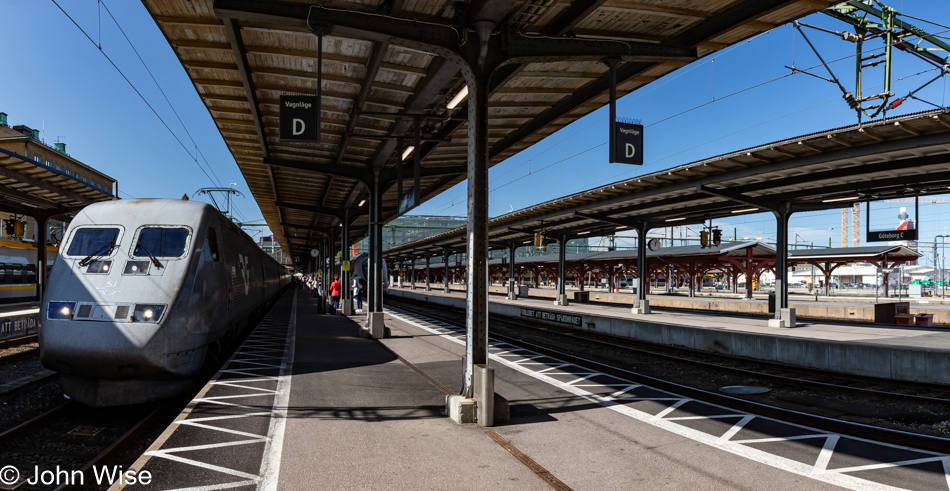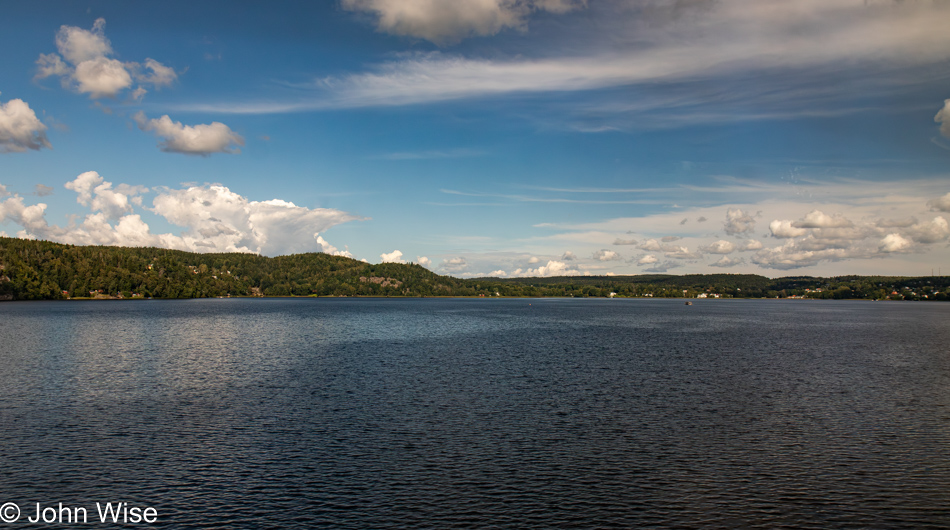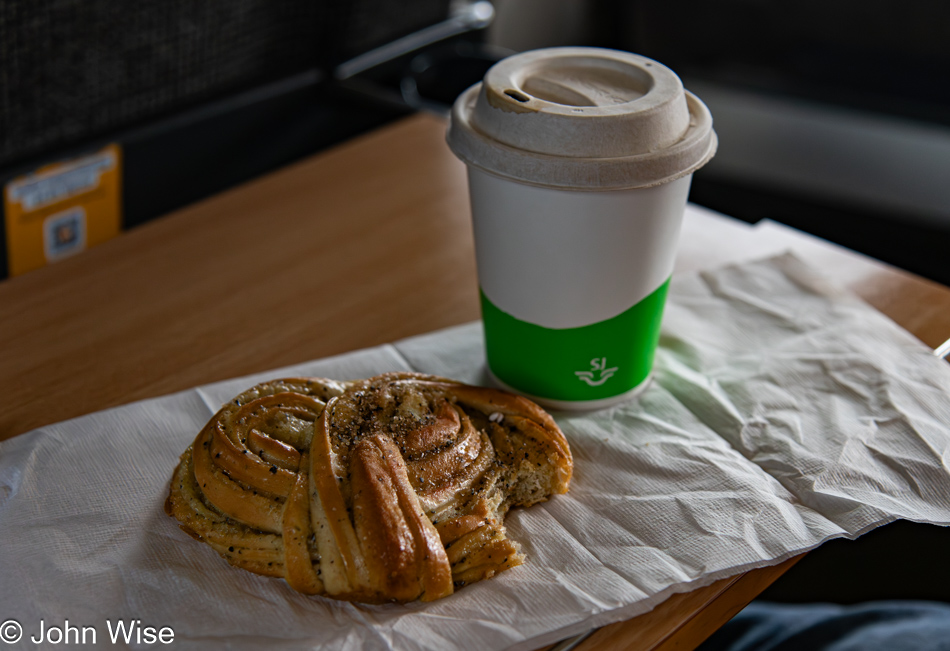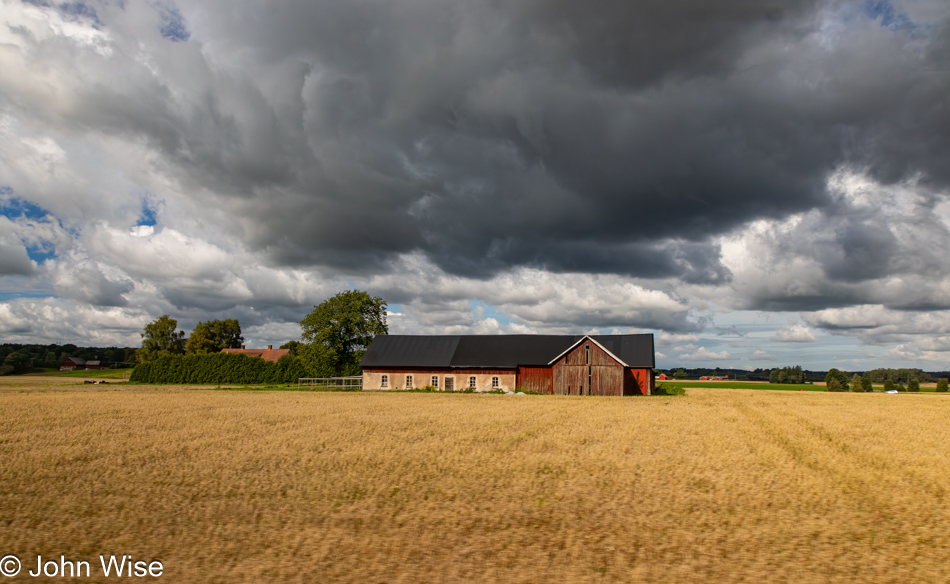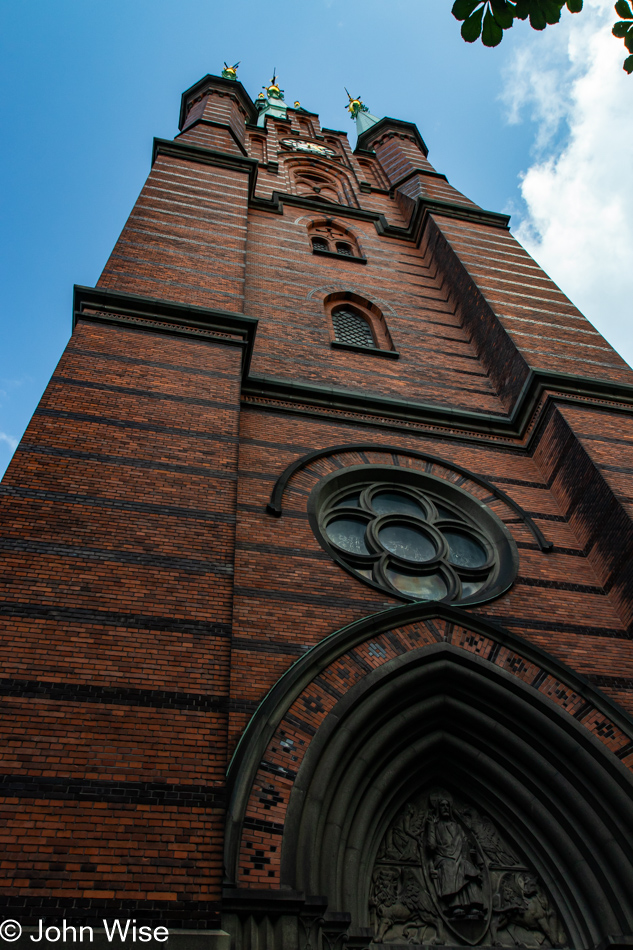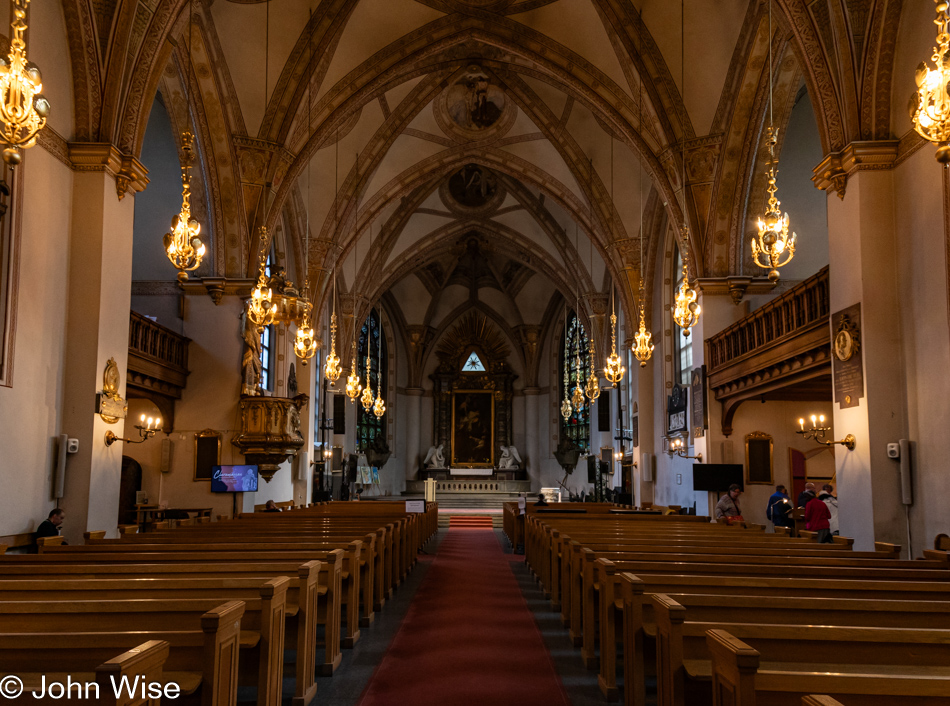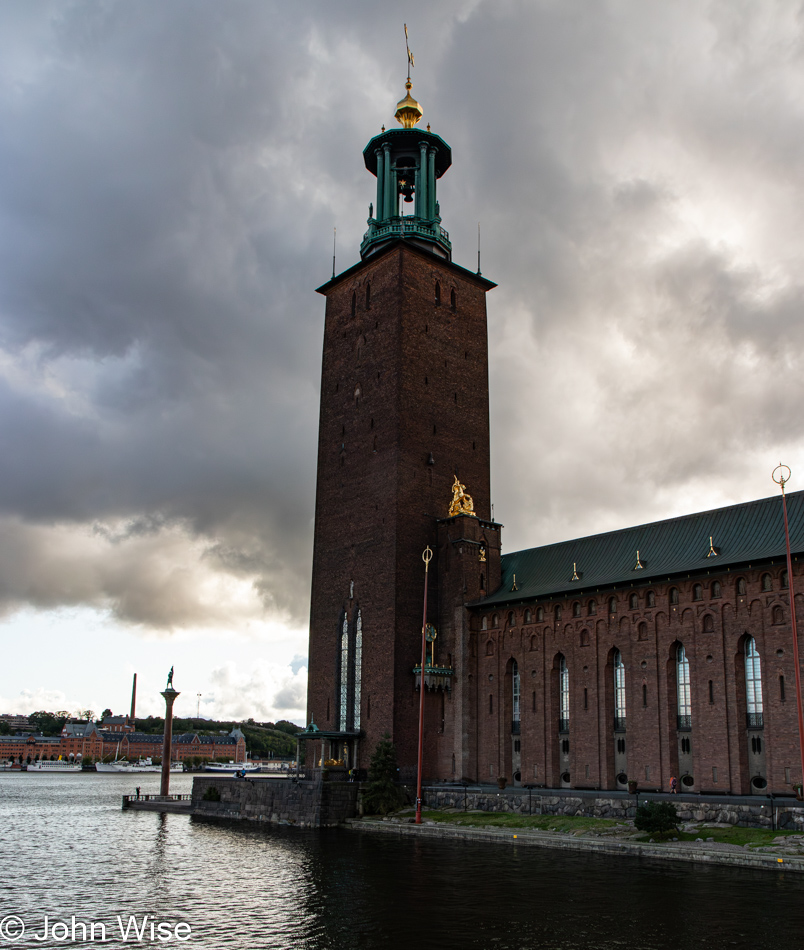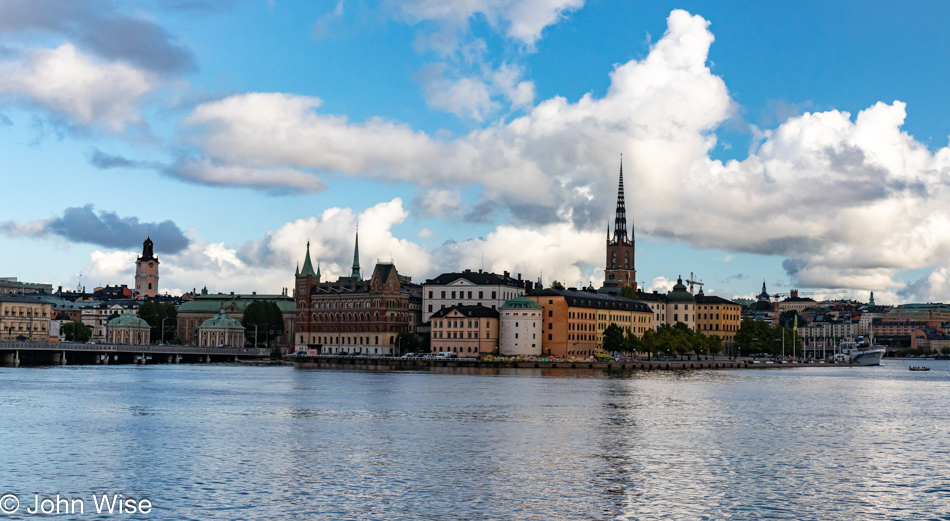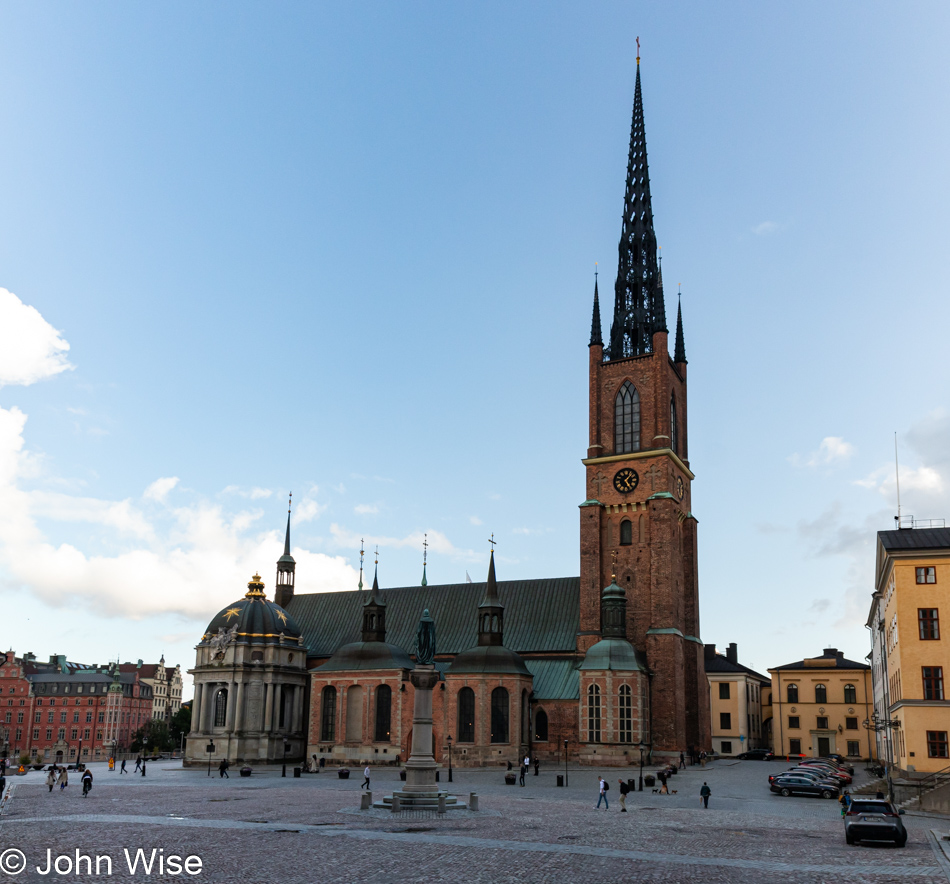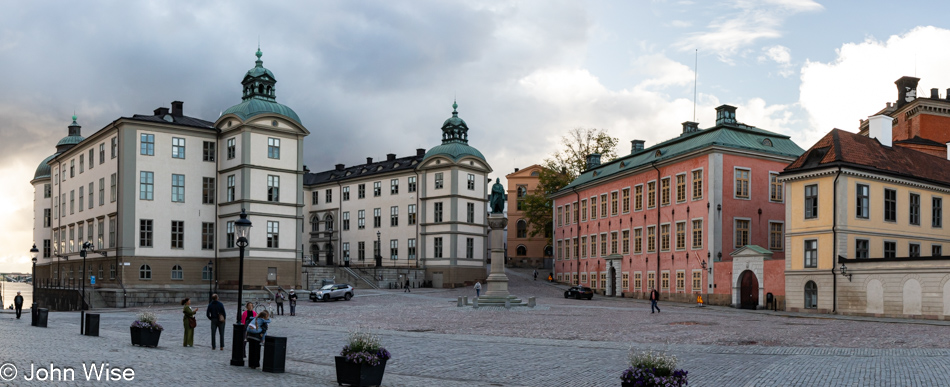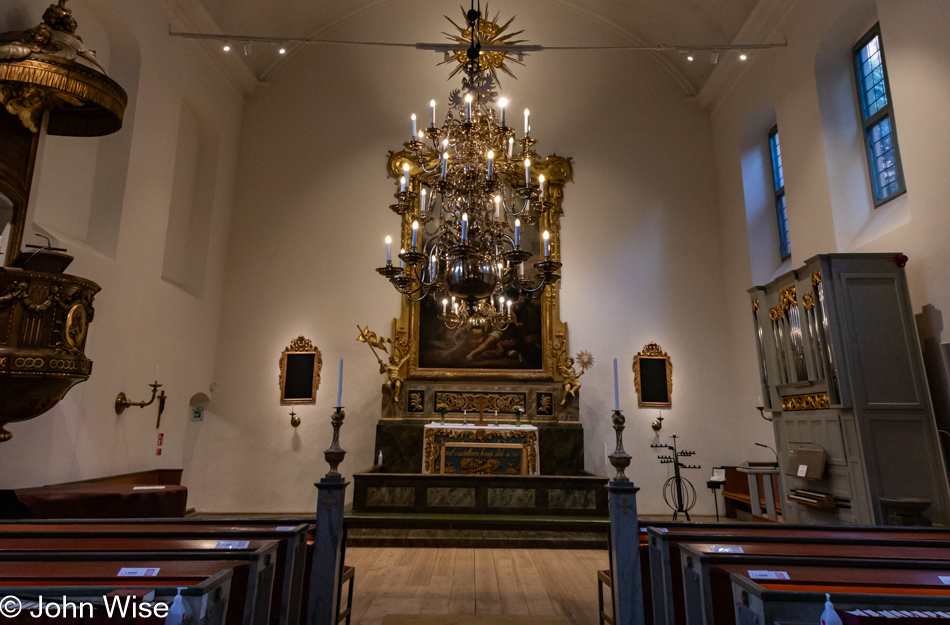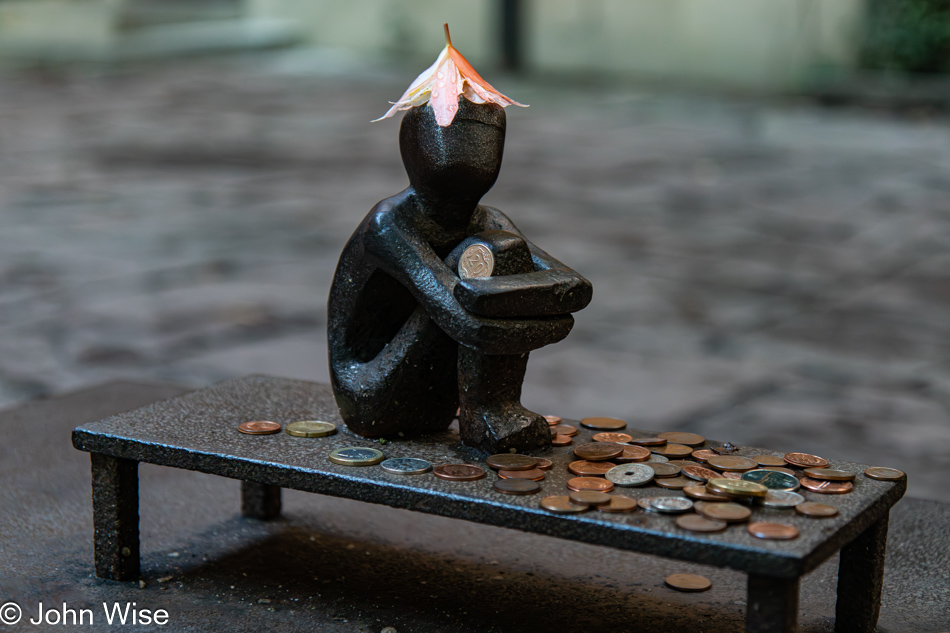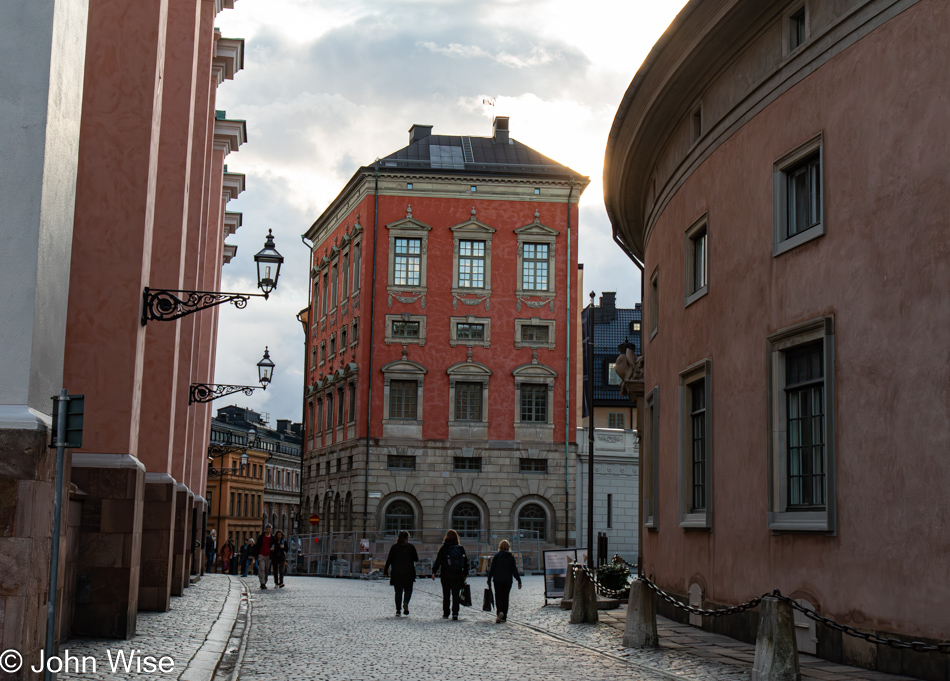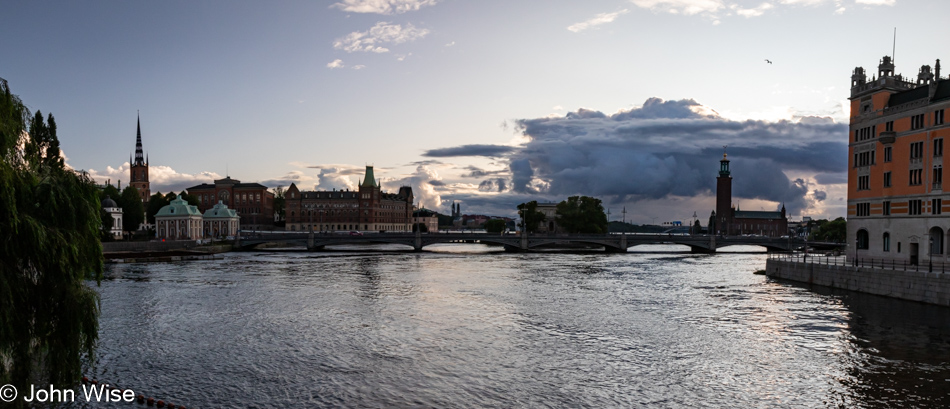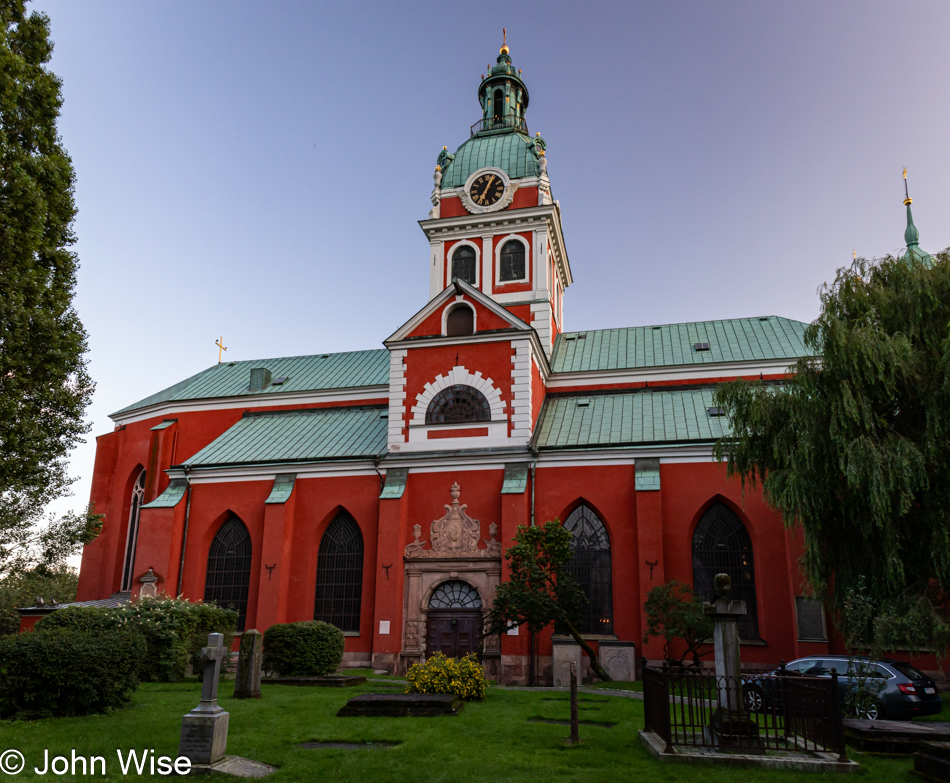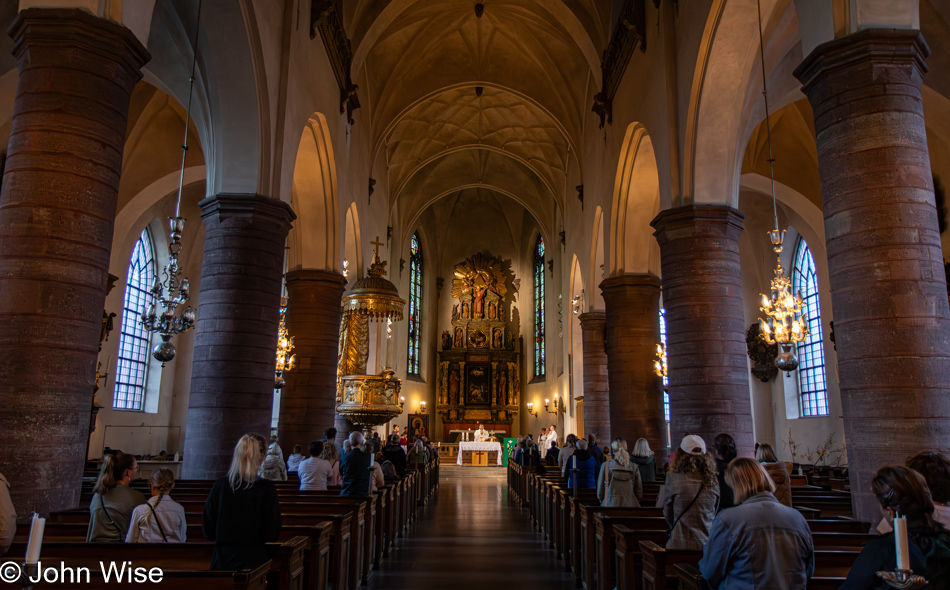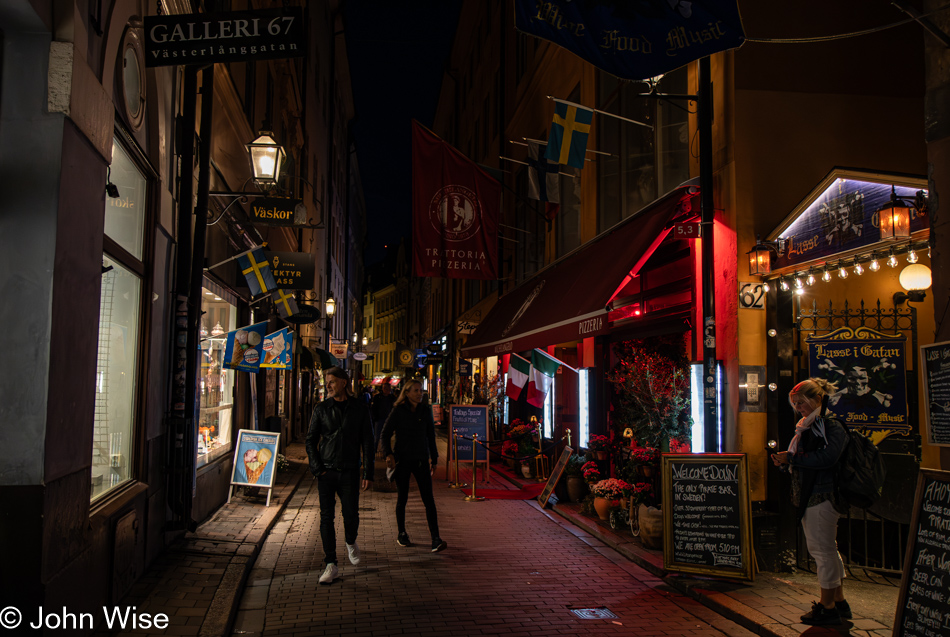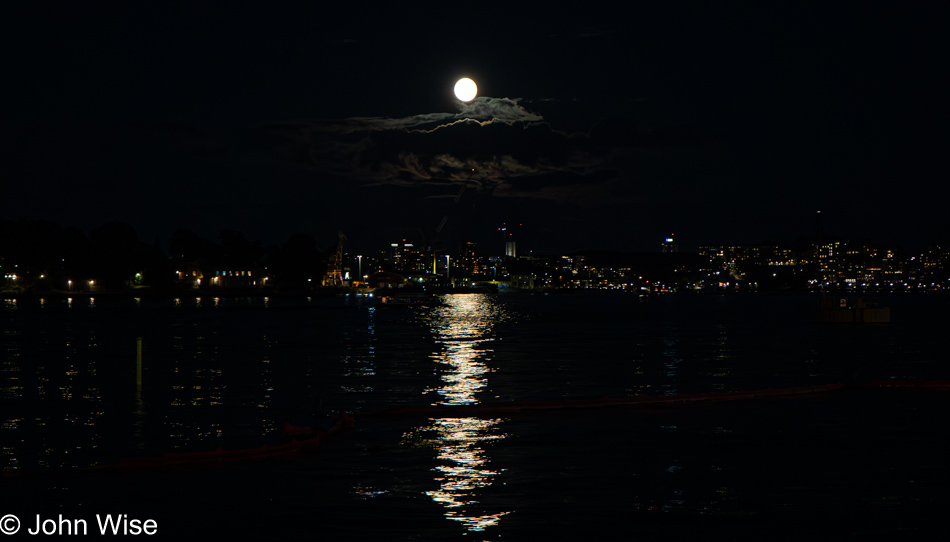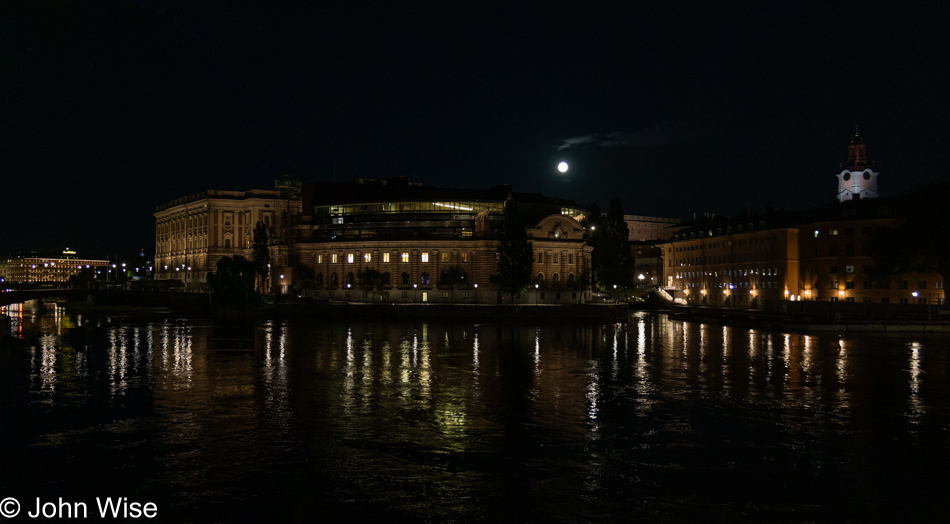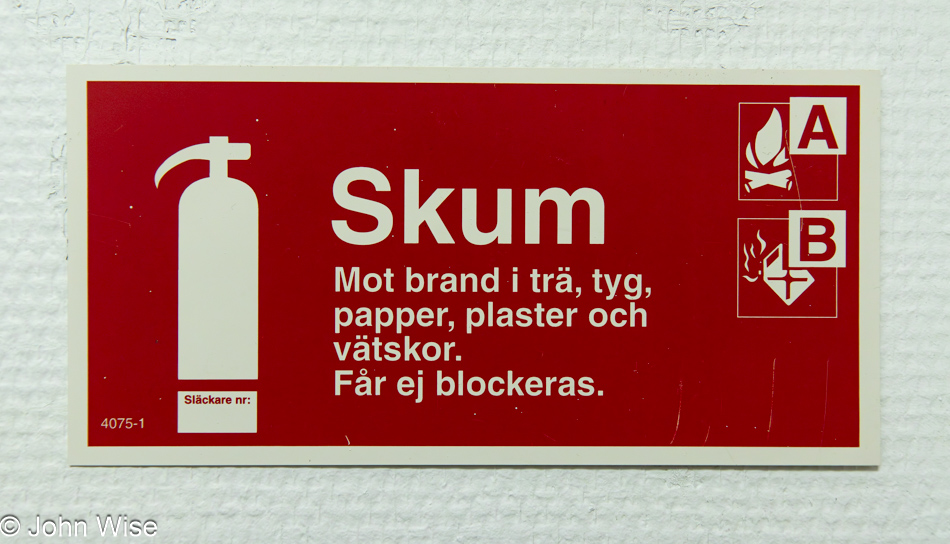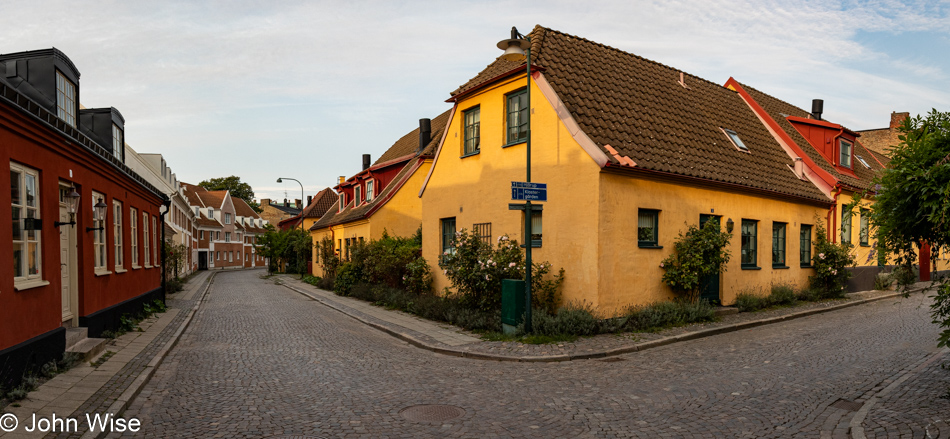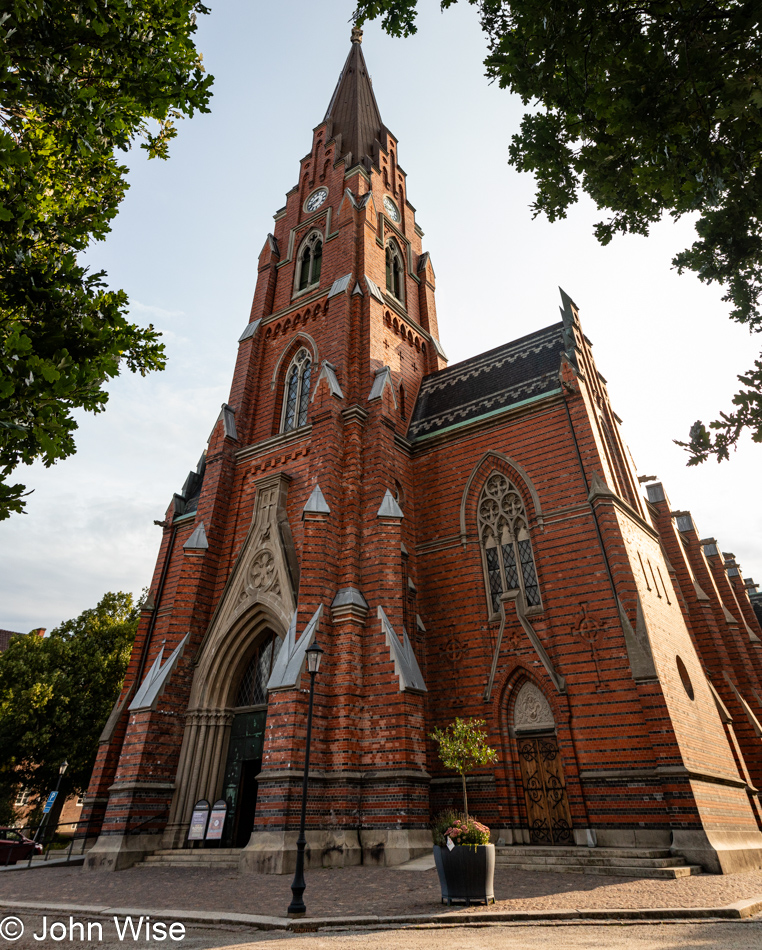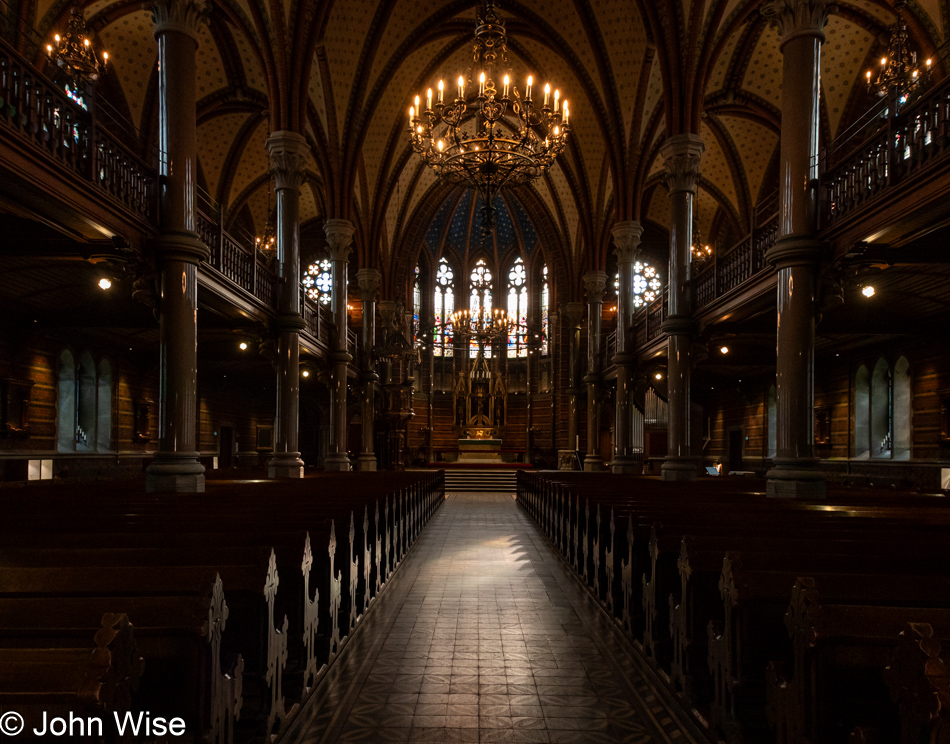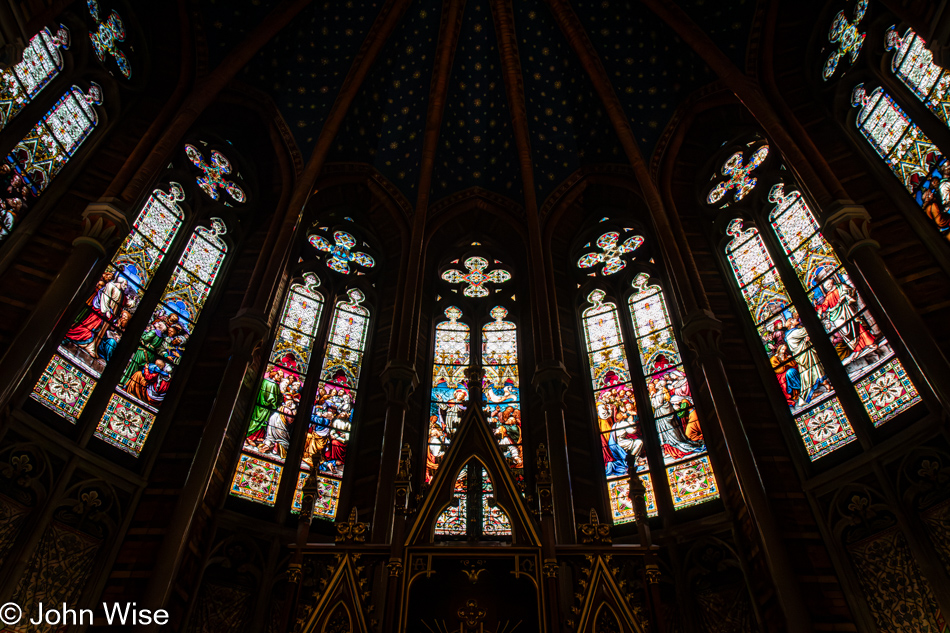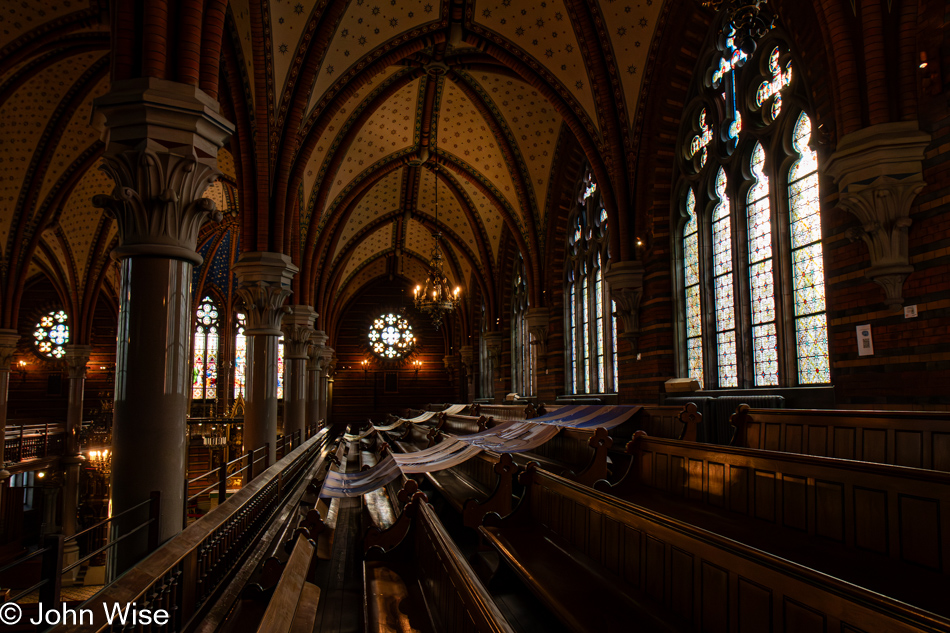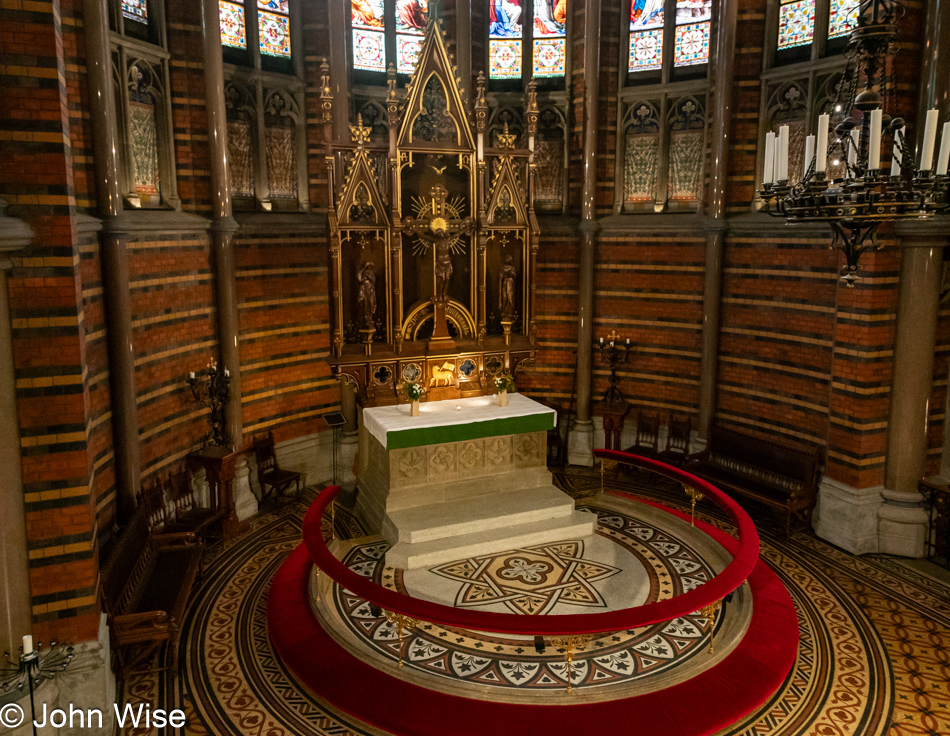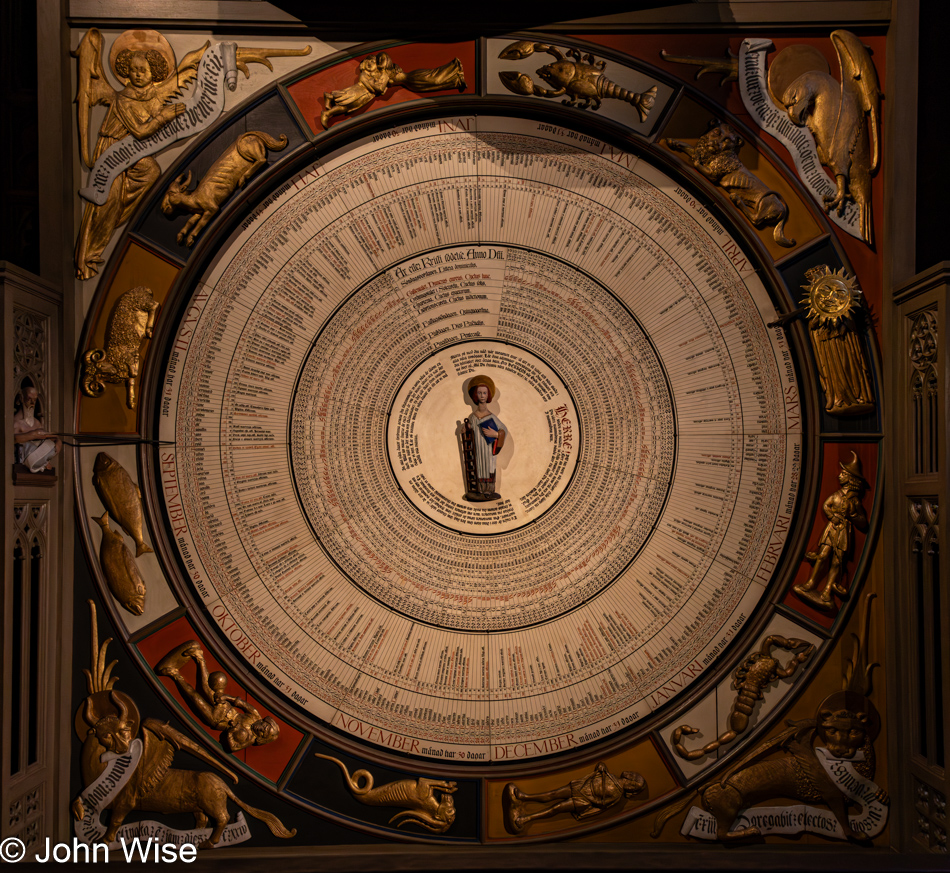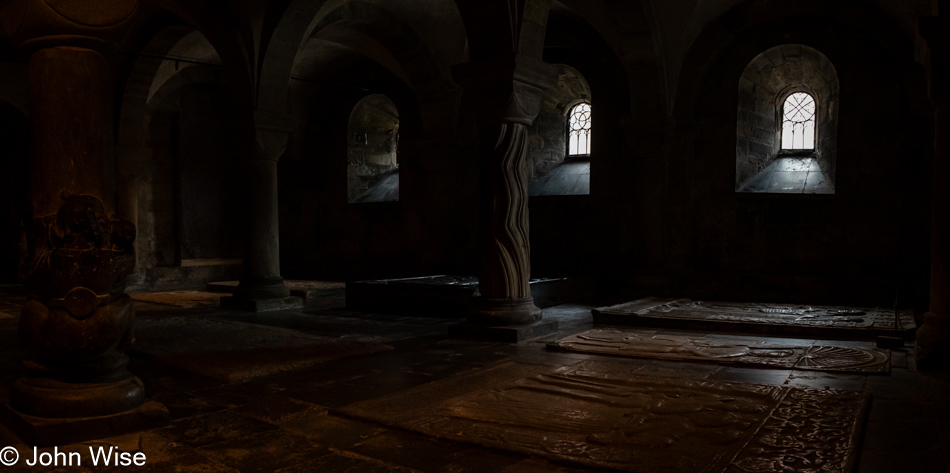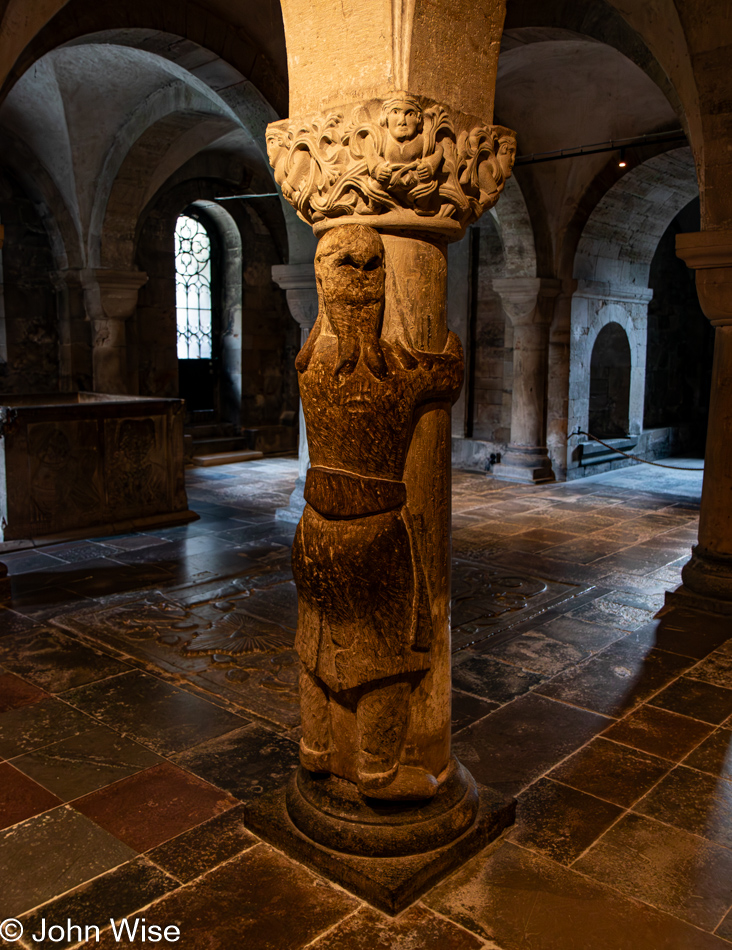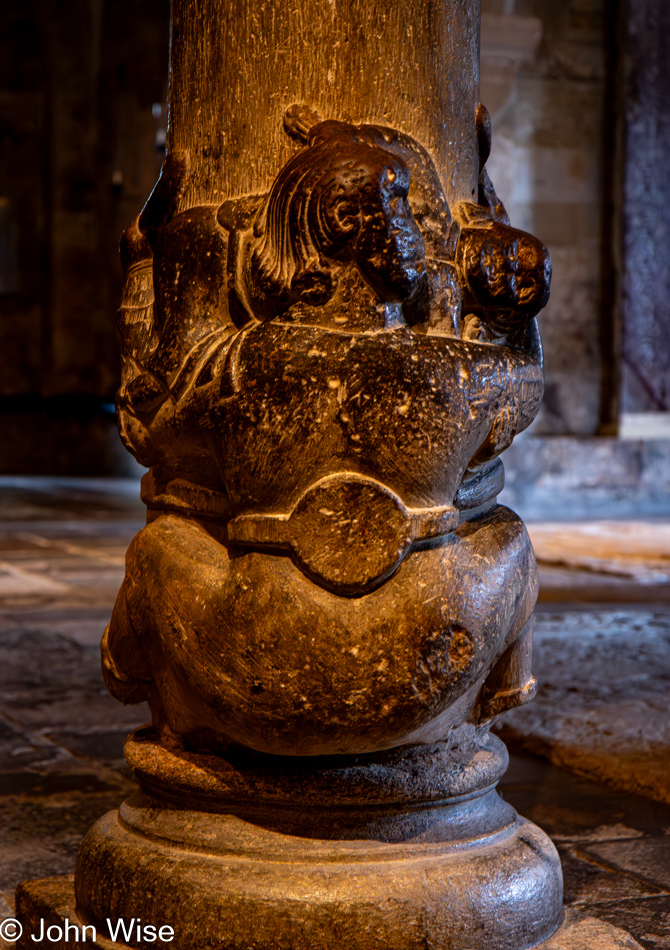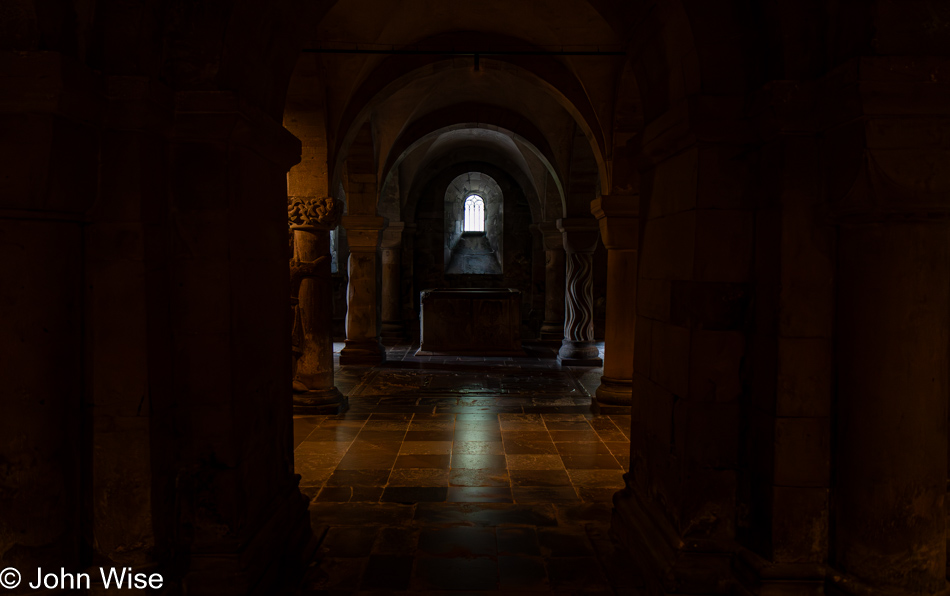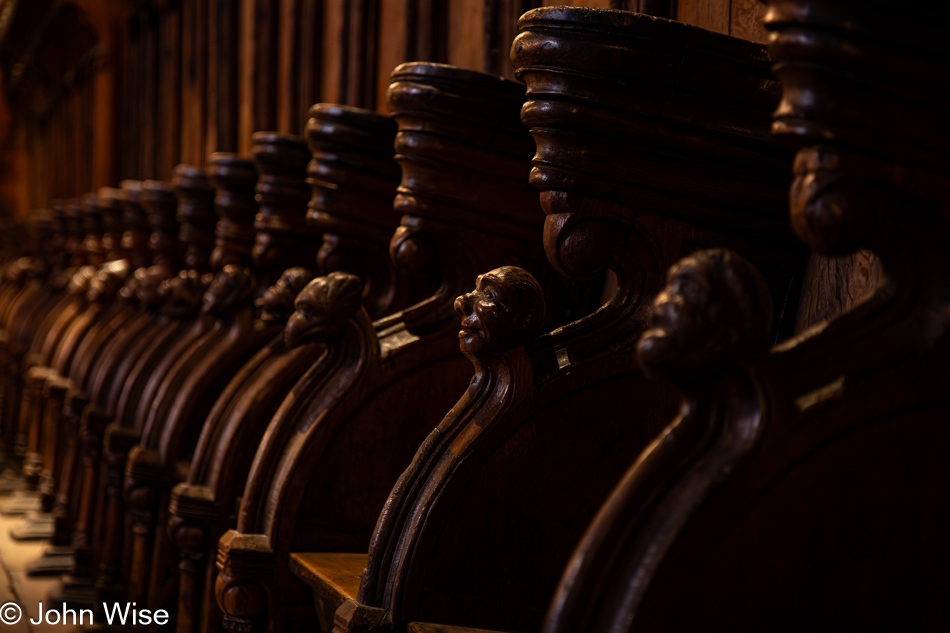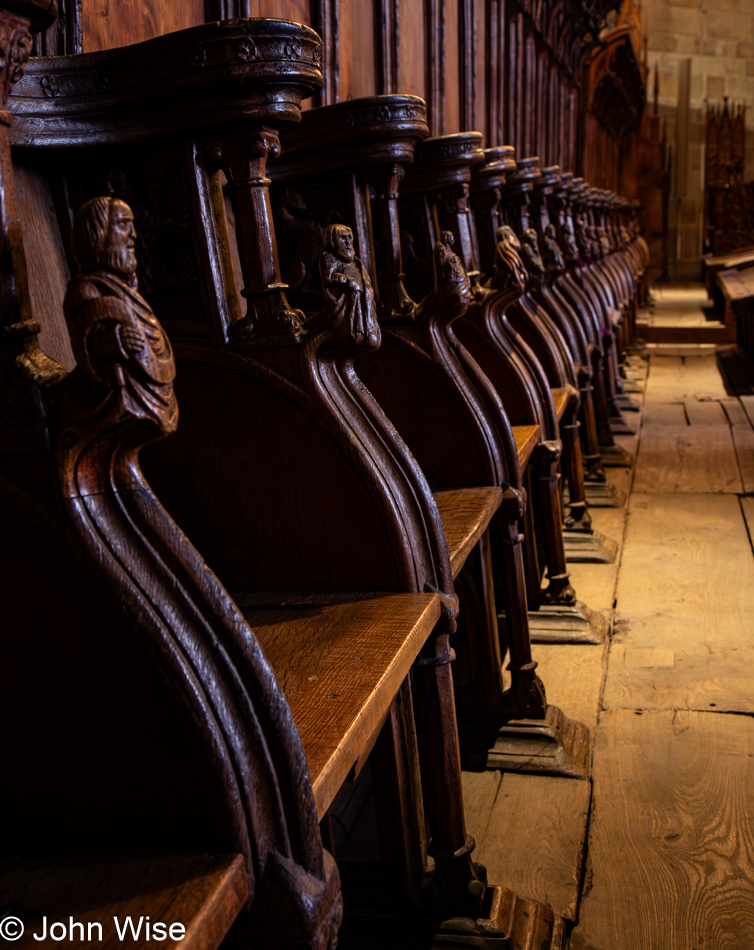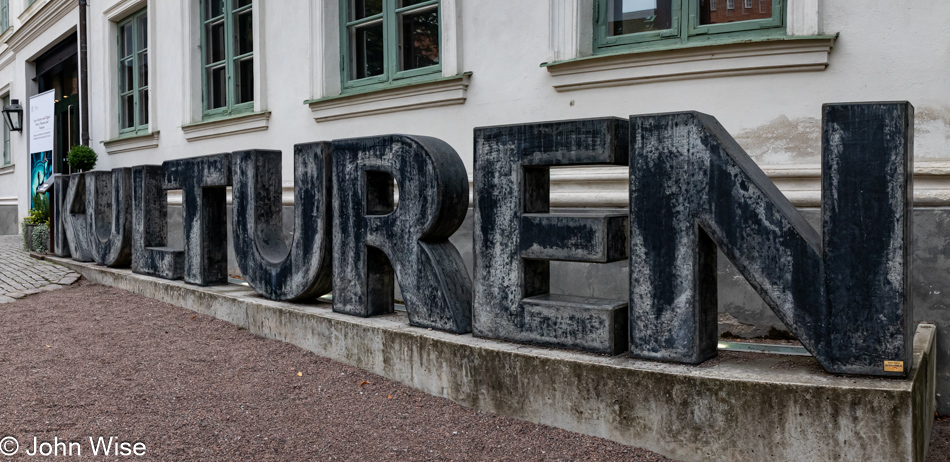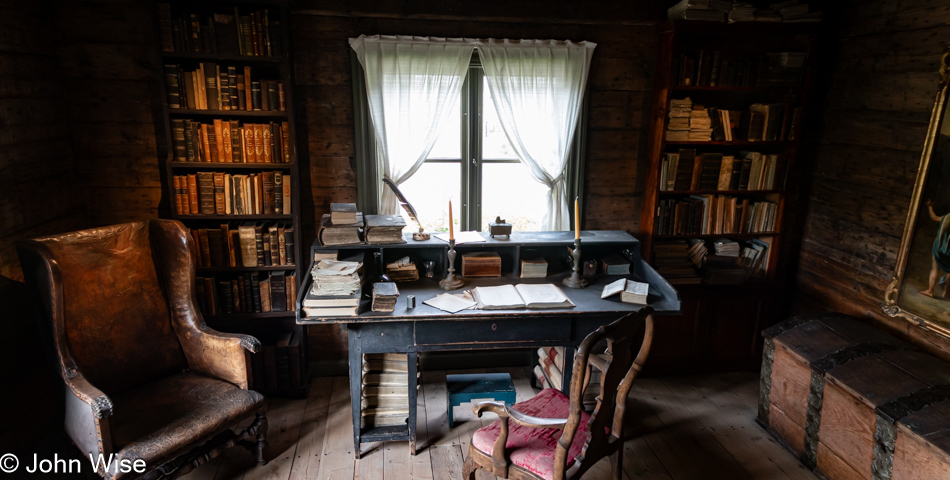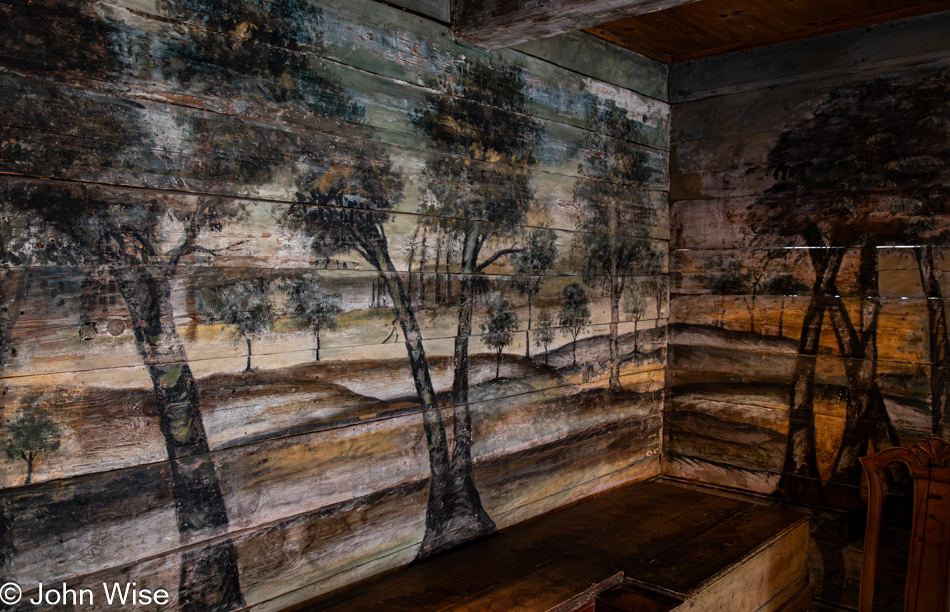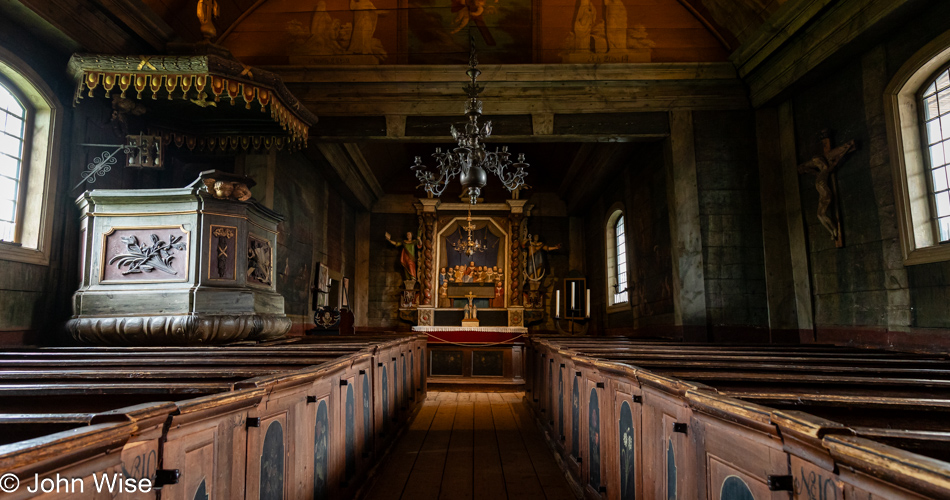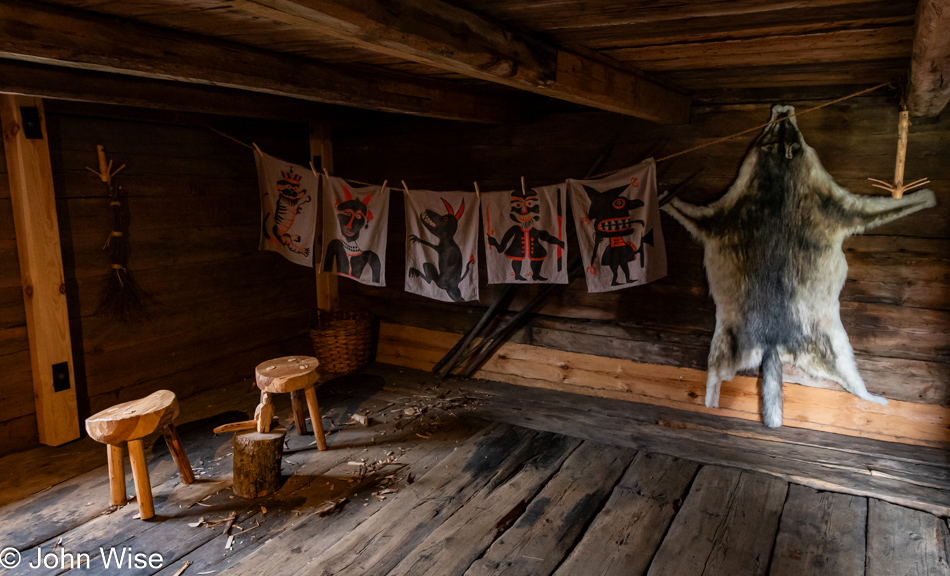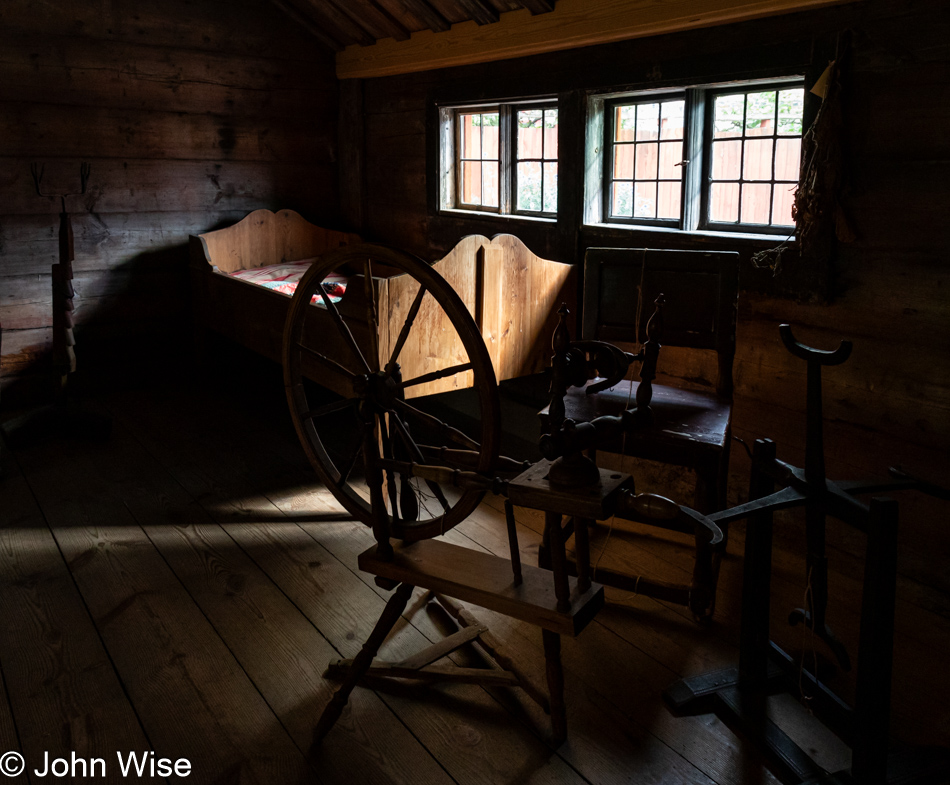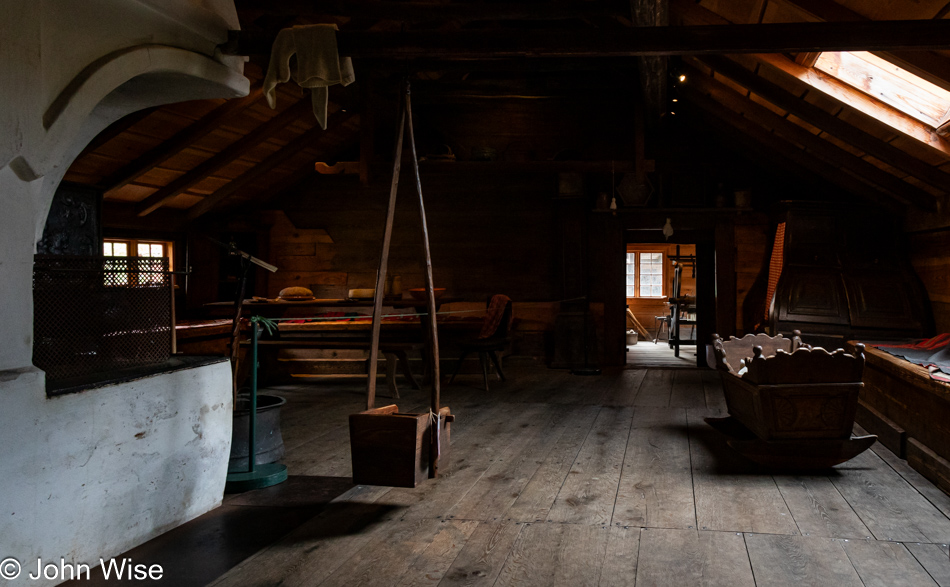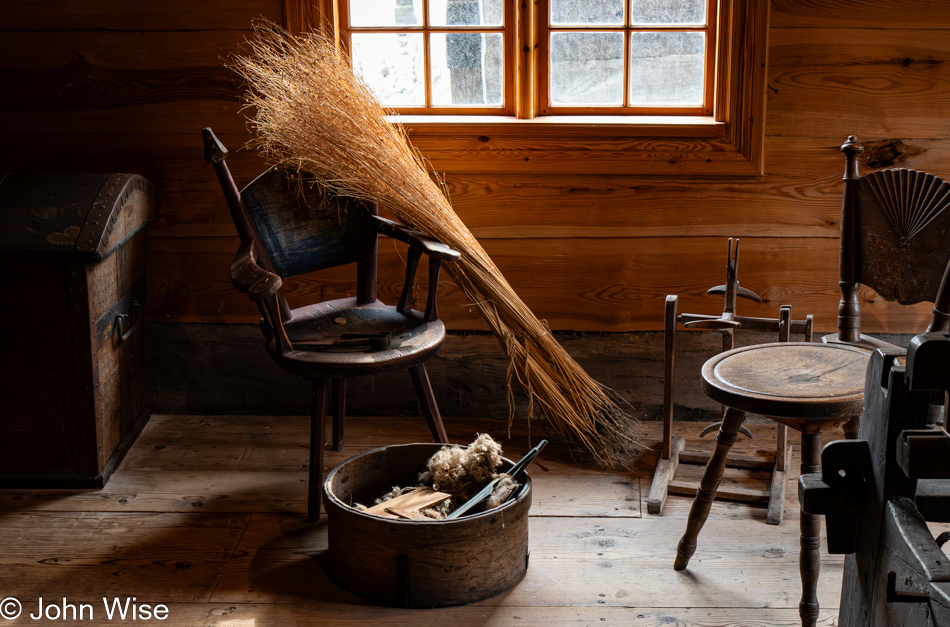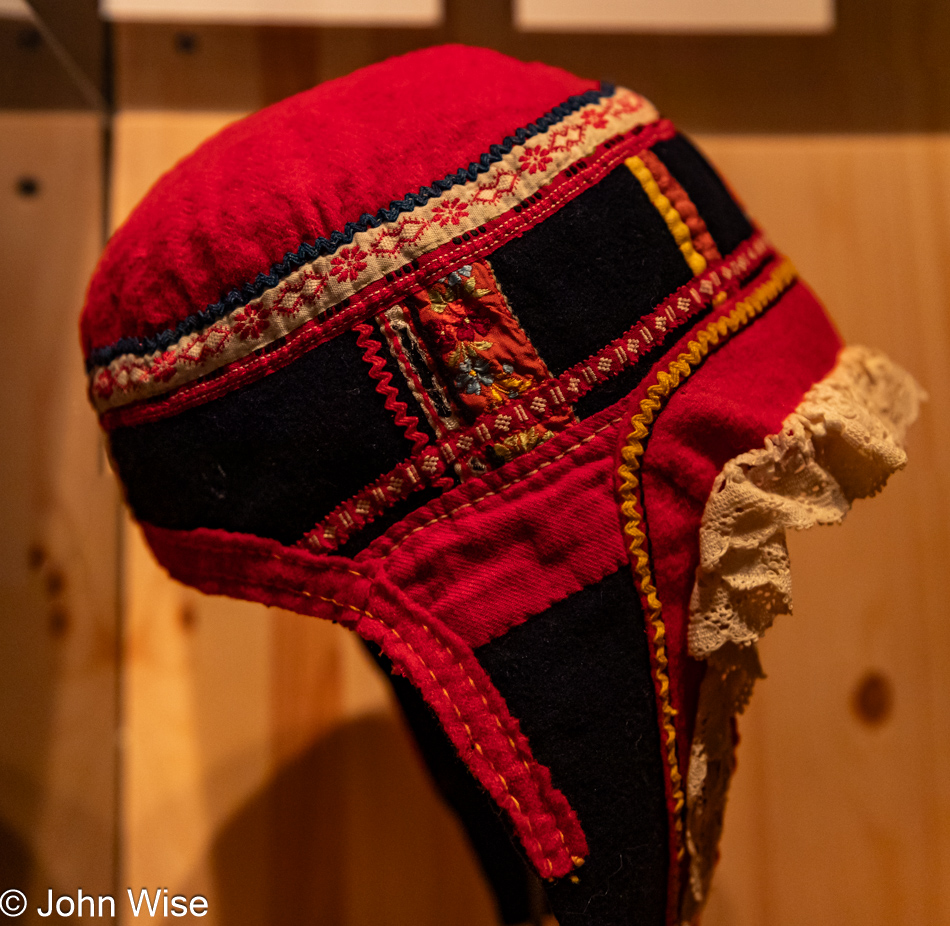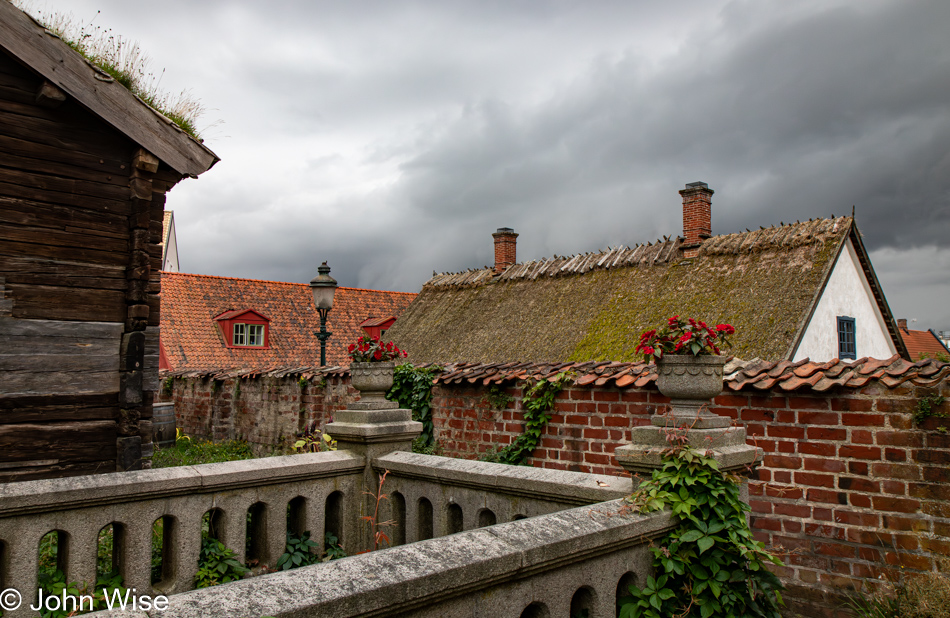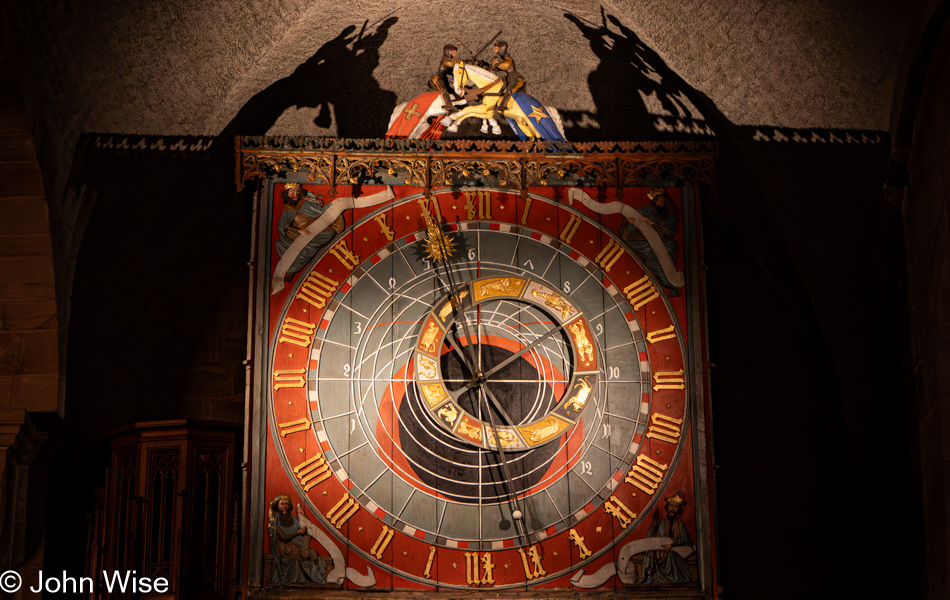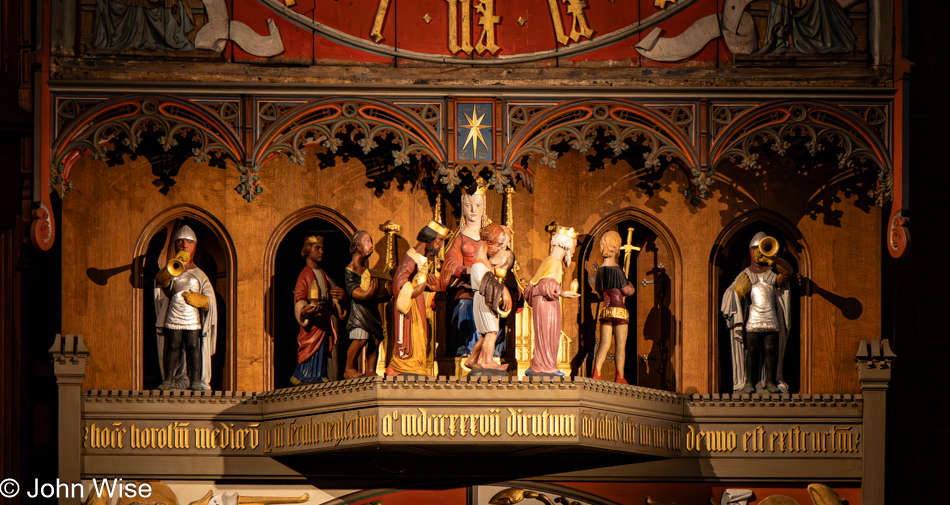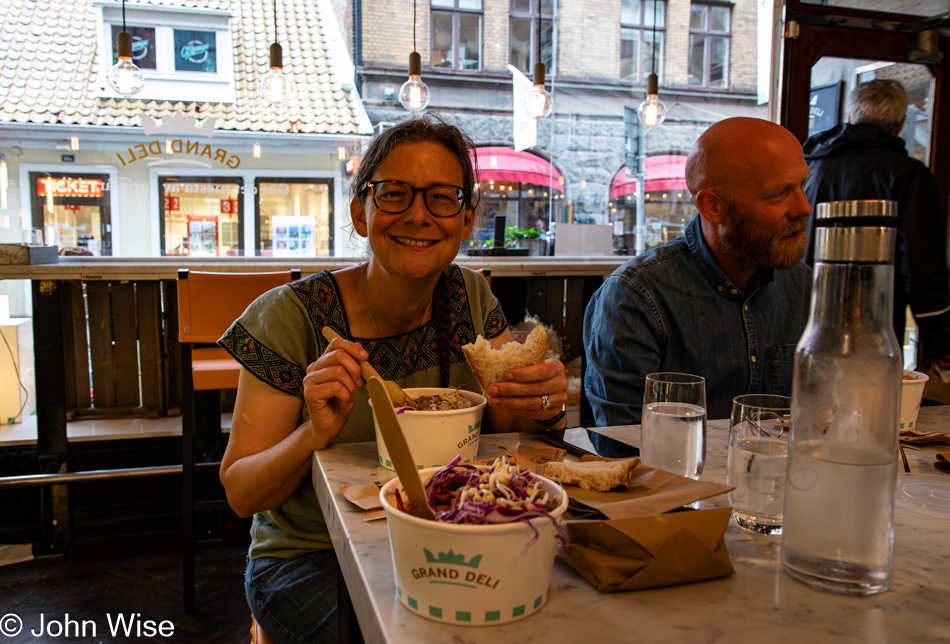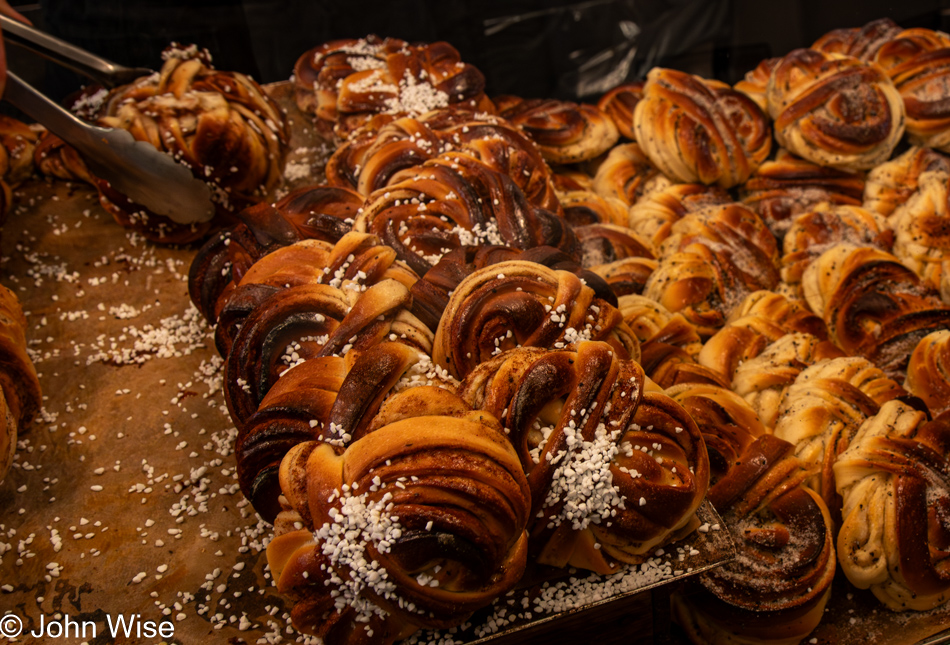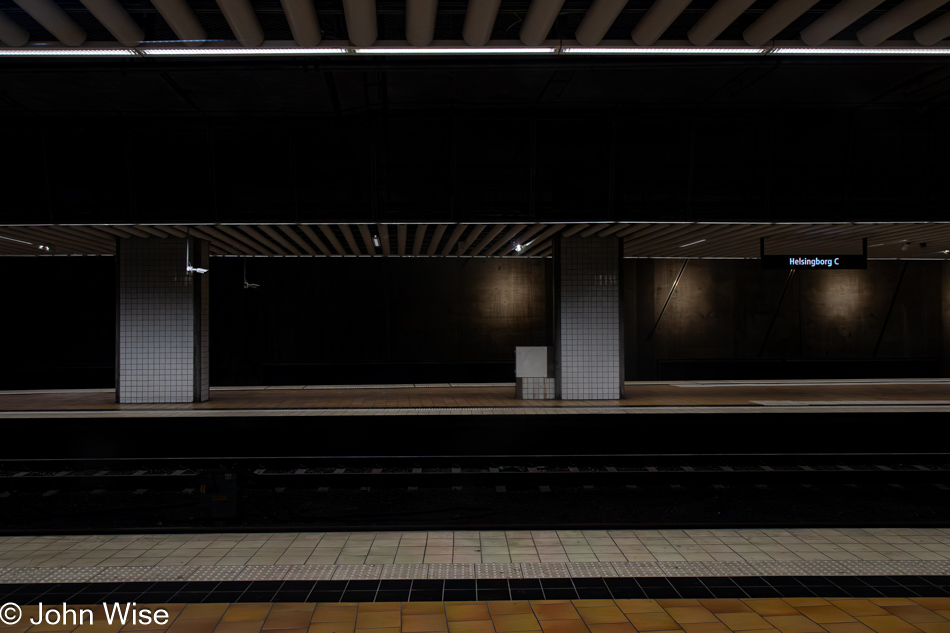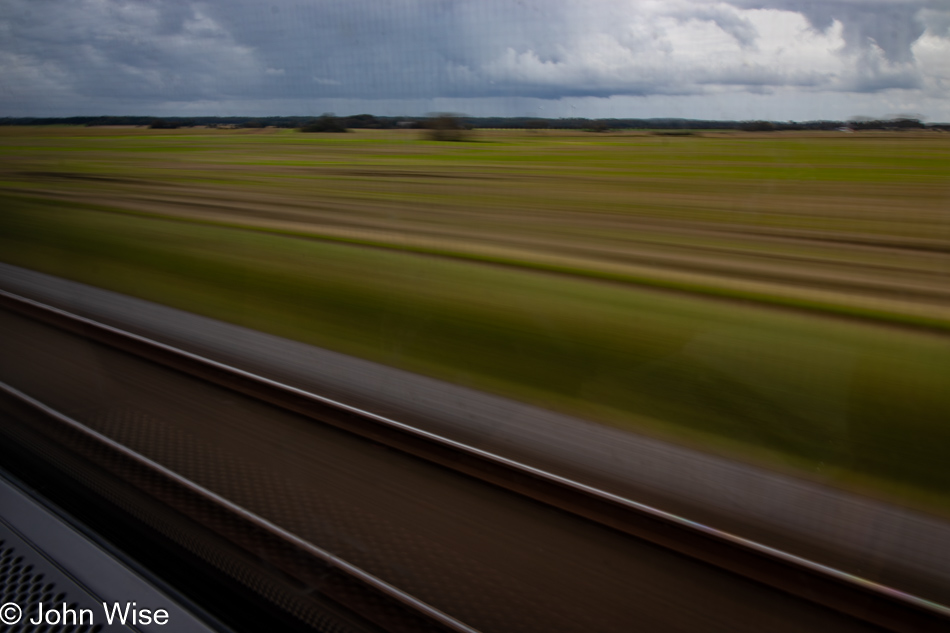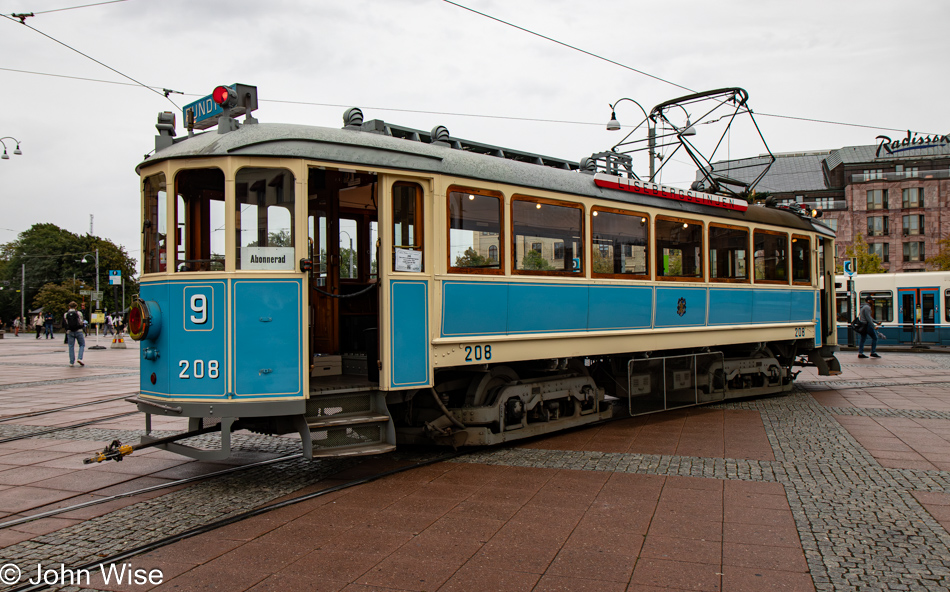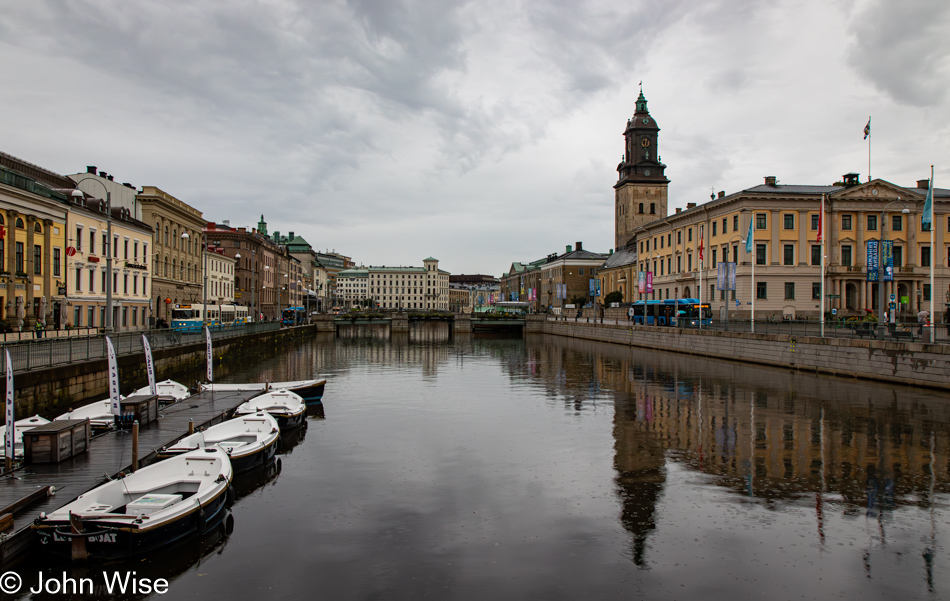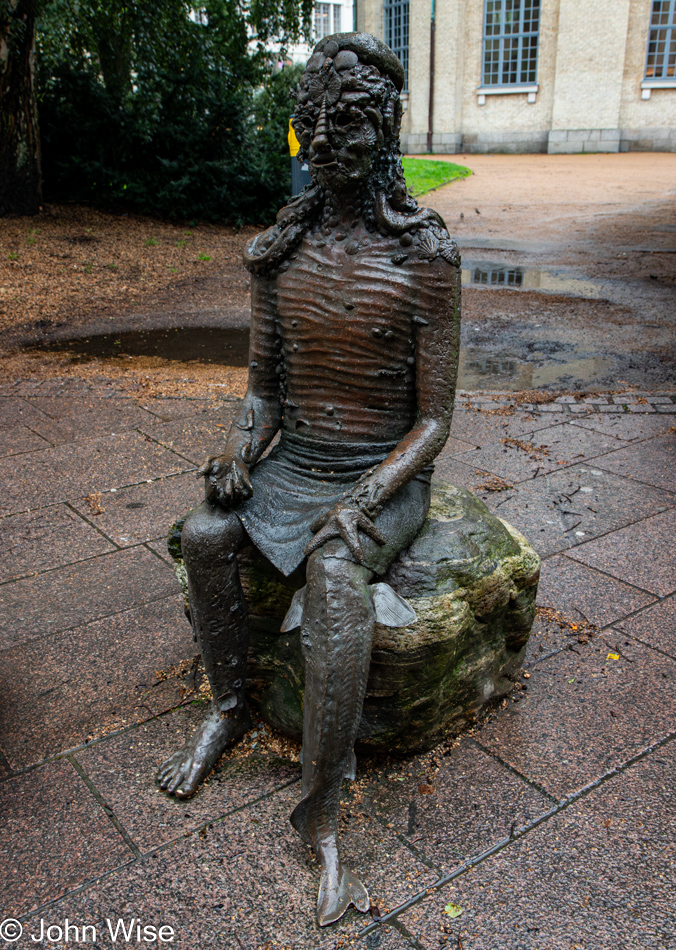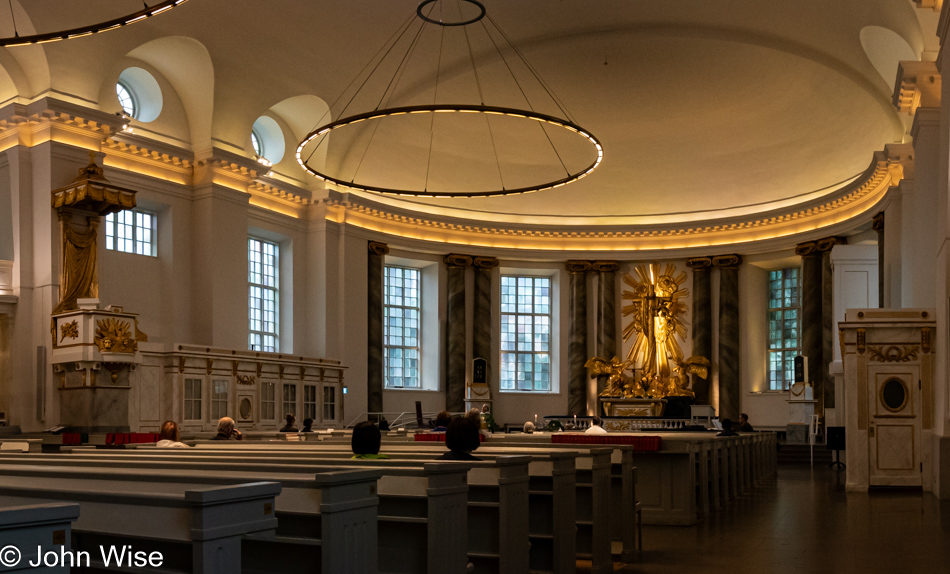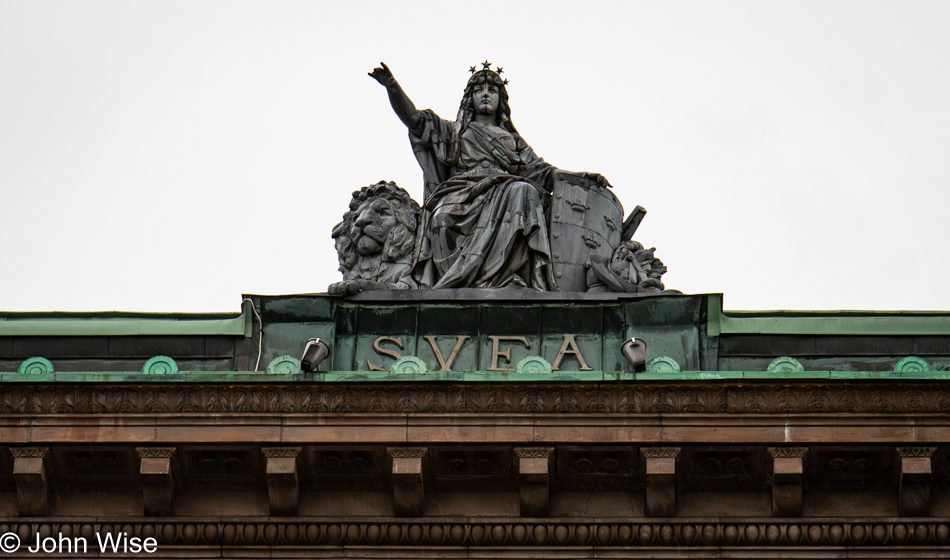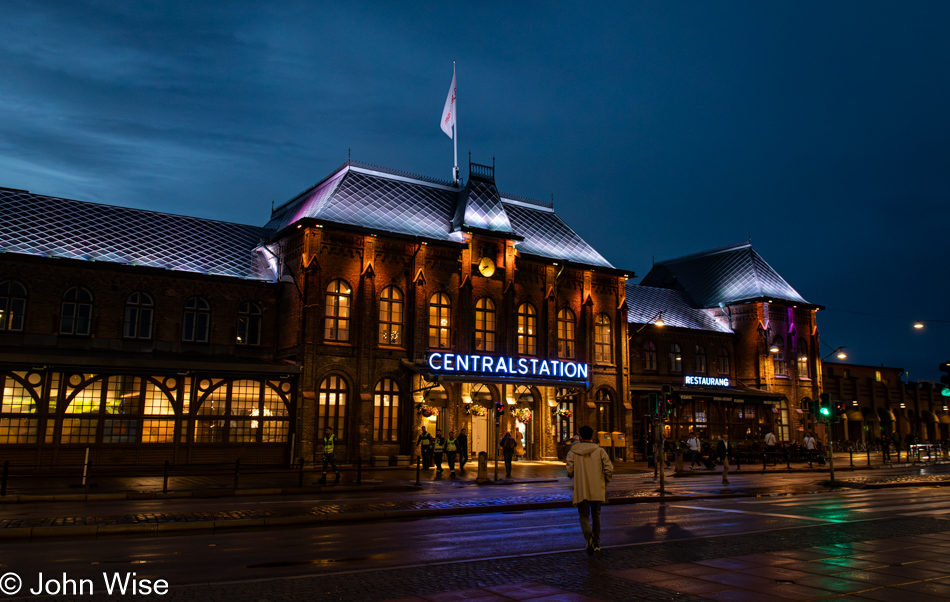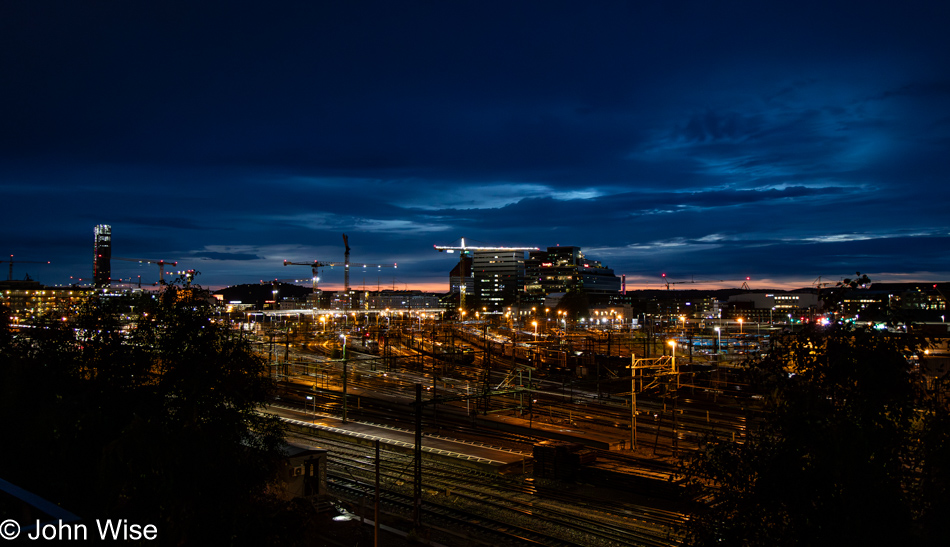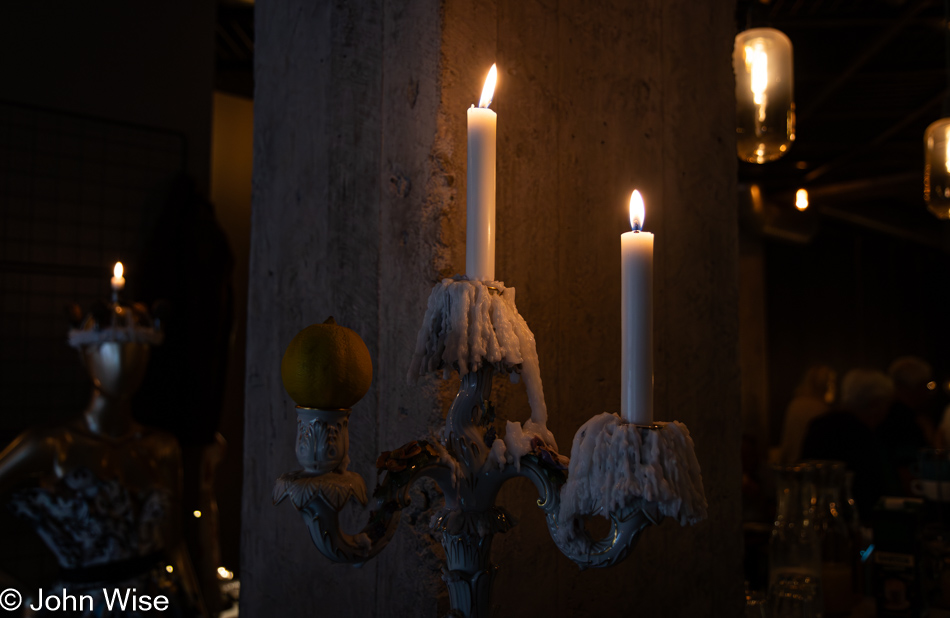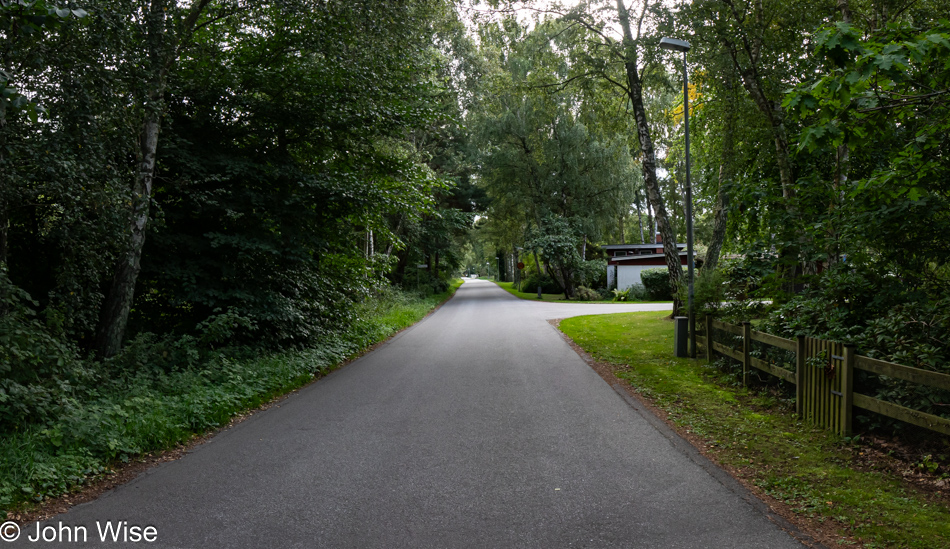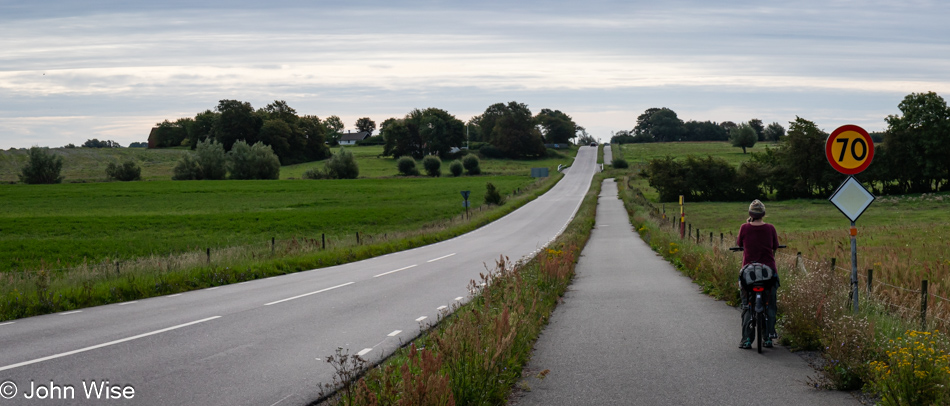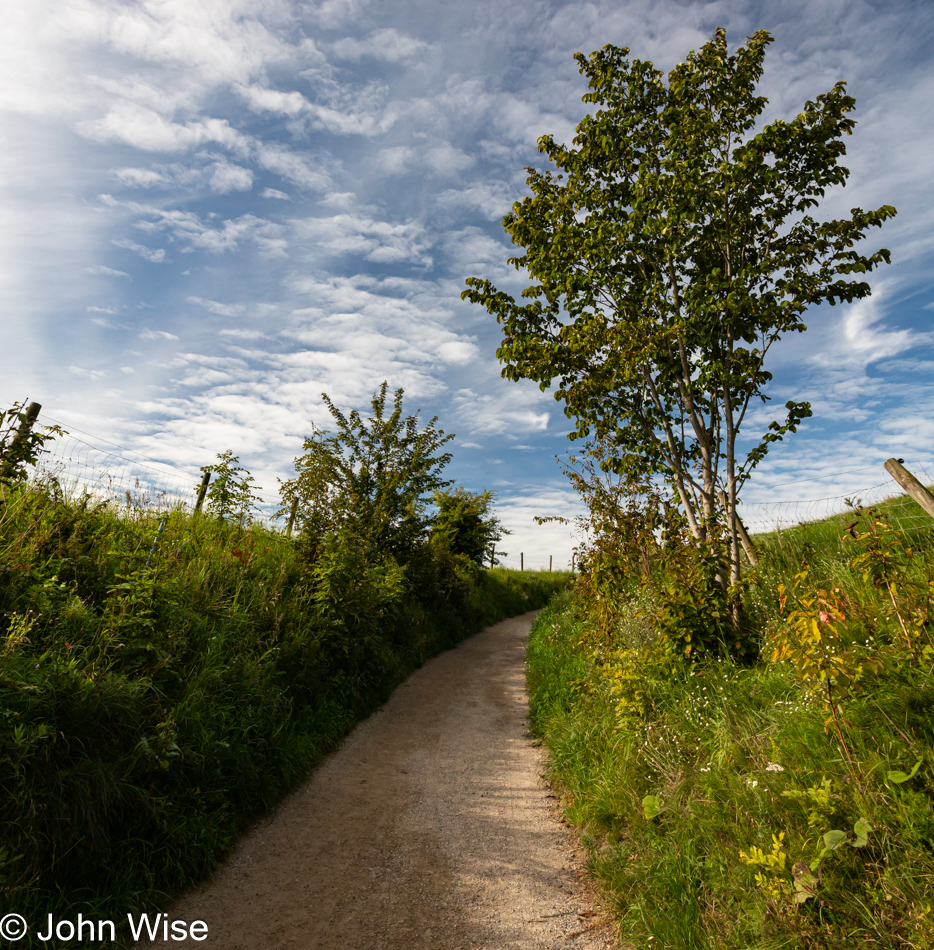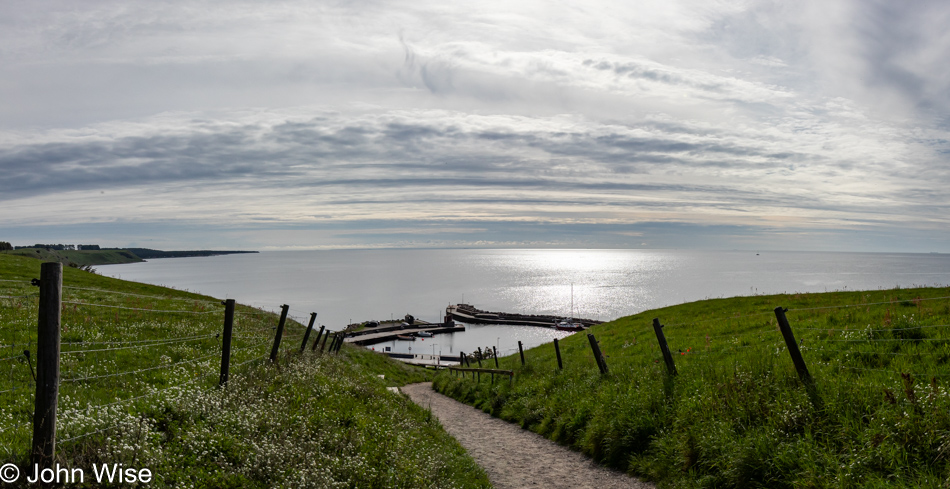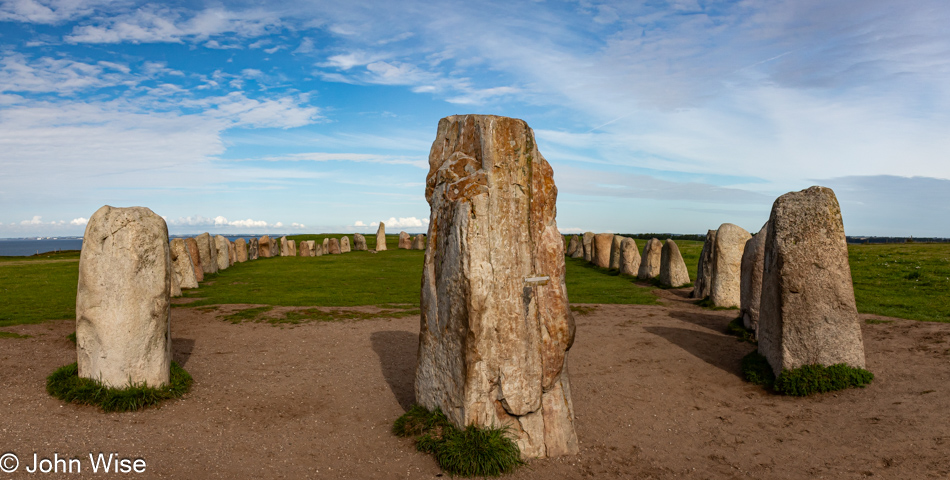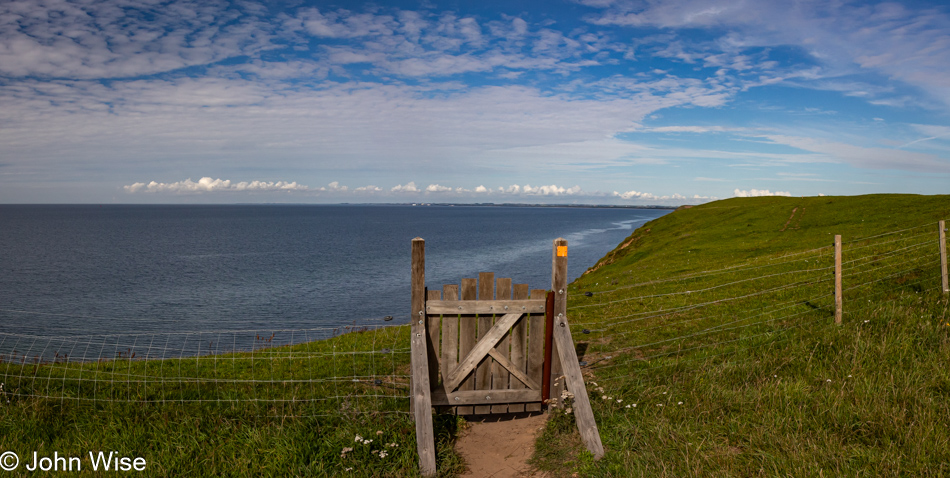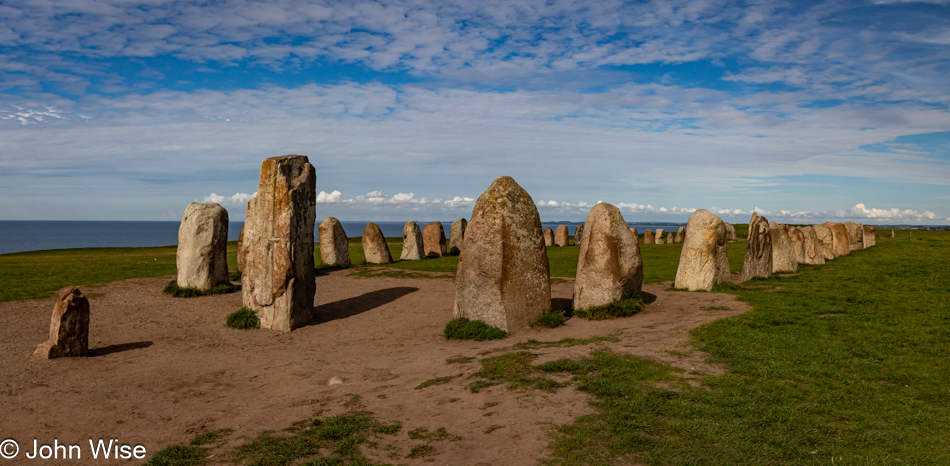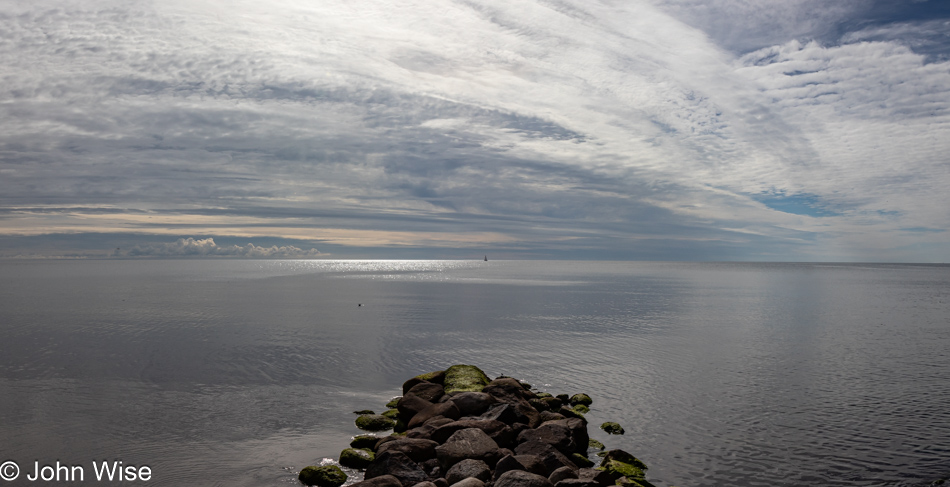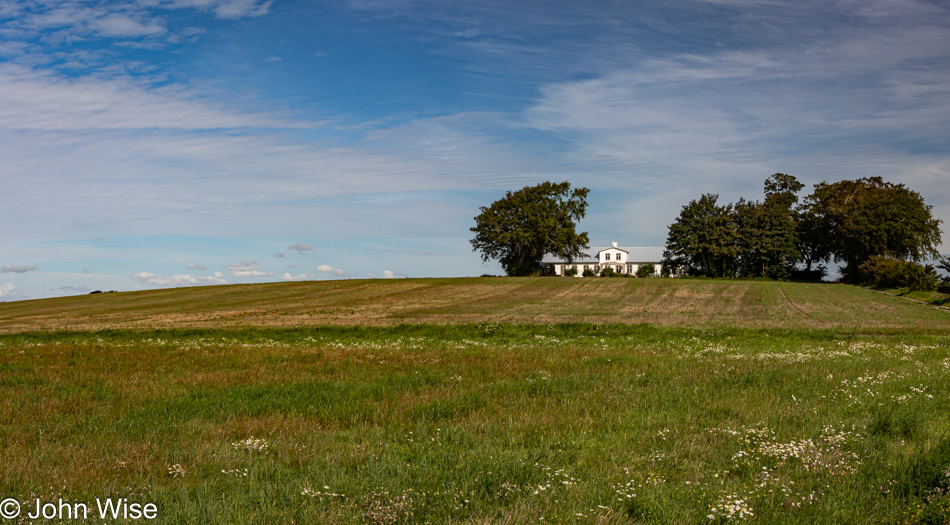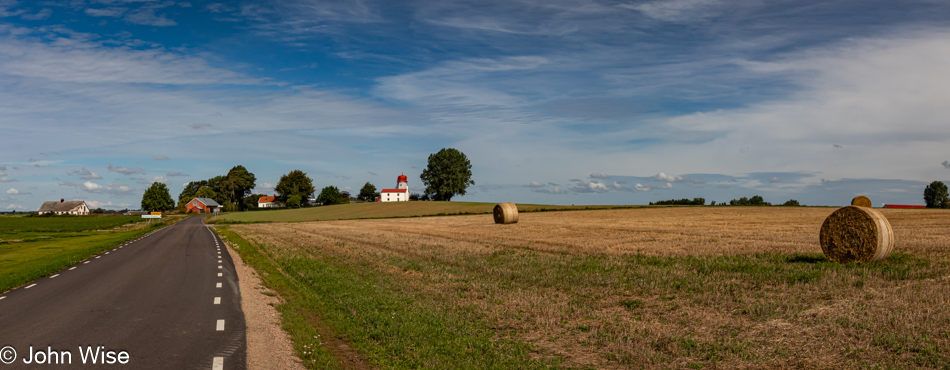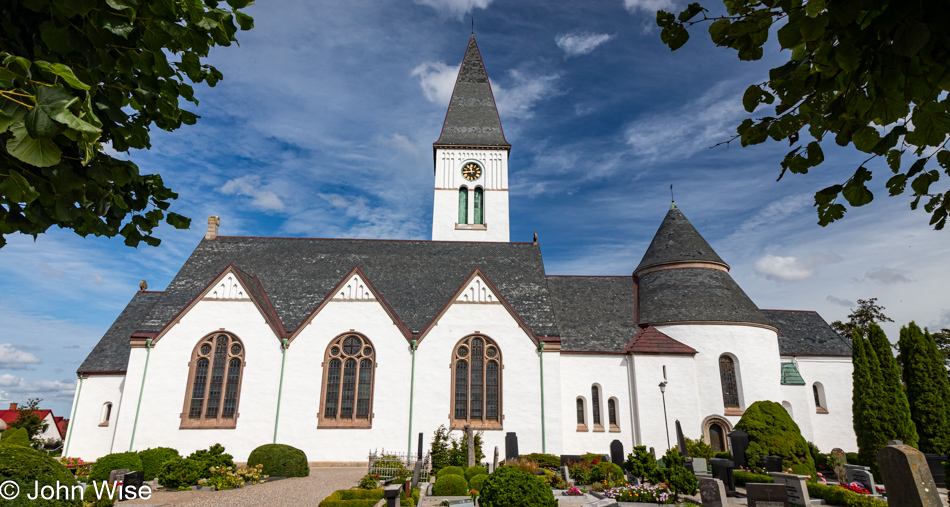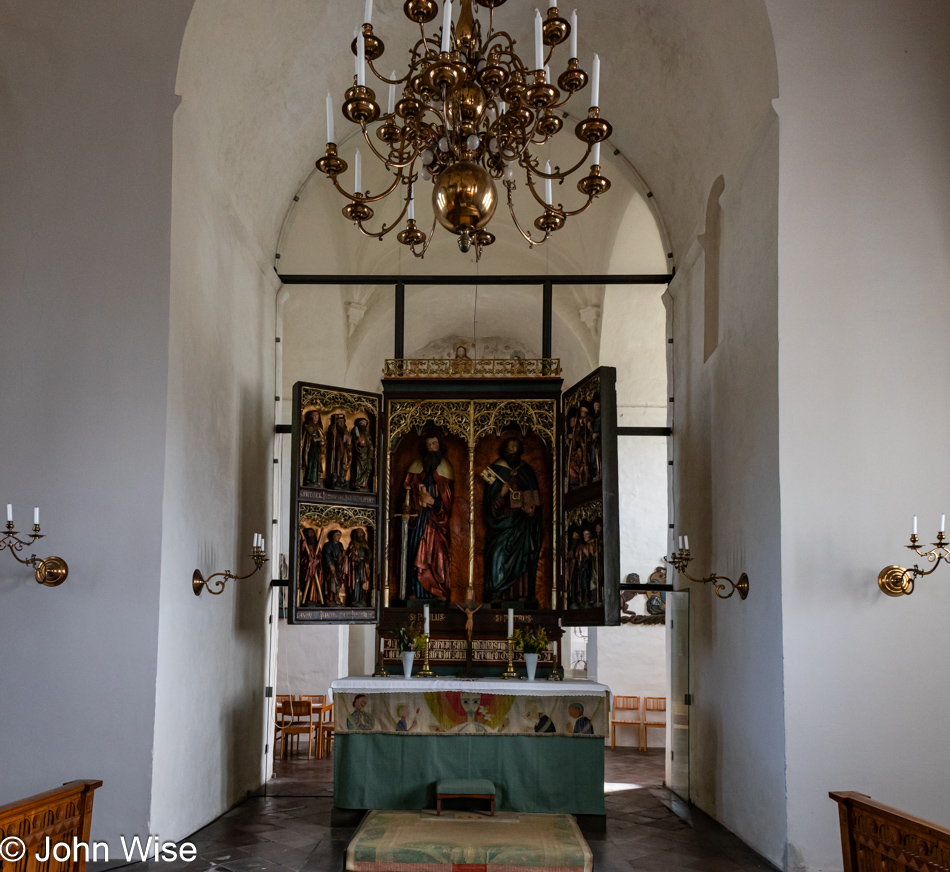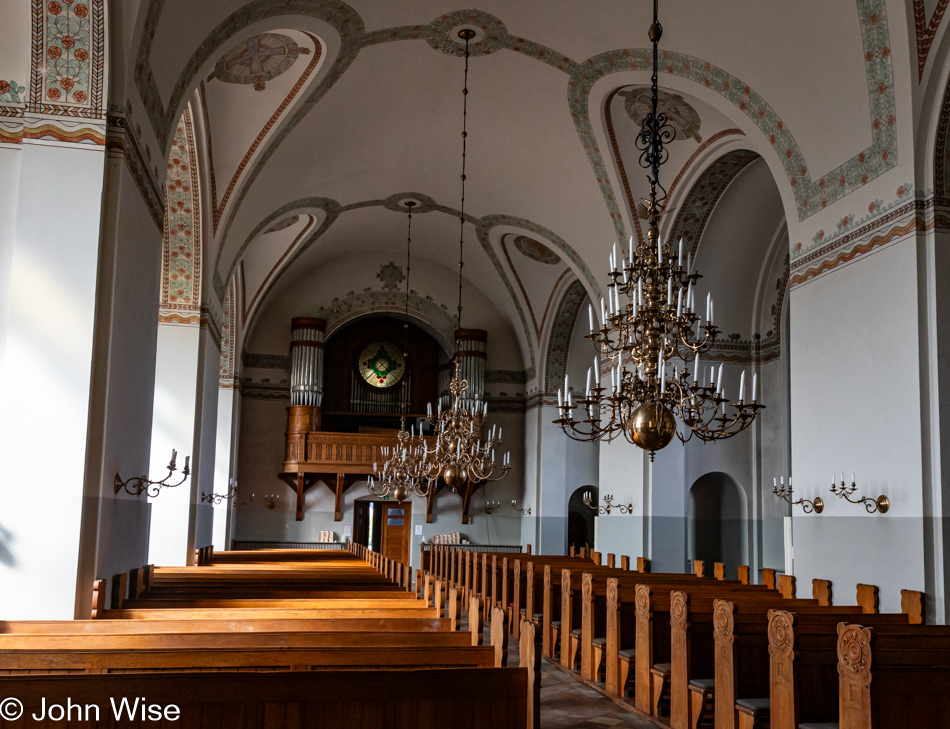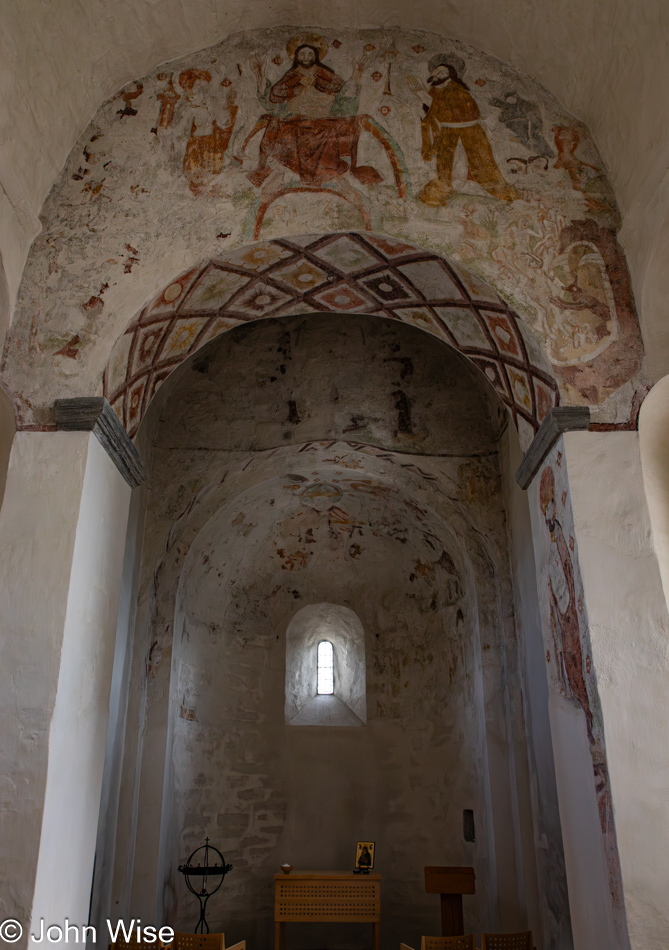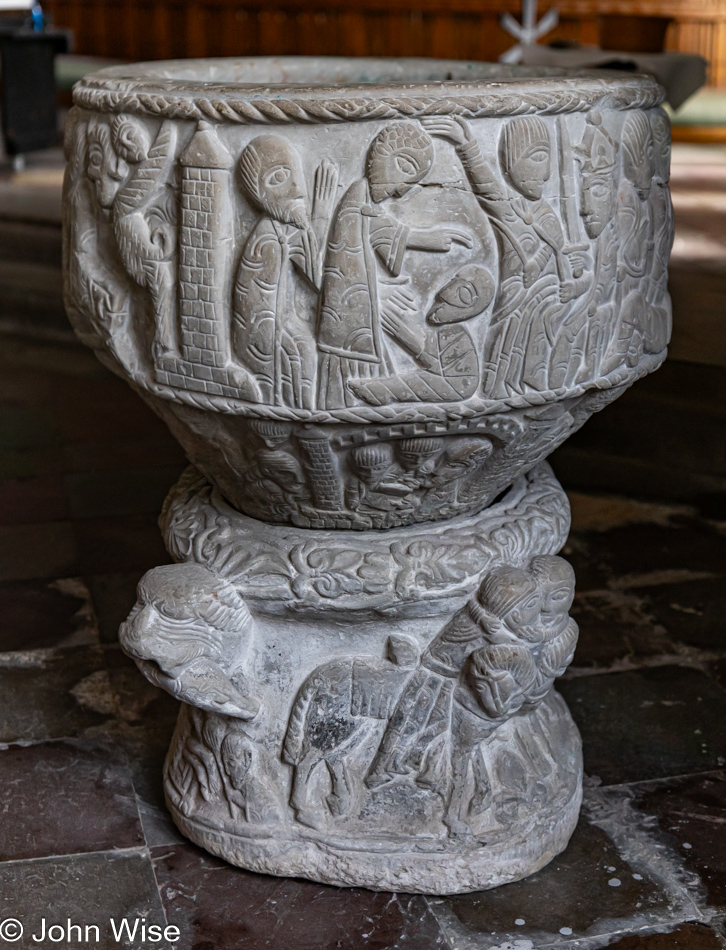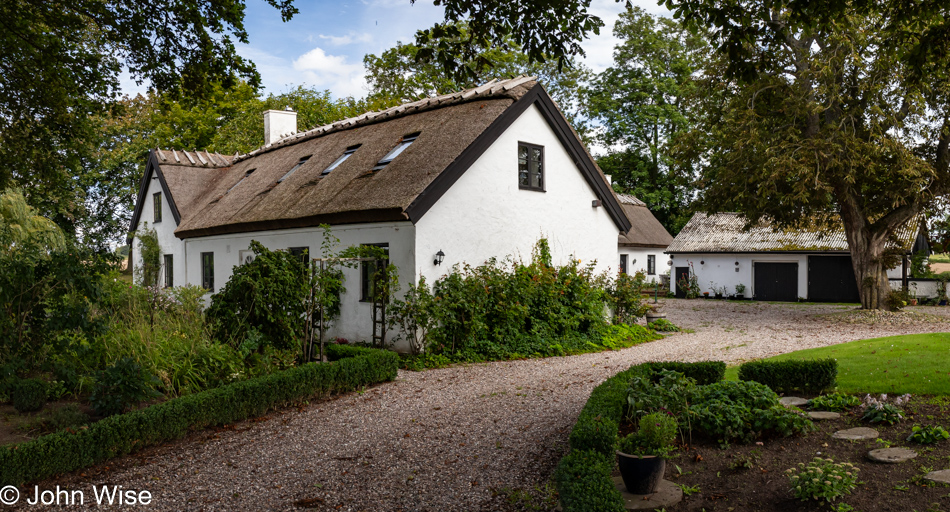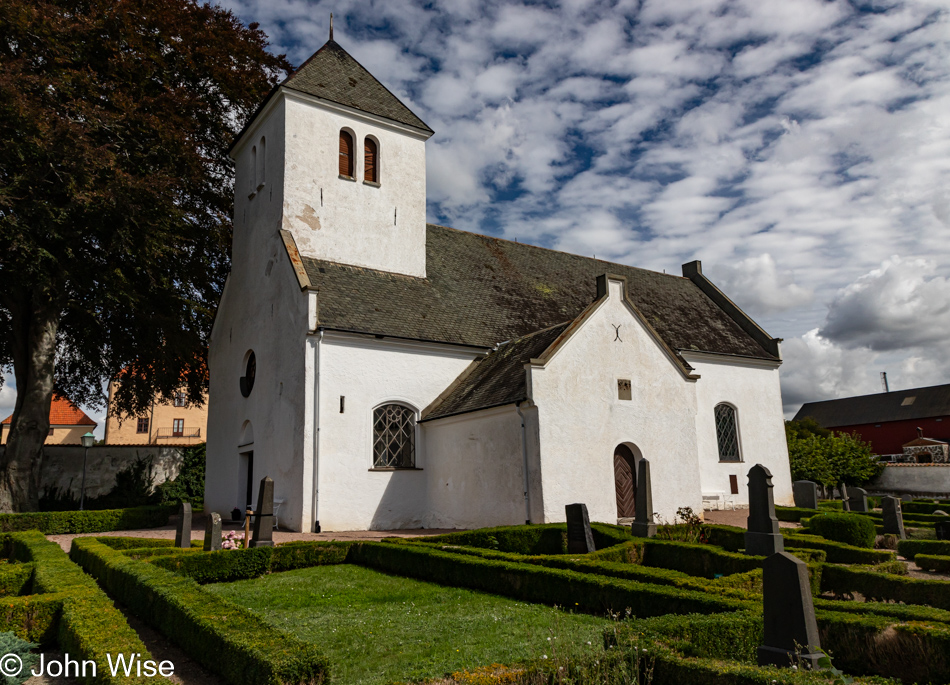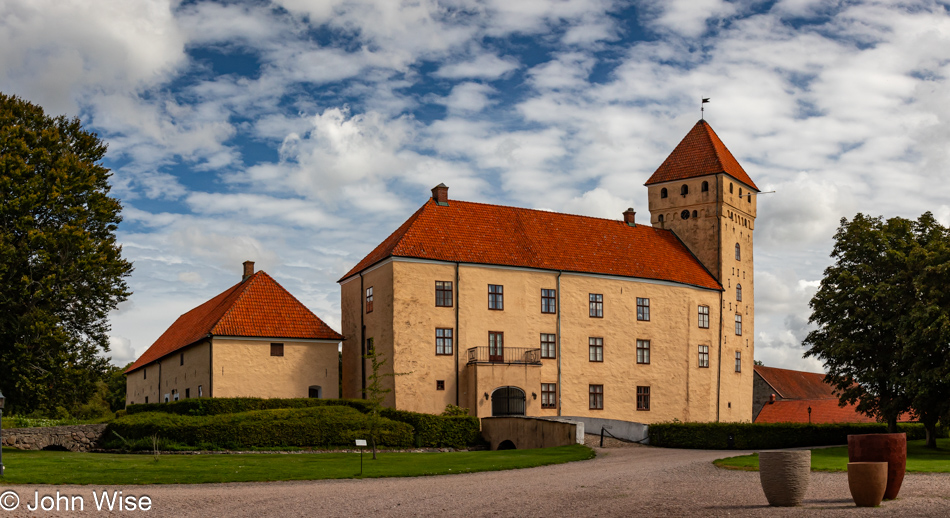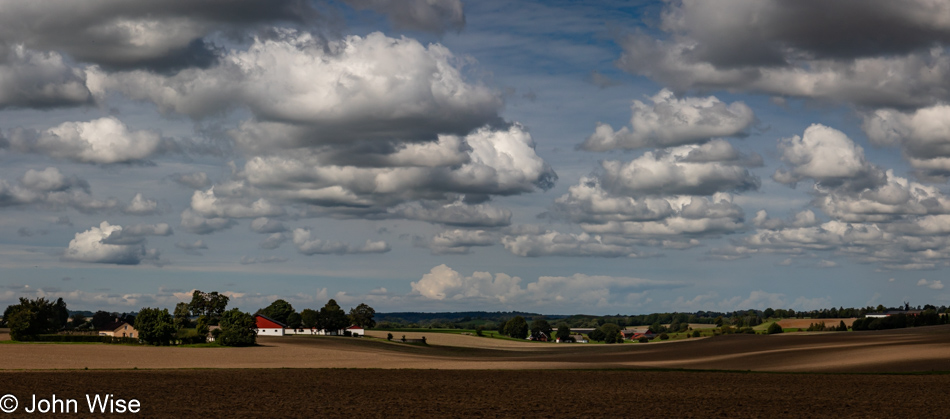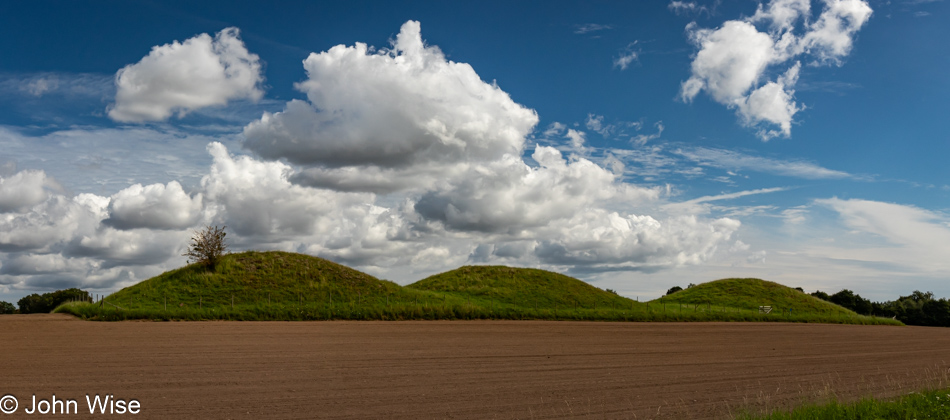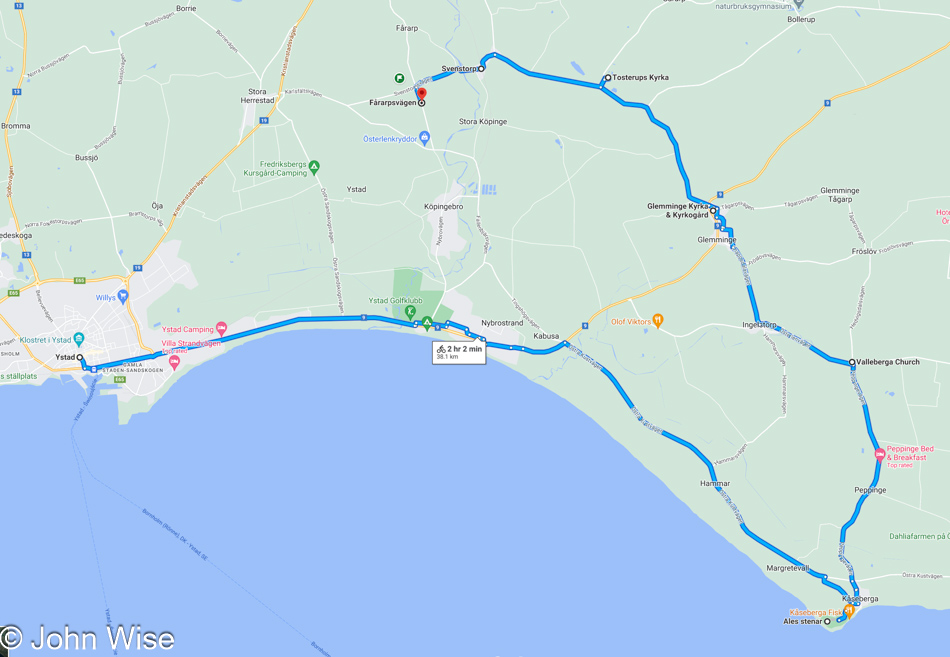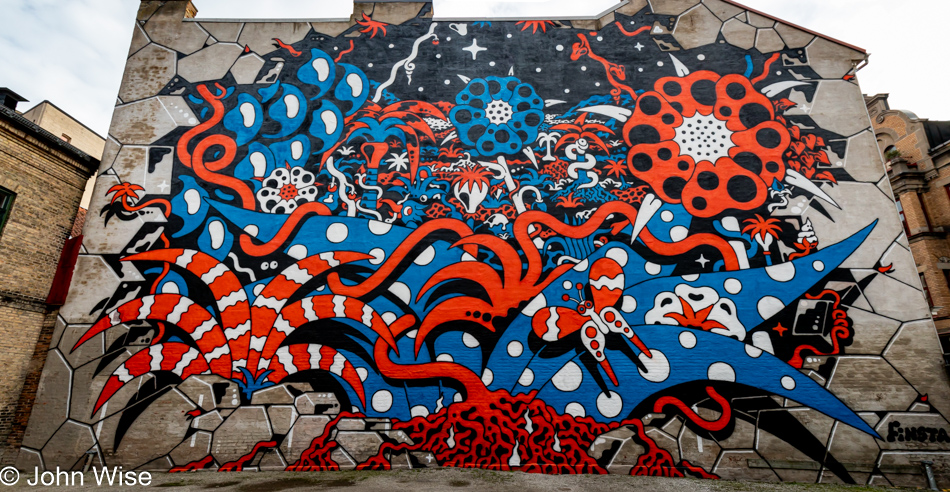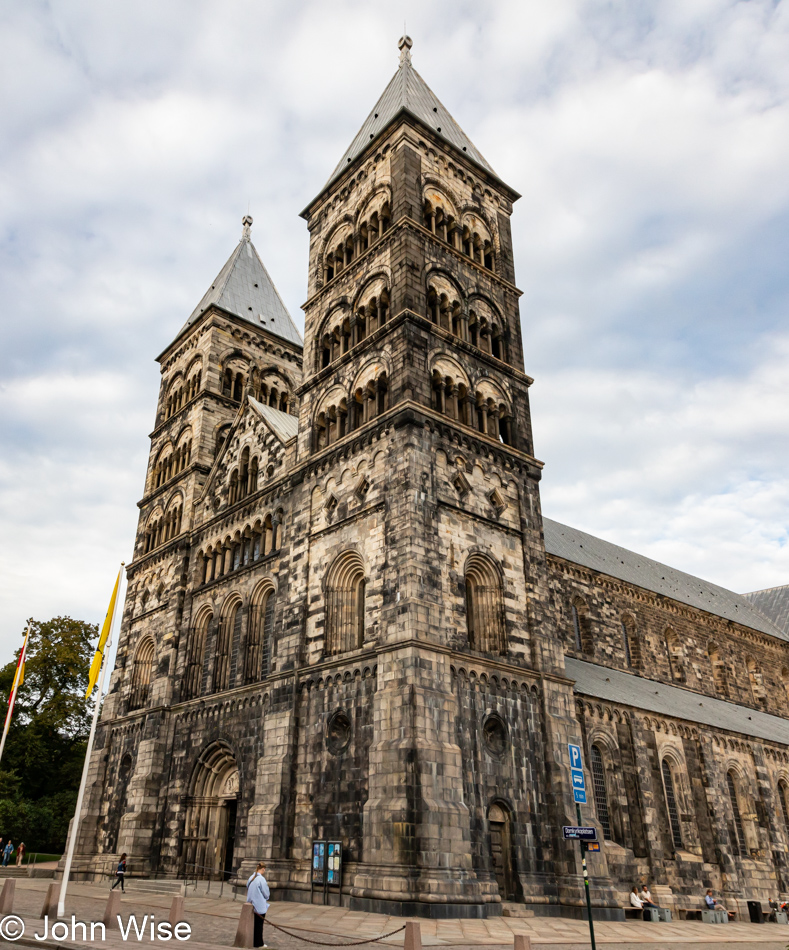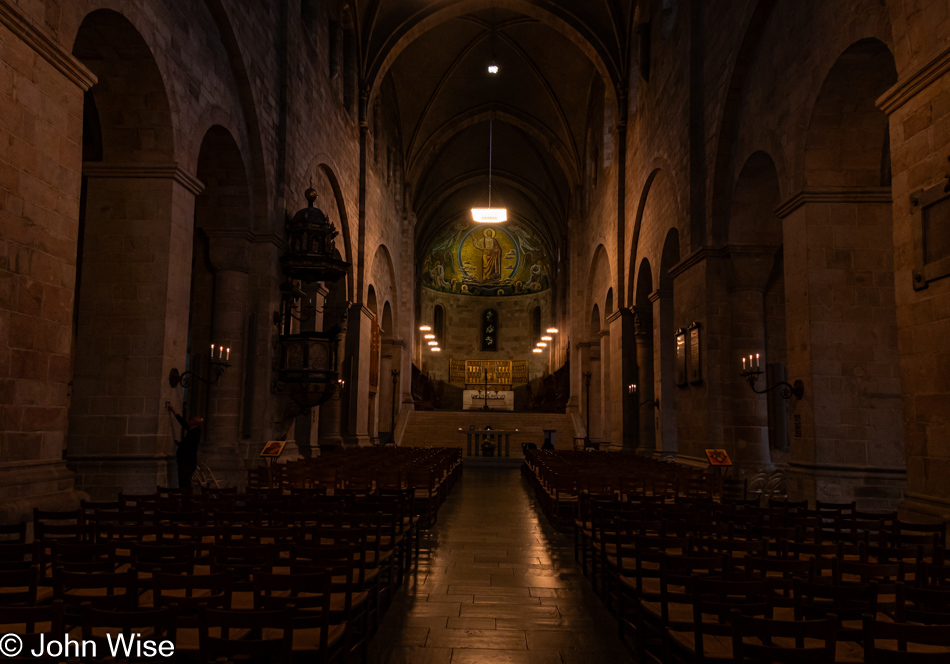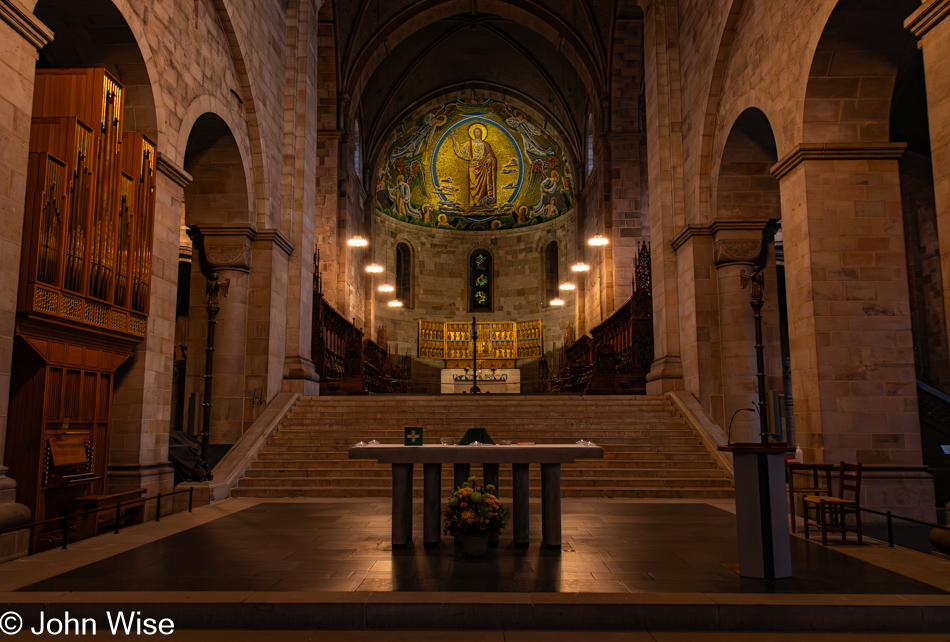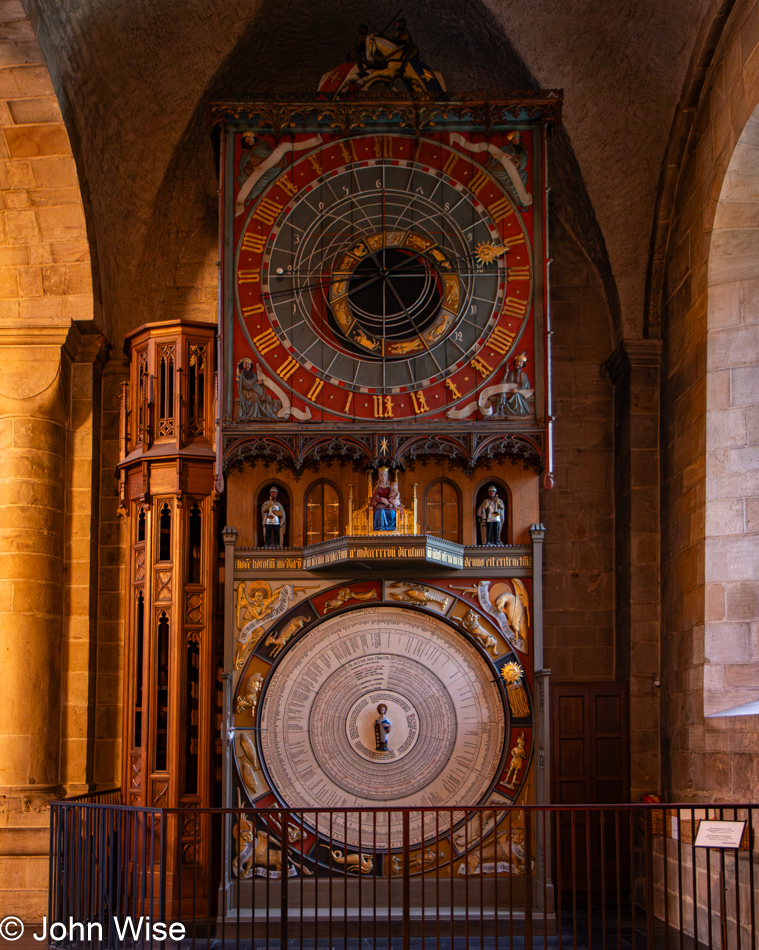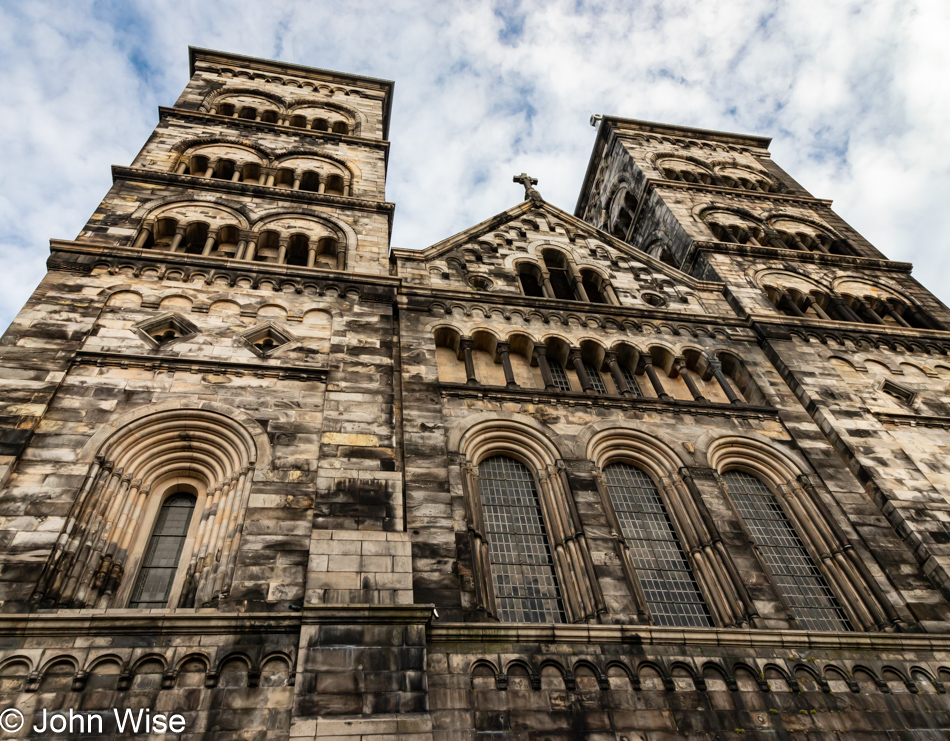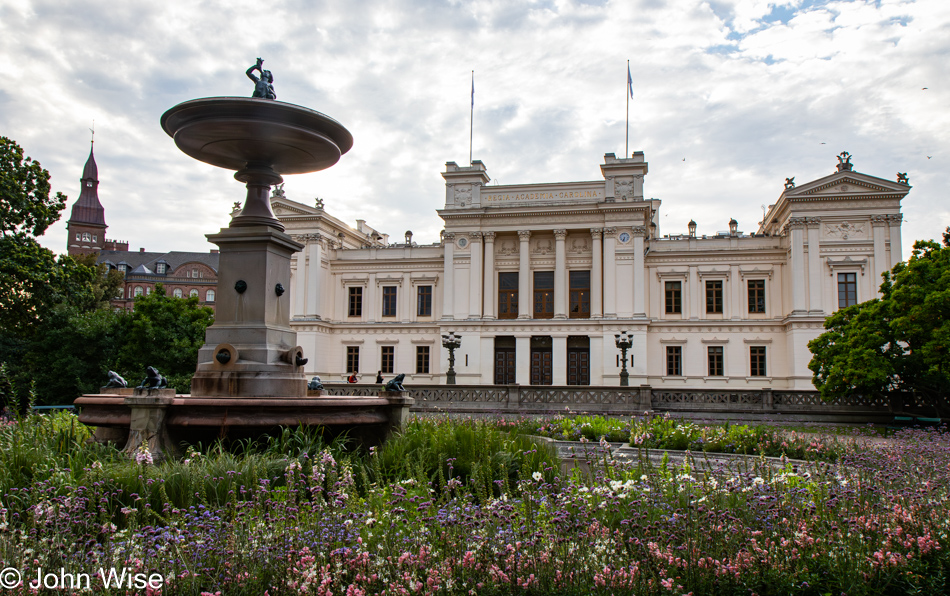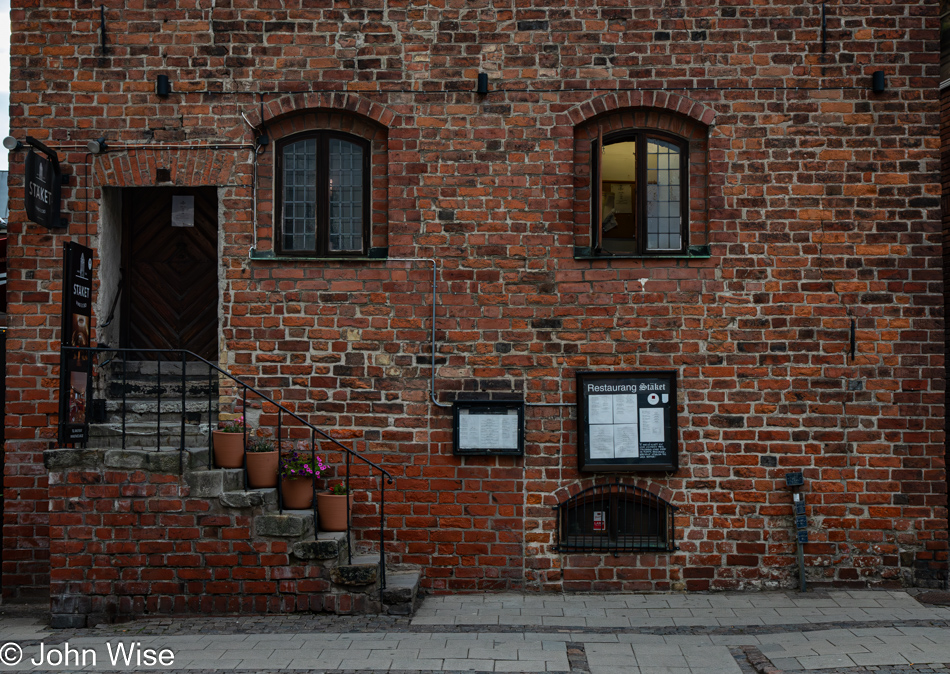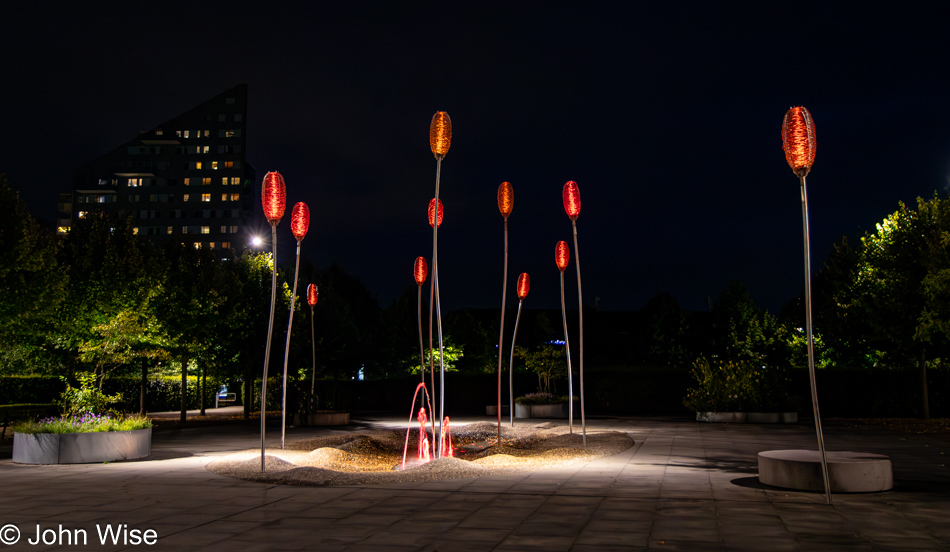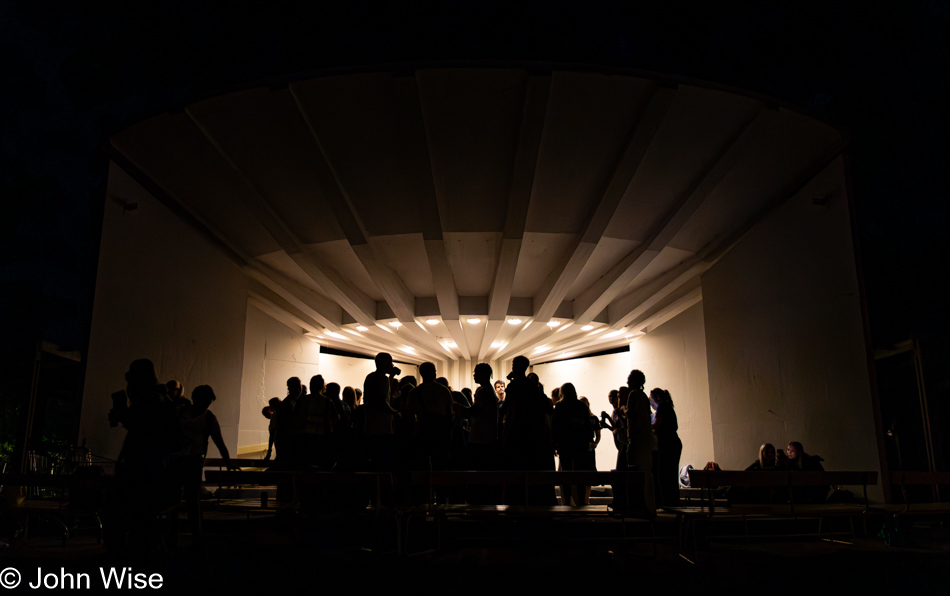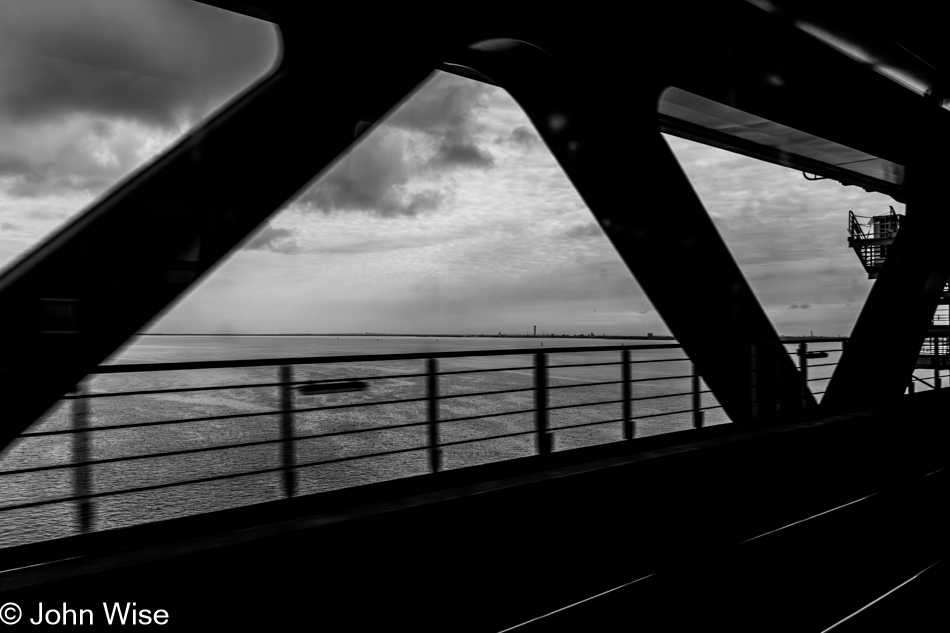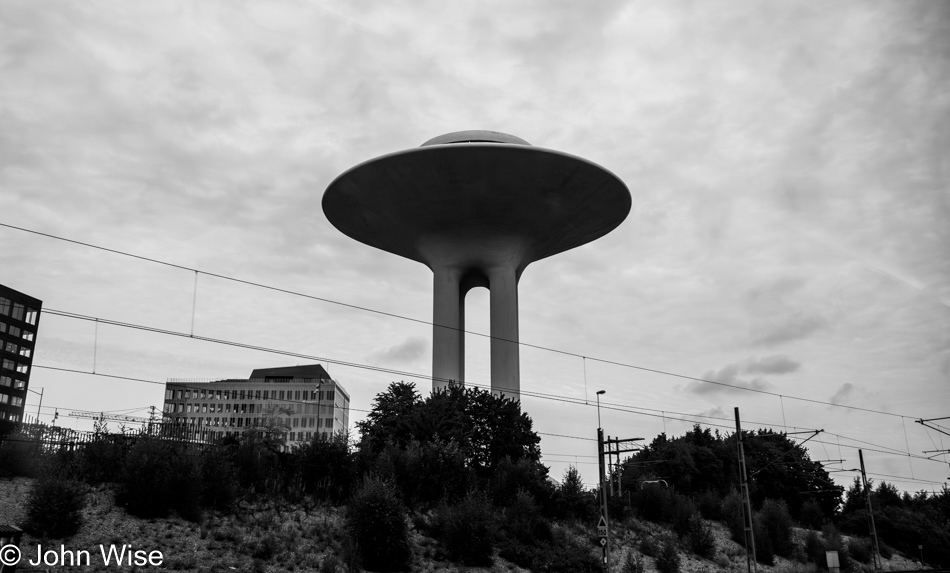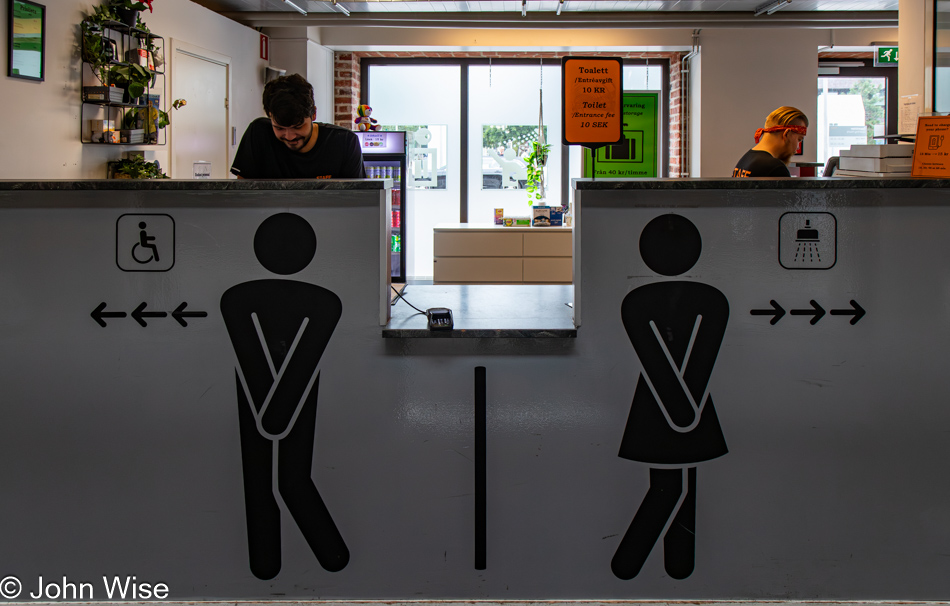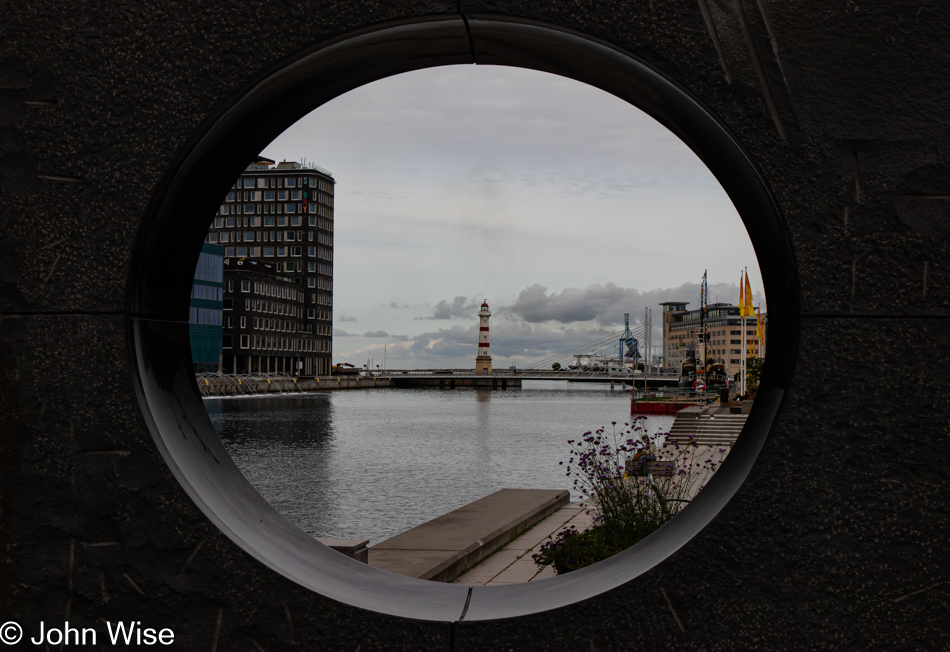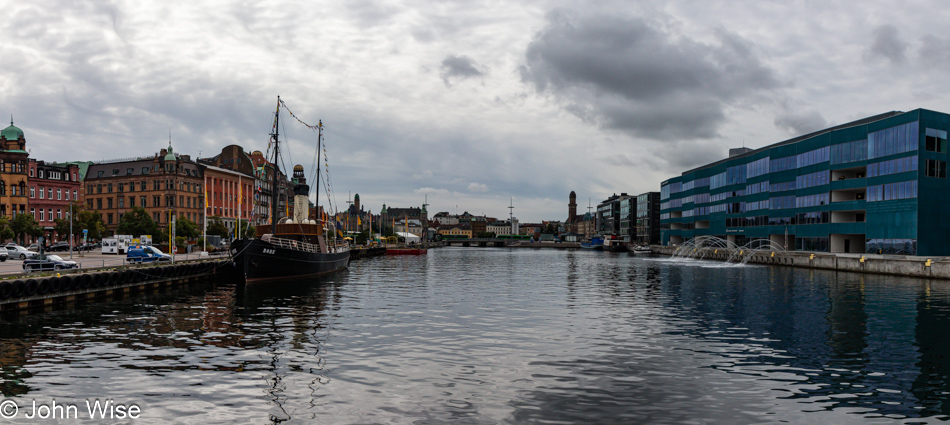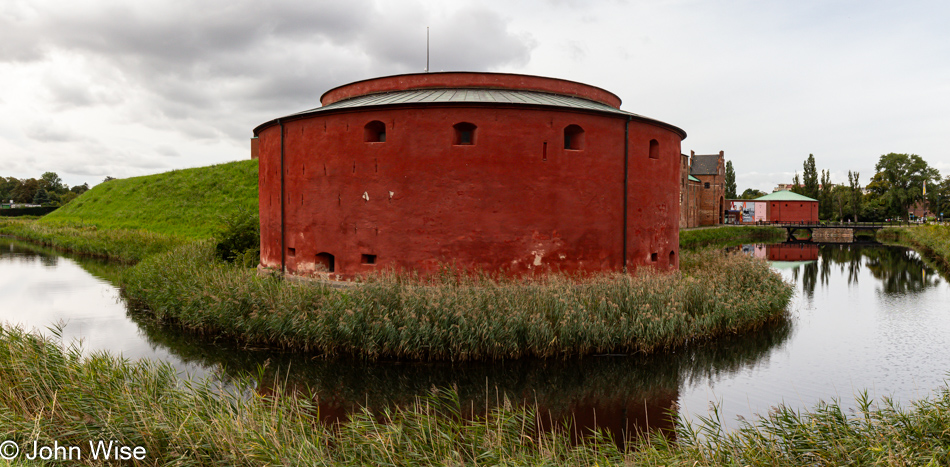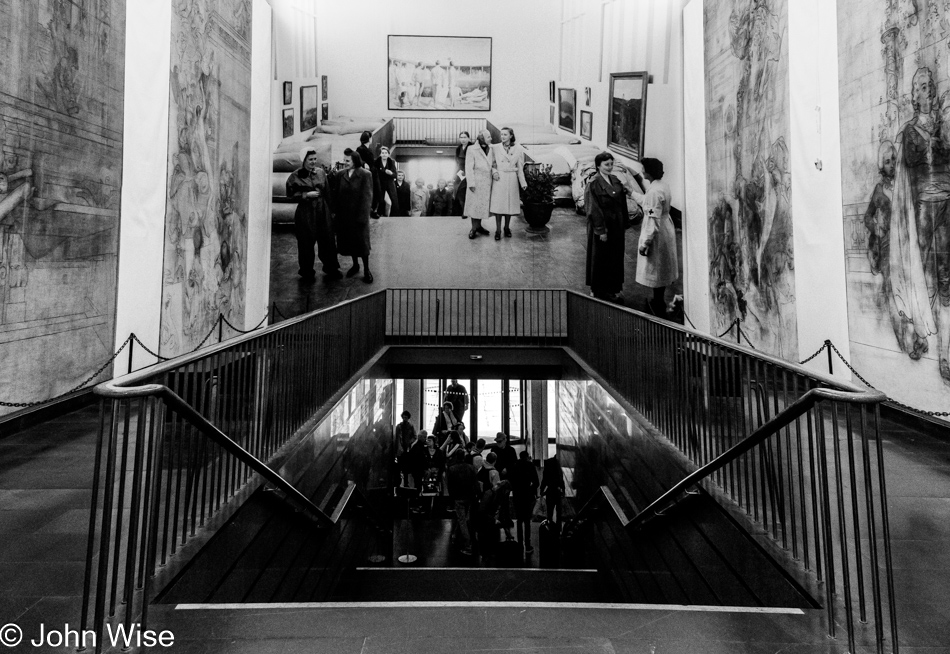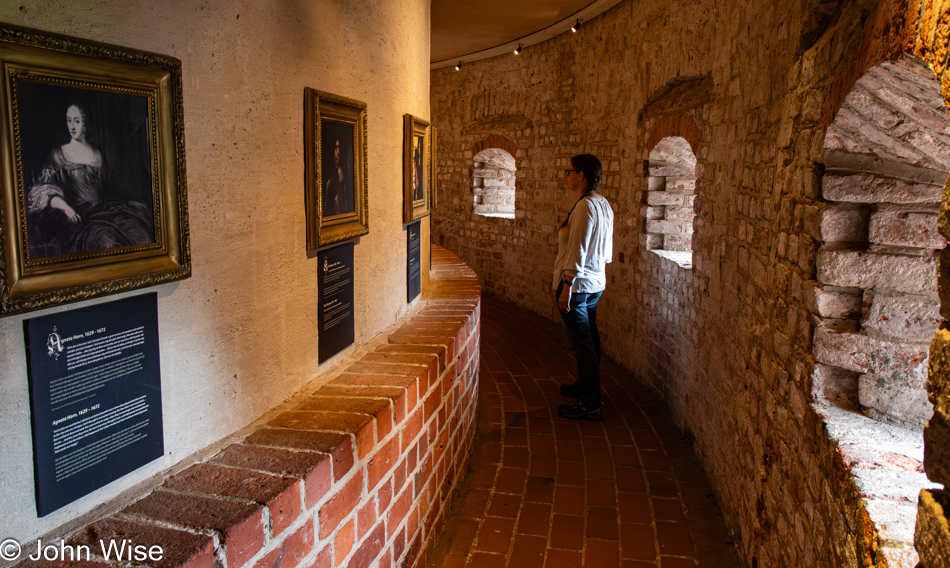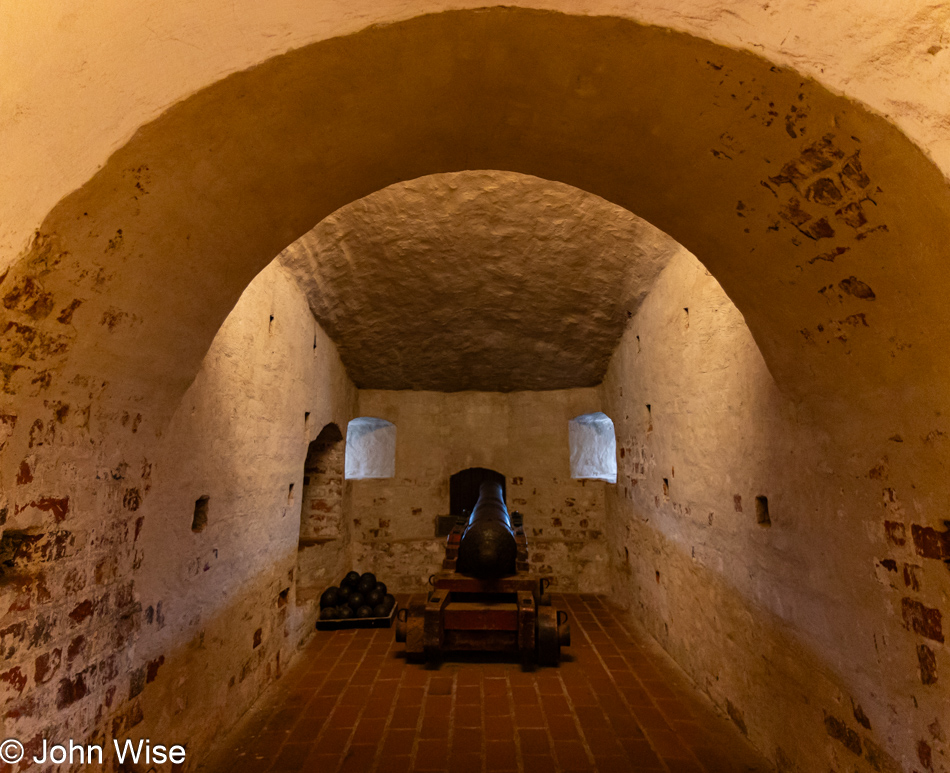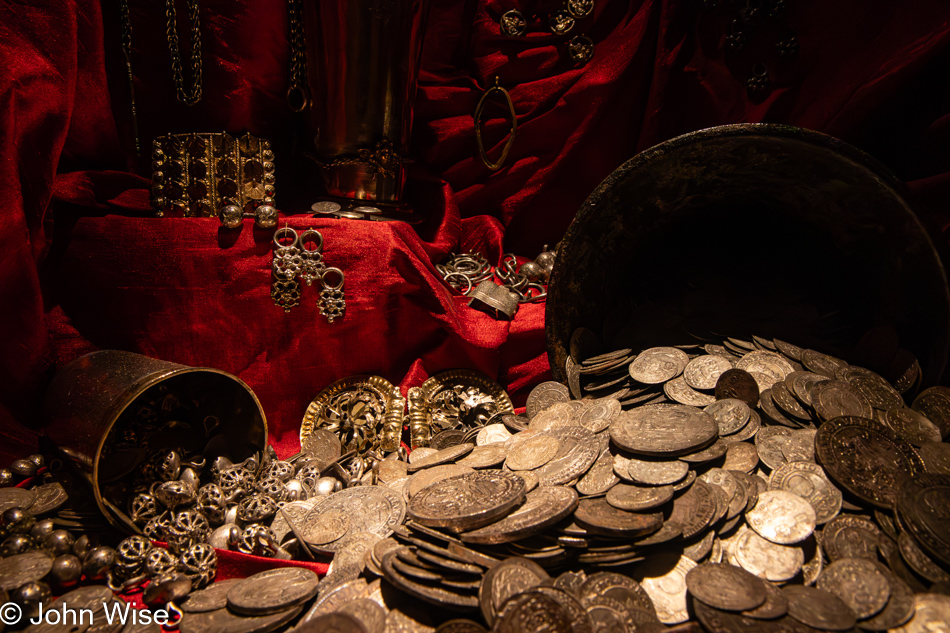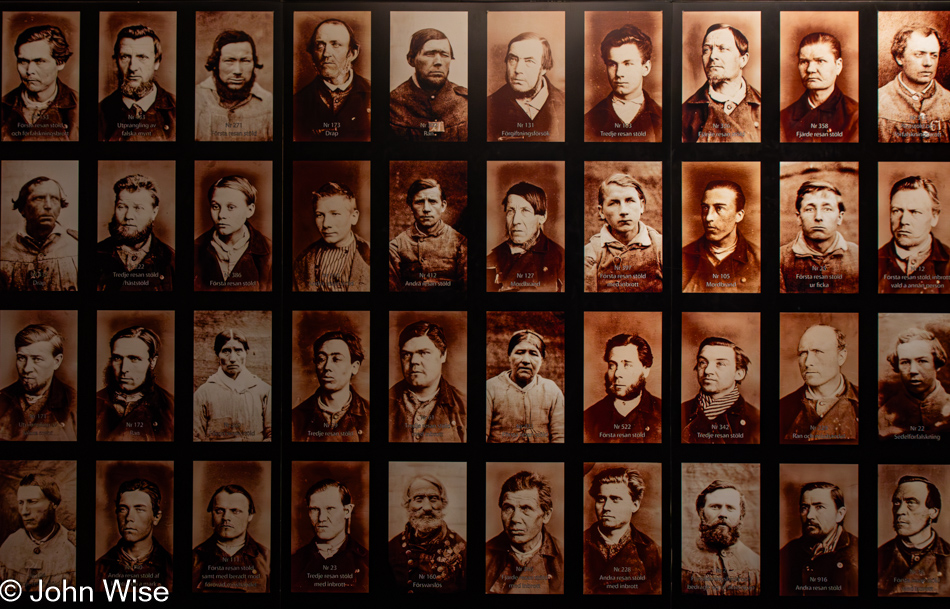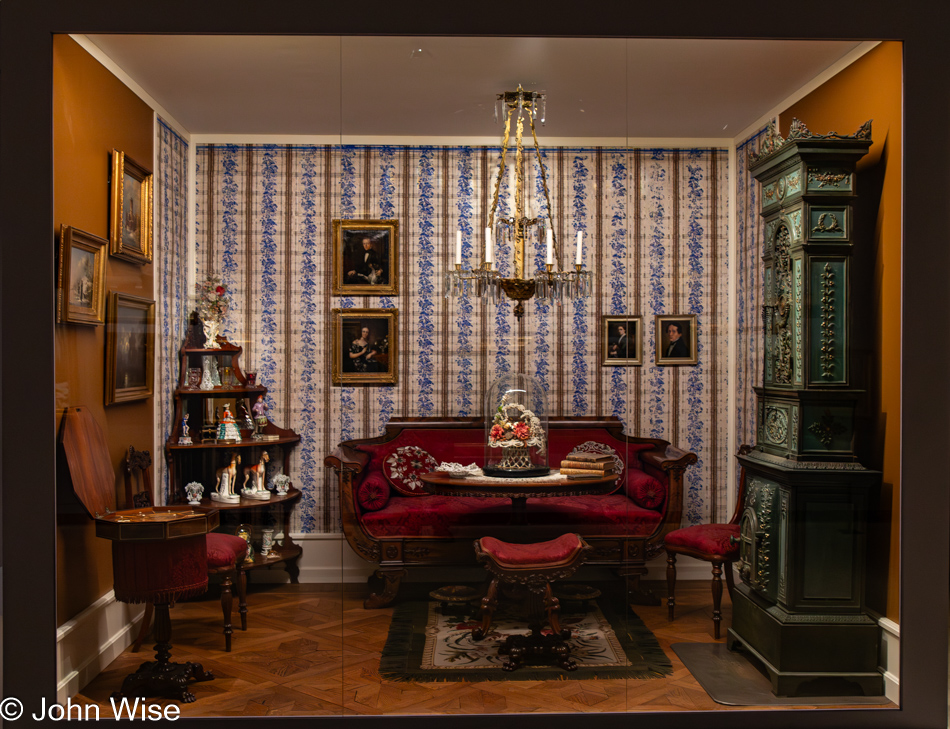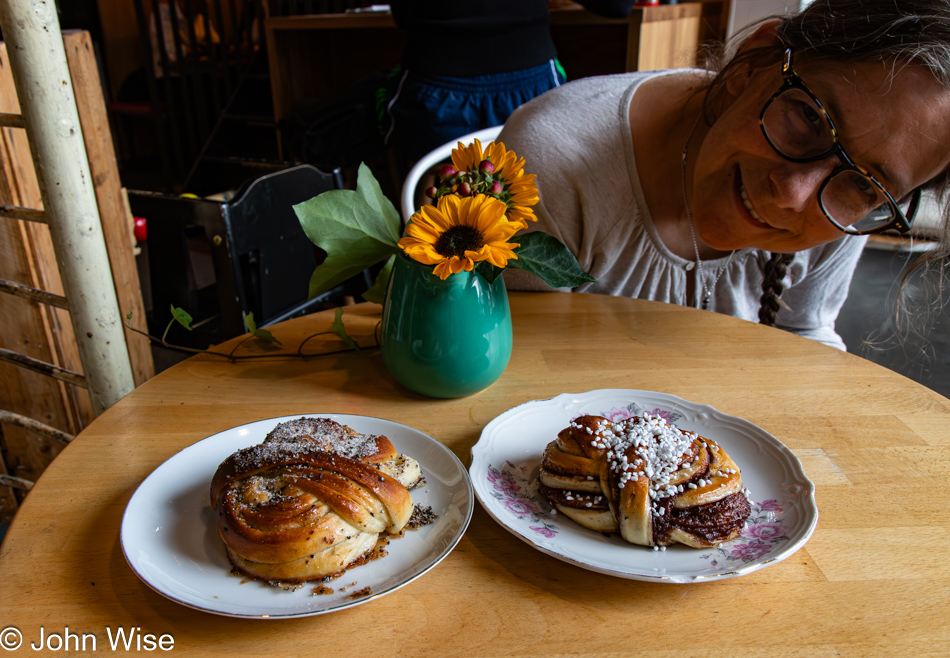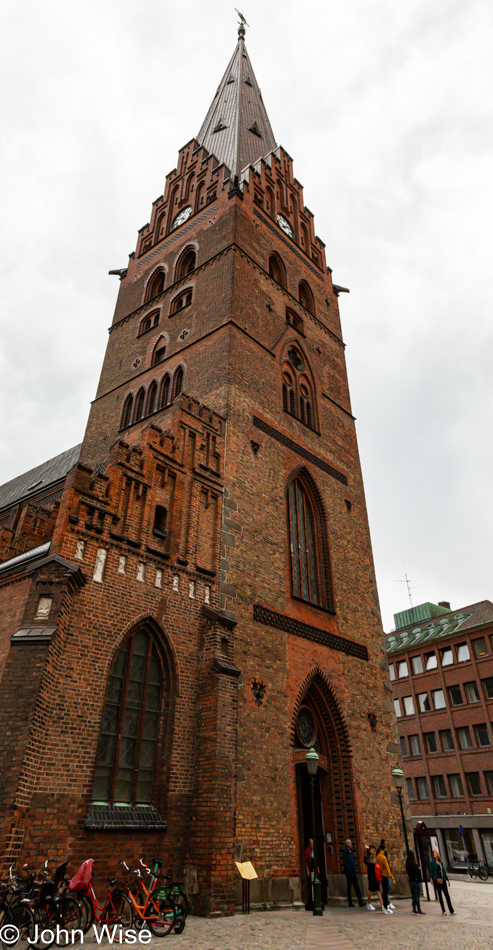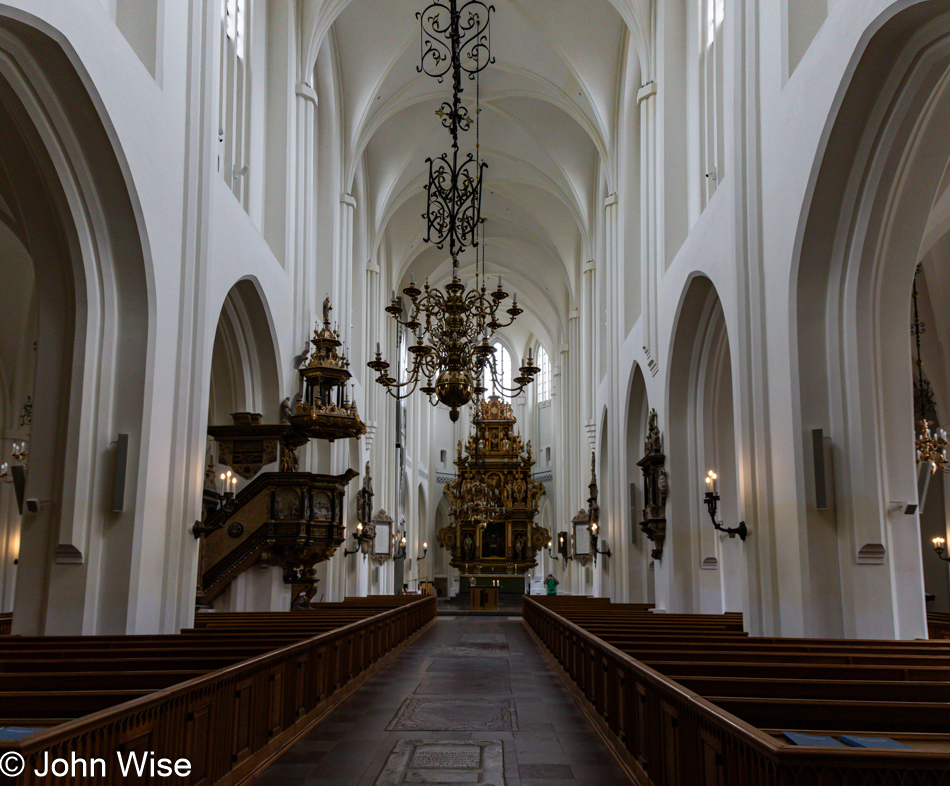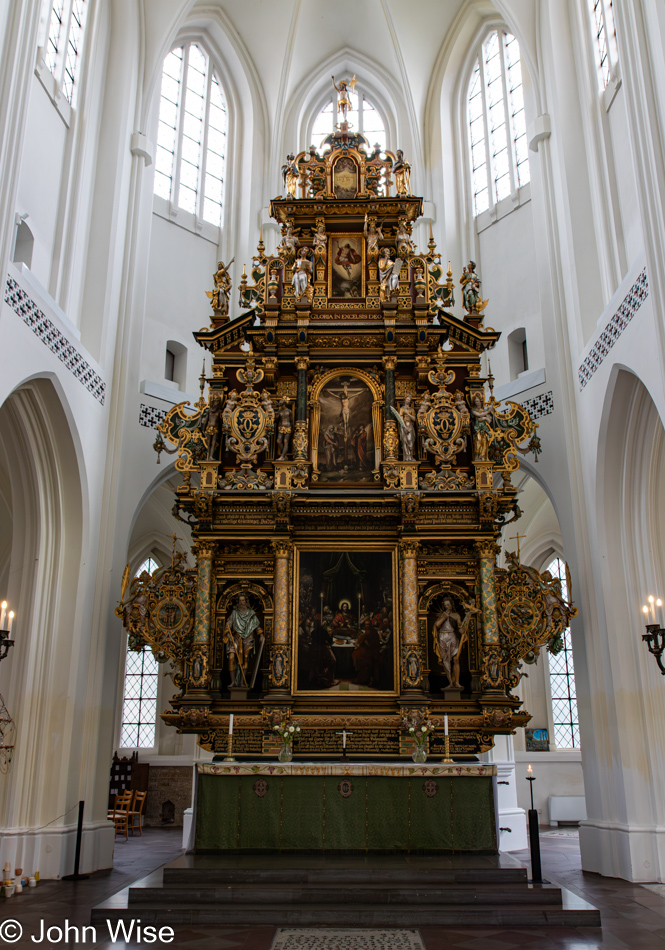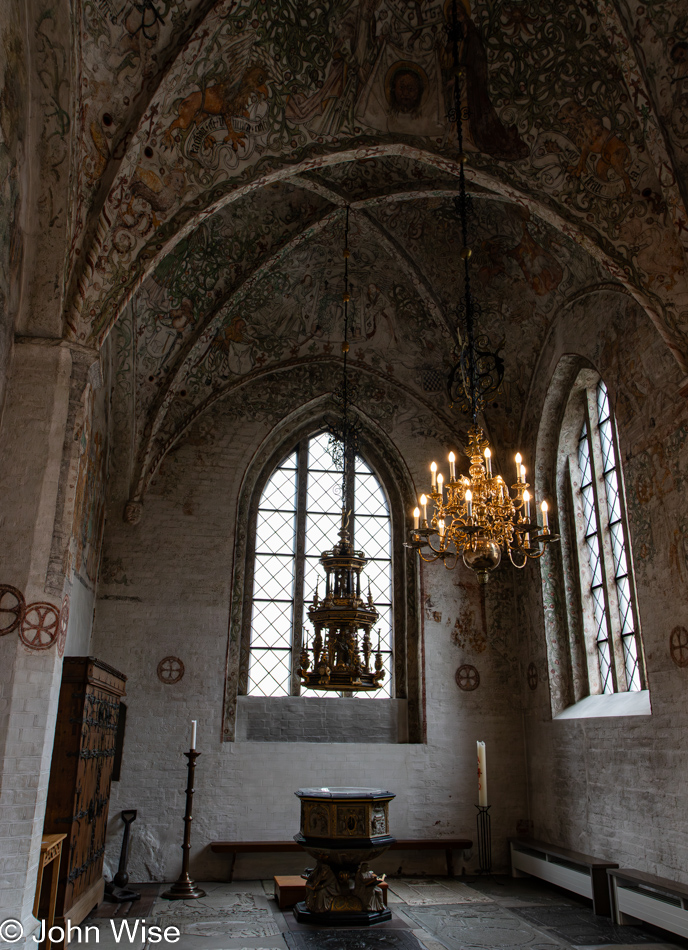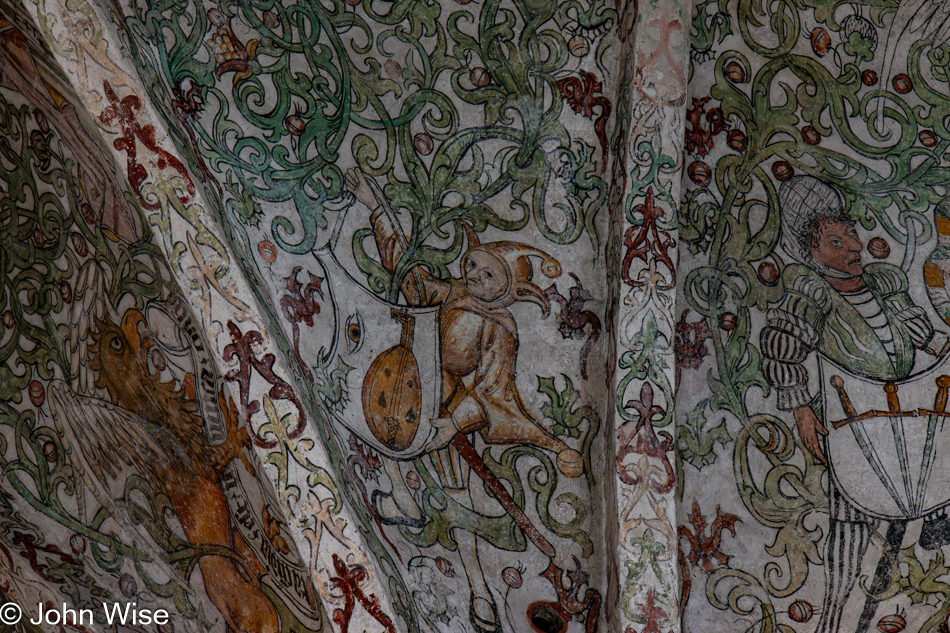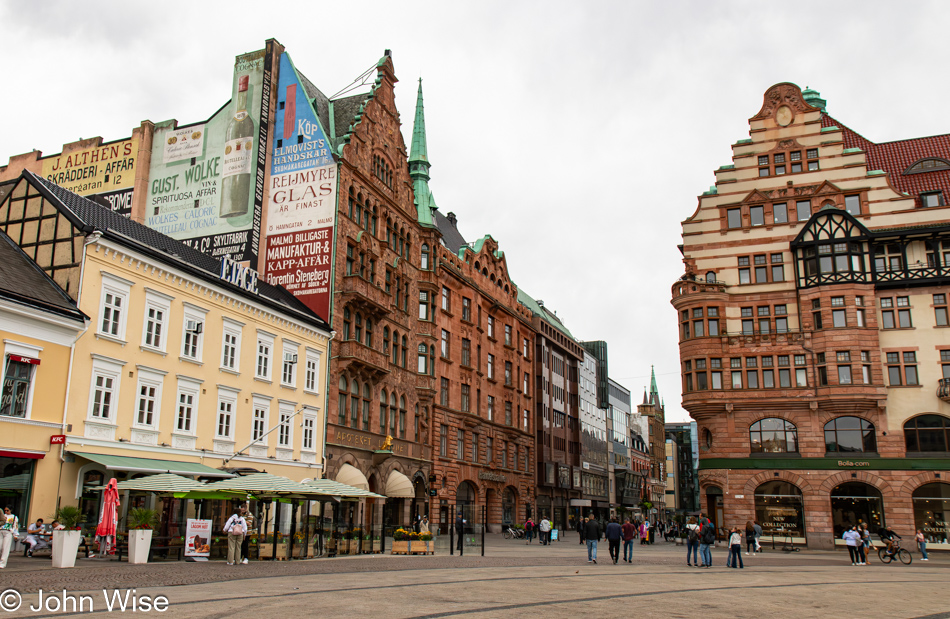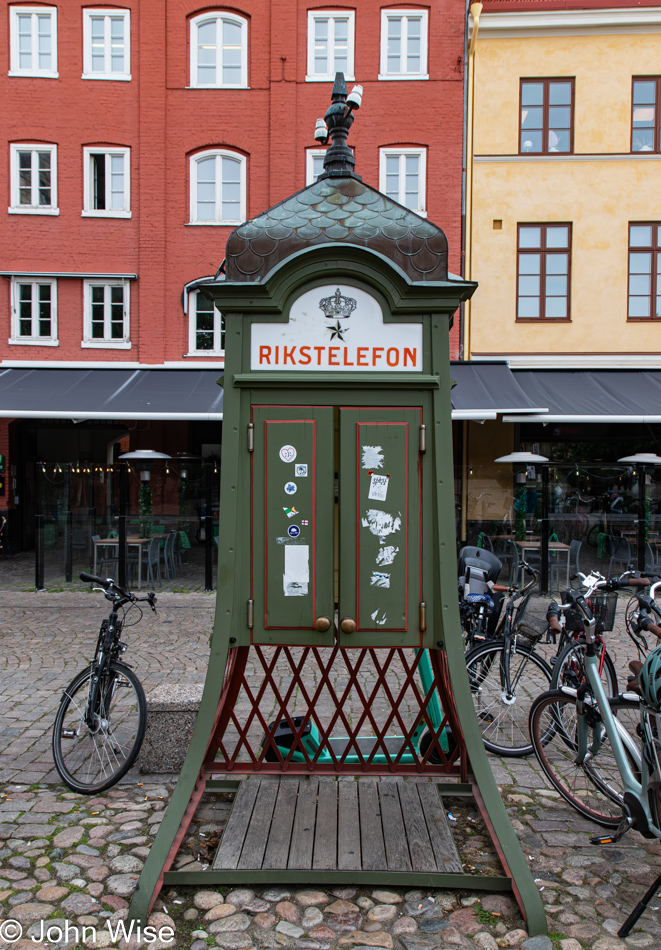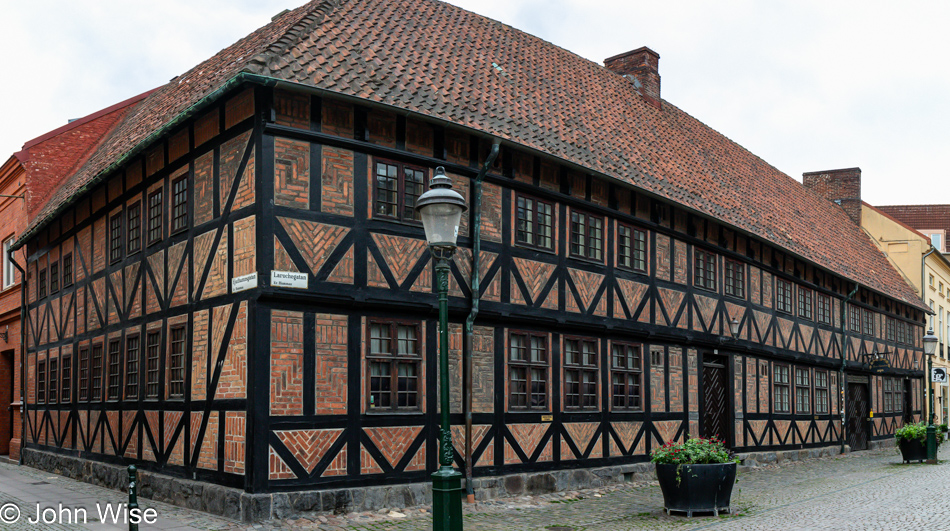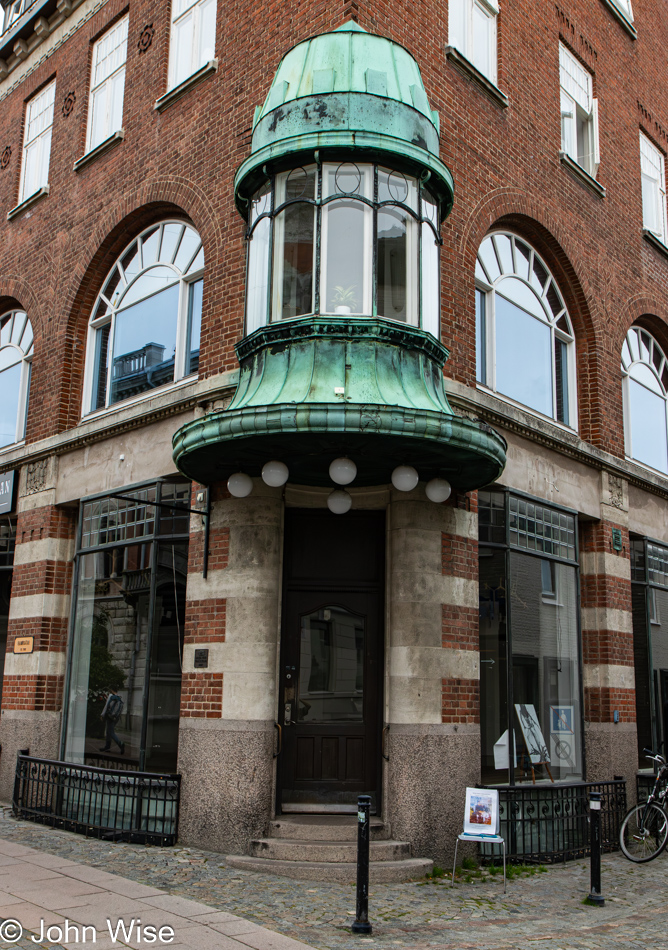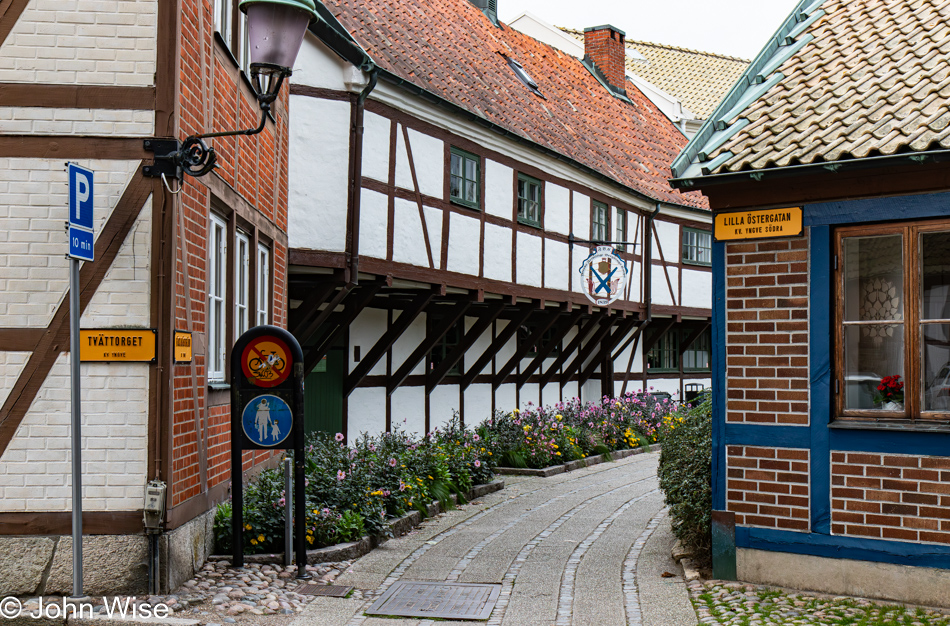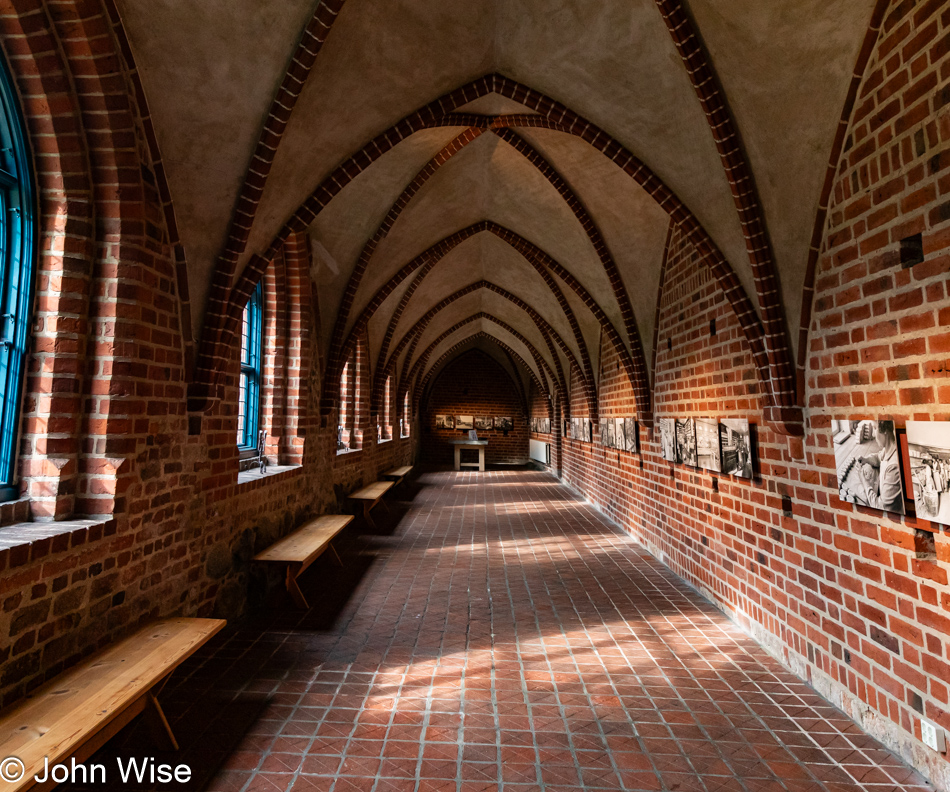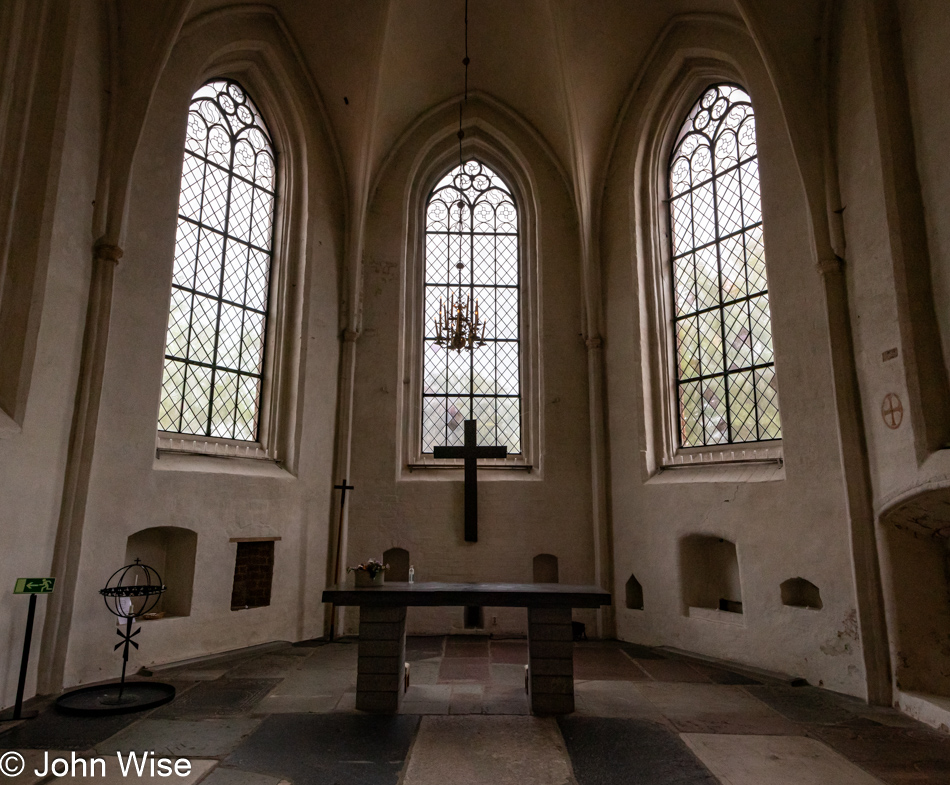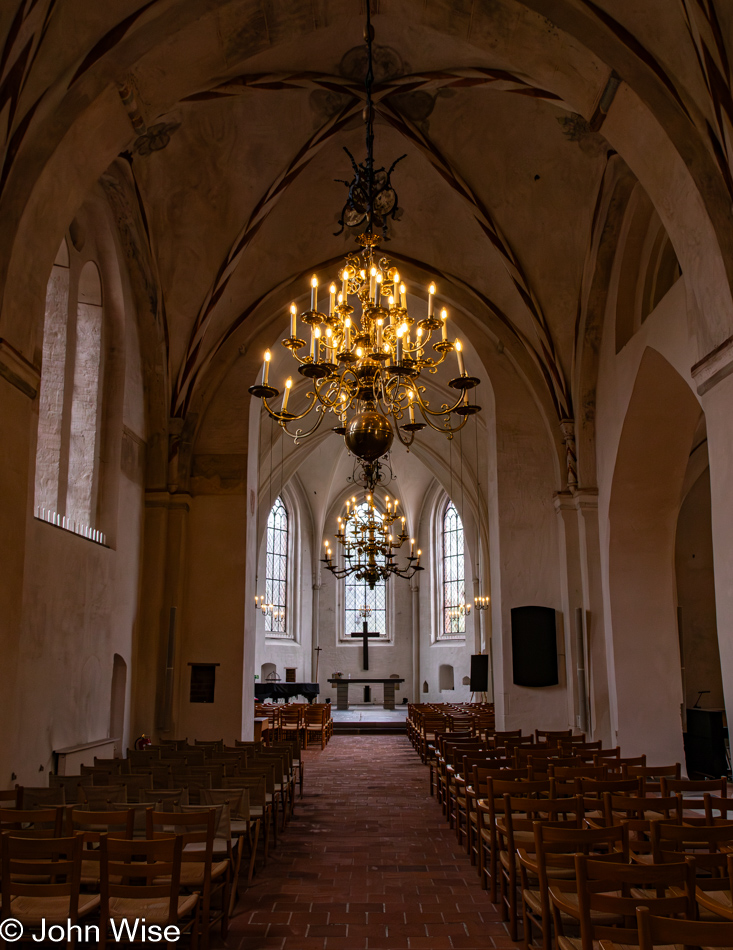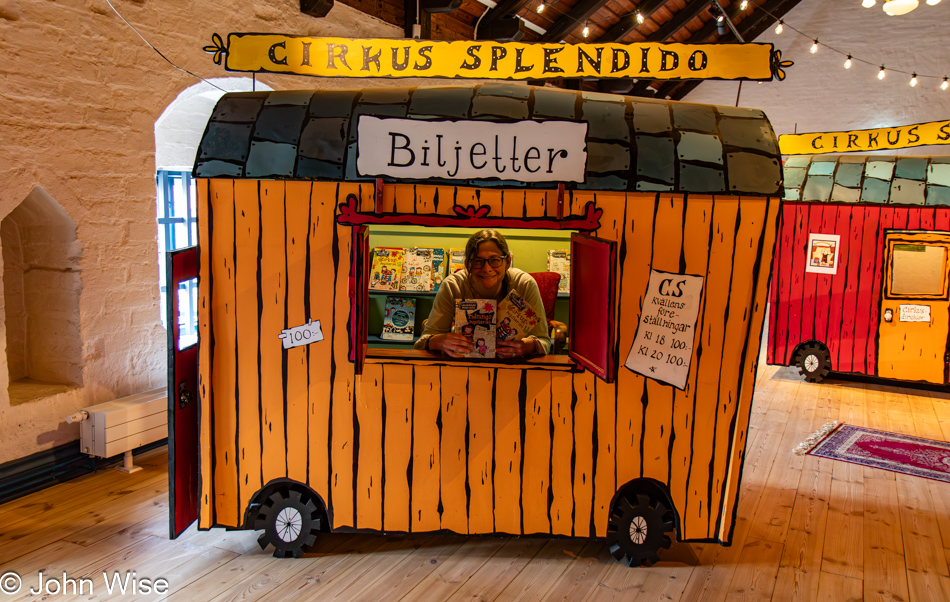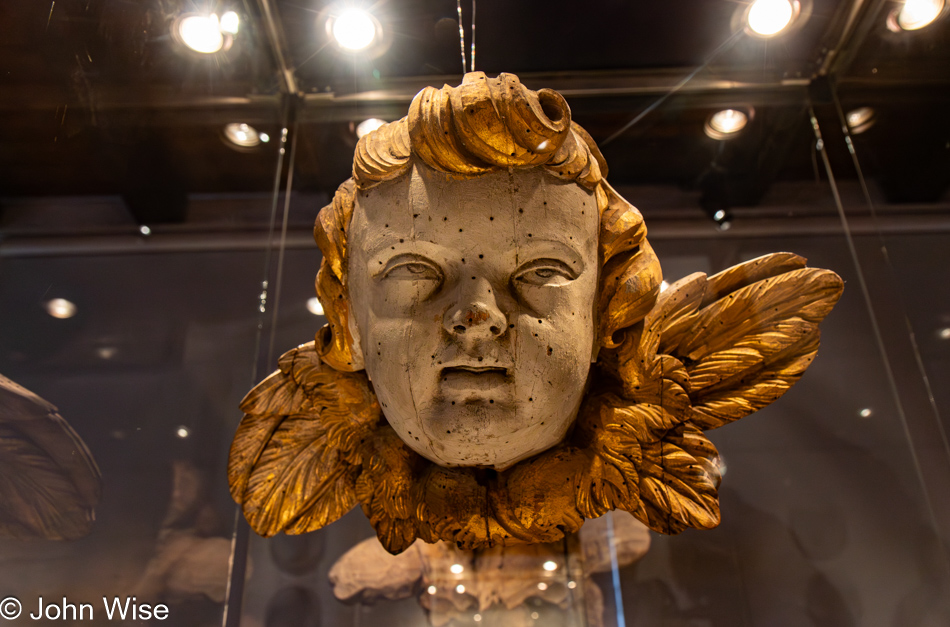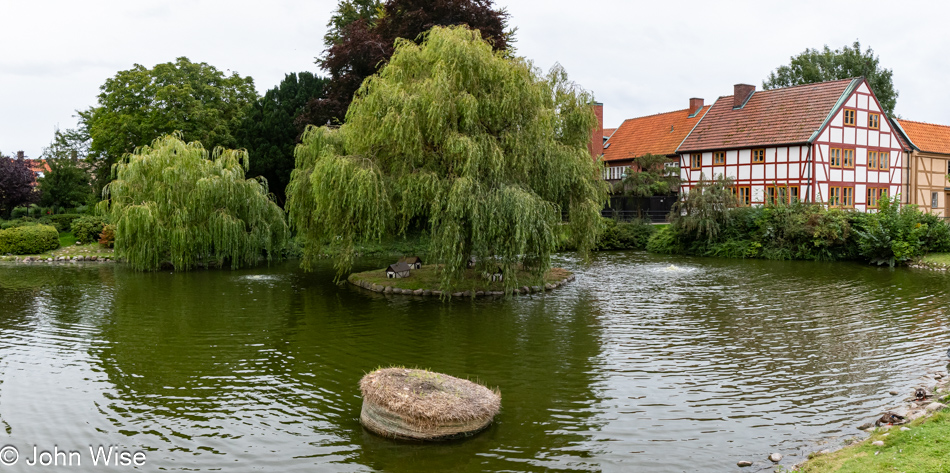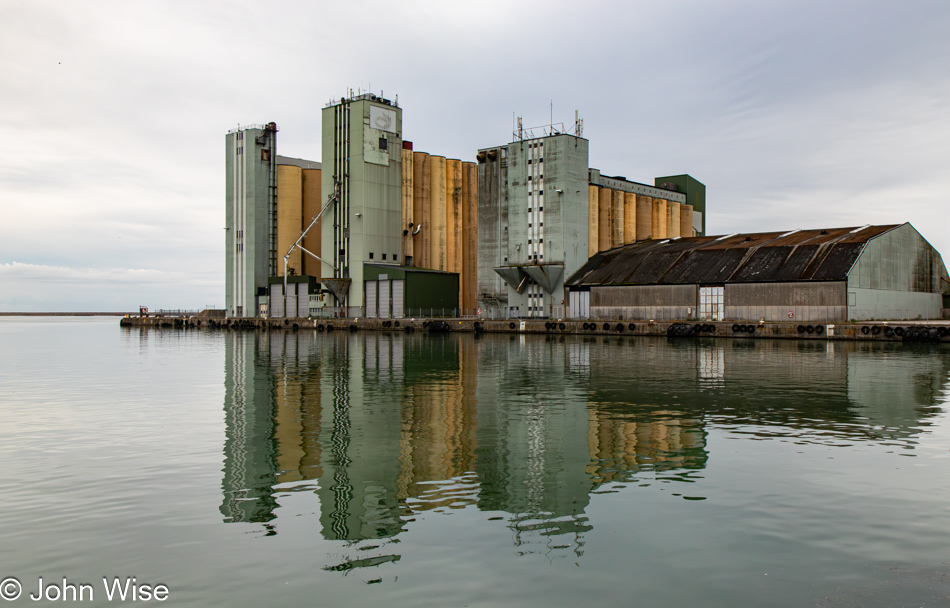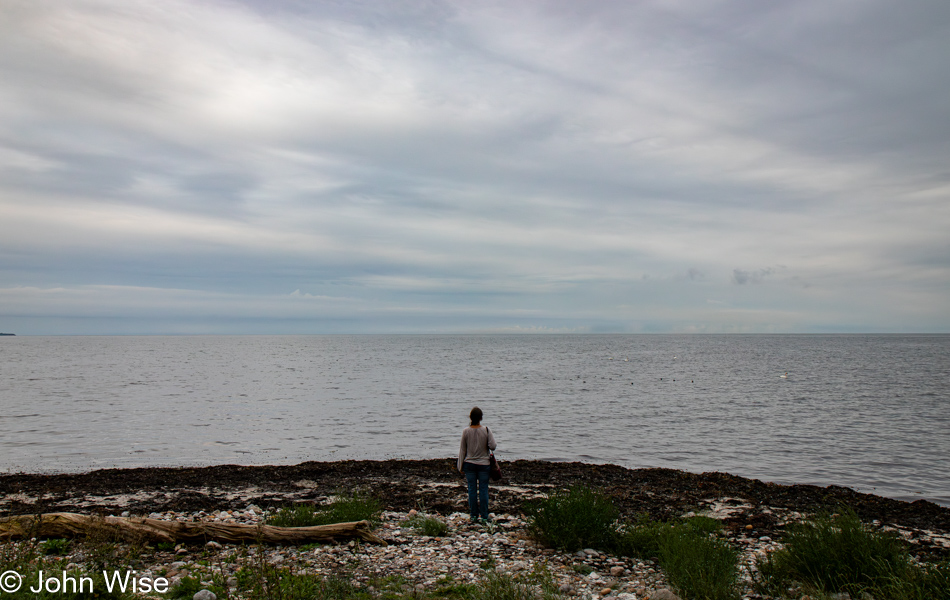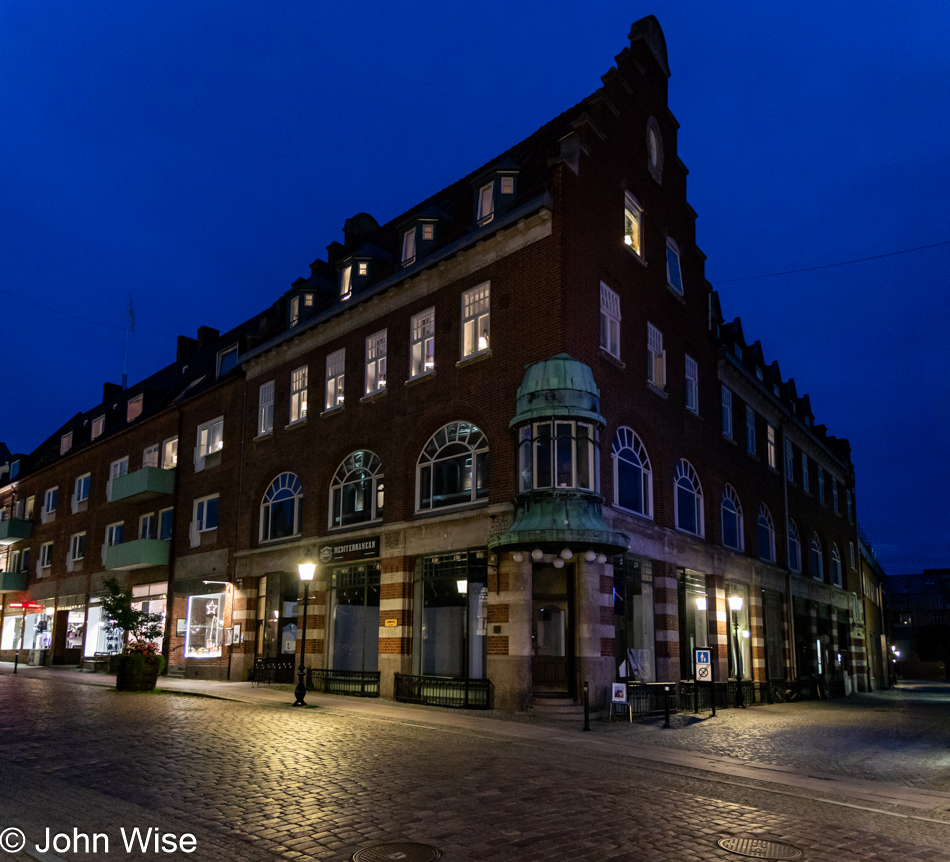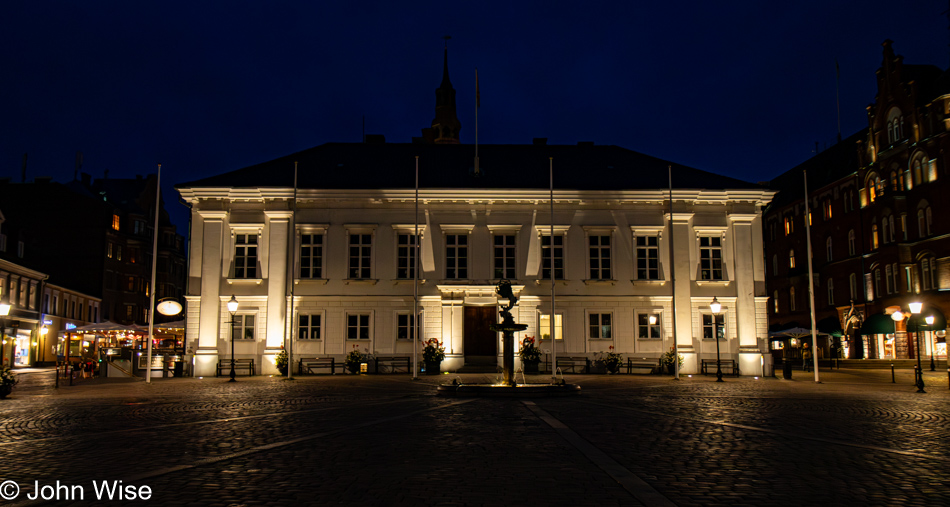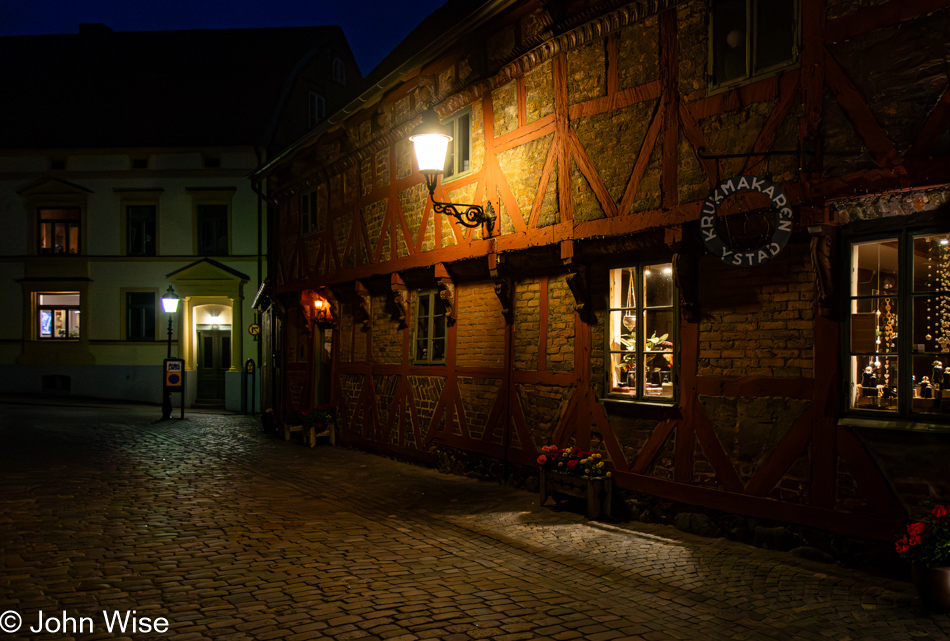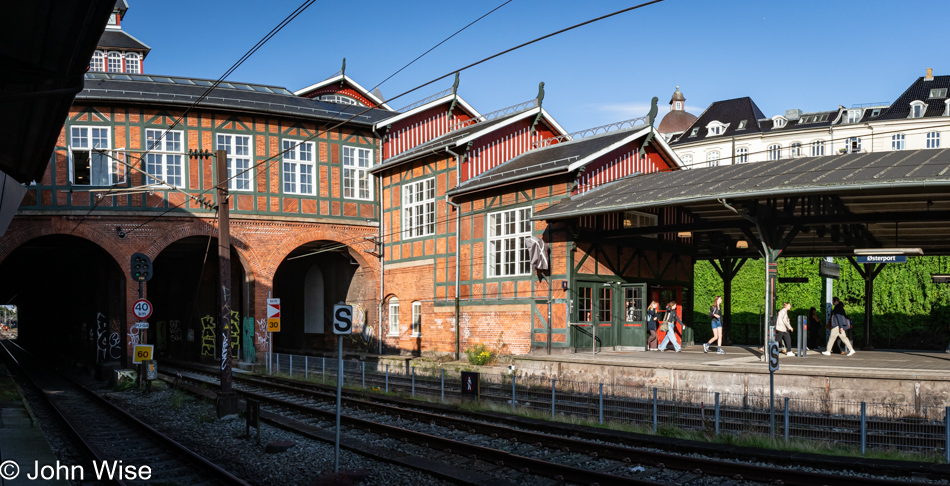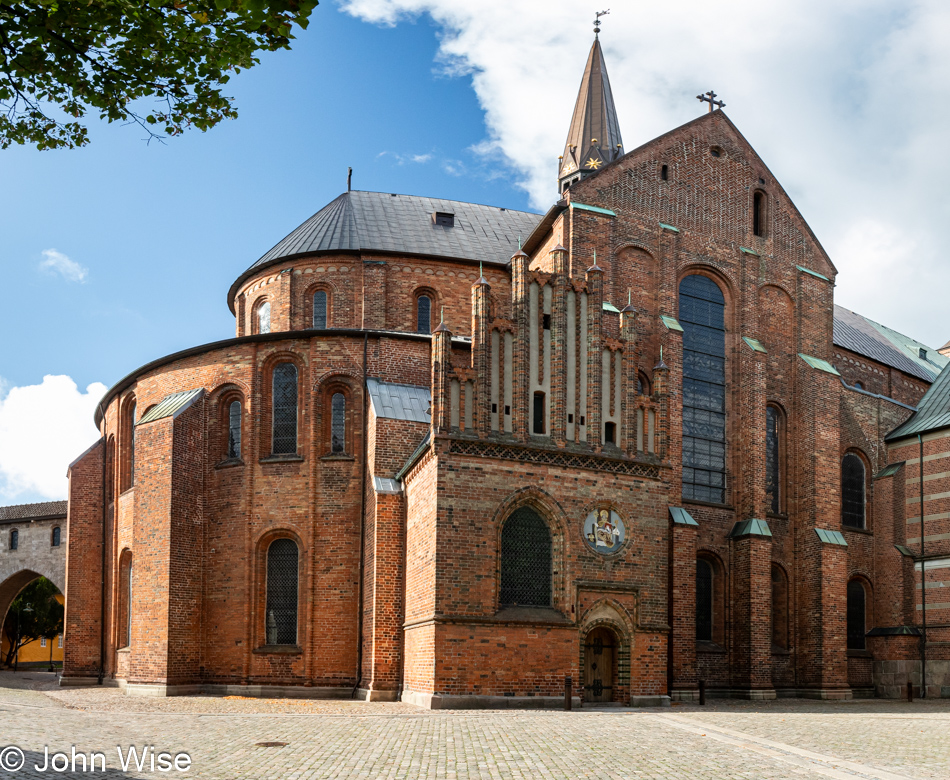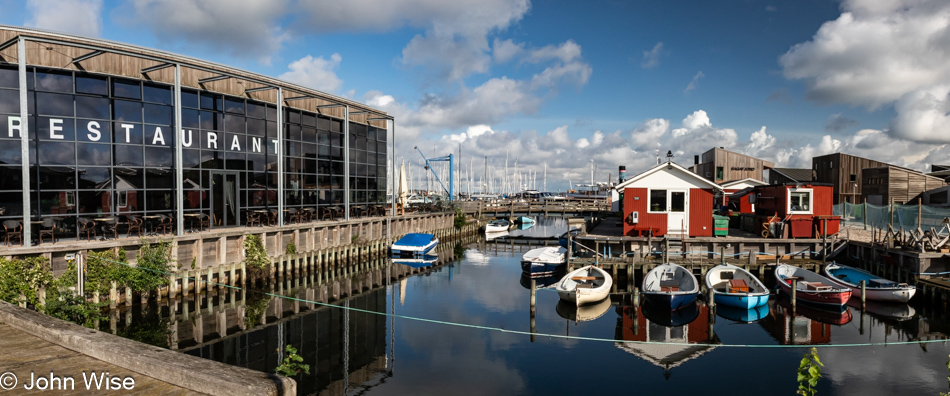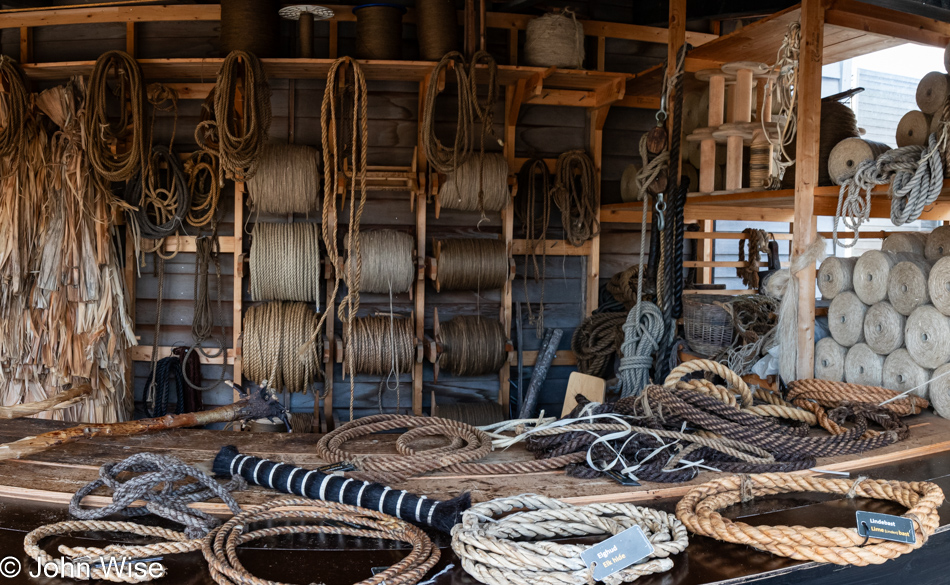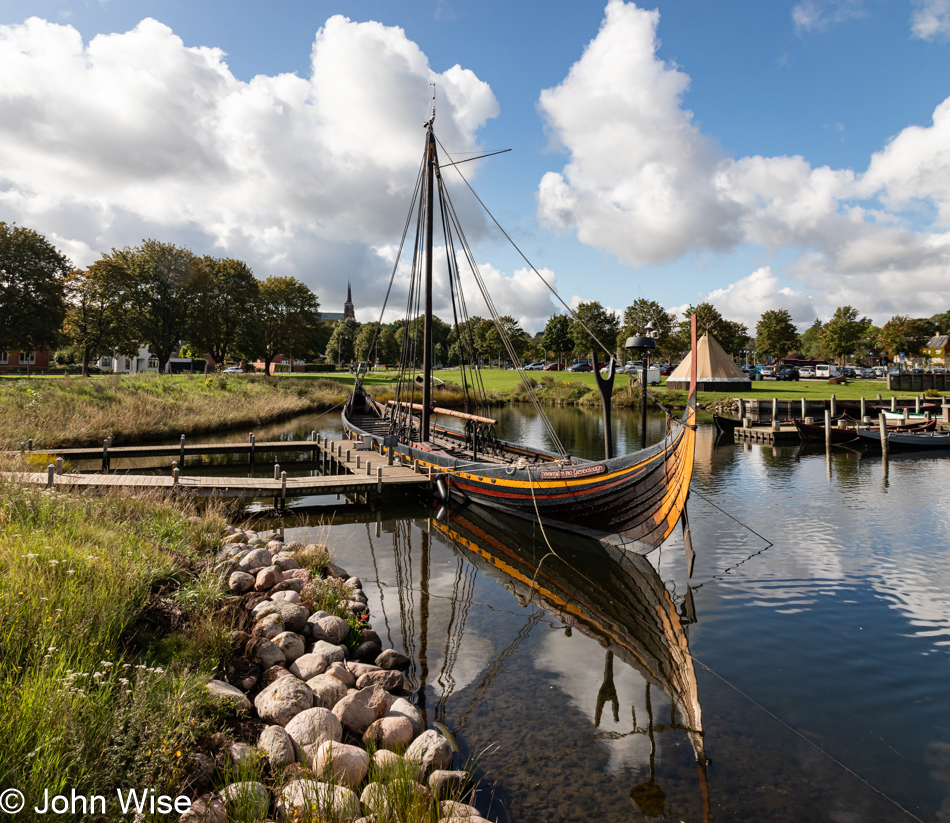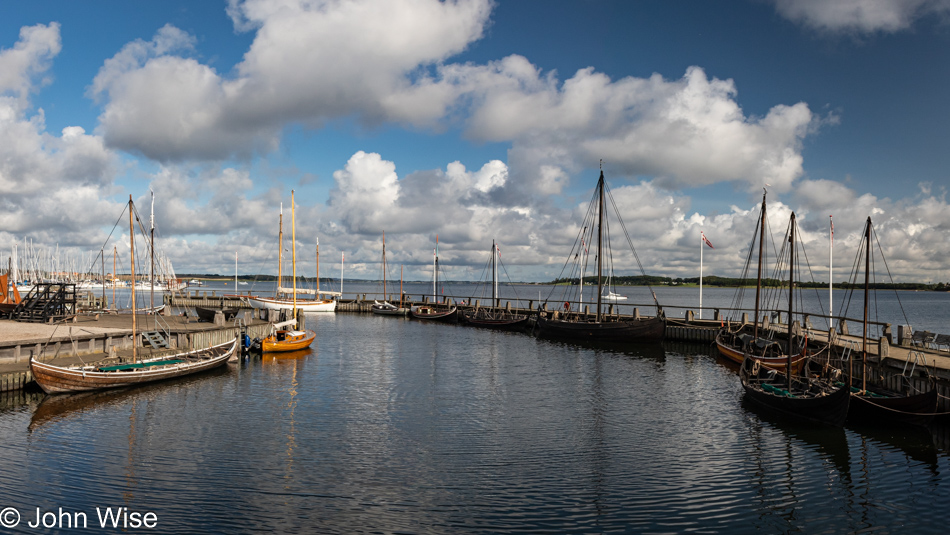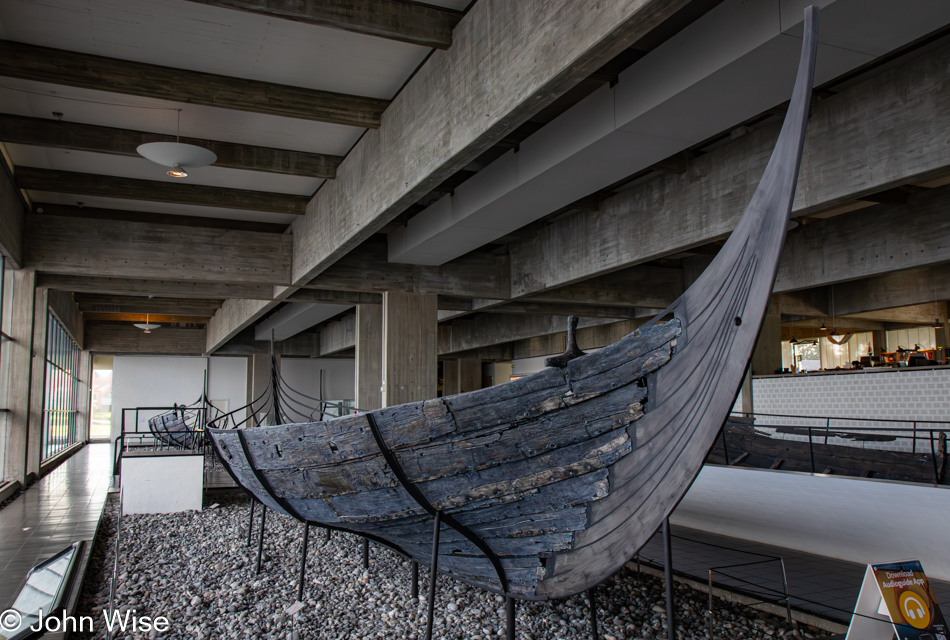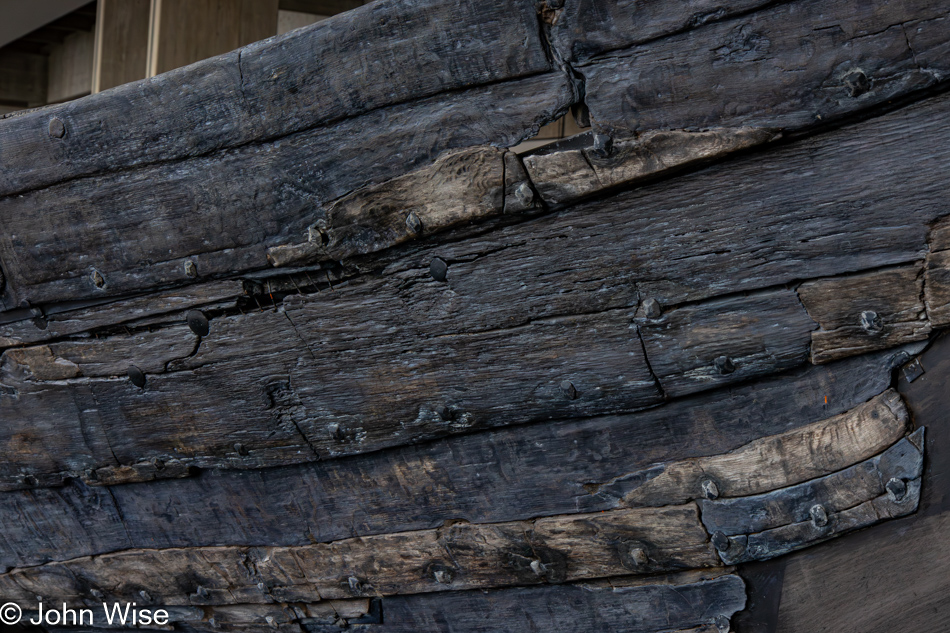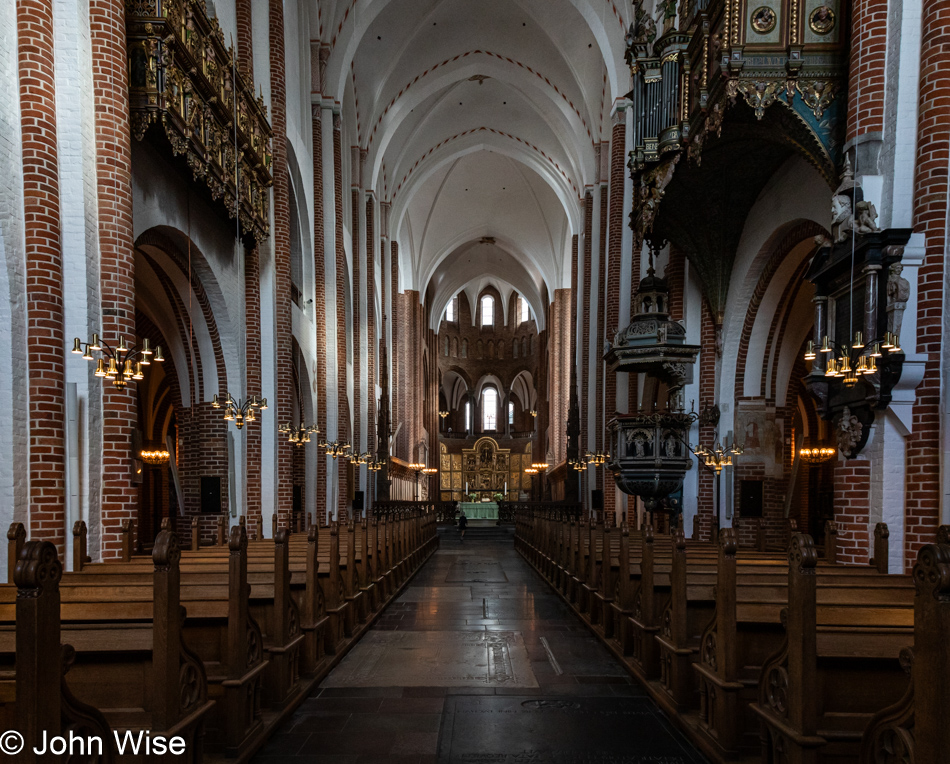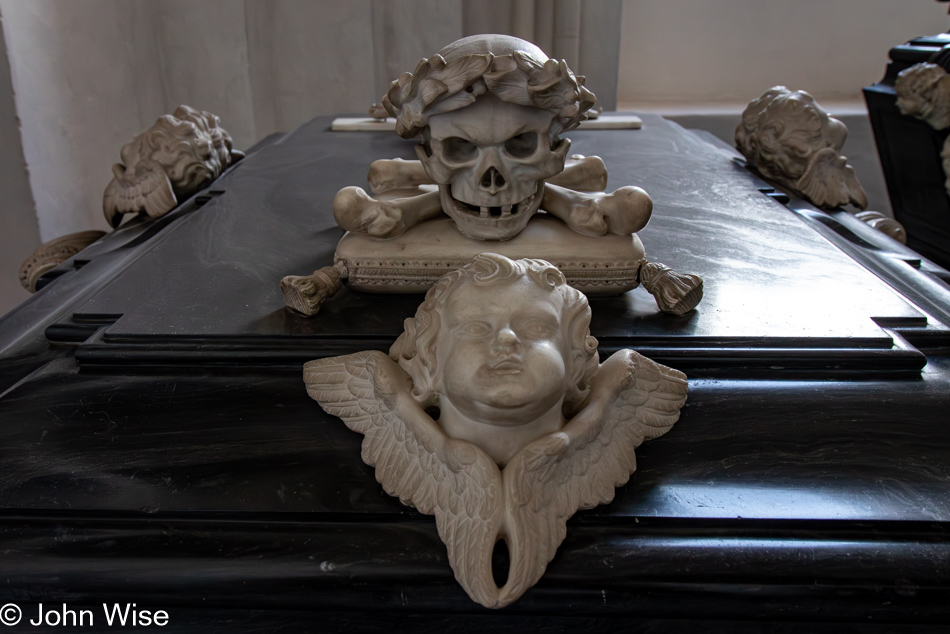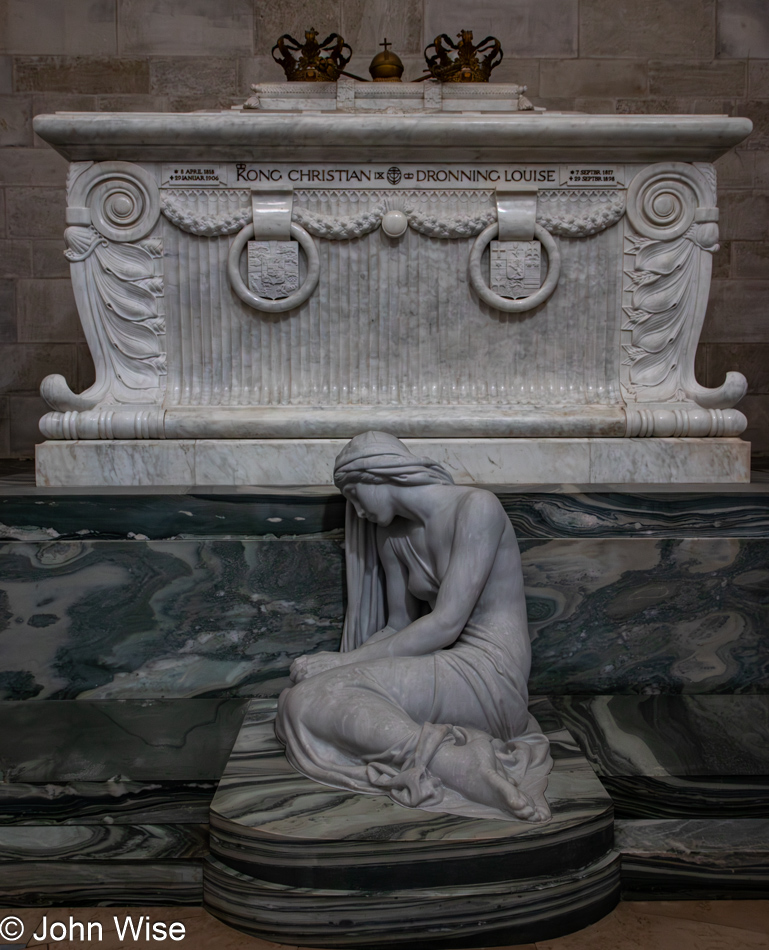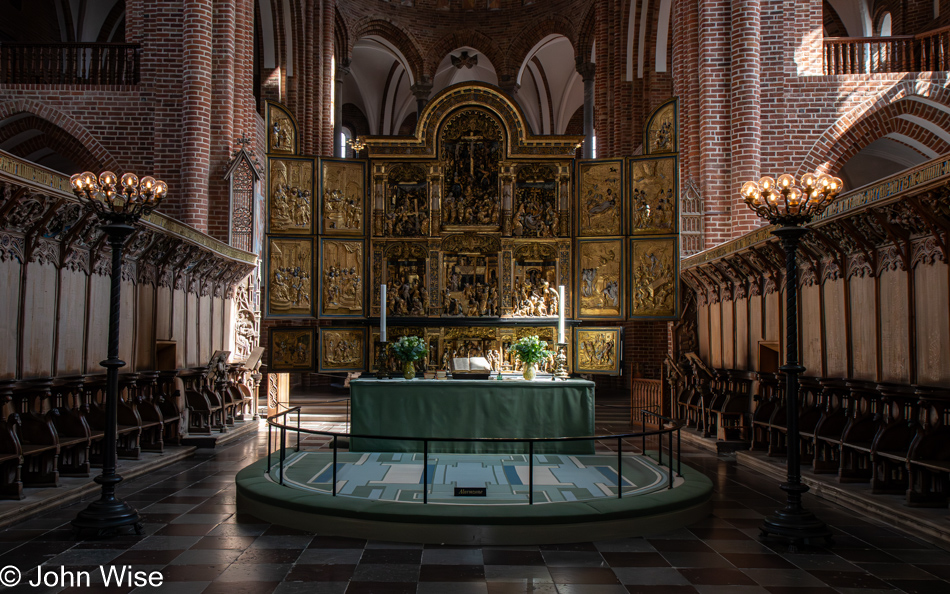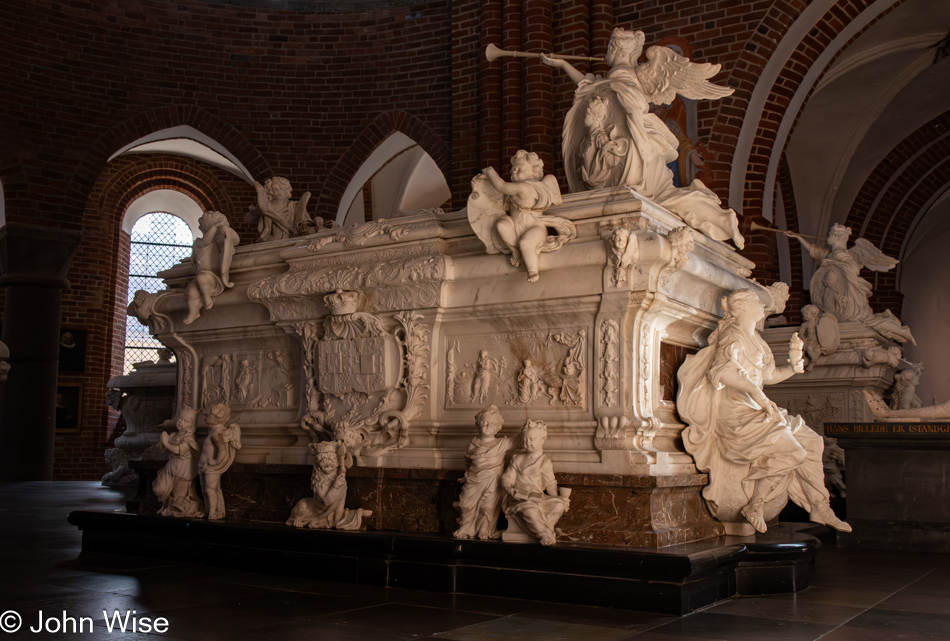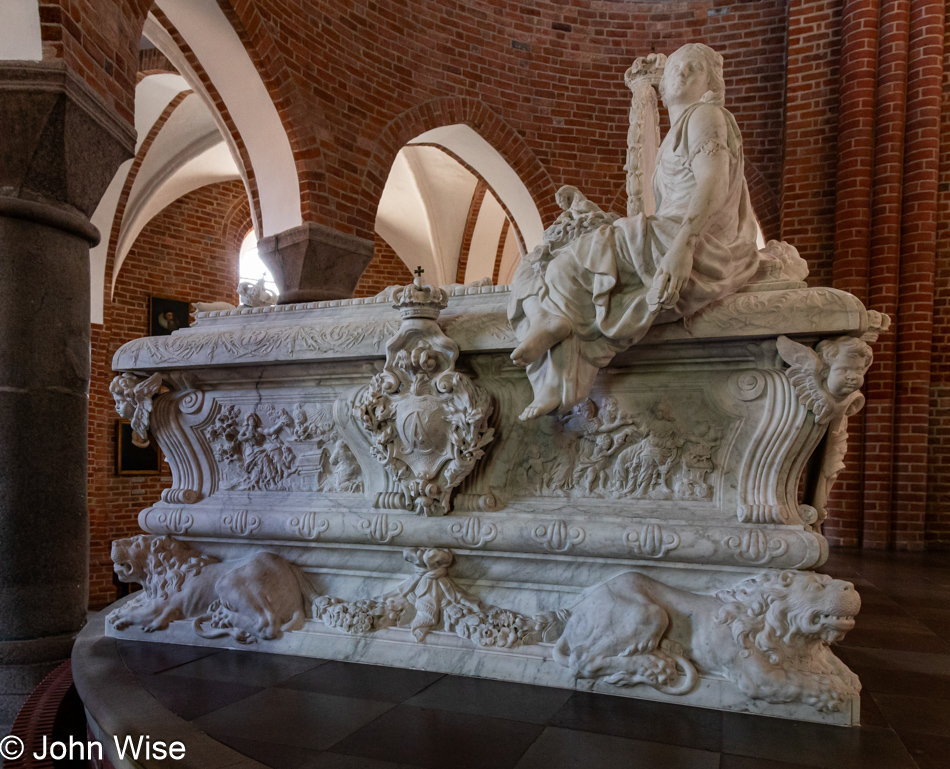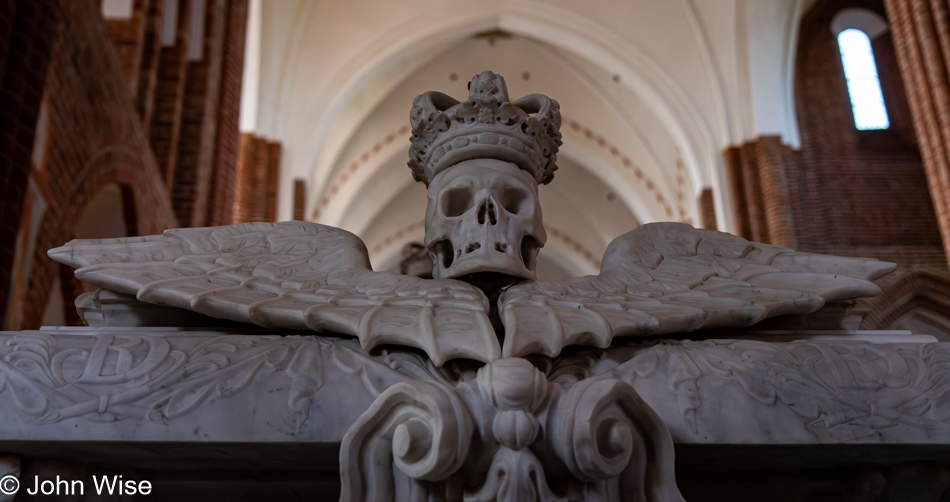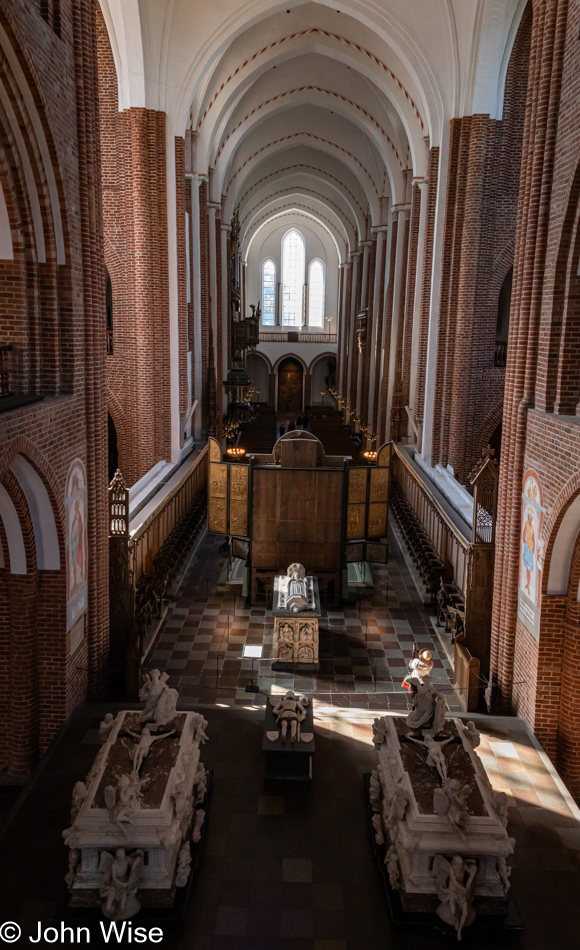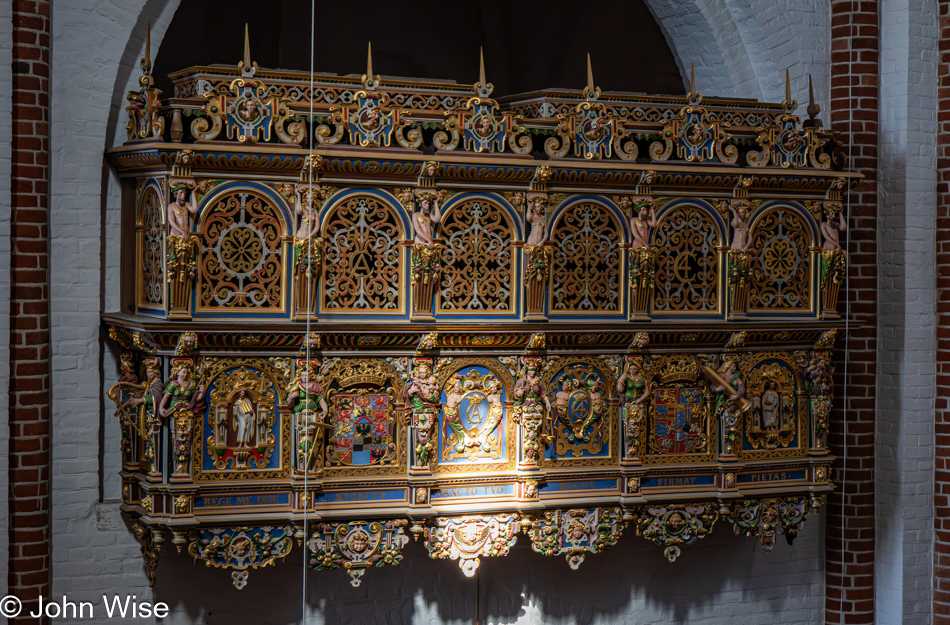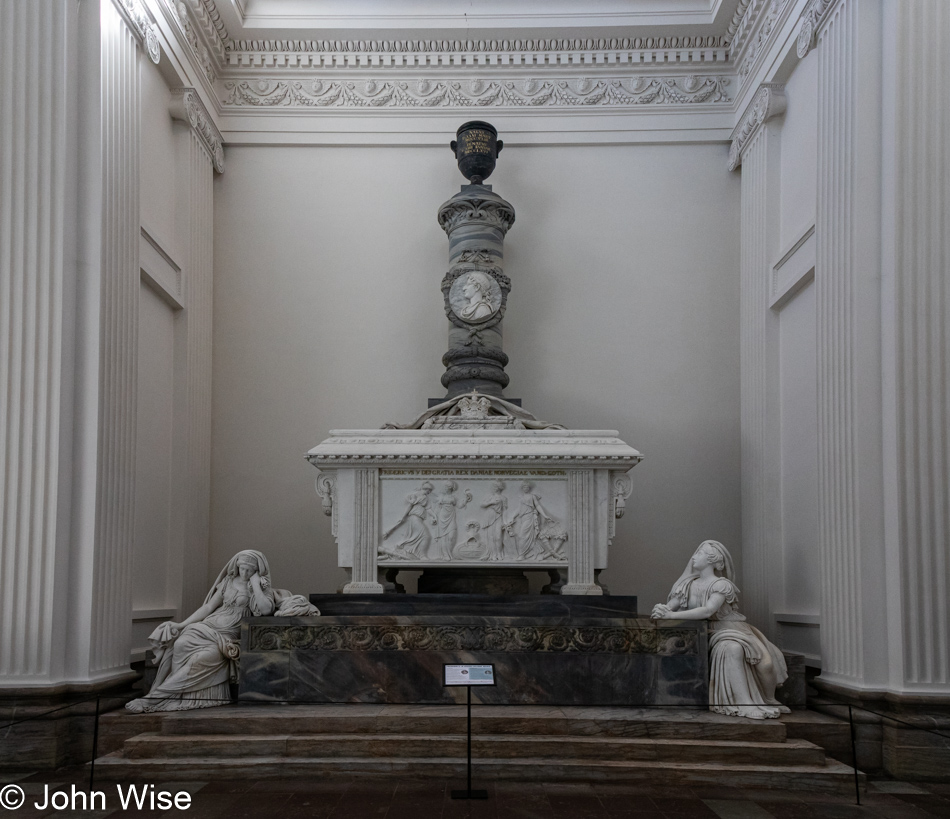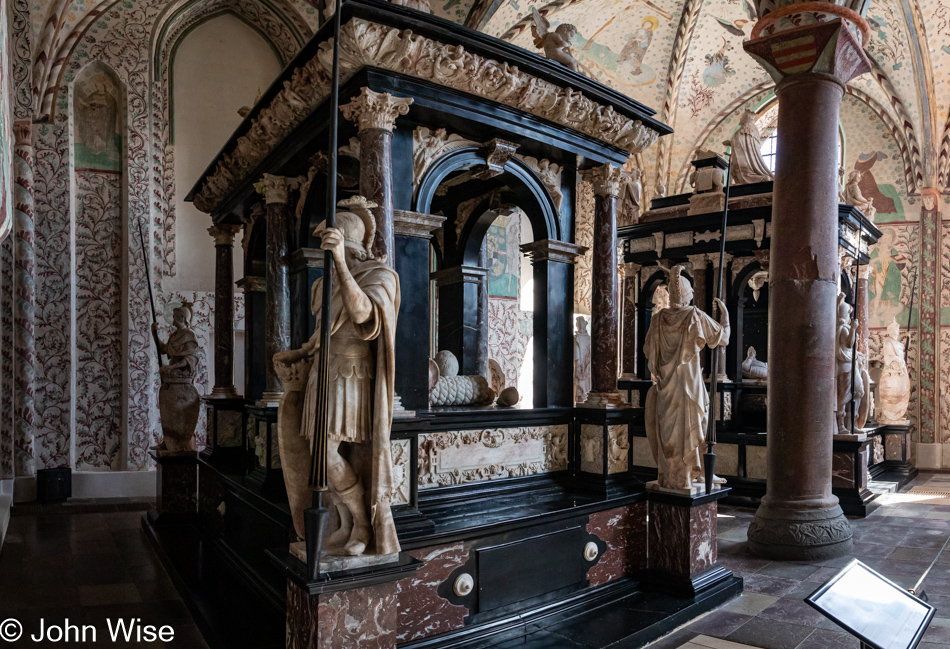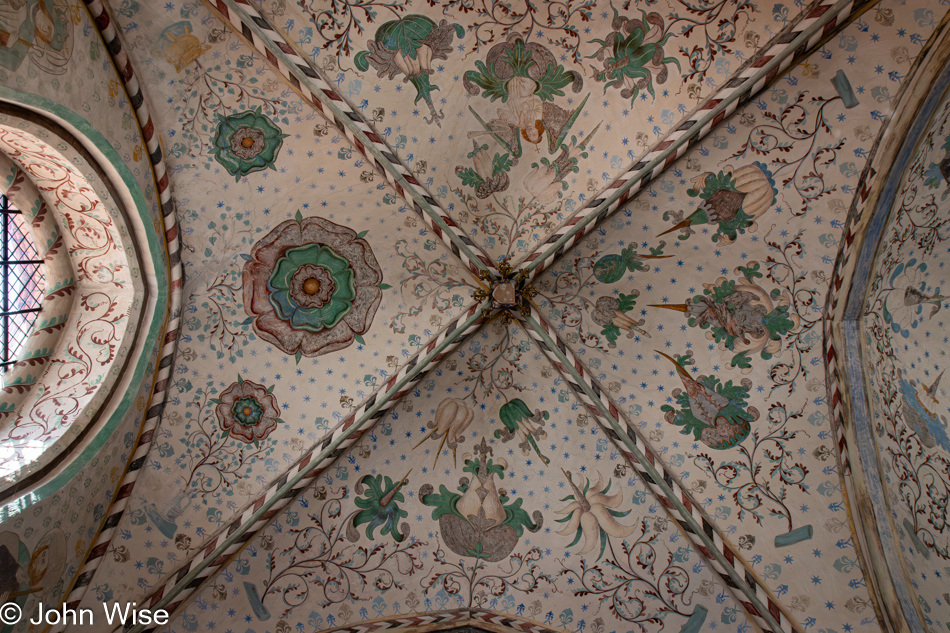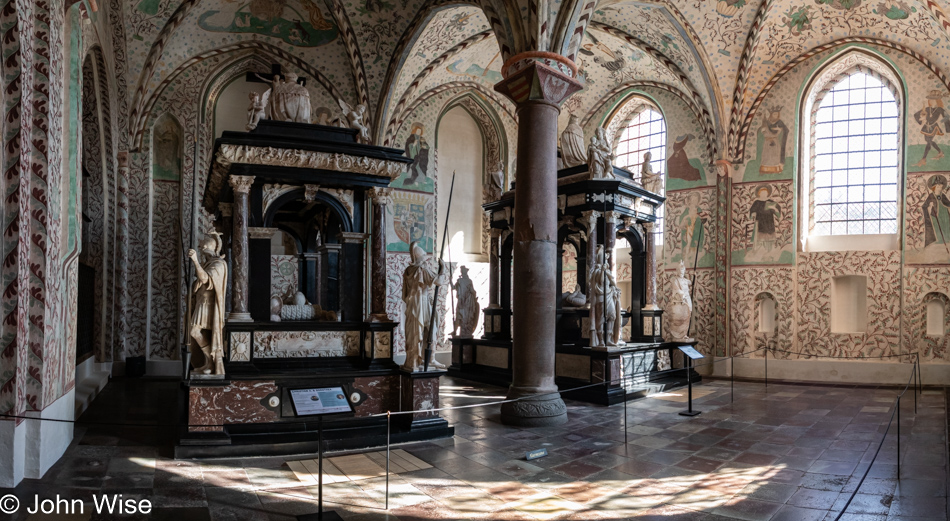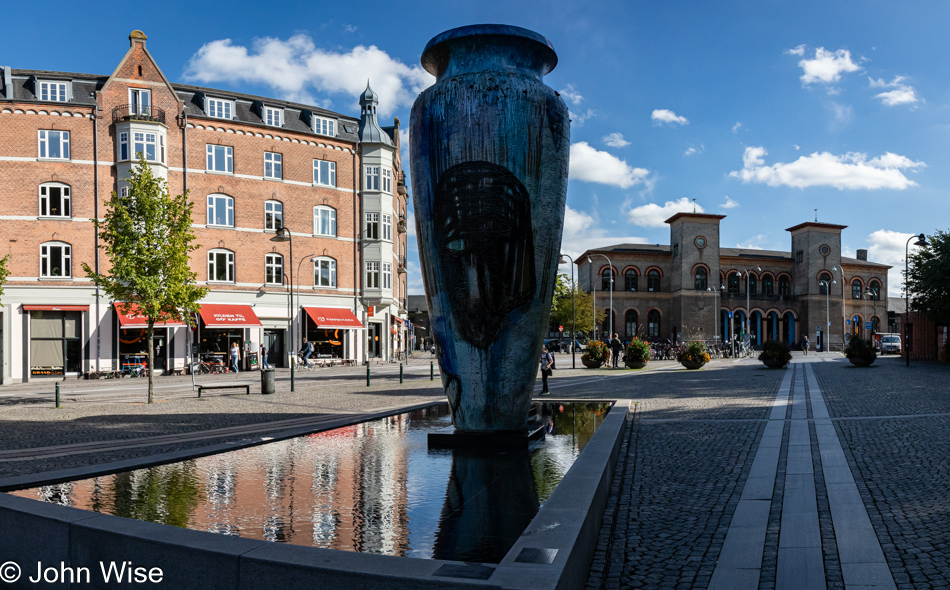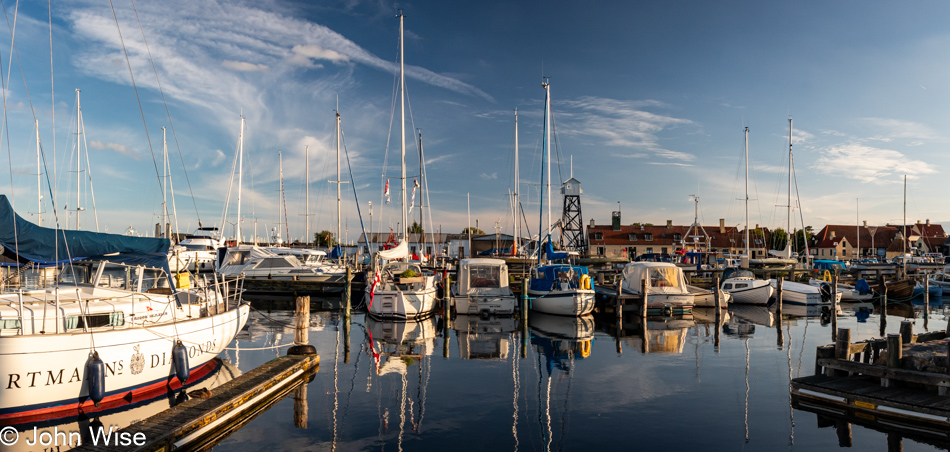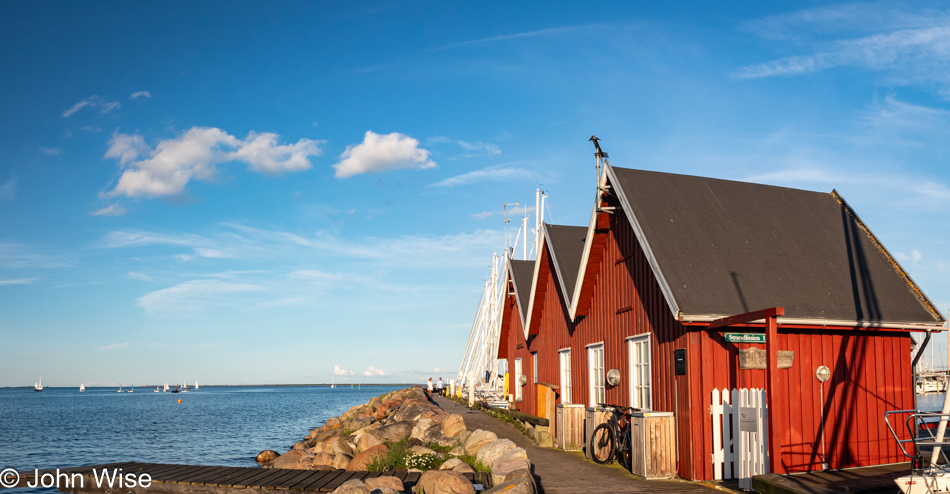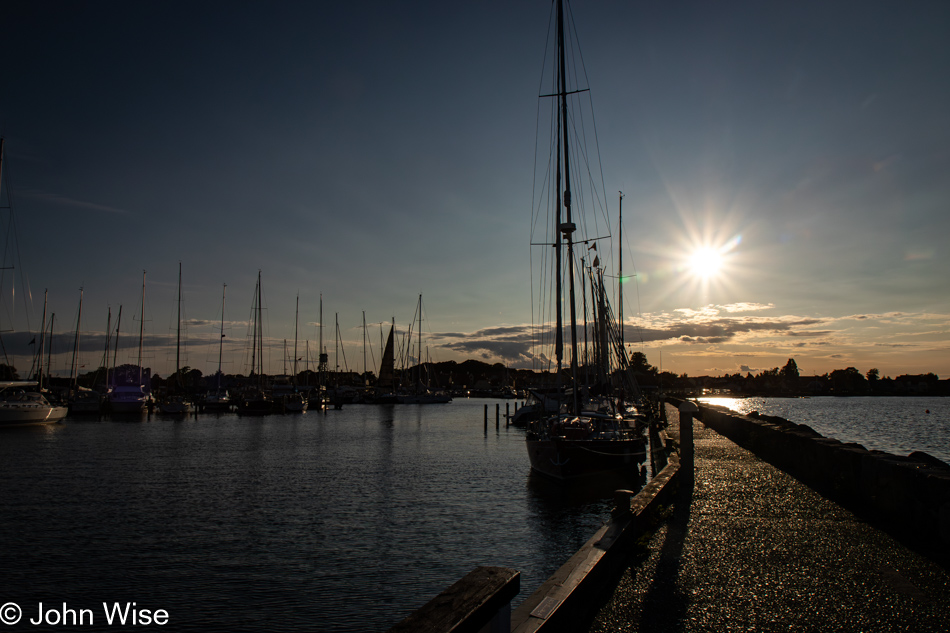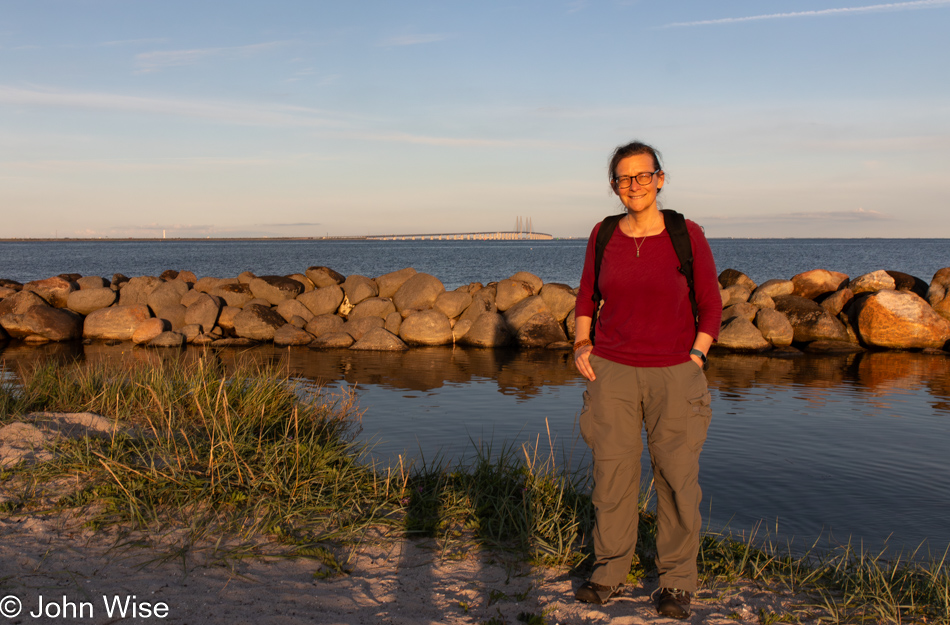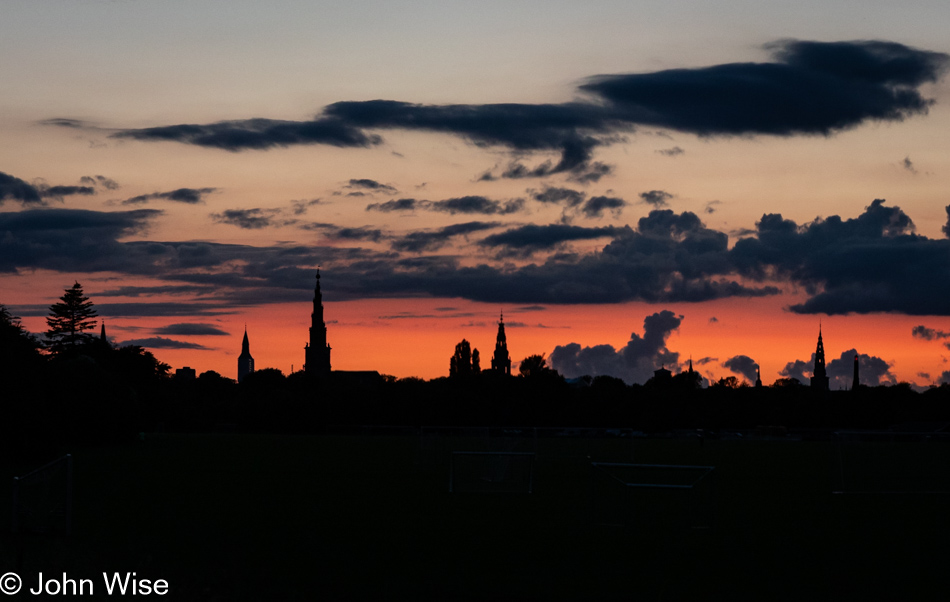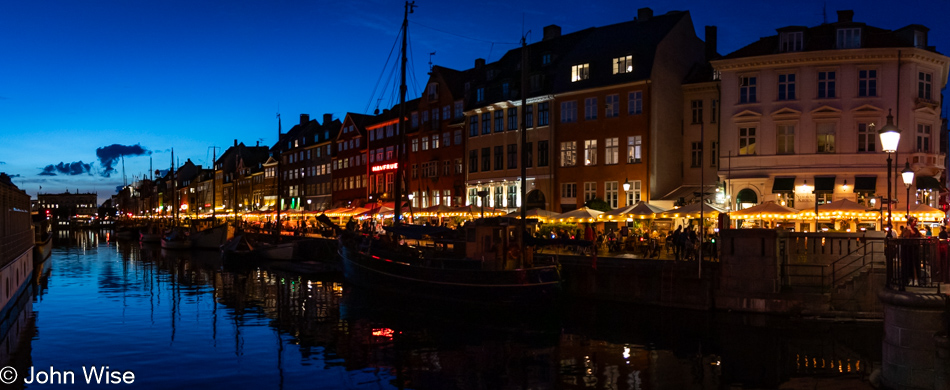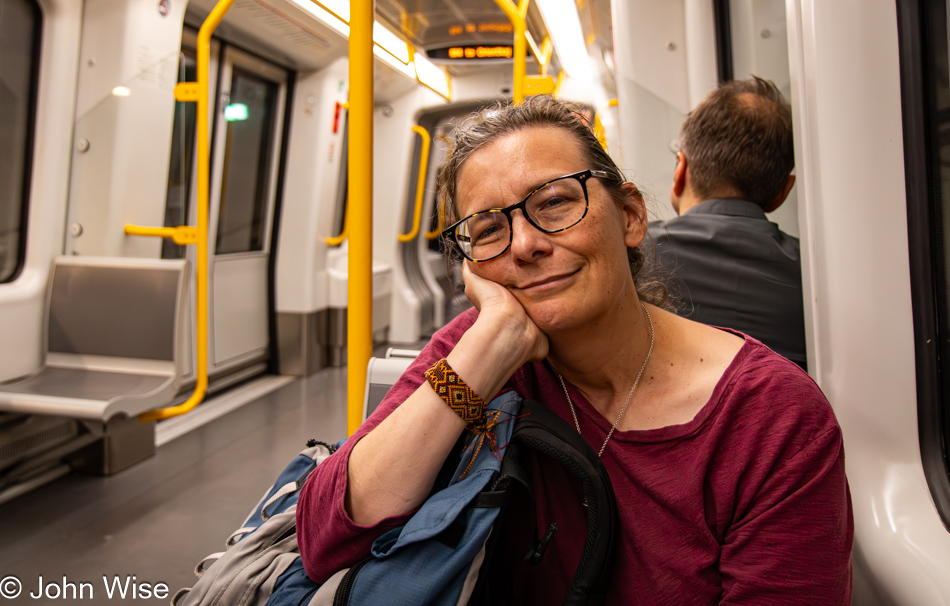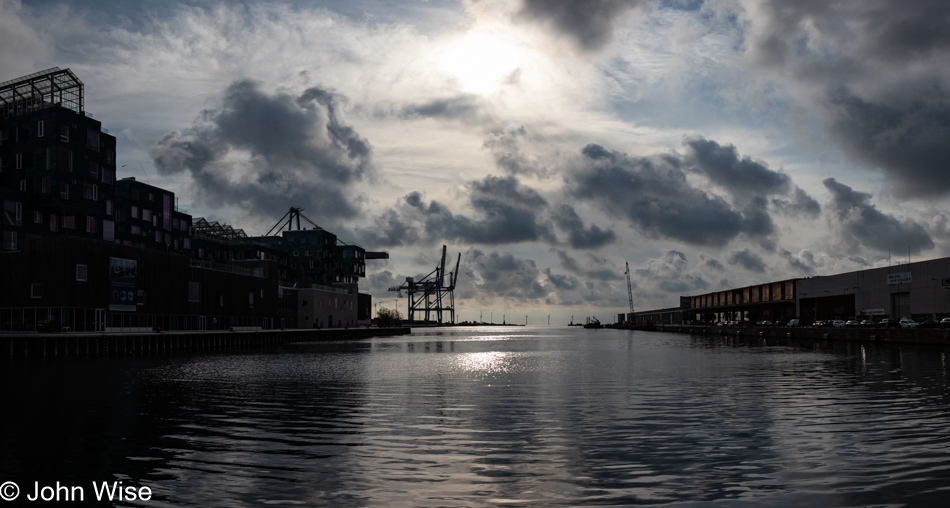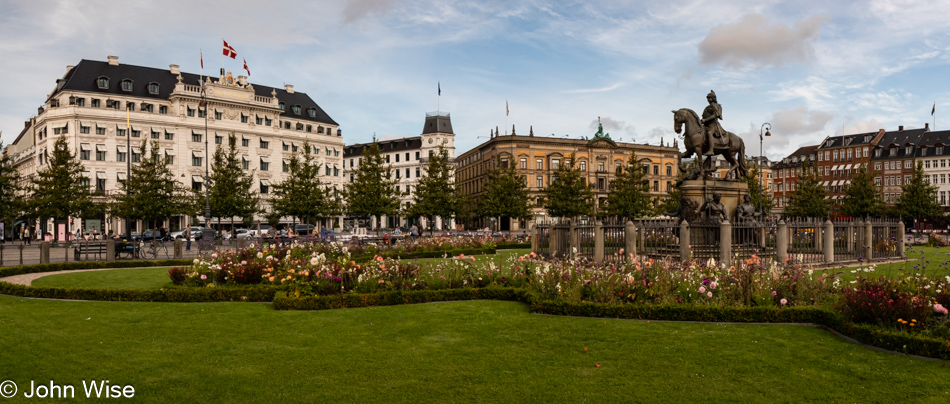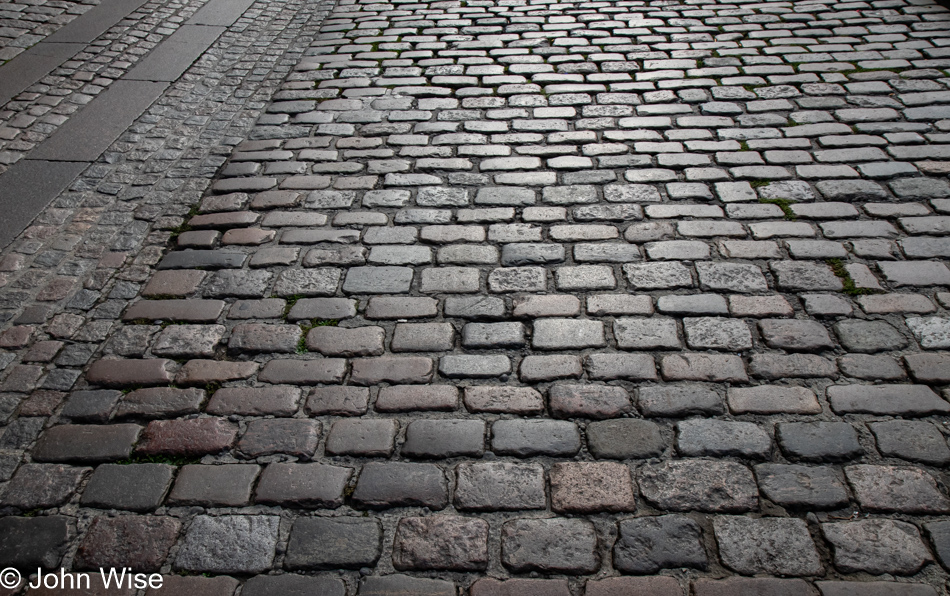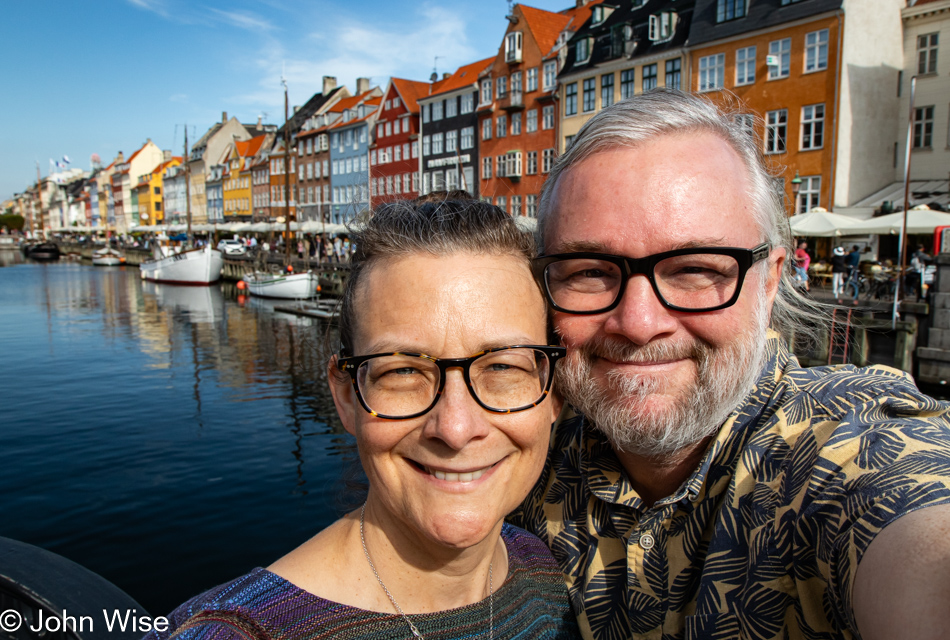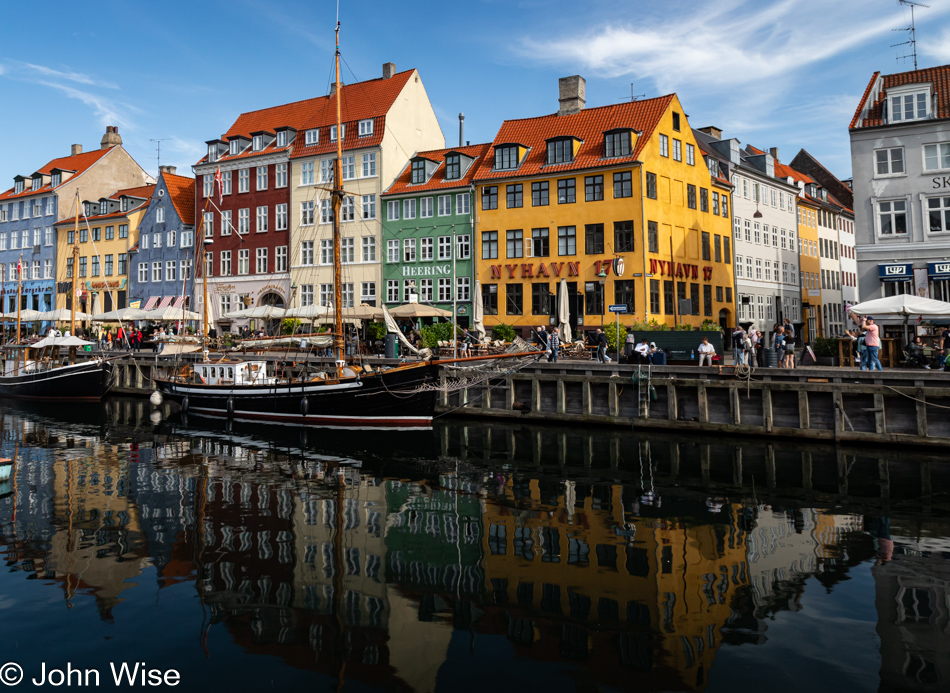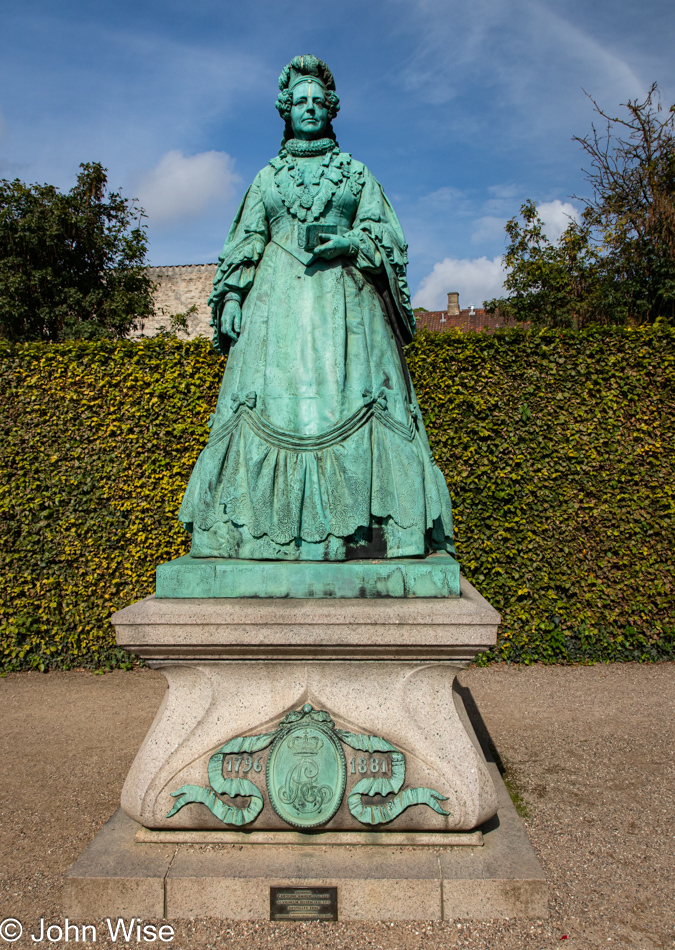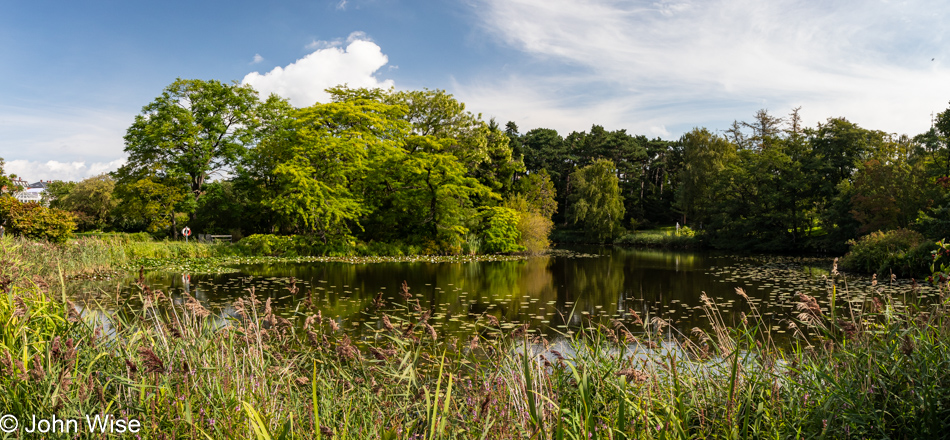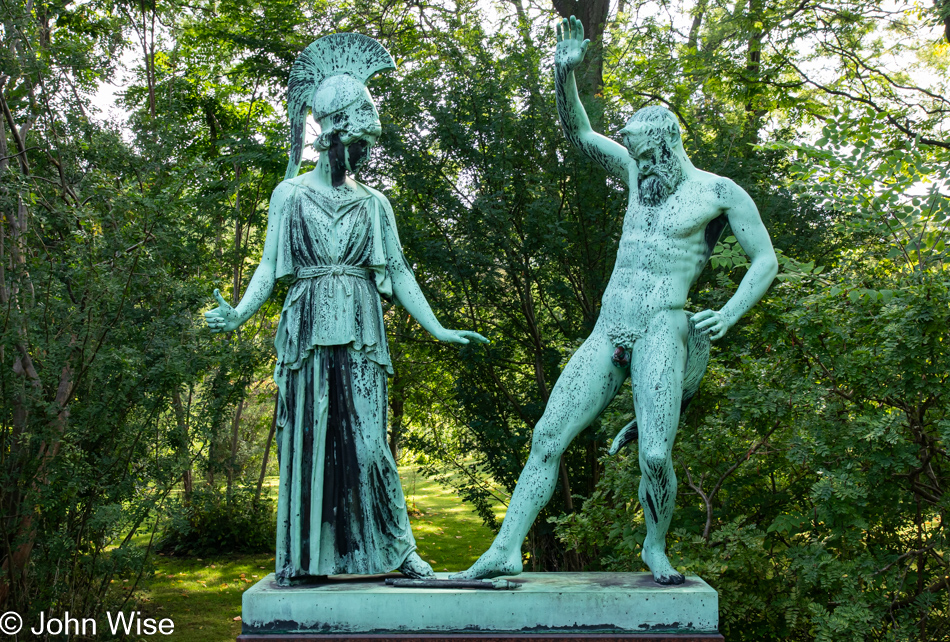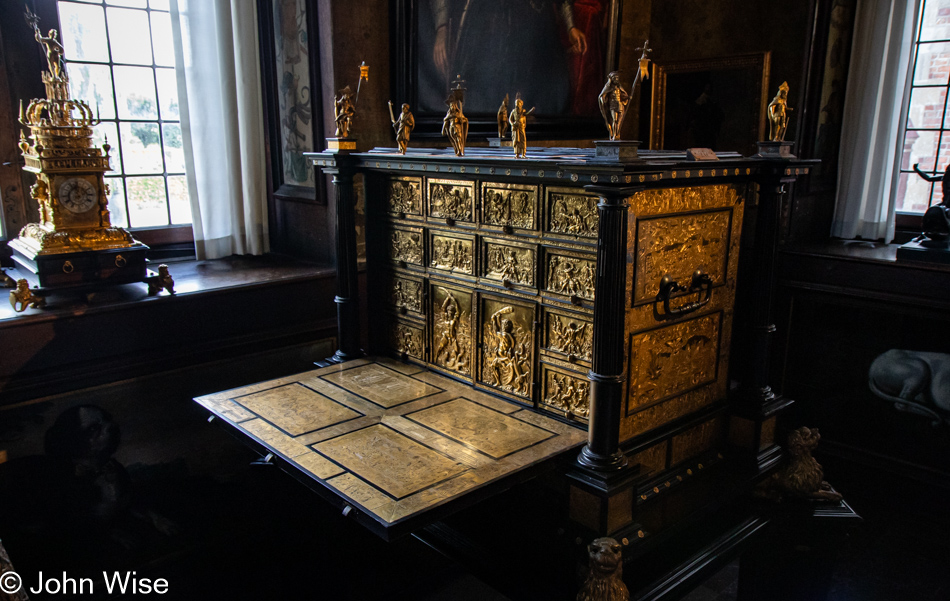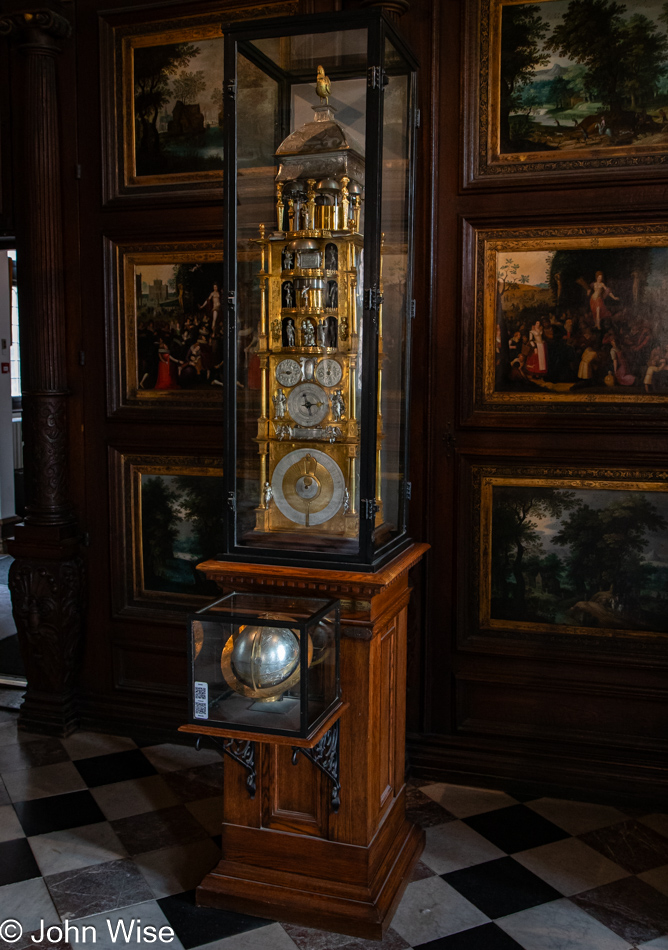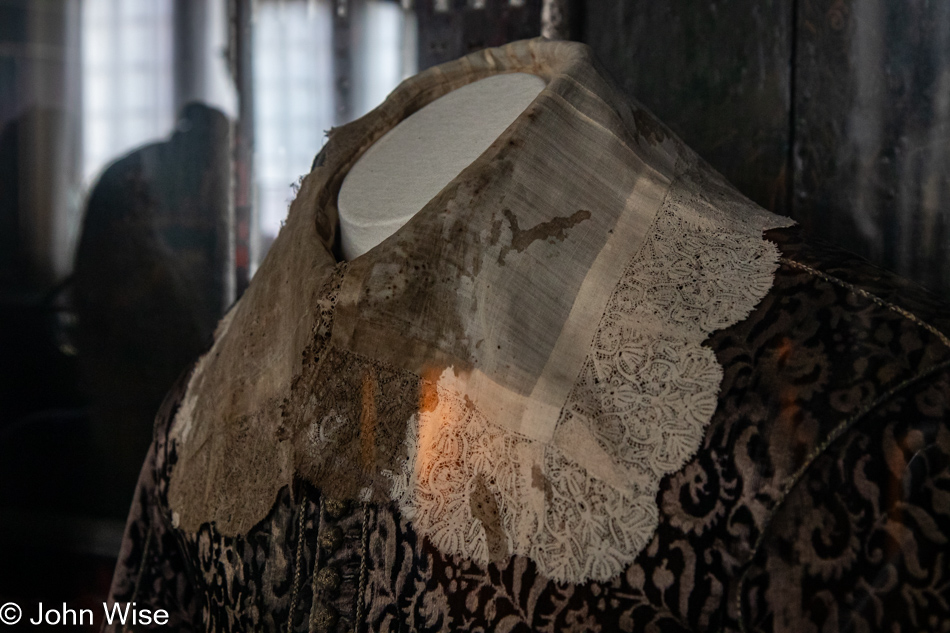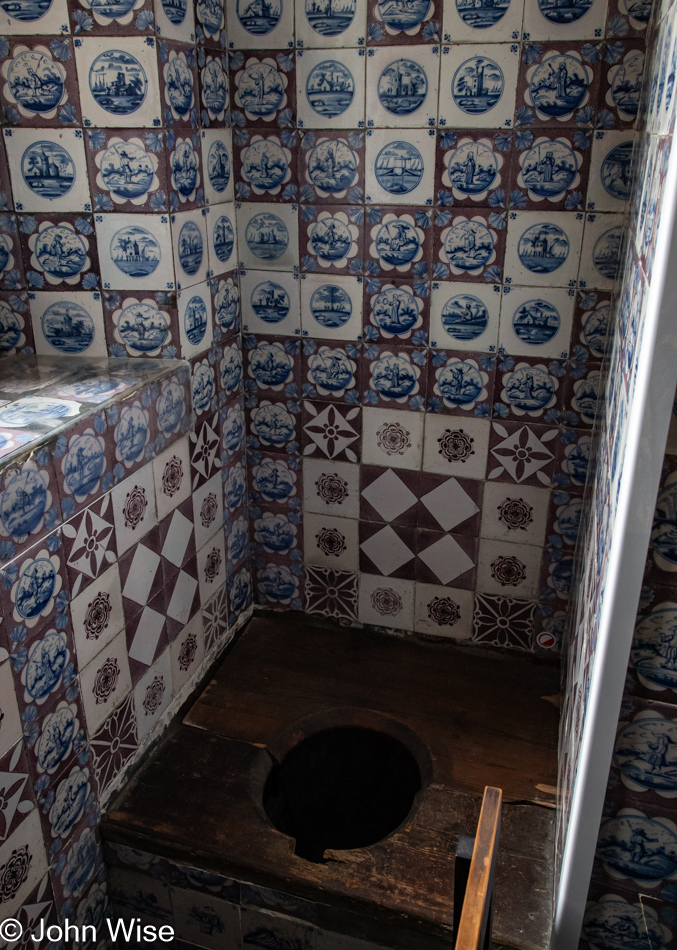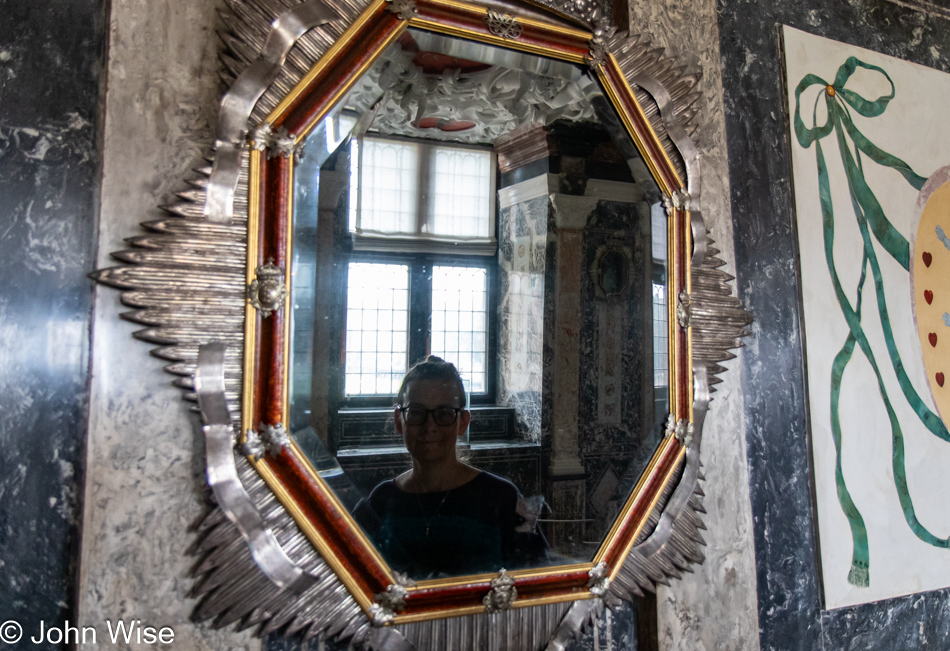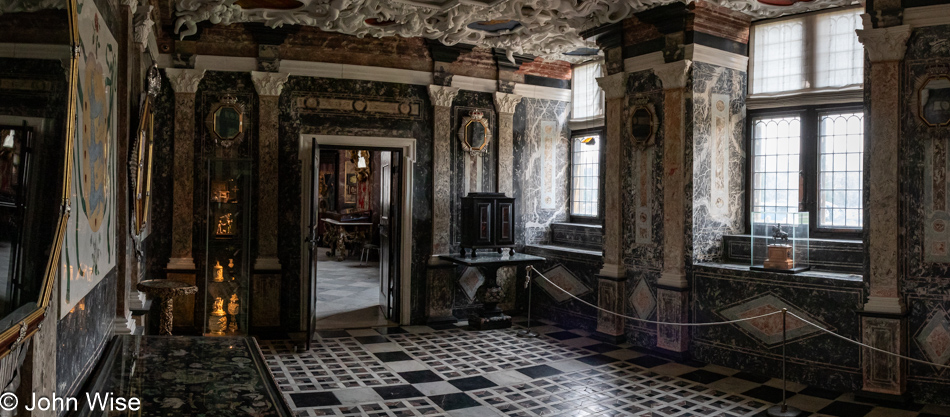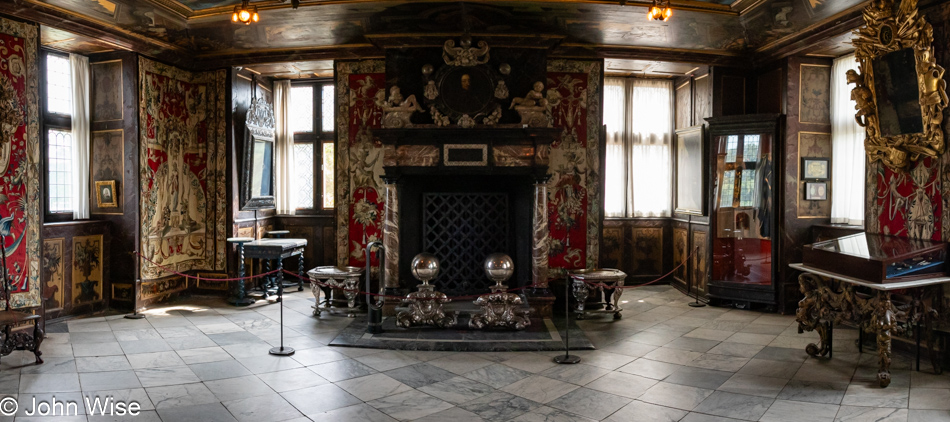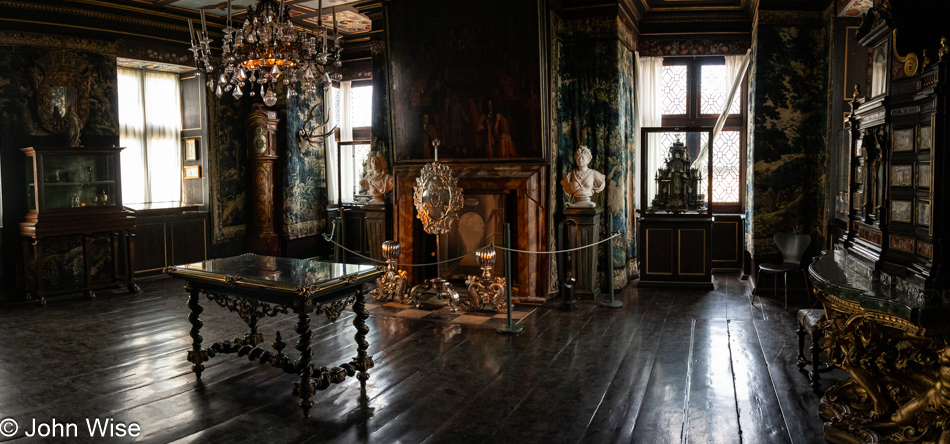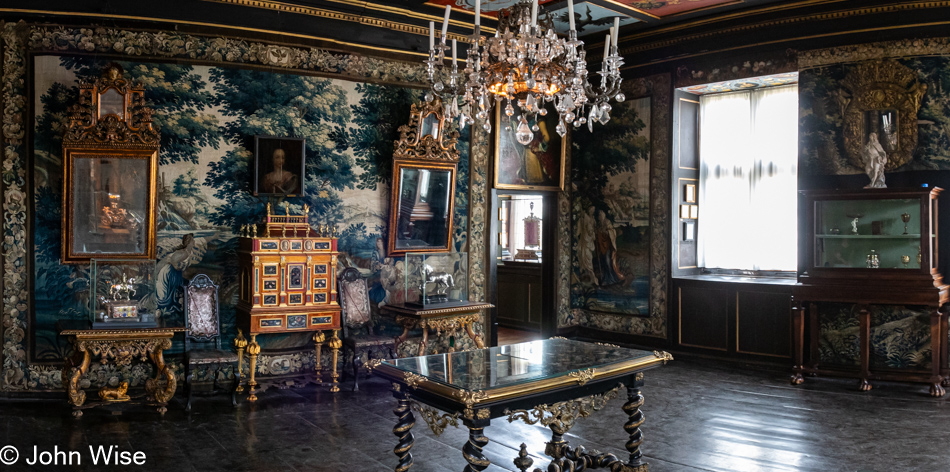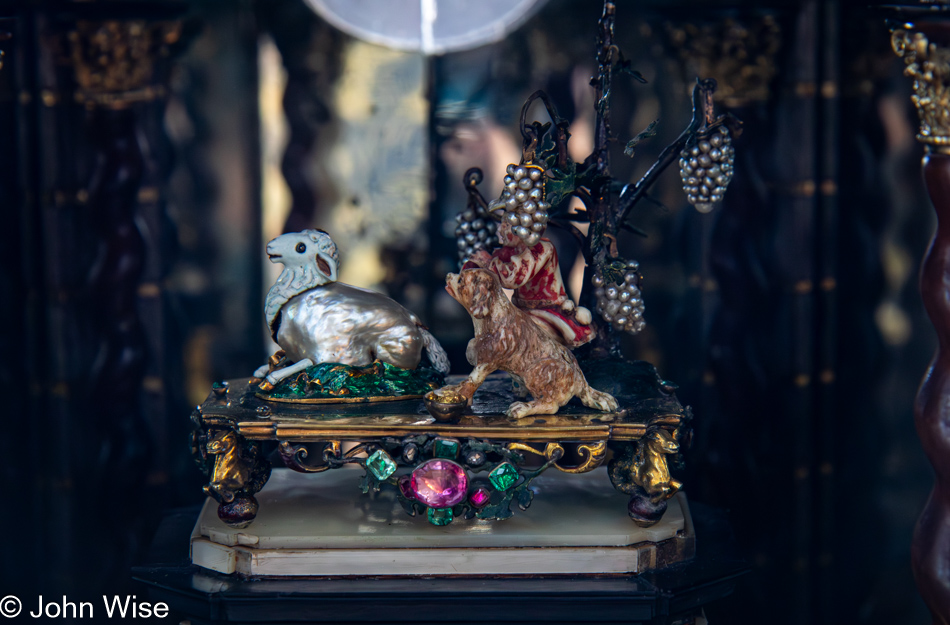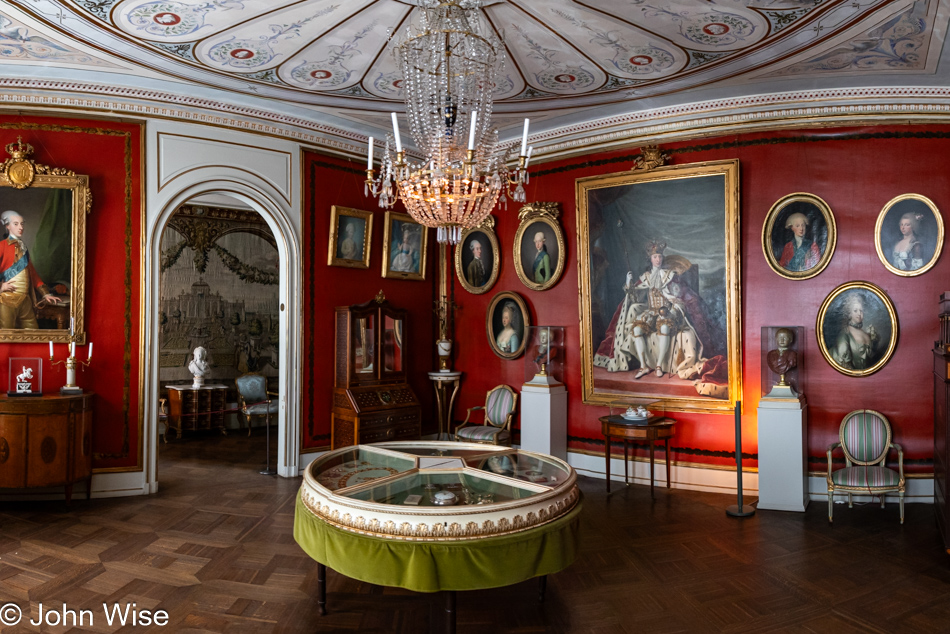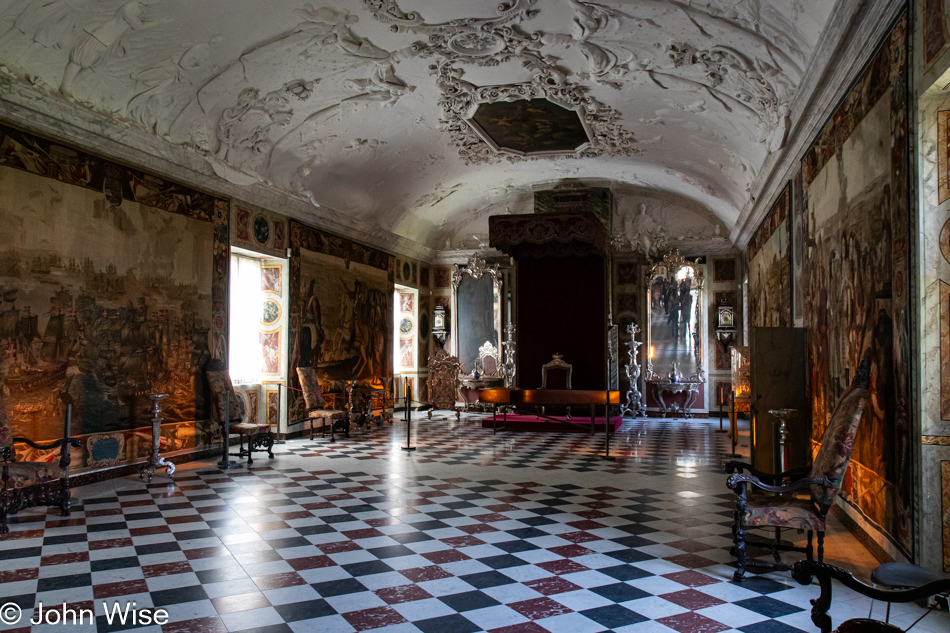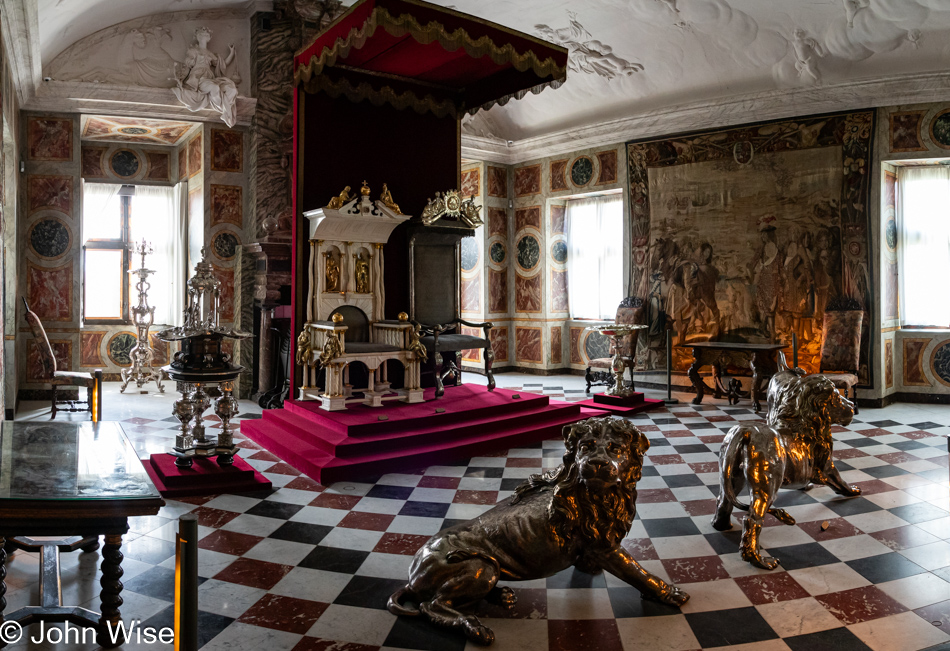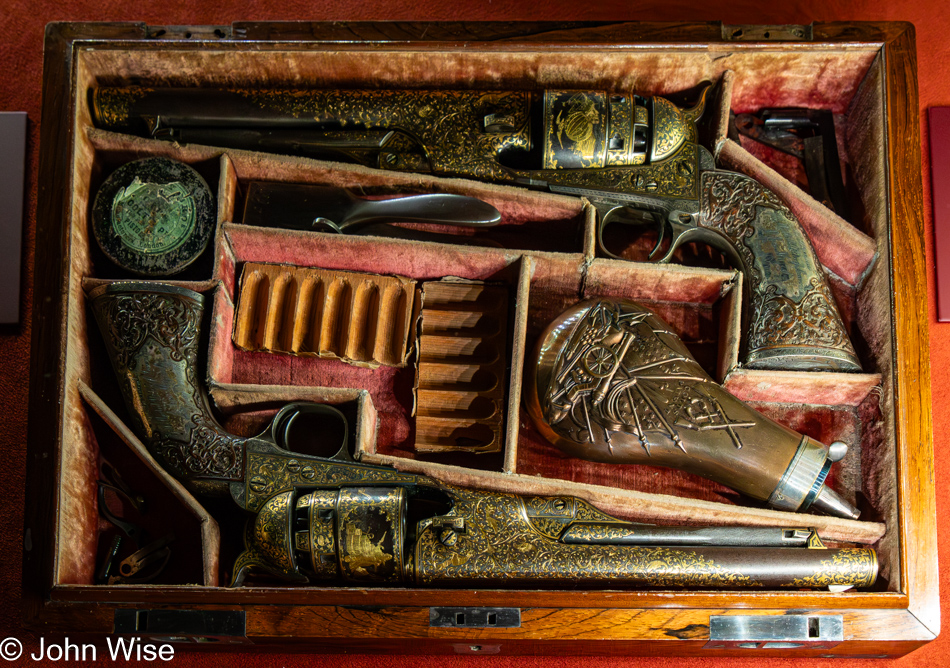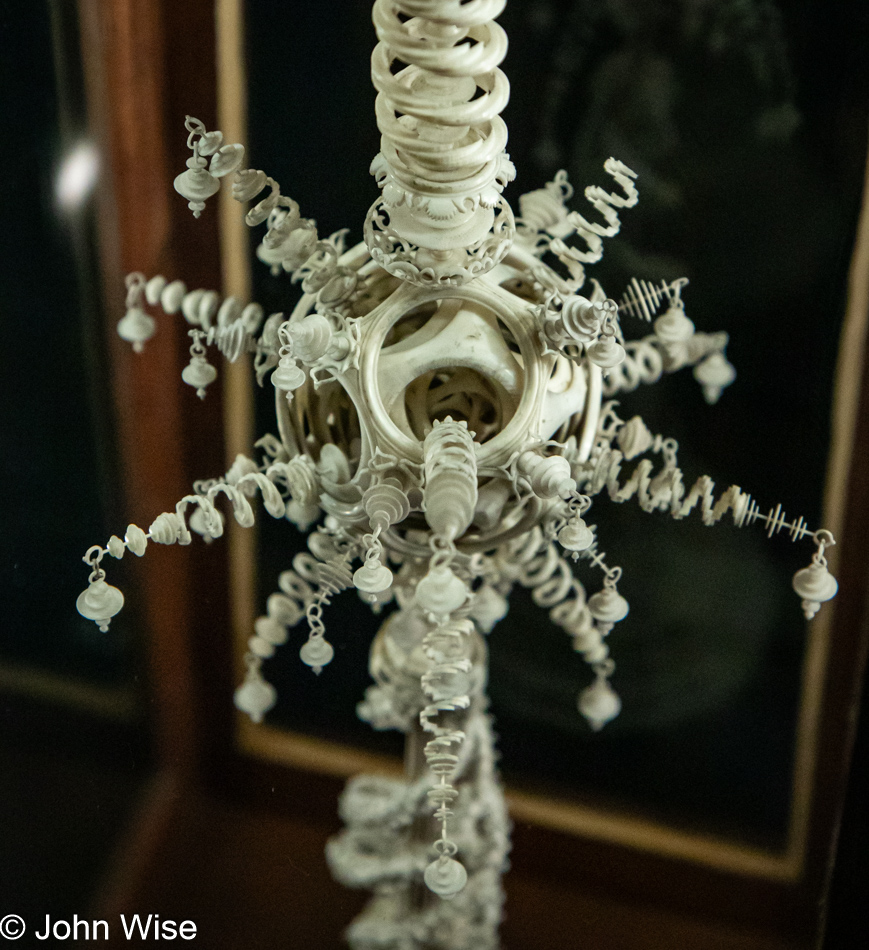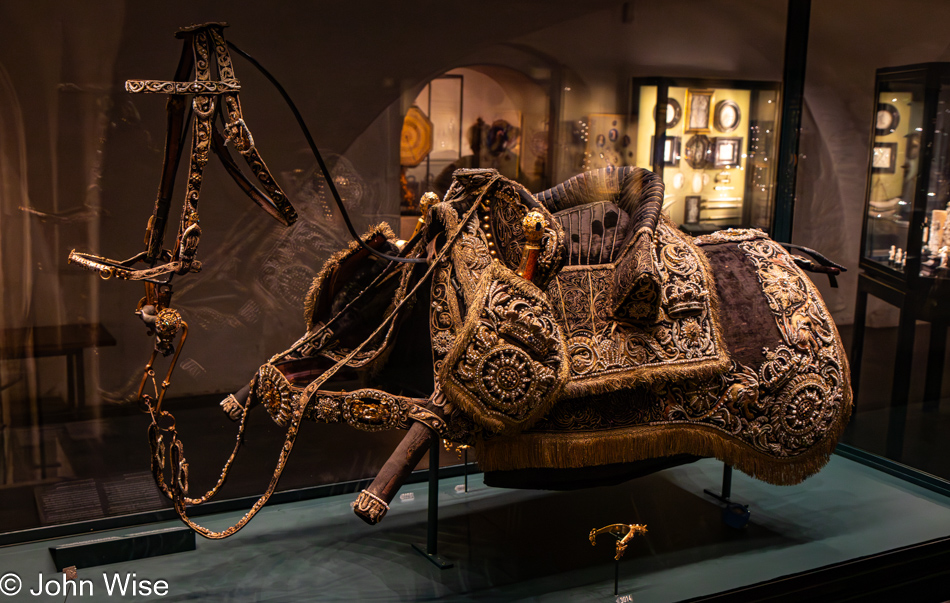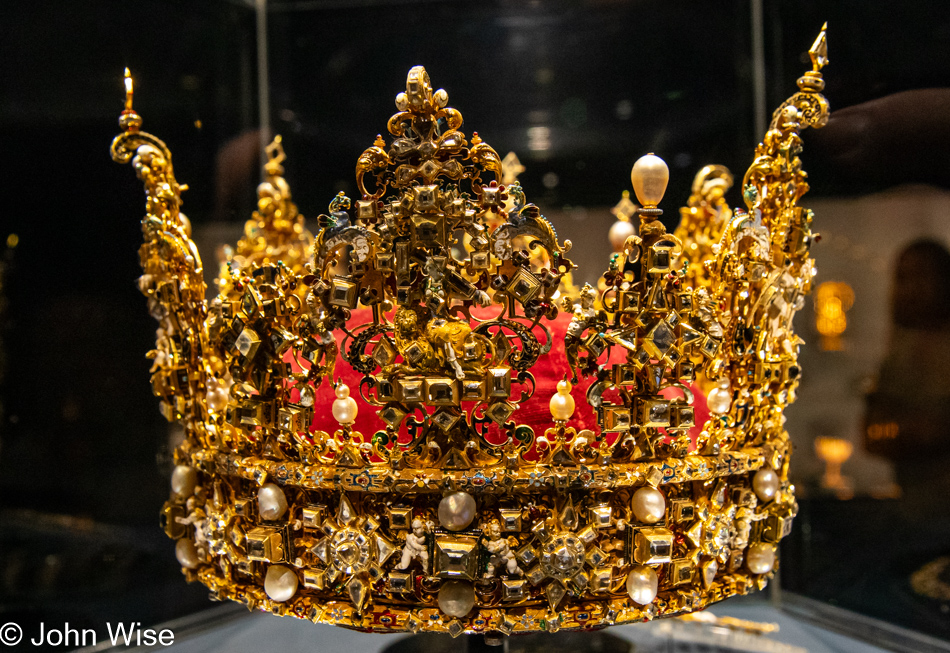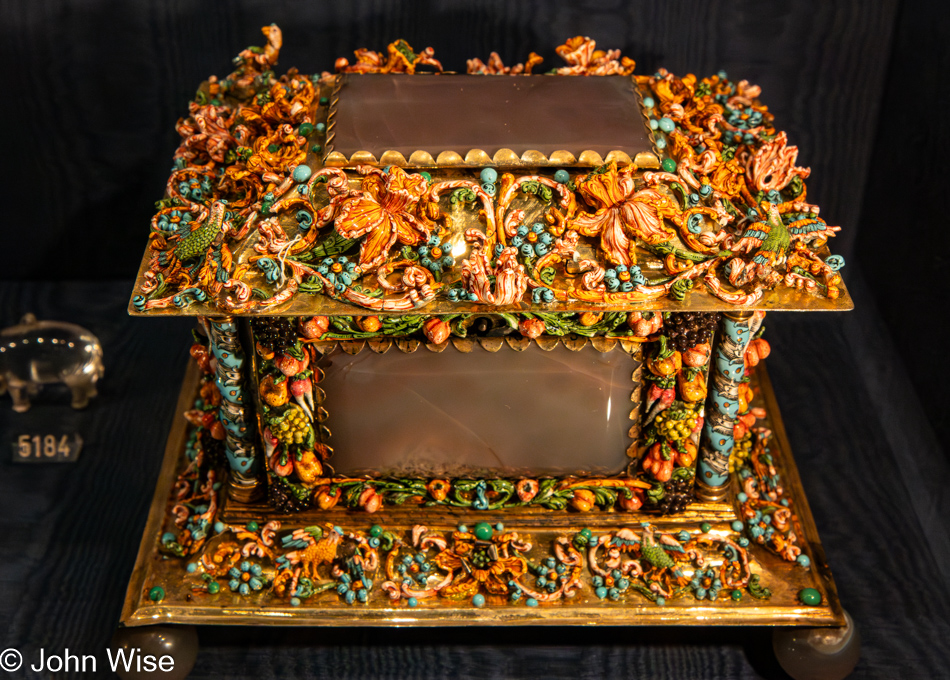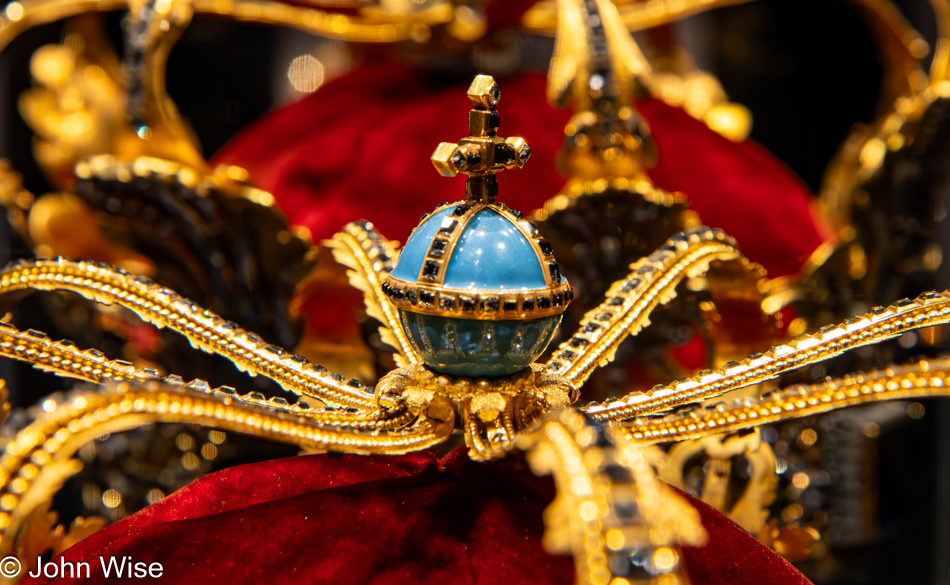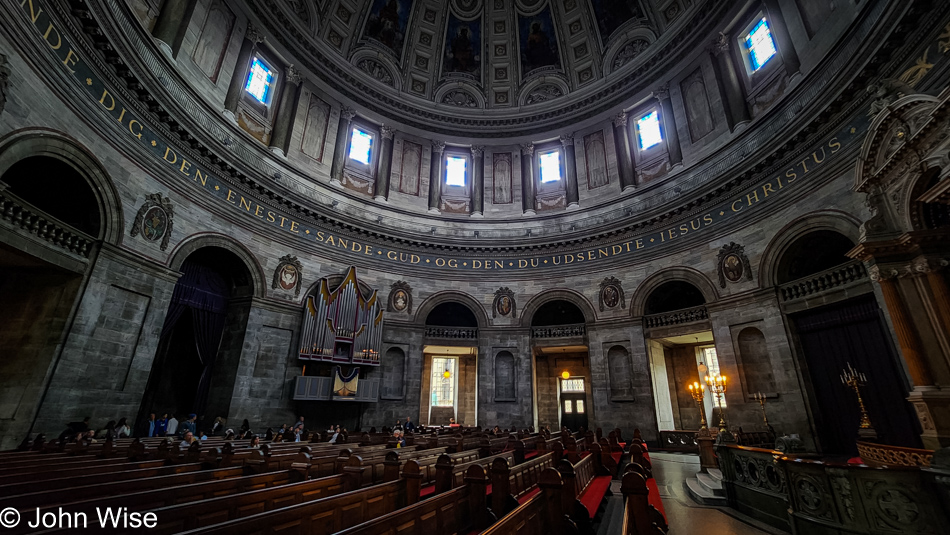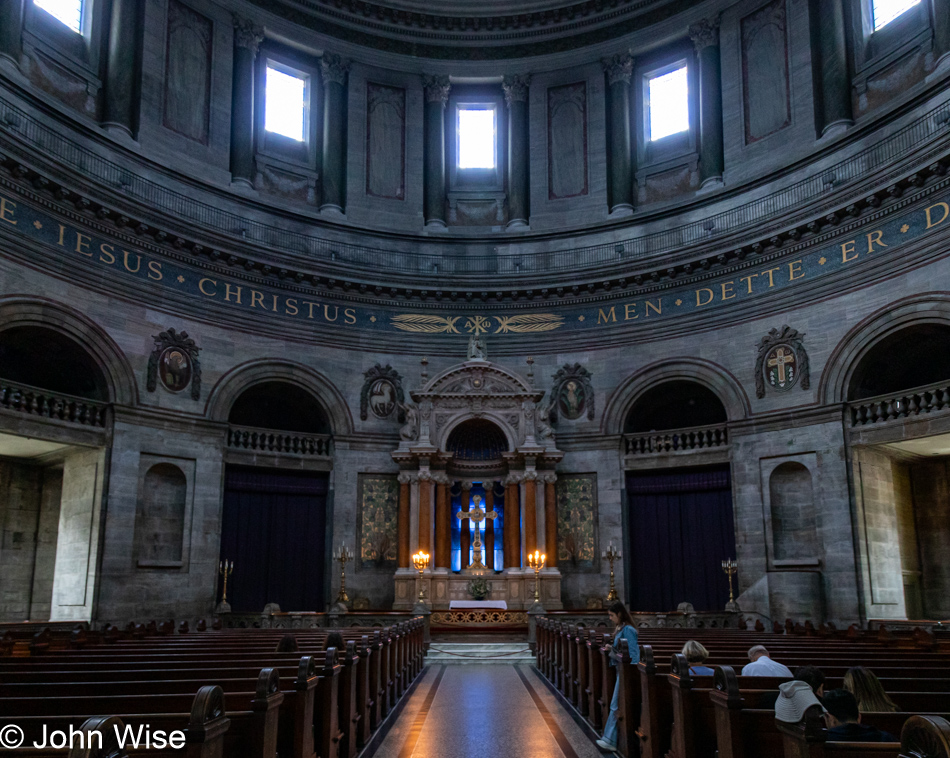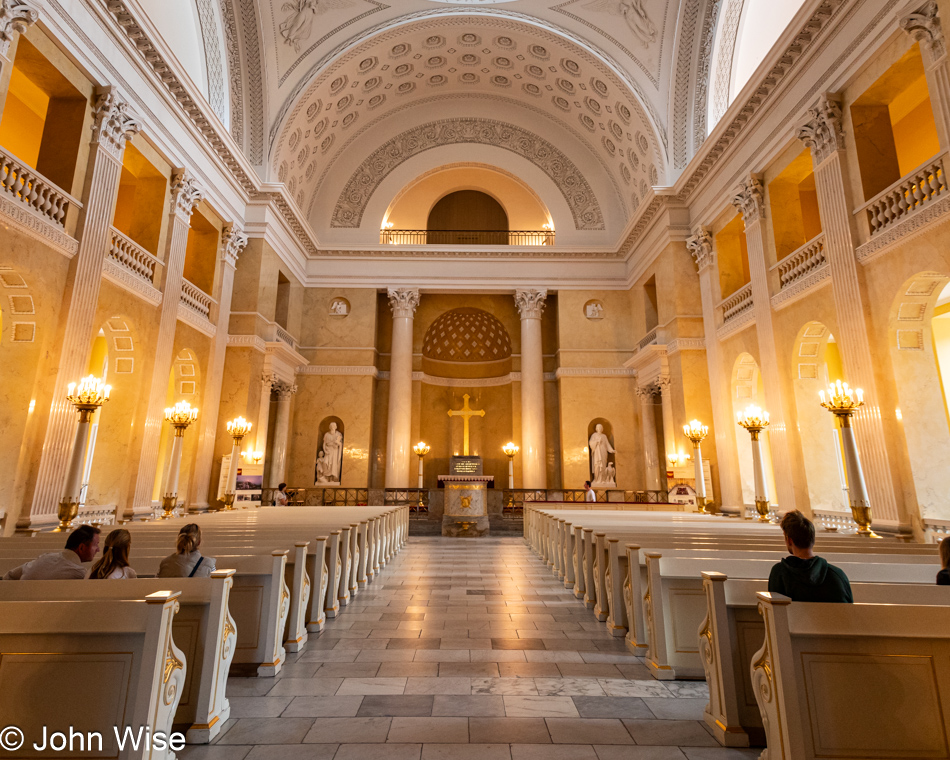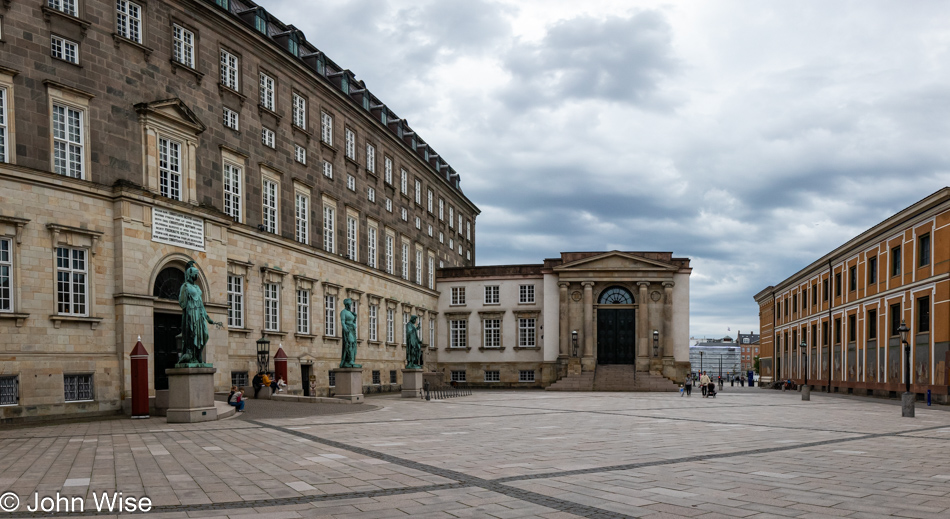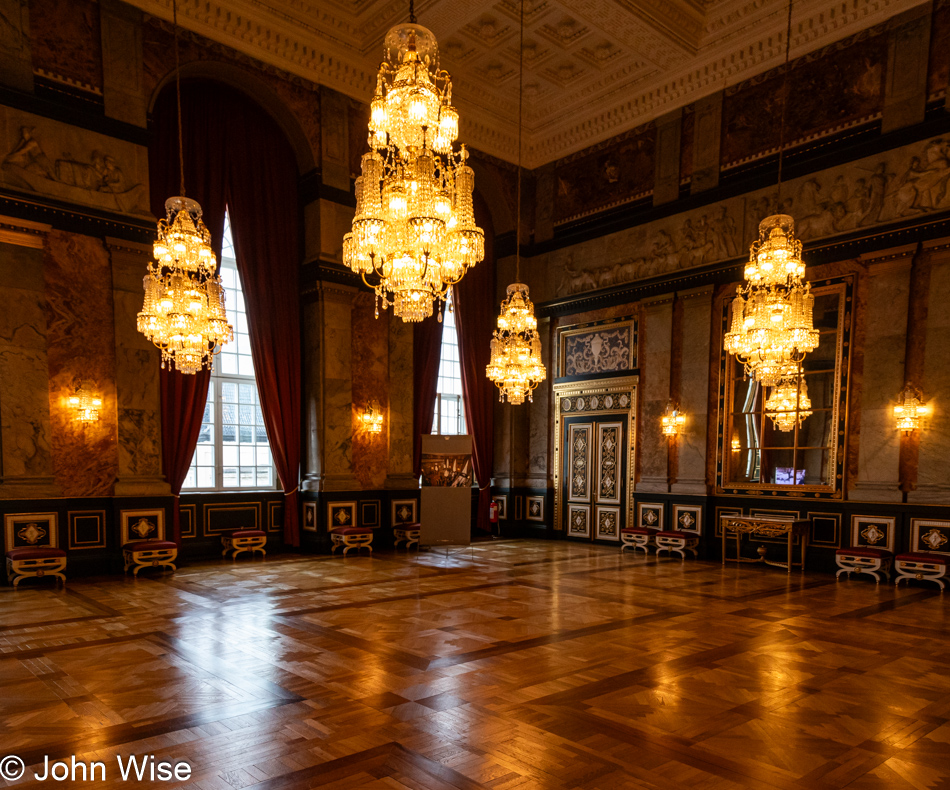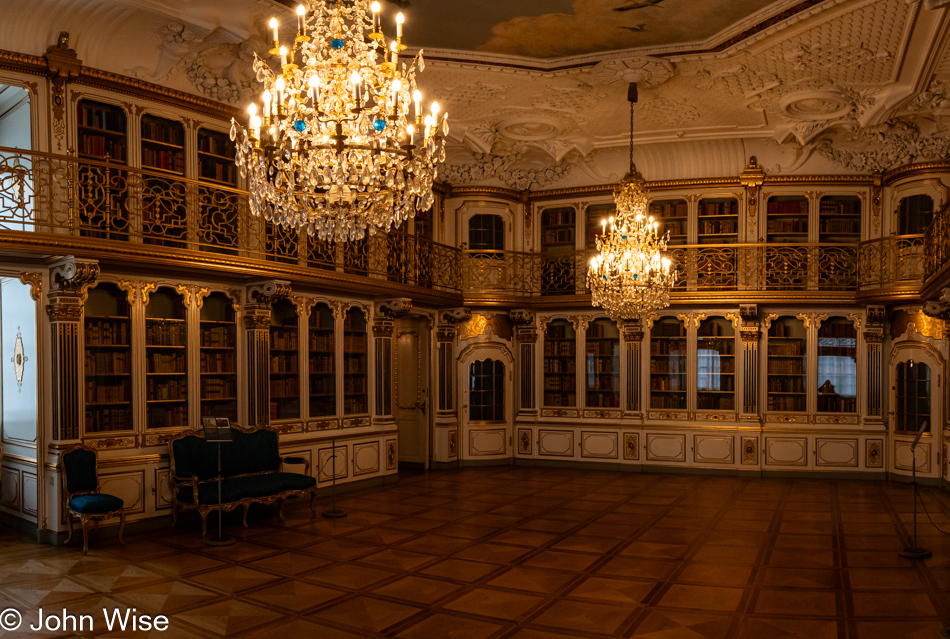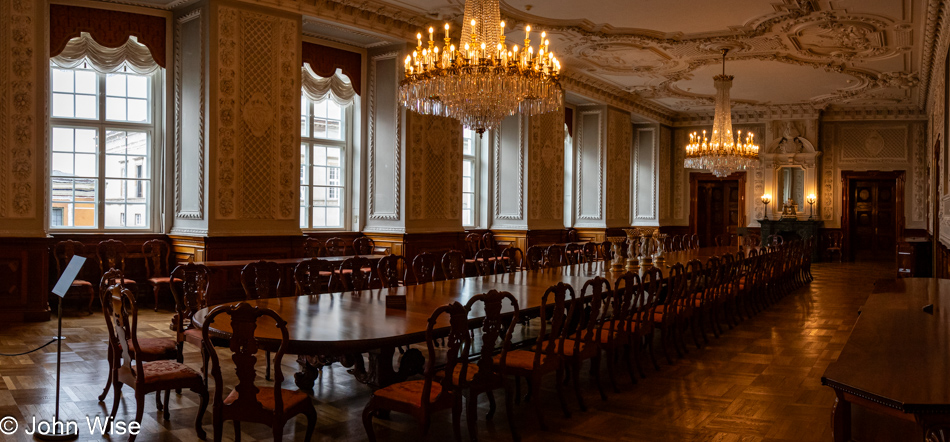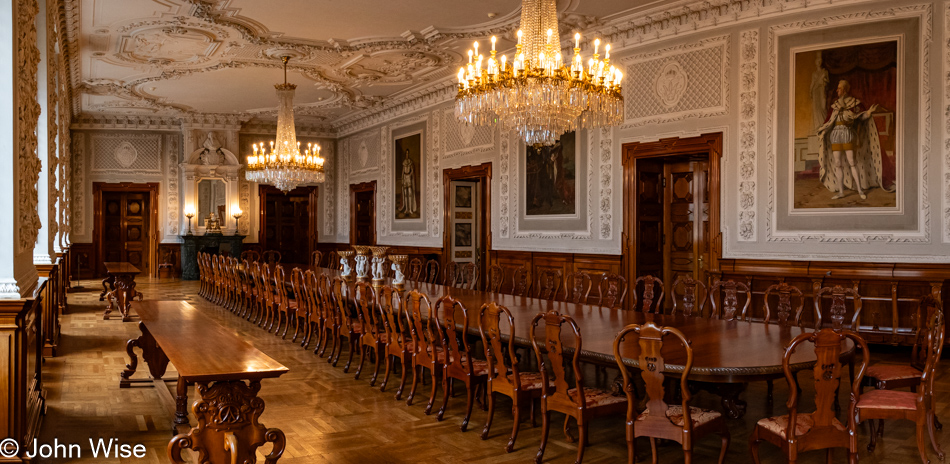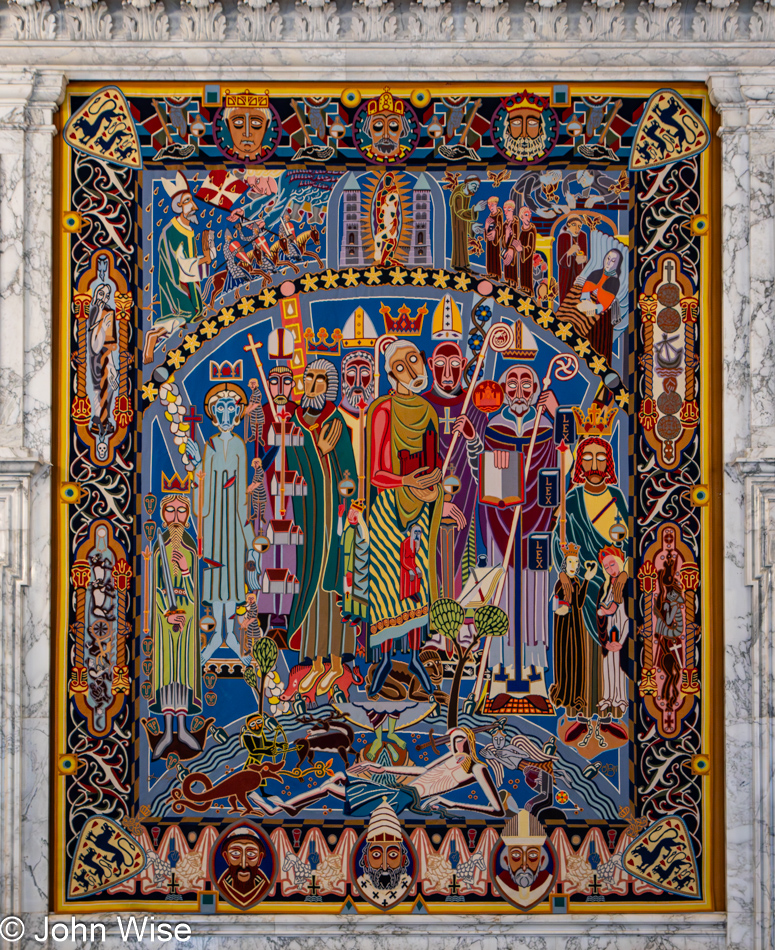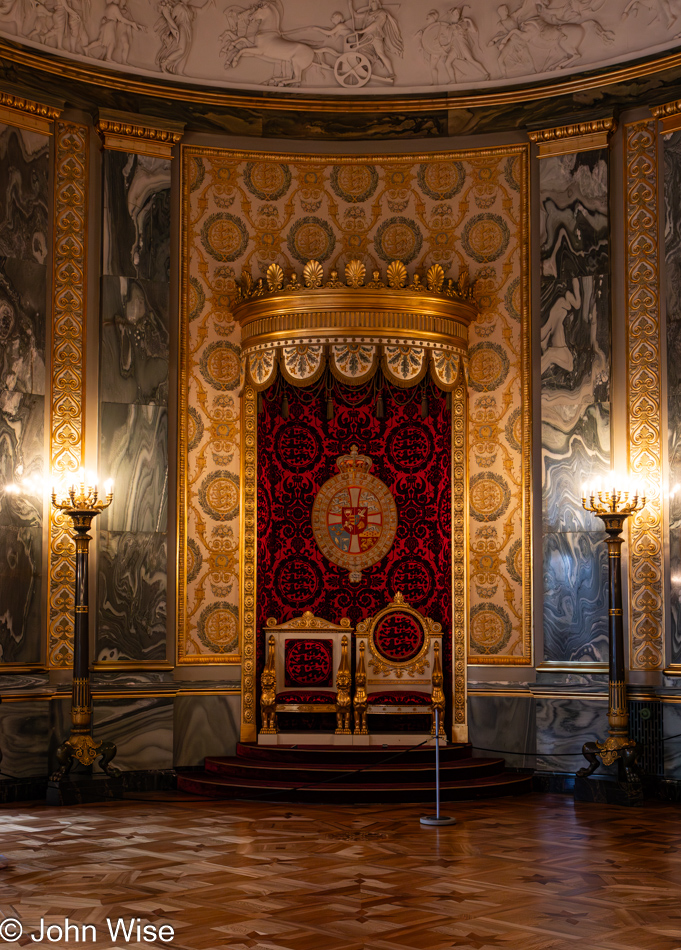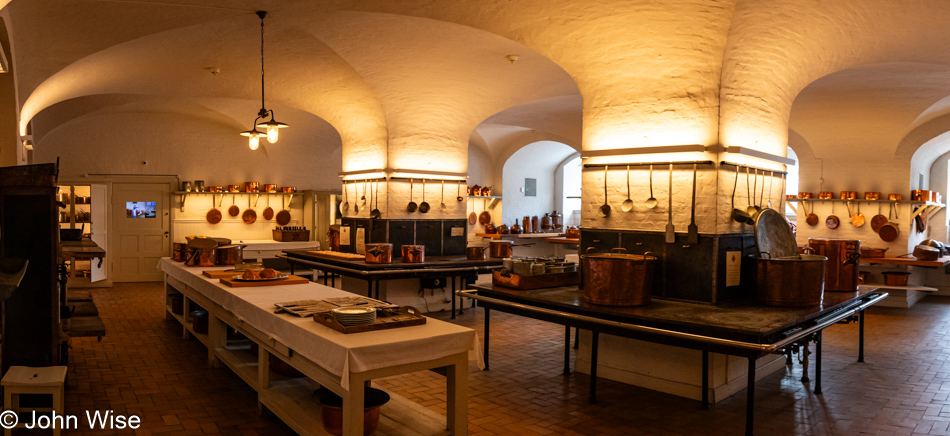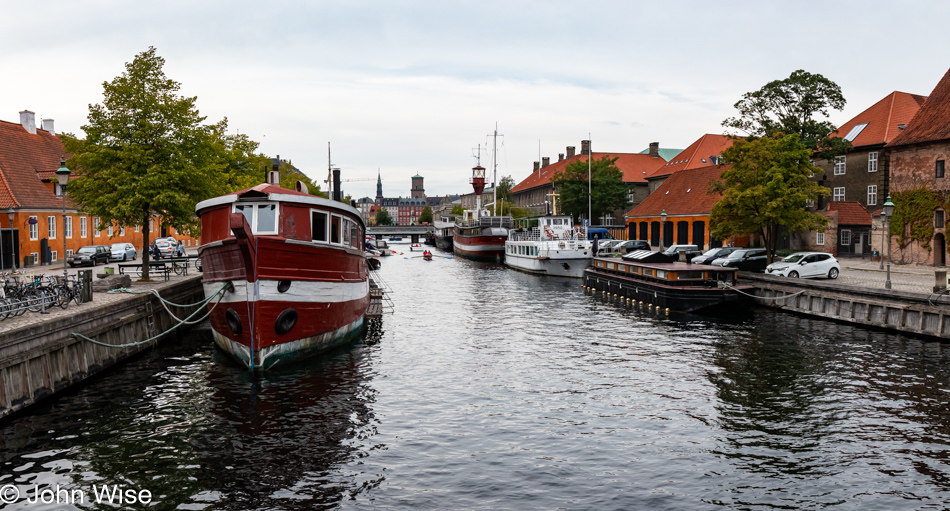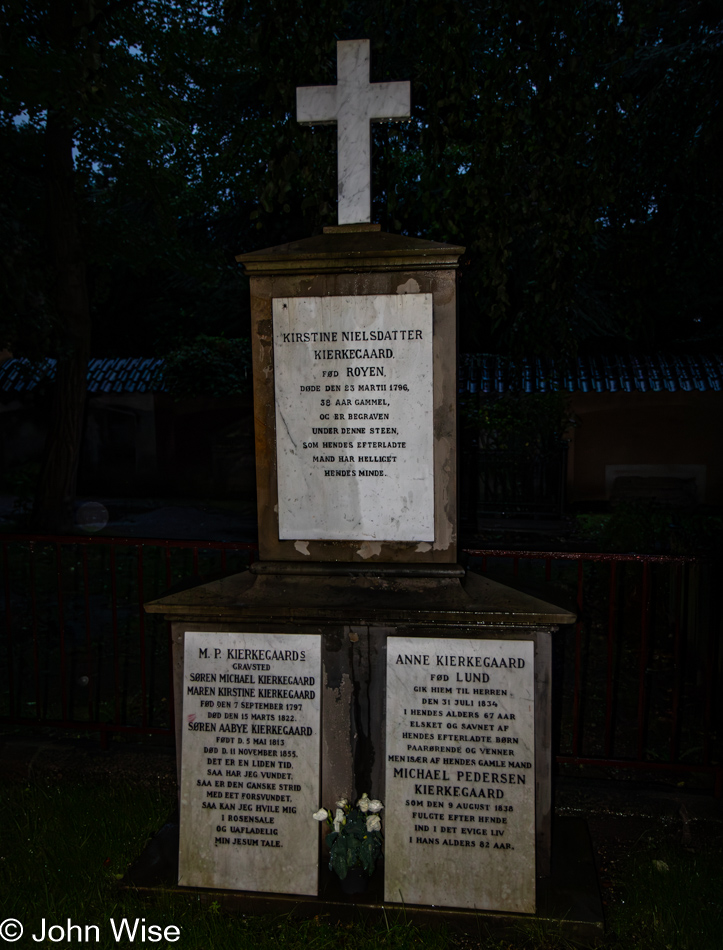
What a perfect day for rain as after our extensive walk around historic Stockholm yesterday afternoon into the evening, today we can be happy about spending time in museums.
Copenhagen and Stockholm have something in common with other large cities that small and medium cities lack: fashionable people and money to spare. This idea that only big city dwellers get to participate at particular higher levels means that those who might want both fashion and wealth must gravitate to major metropolitan areas, thus increasing their own cost of living. Otherwise, they must satisfy themselves with one or the other, wealth or fashion, but only if they discover a fortunate path in these smaller cities. A lot of wealth and fashion is on display here in Stockholm, just like one sees in Frankfurt, Los Angeles, and New York City.
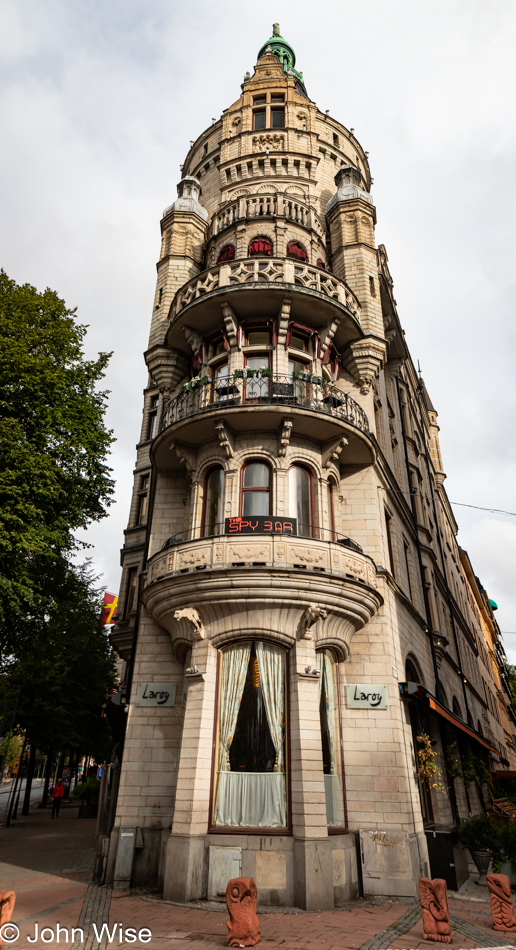
Part of the equation of existing at a comfortable level in these big cities is the need to participate in the conformity that keeps those striving for wealth and fashion plugged into the delivery system. In the wealthier enclaves, conformity is working the hardest to maintain social cohesion and acceptance, which allows others to fit into the socioeconomic structure: be beautiful and talk the talk or perish at the margin.
Around the world, the elderly dye their hair in avoidance of reality because gray is equated with becoming ancient. Here in Sweden, there’s an obvious desire for blond hair among women, but come on, people, roots don’t lie. Fashion doesn’t hide age, wealth doesn’t obscure unhappiness, and conformity doesn’t exemplify genius, uniqueness, or compassion.

We remain on the move, which is not a formula for reflection or a path of inspiration to more profound thought, but I do have the luxury of taking one, two, or however many months at the conclusion of our intense vacation to pour over the thousands of images (just under 10,000 when all was said and done) along with the words I found time to put on paper and dwell within the experience long after this part is finished. At the time of my tending to this post, it’s already the 14th of October, four weeks since we returned home. So, while it won’t be the same as sitting in a sidewalk cafe enjoying a four-hour session of fika, writing, and people-watching, I will, for some intents and purposes, remain on and in our Scandinavian journey for months to come. Please do not take this to imply that writing while on vacation can take a back seat or wait until these days are behind us. I must remain busy with pen and paper to note as much as possible regarding our jam-packed extravaganza. Should you believe that vacations are meant as a form of relaxation, the intensity of experiences and impressions is exactly our kind of unwinding.

Why were we on this path? Where were we going if, in fact, we were really going anywhere at all? It’s not like the places above had anything to do with what I have written; those words were jotted down over breakfast and copied out of my notebook nearly verbatim. The direction of travel was nothing more than a diversion from the more obvious streets trodden by all visitors as we were curious about what sights could be found if we were not following the popular routes. This house is the Konstnärshuset, which translates to Artists’ House. The facade was inspired by 16th-century Italian and Spanish, though in my view, there’s also an element of Moorish influence.
While I’m here sharing details of the architecture, I’ll go ahead and tell you that the granite elephant bollard sits in front of the Daneliuska Huset (Danelius Building), which is the tall flatiron building in the image above the elephant sculpture.

Crossing the Djurgården Bridge, we spot Heimdall, son of Odin, blowing his Gjallarhorn (hollering horn), which warns of the impending arrival of Ragnarök, world destruction. If all you know about Norse mythology comes to you from superhero movies, you might consider reading the Poetic Edda.
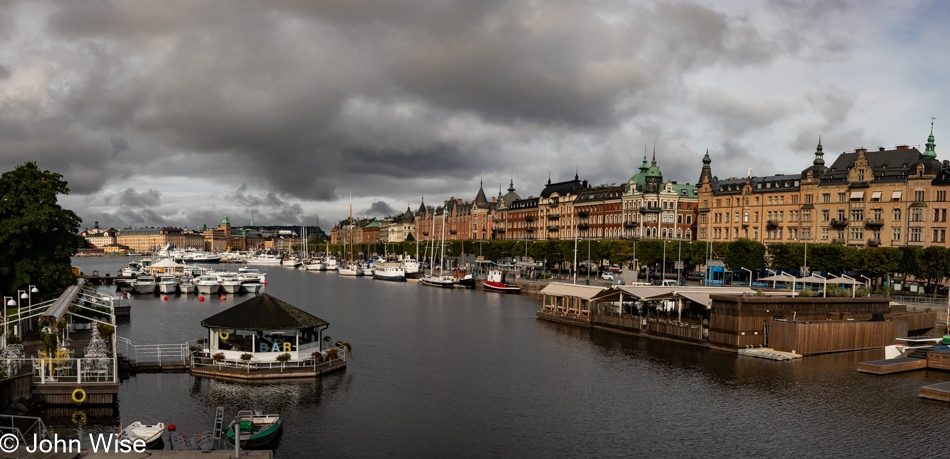
Well before this point in our walk, Caroline already let it be known that her wish for the day and the first place we should visit was Djurgården Island, where the Vasa Museum is to be found. With more than 50 museums in Stockholm, I don’t think we’ve allocated enough time here. Well, we can skip visiting the ABBA museum, so that’s one checked off the list.

HOLY WOW! A surviving relic from Early Errors in Engineering. This is what remains of the Vasa, a ship that went down back on the 10th of August 1628, mere minutes after she left her berth for her maiden voyage.
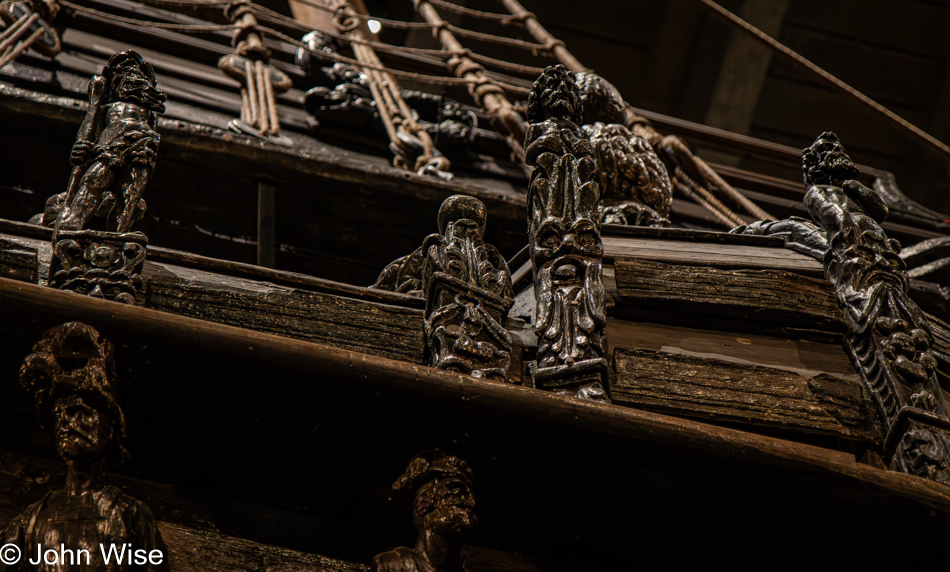
Commissioned by King Gustavus Adolphus, grandson of King Gustaf Vasa, the ship, which was to honor his grandfather, made it less than a mile before a light breeze tilted it onto its side. She took on water fast and sank to a depth of 32 meters (105 feet), and that’s where she stayed until recovery started in 1961.
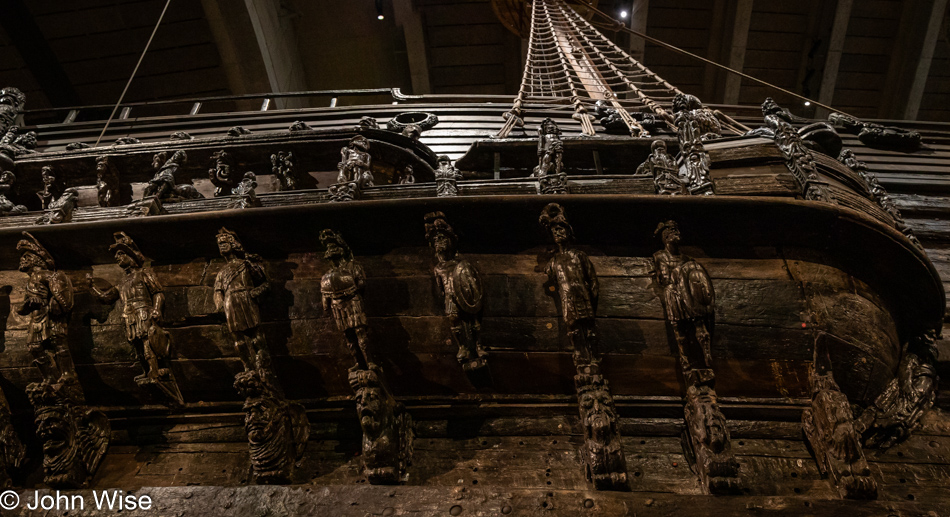
That so much of the ship survived at all is an astonishing bit of good luck, as the previous salvaging of the cannons created a lot of damage. The rusting of all iron elements allowed much of the ship to fall apart over time, while other ships dropping anchor in the harbor also did harm to the shipwreck. To add insult, construction in Stockholm harbor blasted away a lot of rock with some of it being dumped on the Vasa.
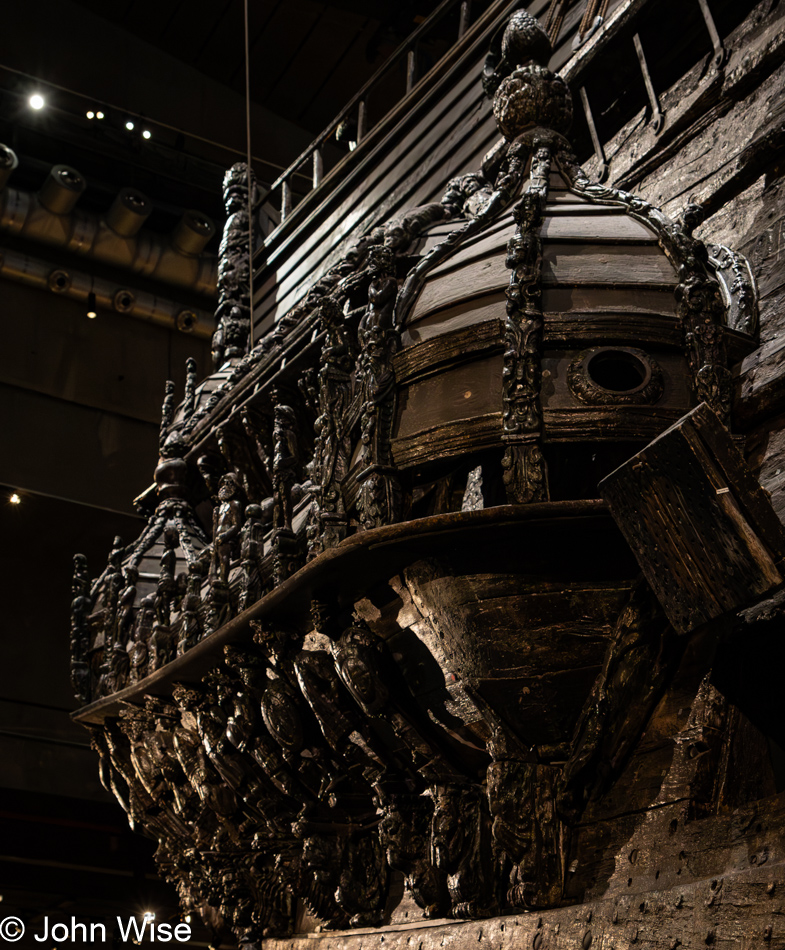
Yes, enough of the ship survived that today, this magnificent treasure of the 17th century is the best-preserved ship from this corner of history.

In our version of intensive full-bore sightseeing, we don’t always get to pull in all the details while out and about; those arrive later when we start to research the finer details of those things that piqued our interest, such as the Vasa Shipwreck here. Sometimes, though, we make a mistake, like not purchasing a book about the ship while we were in Sweden, as we are not finding one for adults here in the U.S., just versions for children. The Wikipedia article is great and fairly extensive, but we’re left wanting more. [I distinctly remember looking for a book that wasn’t a mere photo album in the gift shop and coming up empty-handed, so there’s that… – Caroline]
Lucky for us, we have our blog posts, notes, and a lot of photos. For every photo I post here, I have nine others that are not shared, with many of those not worthy of keeping for one reason or another. Having the context of our day laid out on these pages offers seeds that encourage us to explore deep memories of our experiences, read, and study works to grow our impressions, driving home how fortunate we are.
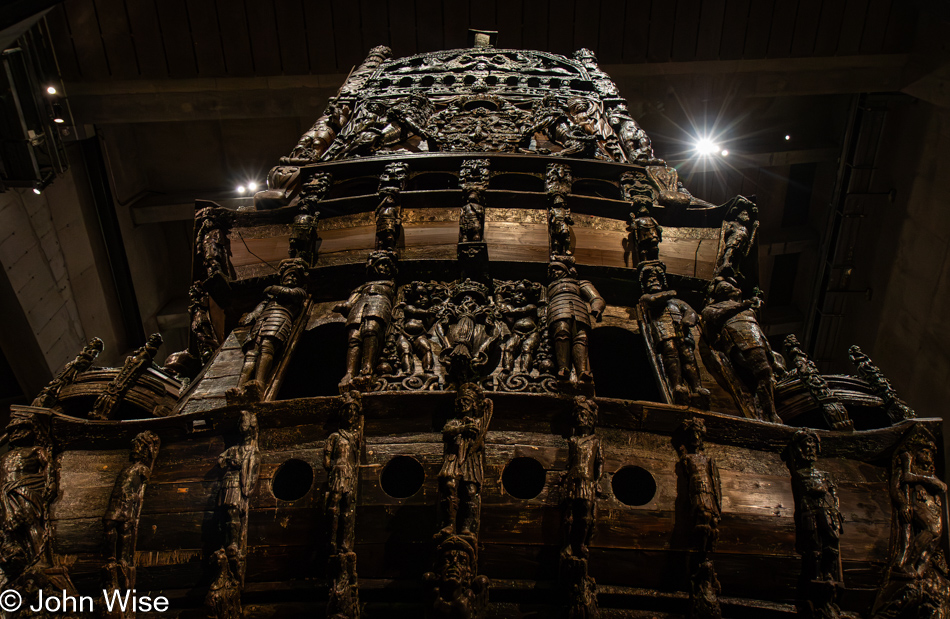
At some time in the future, I might decide to update the writing I’m leaving here as none of it feels adequately heavy and poetic enough to bring any emotional sense of what we were gawking at in stunned amazement. The eyes dig hard at every corner, looking for the pockets of what’s been rebuilt, but over and again, they end up taking in the authentic parts and pieces that emerged from its cold, wet burial. That so much survived is stunning, and no amount of time in the presence of this great ship will allow us to take home adequate memories.
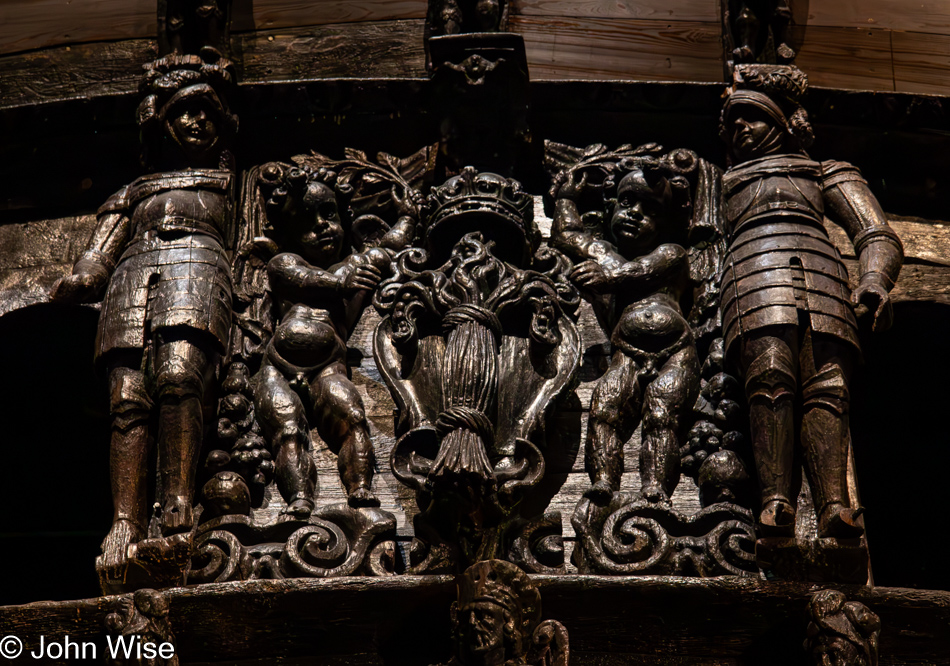
The idea that this was a warship loaded with 48 of its 64 cannons and that in battle, the ship could have been blown to pieces or burned to ash would have been far more tragic than it sinking so close to home because it has allowed us a glimpse for ourselves at what the most exquisite ships of the time looked like.
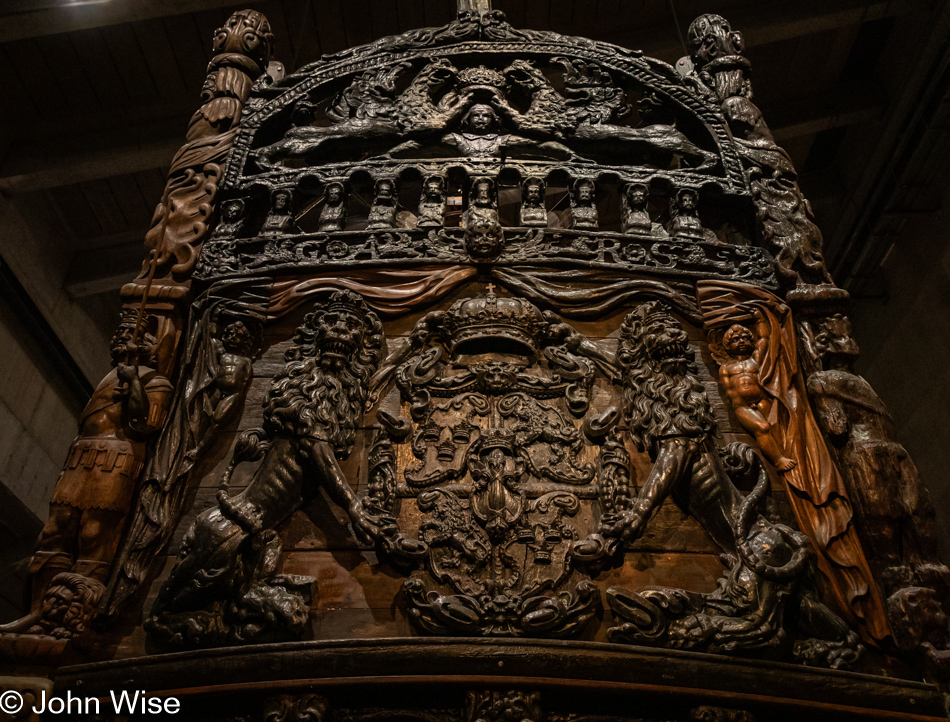
It took a little more than two years to build this ship, to carve the incredible amounts of ornamentation, paint the carvings, weave the sails, make the cannons, and otherwise prep it for duty in faraway places, and while it ultimately failed, it took the labor of approximately 500 craftspeople using nothing but manual labor to create this elaborate work of art. Compare this to a modern cruise ship that will carry up to 6,000 people: the Vasa was designed to carry about 450 crew and soldiers; the cruise ship is effectively a small city that requires between three and four years to build and is constructed by 2,000-4,000 skilled workers.
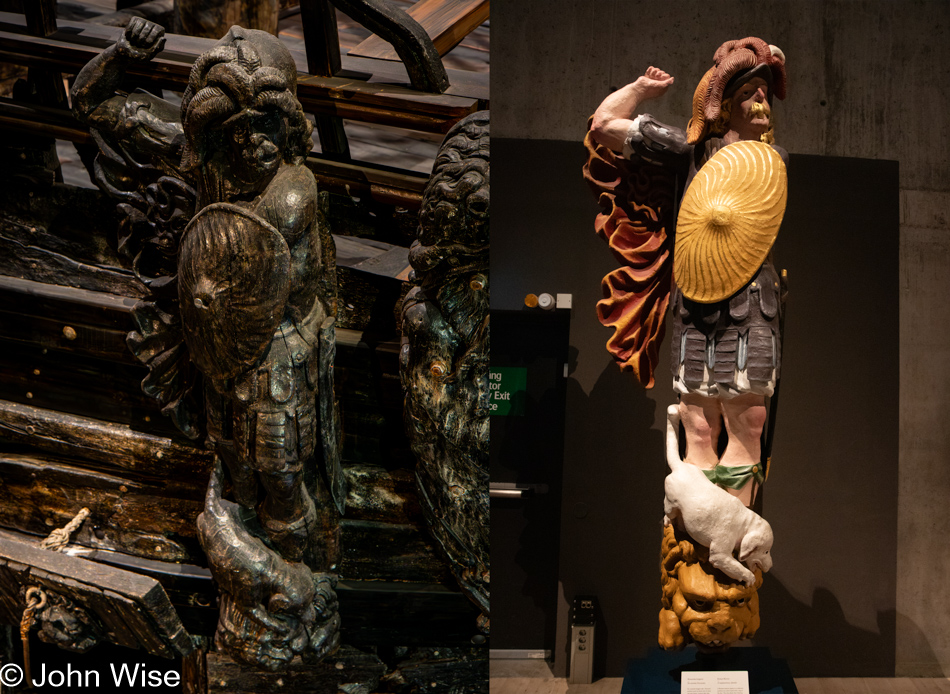
On the left is a close-up of one of the sculptures retrieved from the sea after more than 300 years in the depths, and on the right is a replica of the same sculpture and the way it would have appeared on the day the Vasa was launched.
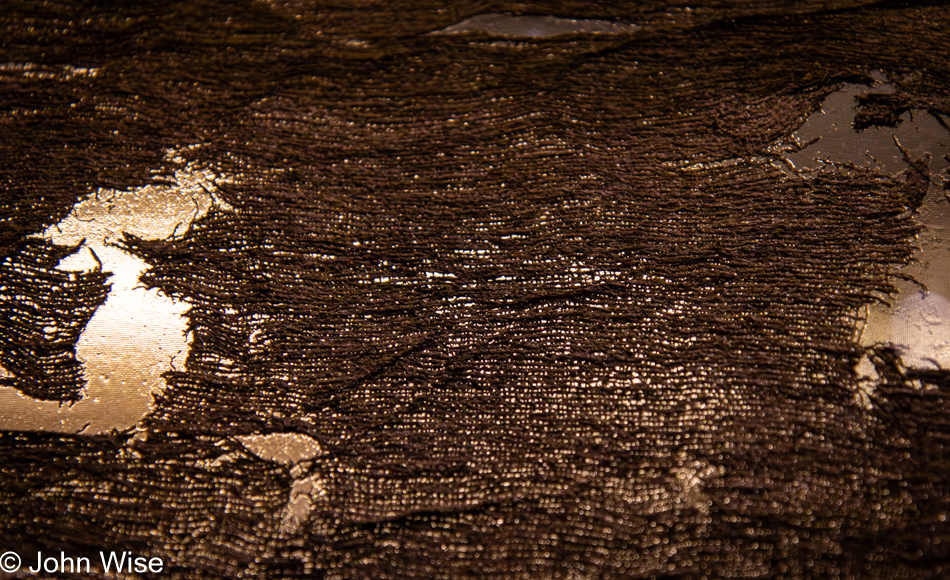
Among the more than 26,000 artifacts recovered were parts of the sails still folded up, though in a very fragile state. This is part of the main sail.

A Polish nobleman on his knees is part of a sculpture meant to demonstrate to Sweden’s enemy that their king would be embarrassed by an encounter with the Swedish military.

The model of the Vasa is as difficult to photograph as the full-size version, but it does offer a good idea of the vibrant colors that sunk below the surface before only a handful of people would ever see this spectacular ship.
While moving through the exhibit, we had a good laugh while we were looking at a cross-section of the ship and how cargo and crew would have been organized as four or five young Italian women speaking Italian added just enough English for us to know exactly how they were considering the scene when they said something about, “Mojo Dojo Casa House,” a reference to the Barbie Movie which is currently a global phenomenon.

Little did I realize when I snapped a similar photo 10 years ago of two Frankfurters posing together in Frankfurt, Germany, the other one was missing its right arm, which should have been squeezing ketchup on its head like this one.

But after two hours with the Vasa, we weren’t just outside to photograph wieners on the street; we were eating wieners and sharing with this bold bird who popped up right in front of us, letting us know through bird telepathy that it too needed wiener. Thankfully, it was satisfied with breadcrumbs while Caroline and I shared our first hot dog with ketchup, mustard, and crispy onions, quickly followed by a second yummy dog that far exceeded our expectations of what a typical Swedish wiener could be.

Judging from the outside of the Swedish History Museum, one might be disappointed at the sight of the somewhat bland building, but after looking in on the exhibits, there is no disappointment to be found. We had a number of places on the itinerary we might visit on this day and even a few left from the day before, but Caroline’s choice for our second stop was right here, likely because of a Viking exhibit.
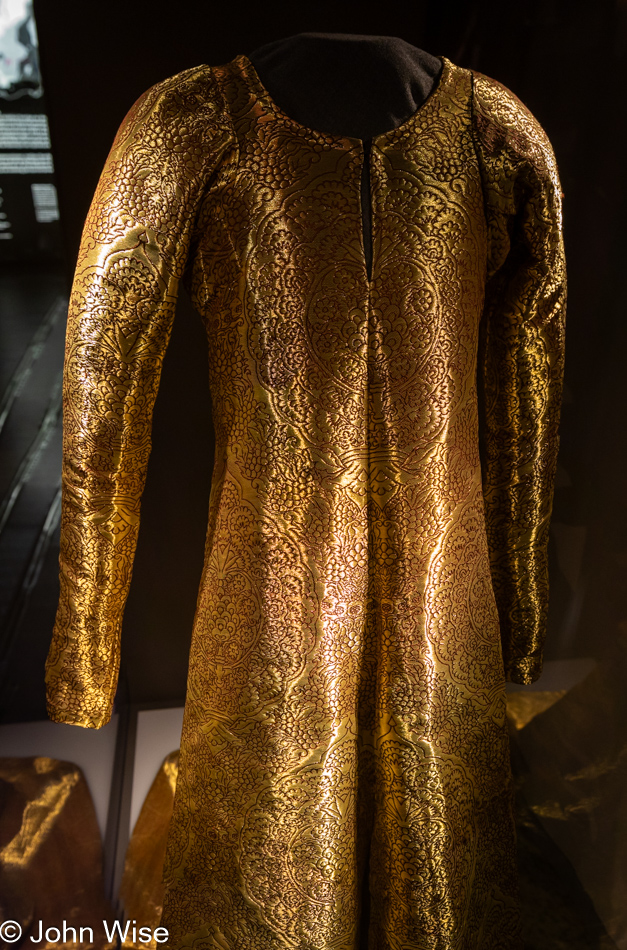
Looping back around in our history lessons, we reencounter Queen Margrethe I of Denmark and a replica of her royal golden dress that at one time was in the hands of Sweden. The Danish queen wore a golden gown in 1363 at her wedding to the Norwegian King, Hakon the 6th of Norway. Should you search for and find an image of the original, you may not recognize it, as after more than 650 years, it’s a little worse for wear.
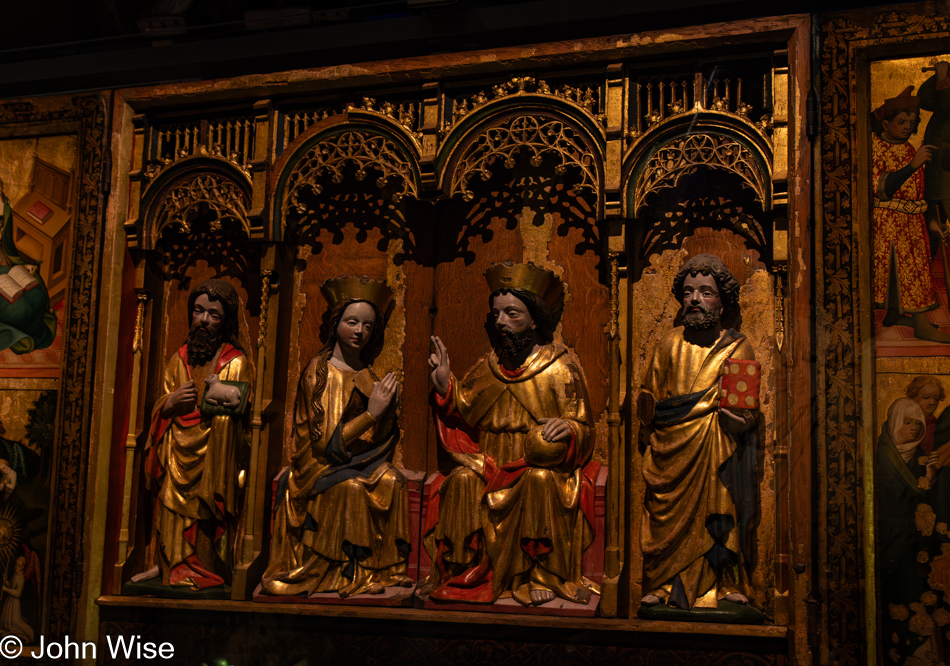
Hey Pope, John here with a great idea for you. How about you sponsor me to visit as many altarpieces as time allows with the idea of creating the most complete catalog of these historic works of 3D art? I would even capture their point clouds so you can open-source the meshes, allowing religious symbolism and iconography to freely join the virtual worlds that will certainly become part of reality when the real world is on the brink of ecological collapse, and we can no longer go outside. Then, we can all turn to praying to God to fix what we are letting go to hell now.

Copy of a mass book from between 1100 and 1200; the original is in the National Archives.
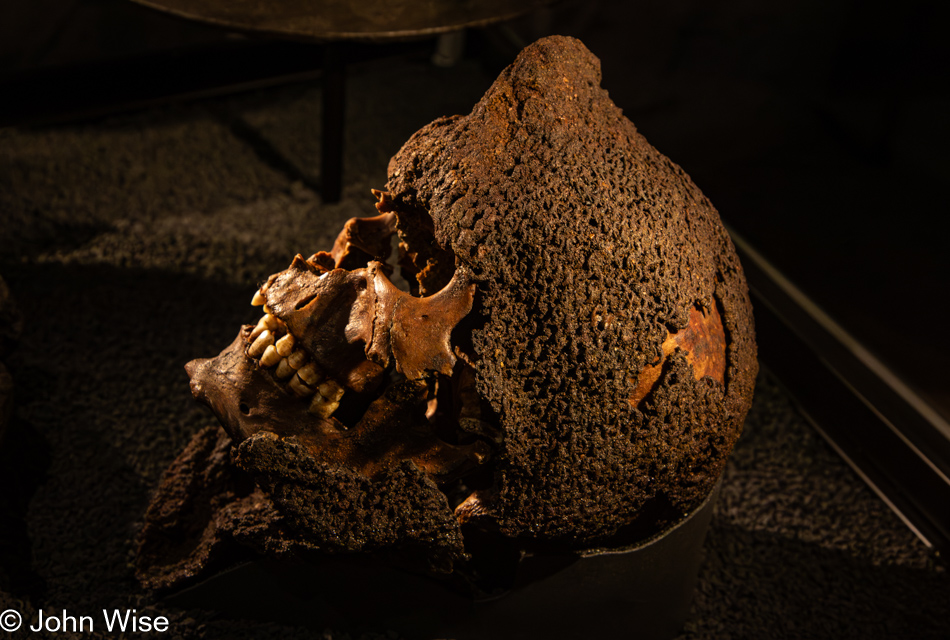
On the 22nd of July, 1361, a bunch of Danish dickheads stormed the shore of Gotland island, pulled into Visby, and slaughtered a couple of thousand farmers because, as marauders, what else was a man to do? So why did the murdering horde really arrive? The people of Visby were a diverse bunch of Gutes (somehow related to the Goths and Germans) who were not gelling with the Gutnish of the countryside (old Norse guys). To make this relatable to modern times, imagine a city where open-minded liberals were living, say San Francisco, but the conservative people of Yorba Linda down south called on Donald Trump to invade the city to the north and kill everyone. Yep, it was kind of like that. Danes making Sweden Great Again.
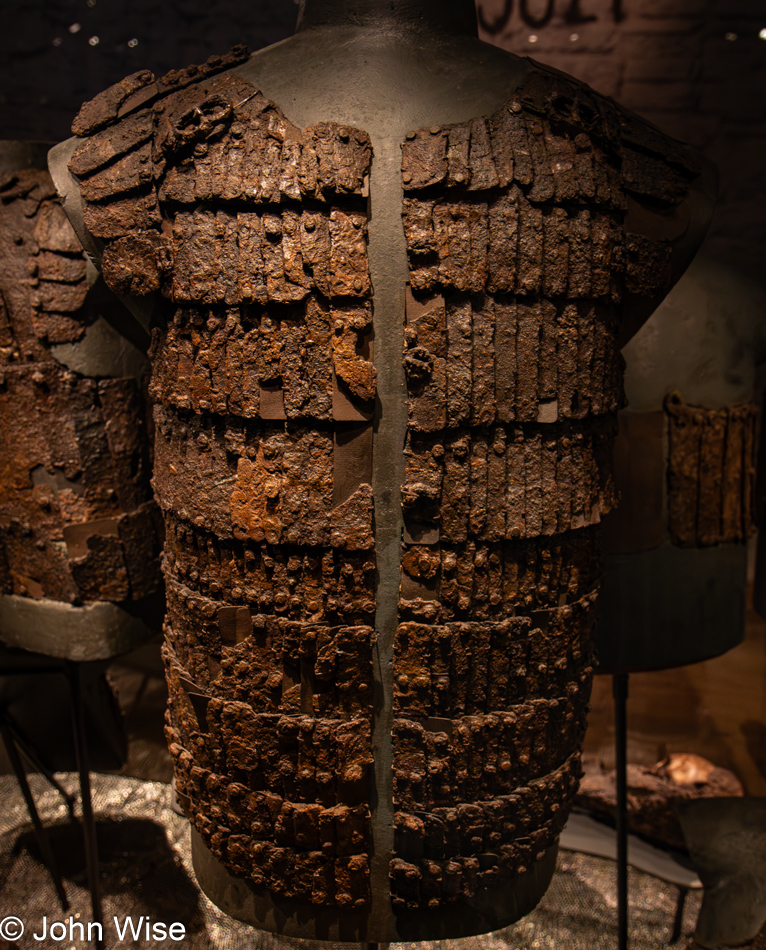
Excavated from the fetid pit of a mass grave filled with the armor, skulls, and associated bits that accompany this type of burial, some of those finds were put on display here at the museum, and I’m only sharing a tiny fraction of the gruesome stuff one can see if one too is interested in the morbid side of life and death.
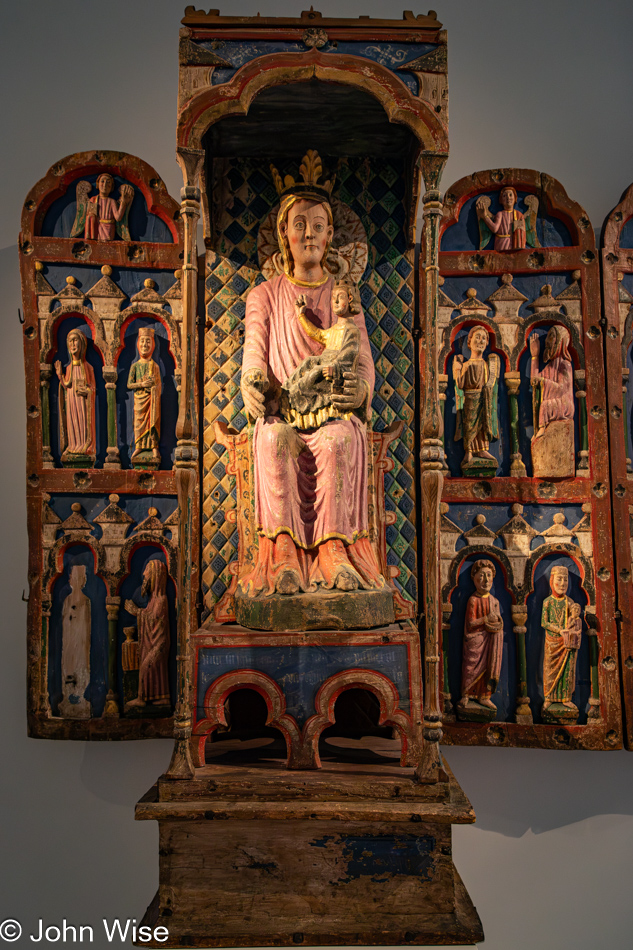
When it comes to furniture, Caroline and I are minimalists, but if I could put my hands on a 700-year-old altarpiece, likely a replica, as I don’t believe we could afford an authentic one, I’d absolutely love to add one of these to our little apartment. It might even inspire me to pray.
This particular piece is known as a “dossal panel,” but I can’t actually be certain of this as it’s from the English translation from Swedish on the information card next to this “part” of an altarpiece. They claim it is the oldest known dossal panel in the country, having arrived from the Fröskog church in the west of Sweden with doors dating from between 1250 and 1300. The further I go with my research, the more I’m inclined to believe this is a tabernacle shrine.
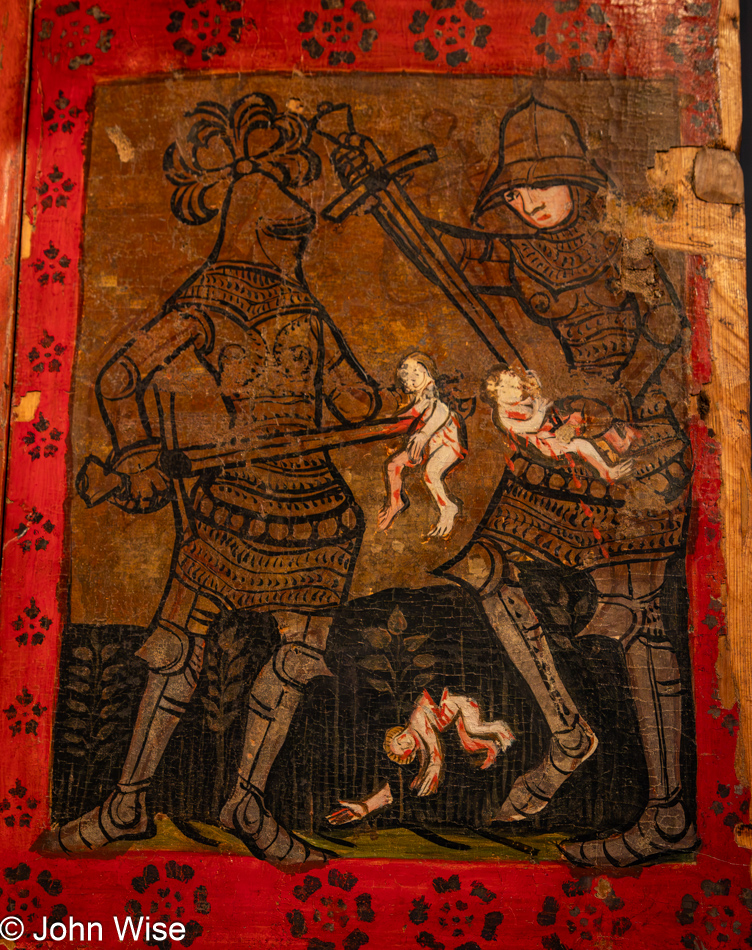
It’s not very often that one sees a gory depiction of the Massacre of the Innocents, where Herod allegedly ordered the slaughter of all boys under two years old in and around Bethlehem due to talk that the next King of the Jews had been born.
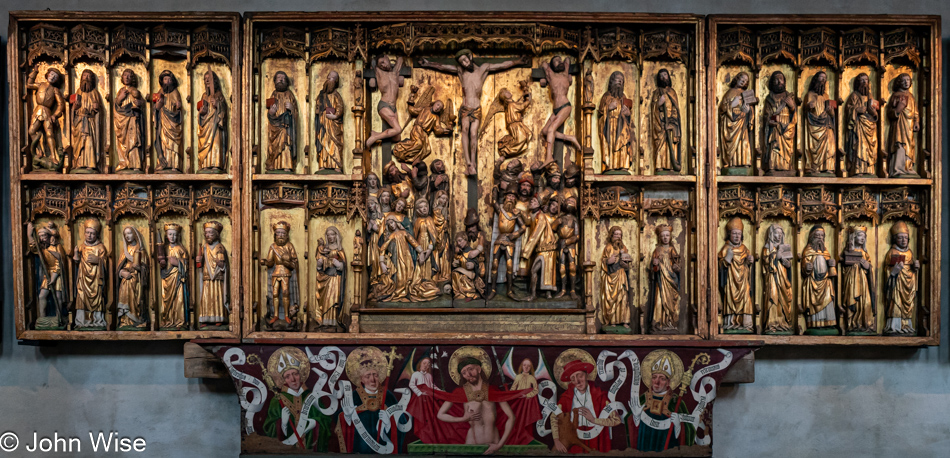
I have fairly good reason to believe this is the third altarpiece that was once at Storkyrkan (Stockholm Cathedral) that we’ll be visiting later today. The altarpiece was made by Hermen Rode in Lübeck, Germany, in 1468, though I’m not 100% certain of this information.
Carving religious icons between the 12th and 16th centuries must have been a lucrative career as the more I search for information regarding altarpieces, the more I realize that there must be thousands upon thousands of these historic works of art, and this doesn’t take into account how many burned, were eaten by termites, or otherwise destroyed.
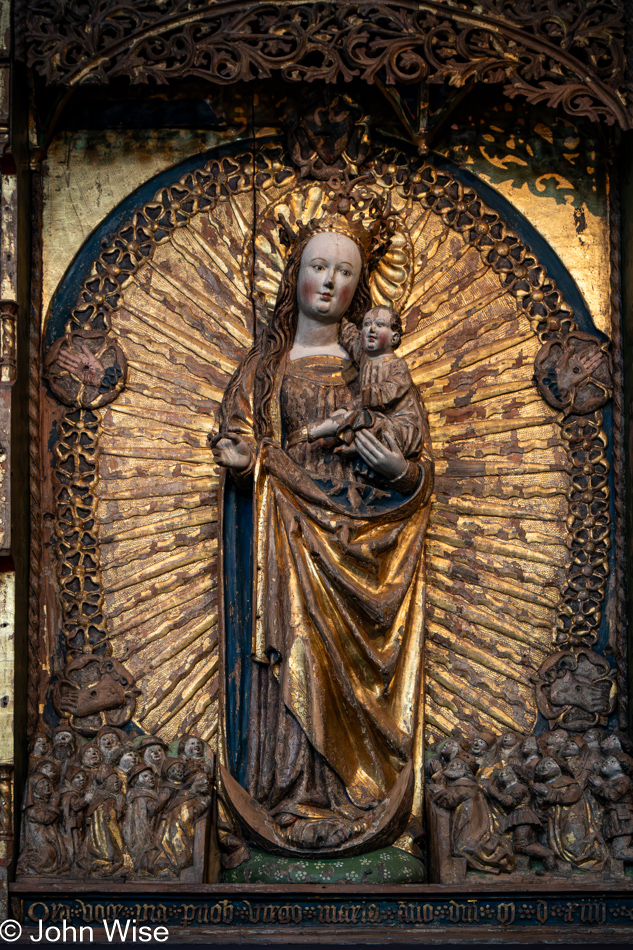
This altarpiece, dated to 1514, has the Virgin Mary clad in sunbeams and surrounded by a wreath of roses, symbolizing devotion to the rosary.
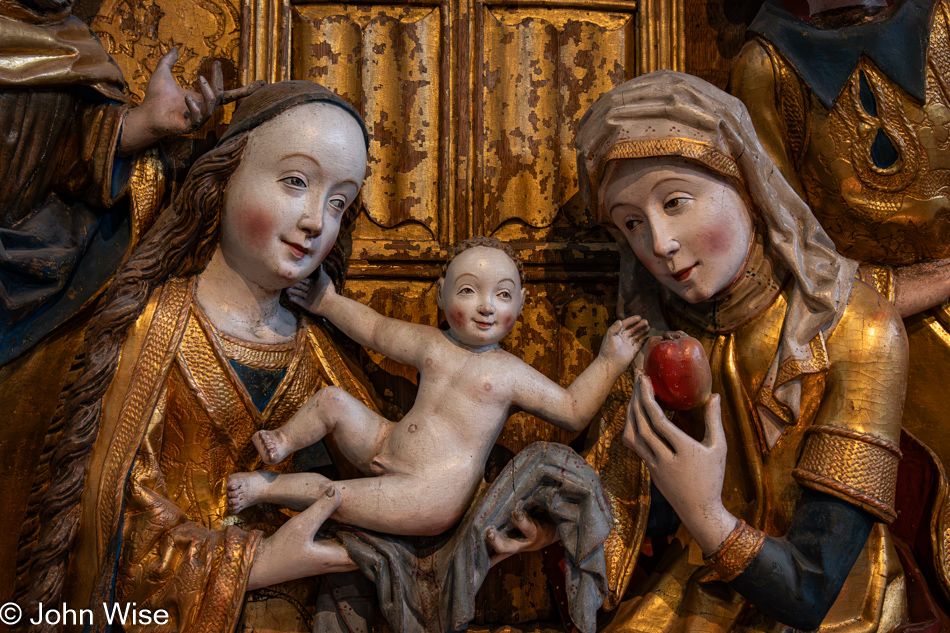
Hey Pope, it’s me again; I’ve got another great idea for you. How about building a kind of Disneyland/movie hybrid where there is one ride moving continuously through animatronic altarpieces inspired by various passages from the bible culminating with an offering of the Eucharist?
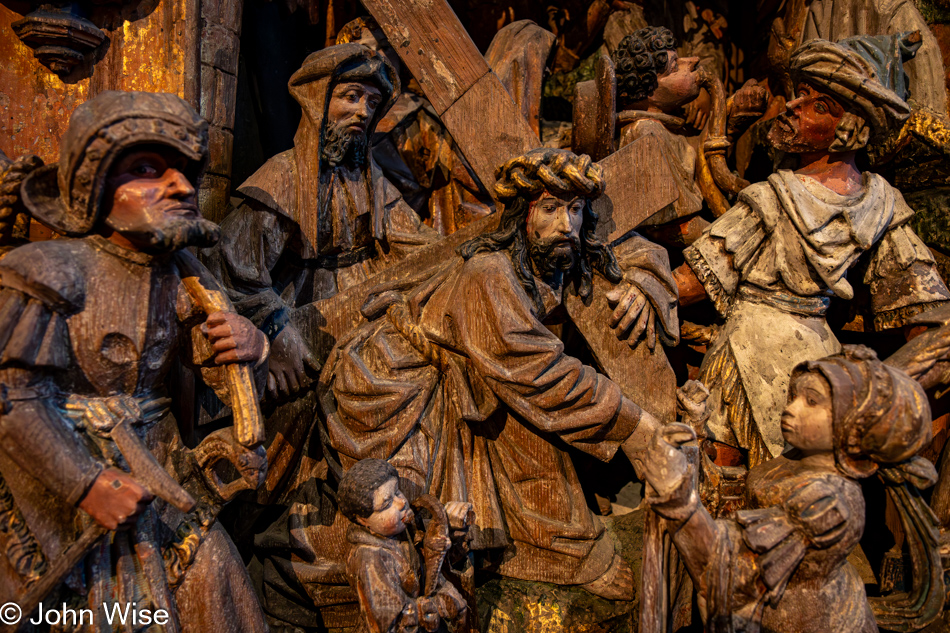
Looking at this carving of the cross Jesus is bearing, I got to thinking about aniconism, and instead of trying to rewrite this amazing quote from Swiss writer Titus Burckhardt, I am quoting it here:
The absence of icons in Islam has not merely a negative but a positive role. By excluding all anthropomorphic images, at least within the religious realm, Islamic art aids man to be entirely himself. Instead of projecting his soul outside himself, he can remain in his ontological center where he is both the viceregent (khalîfa) and slave (‘abd) of God. Islamic art as a whole aims at creating an ambiance that helps man to realize his primordial dignity; it, therefore, avoids everything that could be an ‘idol’, even in a relative and provisional manner. Nothing must stand between man and the invisible presence of God. Thus, Islamic art creates a void; it eliminates, in fact, all the turmoil and passionate suggestions of the world and, in their stead, creates an order that expresses equilibrium, serenity, and peace.
Being without loyalty to any particular religion, I can appreciate the nuances brought from all sides, and this idea of taking inspiration and finding meaning from within is a philosophical tradition used in exploring self-discovery for millennia while using human-created art and images to inspire thought and imagination seems to be a relatively modern approach to enforcing a narrative. I have no idea if one or the other is superior; I suppose they are just different.
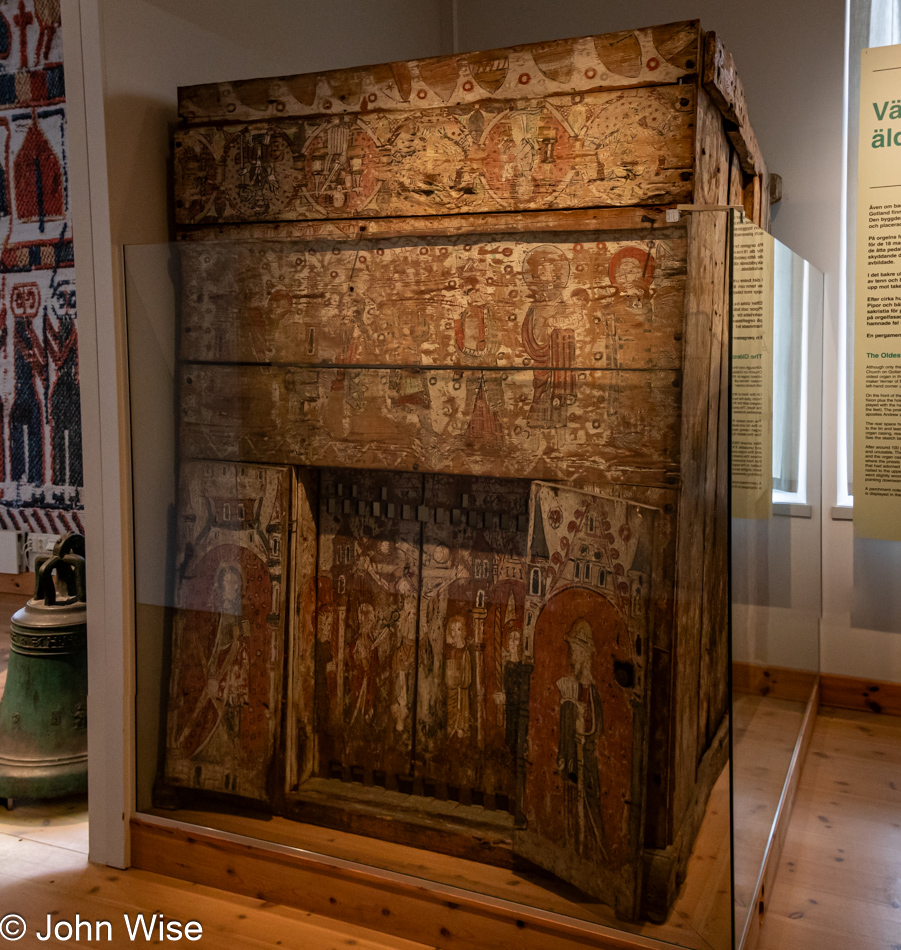
From the 13th century Sundre Church on Gotland island, this empty organ case is considered the oldest organ on earth, even though the pipes are missing.
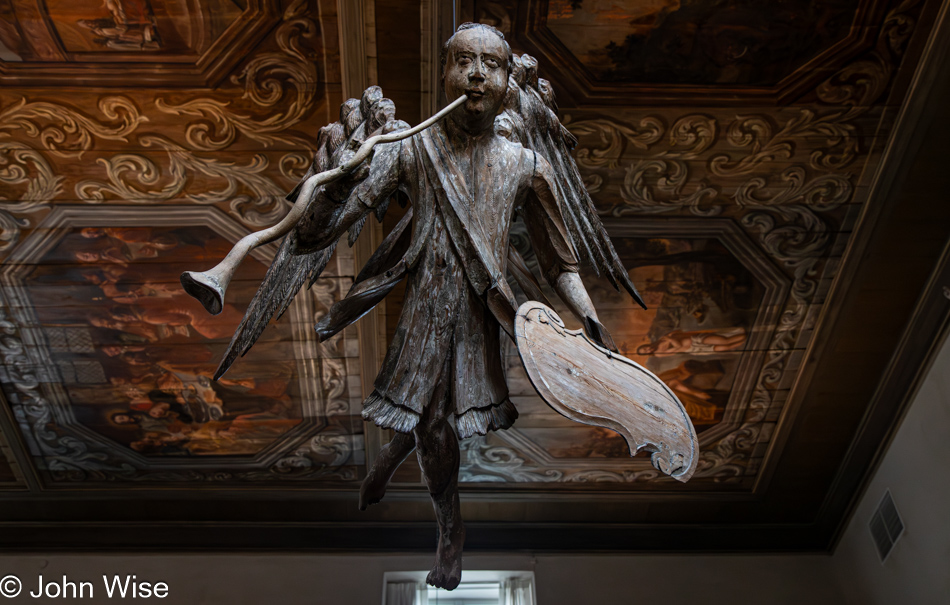
A little-known carving from the early career of Paul Giamatti, where he did side jobs modeling as an angel prior to landing acting roles. I just showed this to Caroline, hoping for a chuckle, and she asked that I include something about our time in this Baroque room of the museum where a men’s choir was practicing, which, in our view, was an invitation to hang out for a short while and enjoy the free performance without instrumentation, just their voices.

A gold bracteate was found on Gotland, but no other information could be found. [In case you’re wondering (like I did), a bracteate is a pendant worn as jewelry. They must have been popular back in the Middle Ages because there were a number of these in the museum. – Caroline]

Silk fragment from a burial in Birka, Sweden, possibly from a female warrior.
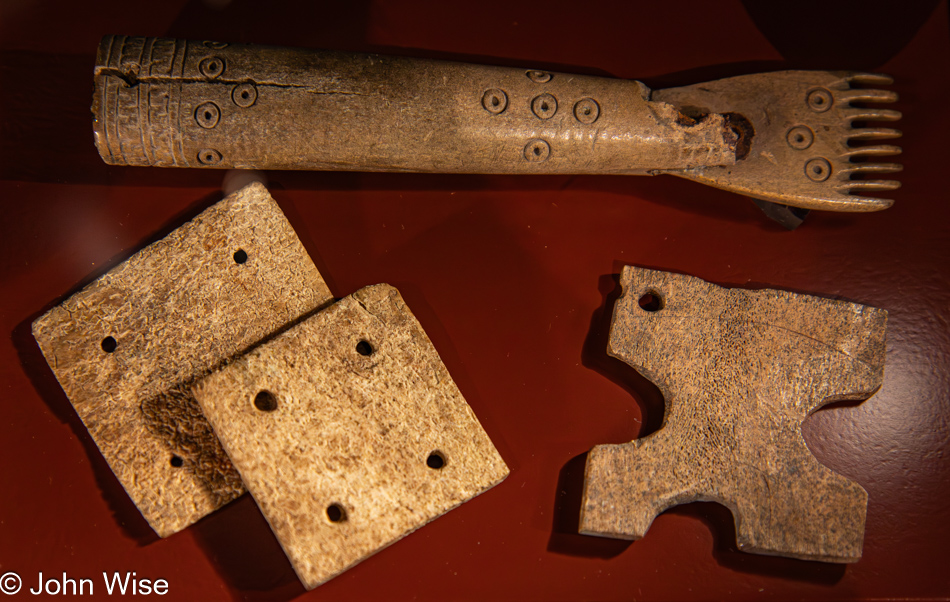
Viking-age tablet weaving tools include cards and a comb. Not much has changed regarding tablet weaving in the 2,800 years since evidence of this craft came to light.
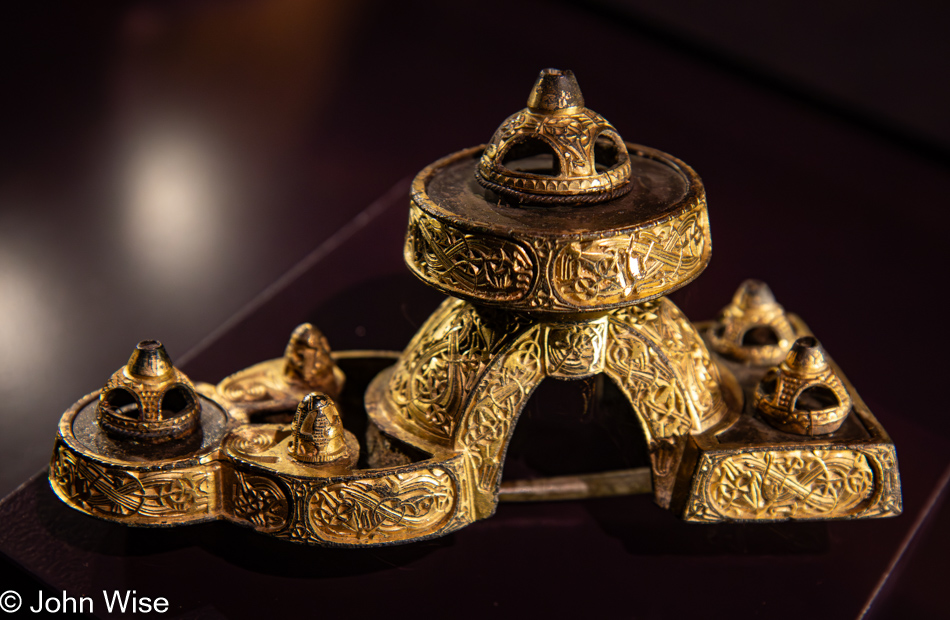
Button-on-bow brooch that arrives before our eyes from the Vendel Age. This time in history was between the Migration Period (about 375 AD) after the fall of Rome and the Viking Age (about 800 AD)
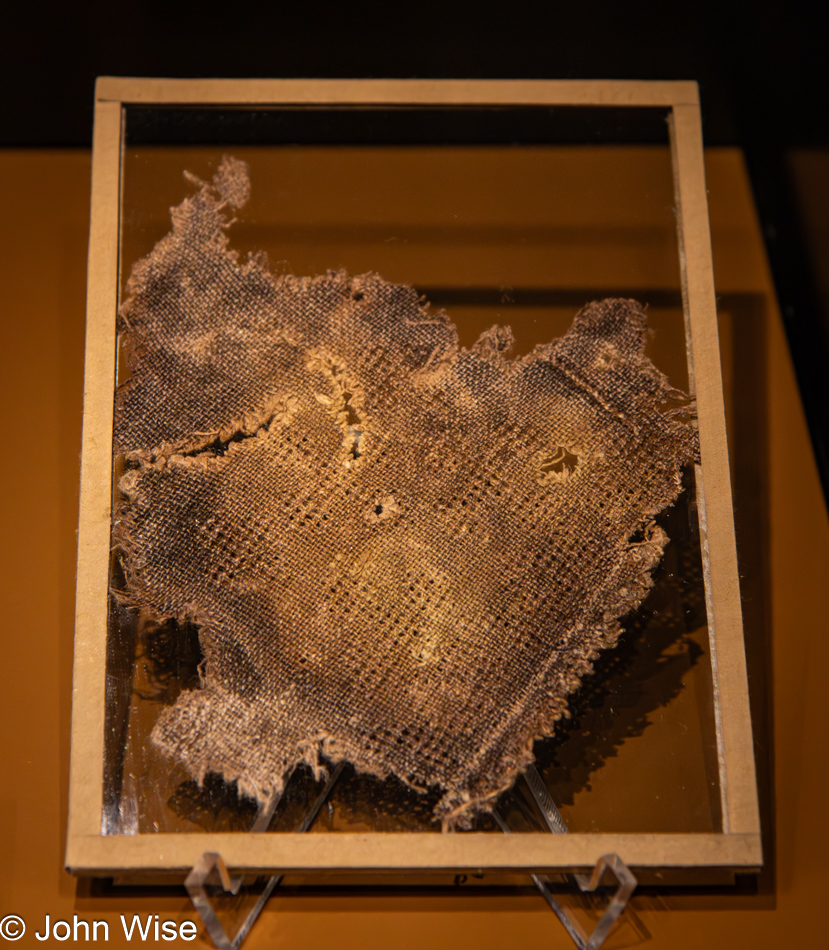
Warp and weft, do you know the difference? Something in this linen fabric didn’t survive the ravages of time, and if I read the info at the museum correctly, it was the pattern thread that decayed and disappeared. The original piece of material would have been woven in the Krabbasnår technique (a type of brocading), and it’s thought that the colored pattern threads that are missing where the holes are were of a different material or might have been dyed, which accelerated their demise.
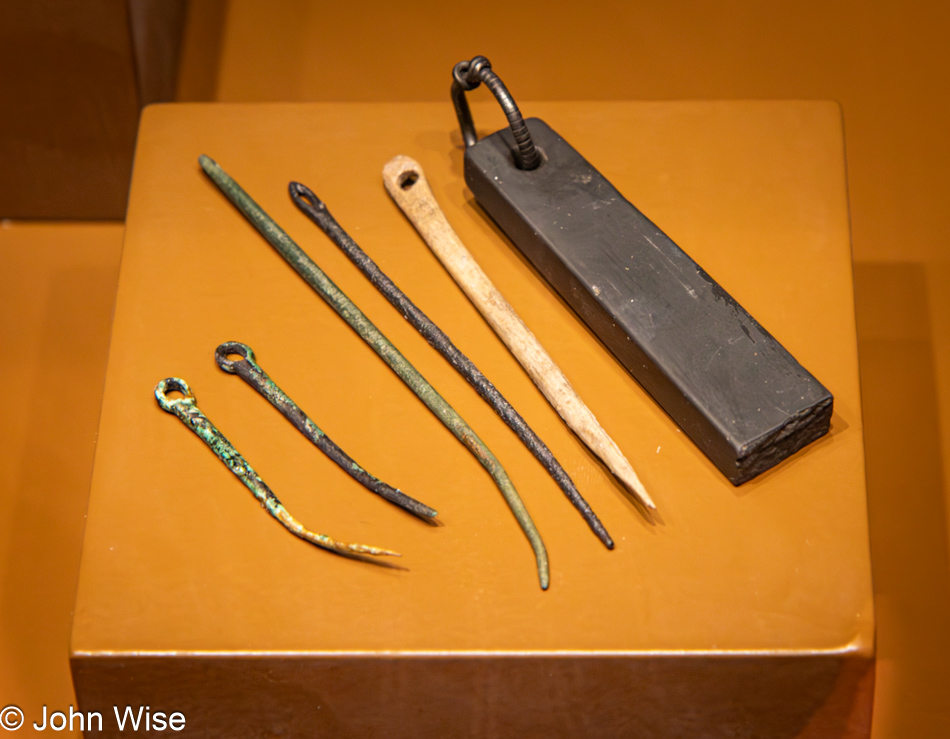
Nålebinding needles and, I’m guessing, a sharpening stone. Nålebinding is an 8,500-year-old technique of a single-needle type of knitting, whereas two-needle knitting only got underway about 900 years ago. Crocheting appears to have arrived on the scene only 200 years ago.
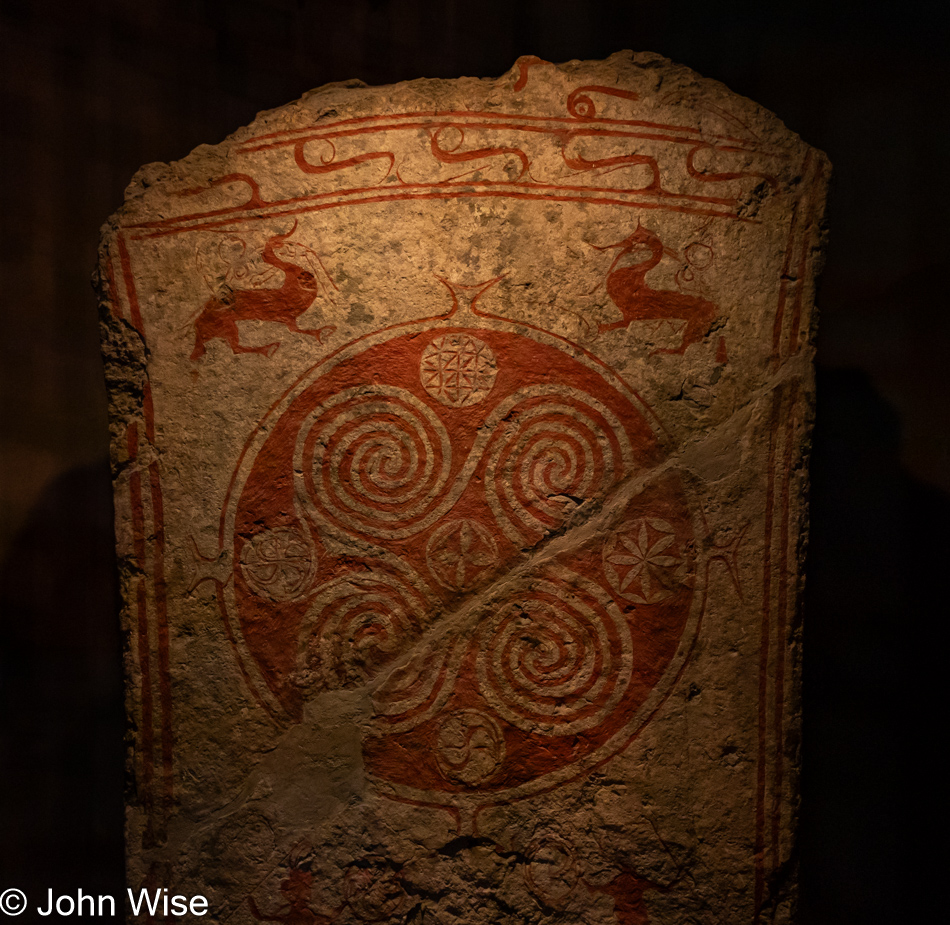
Viking age carved and painted stone found on Gotland. After spending hours in the History Museum, we decided we’d head over to the cathedral in Gamla Stan, but since we were going to cross the Norrebro bridge to get there, we’d pay a quick visit to the Medieval Museum that is located below that bridge. However, a funny/not-so-funny thing happened on the way to church this afternoon. According to Google, the cathedral closed at 6:00 p.m. But when we stepped into the Medieval Museum and asked the girl at the ticket counter to verify the closing times, she said that the church was closing at 5:00 p.m., so we excused ourselves and rushed over to the cathedral instead. Google has obviously lost its ability to manage data and only cares about the money metric. It can focus on stopping people from blocking ads on YouTube but is unable to show that a business has reopened after its closure due to the pandemic or offer businesses an easy way to correct wrong hours, addresses, or other information the search engine is presenting to potential customers. After nearly two decades of relying on Google, that relationship is increasingly broken, but the problem is that there is really no alternative to their hegemony. On to the cathedral.
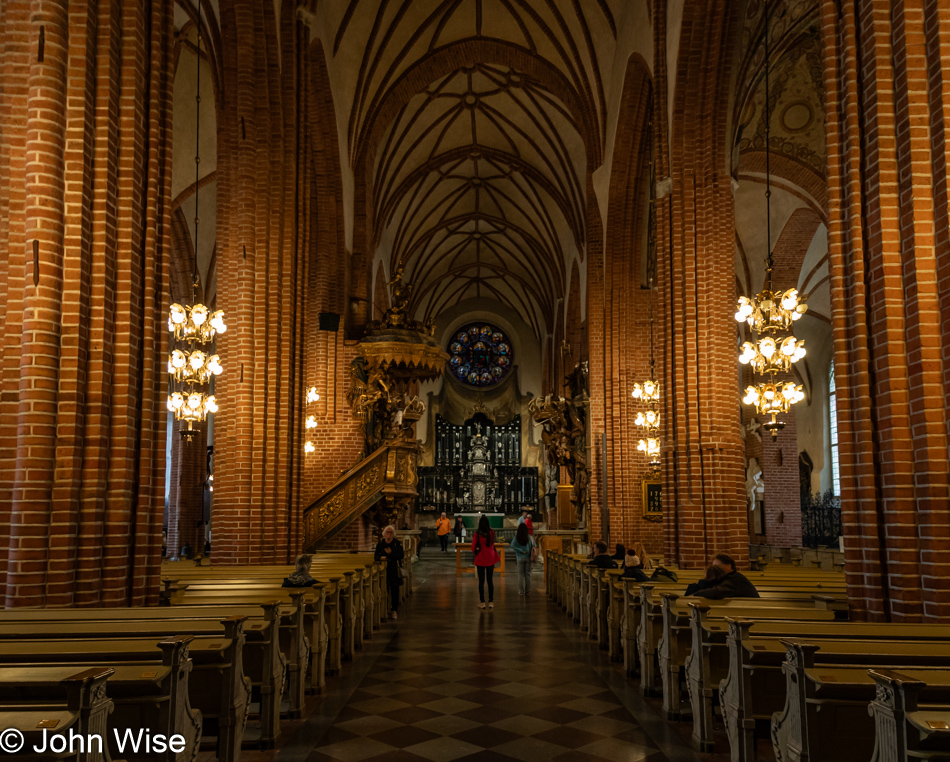
Storkyrkan is translated literally as the Great Church, a.k.a. Stockholm Cathedral. Consecrated in 1306, the construction of the church was likely started back in the last half of the 1200s.

To the left and right are the Royal Pews, and straight ahead, you see the current altarpiece dating from 1652. It is the fifth in a series of altarpieces that, for the most part, ended up in other churches, while the third one from Lübeck (made in 1468 by Hermen Rode) is located over at the Swedish History Museum and, I believe, is pictured more than a dozen images above.
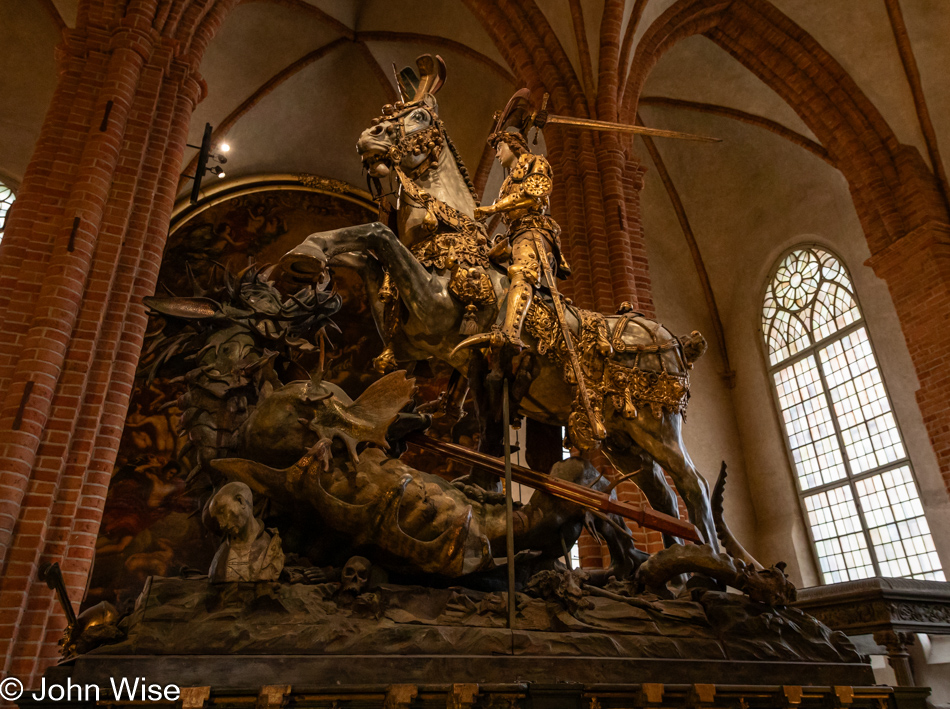
This Saint George and the Dragon statue, possibly depicting the Regent Sten Sture the Elder as a knight on horseback, was supposed to be a funerary monument for the regent and his wife. He commissioned the work from Bernt Notke also from Lübeck, Germany, with the intricate statue being inaugurated in 1489. The story goes that Sten Sture prayed to Saint George during the Battle of Brunkeberg in 1471 against the Danes and, in gratitude to the saint looking over his troops, honored this early Christian martyr of courage and selflessness. The original story behind the wooden sculpture is based on the legend that Saint George slays a dragon in order to save a princess.
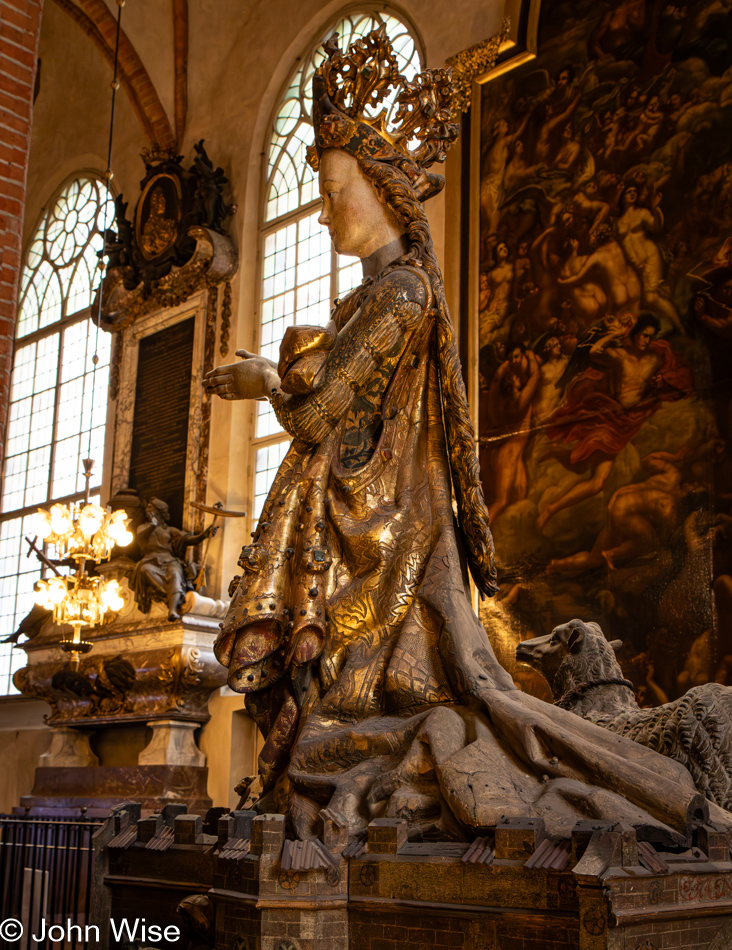
This is a detail of the Saint George and Dragon statue, the princess, which sits off to the side on top of a citadel.
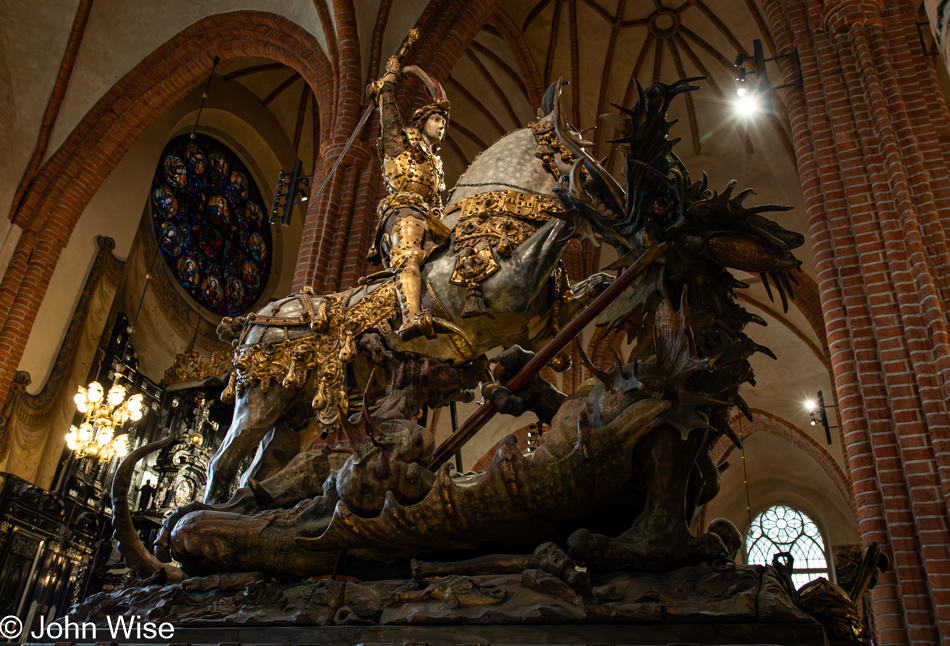
The view of Saint George and the Dragon from the other side of the sculpture. This is quite possibly the most complex wood carving I’ve ever seen. One article about this monument said: “The figure of St. George also contained bundles of relics inside his chest, located behind his breastplate in four compartments.”
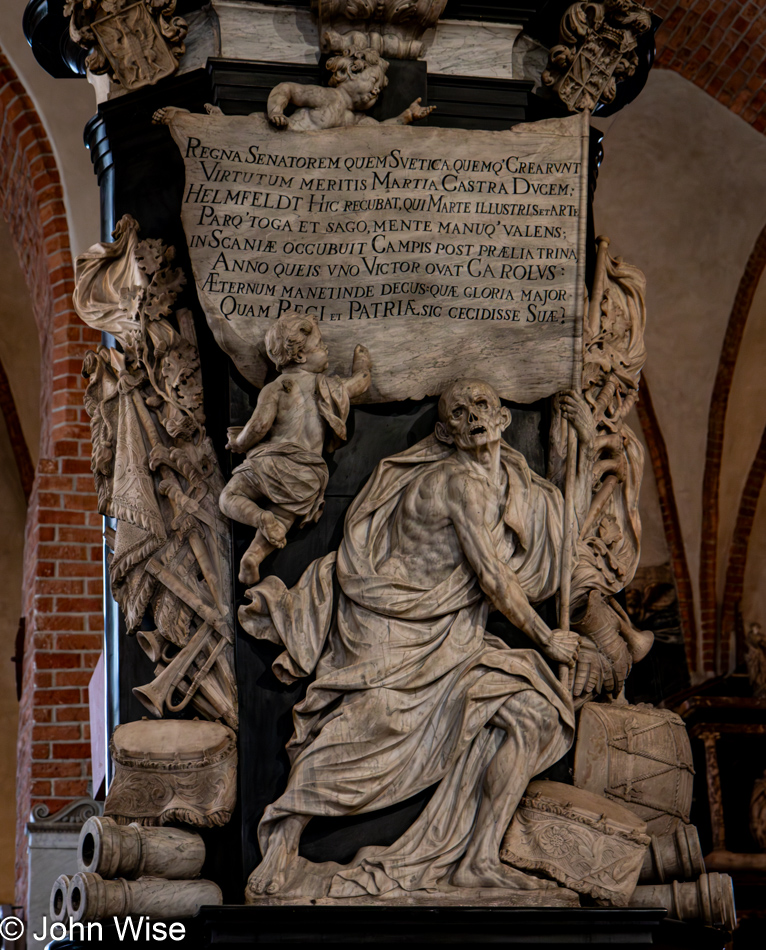
I would have liked to have shared something about this amazing sculpture, but when you search for this image or any other statuary from Stockholm Cathedral, all you are likely to find are references to the Saint George and Dragon monument. Maybe Caroline’s search-fu will deliver something after she tries deciphering the Latin text on Death’s banner. [Indeed, after running the text through Google (ahem) Translate and searching for the name “Helmfeldt” mentioned in the third line, I’m quite certain that this sculpture honors Baron Simon Grundel-Helmfeldt, a field marshal and governor who died in battle in 1677. – Caroline]

And this, kids, demonstrates perfectly why we are not supposed to touch art or take stones from national parks because, after centuries of people walking over this tomb, most of its features are gone and unrecoverable. Best estimates show tourism numbers to the Stockholm Cathedral to be in the range of 150,000 – 250,000 visitors per year, while the Mona Lisa and Grand Canyon see about 6 million visitors per year each. You do the math, take enough stones from a national park, and before you know it, the park has been erased from the surface of the earth. [John, this has happened already! Just the other day, I read a story about the Fossil Cycad National Monument in South Dakota (designated in 1922), renowned for one of the largest concentrations of fossils of a particular plant in the world. Vandals stole the fossils, and the monument was demoted in the 1950s. – Caroline]
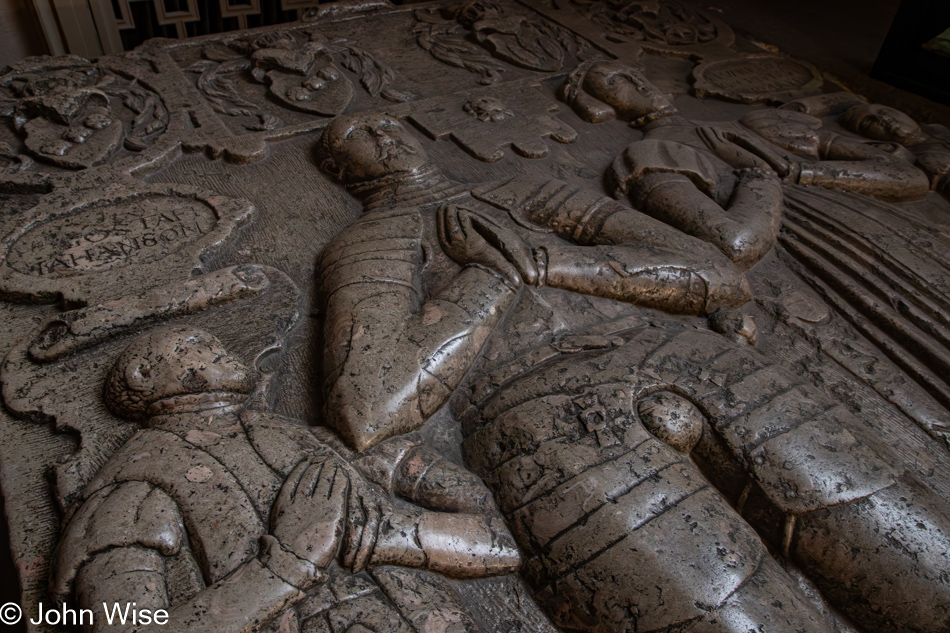
I found a single reference to this sarcophagus that labels the tomb as belonging to the Tre Rosor family, which seems to traditionally be Norwegian though there is also a reference to a Swedish branch. Doing these searches for fixed objects that change little over time and that must have been photographed many times by now, and yet the search engines can’t identify them tells me that society’s fear of facial recognition might be overblown.
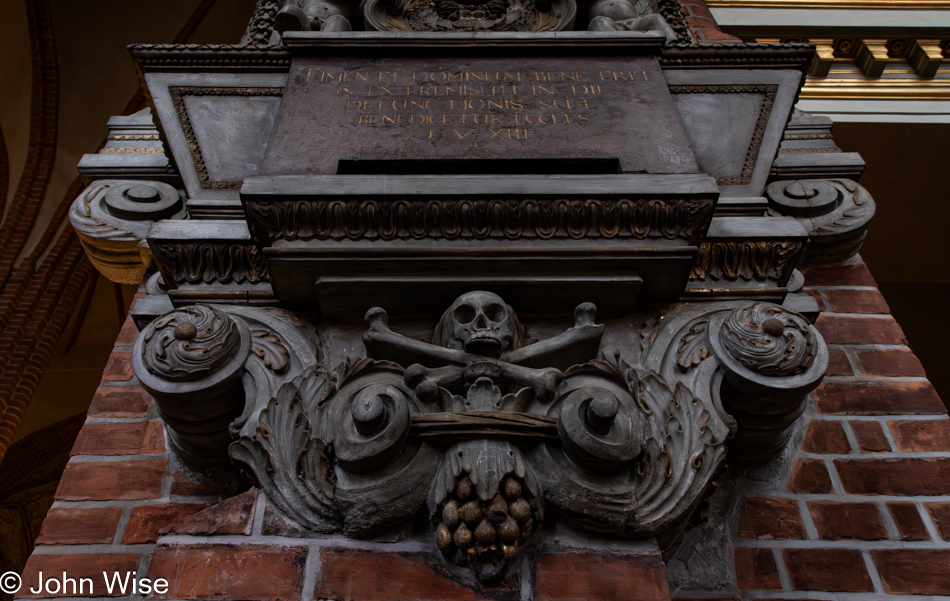
I’m scratching my head here, wondering if American churches deal with the idea of death by putting on display those things that represent its presence or if we ever really acknowledge it at all. In the feel-good society of make-believe, we bathe our environment and psyches in a kind of sterility where the inevitable end is kept out of view. Come to think of it; we do the same thing regarding financial responsibility for the majority of high school students who are about to encounter the clutching arms of economic ruin, should they not know how to navigate the dark waters of institutional finance.
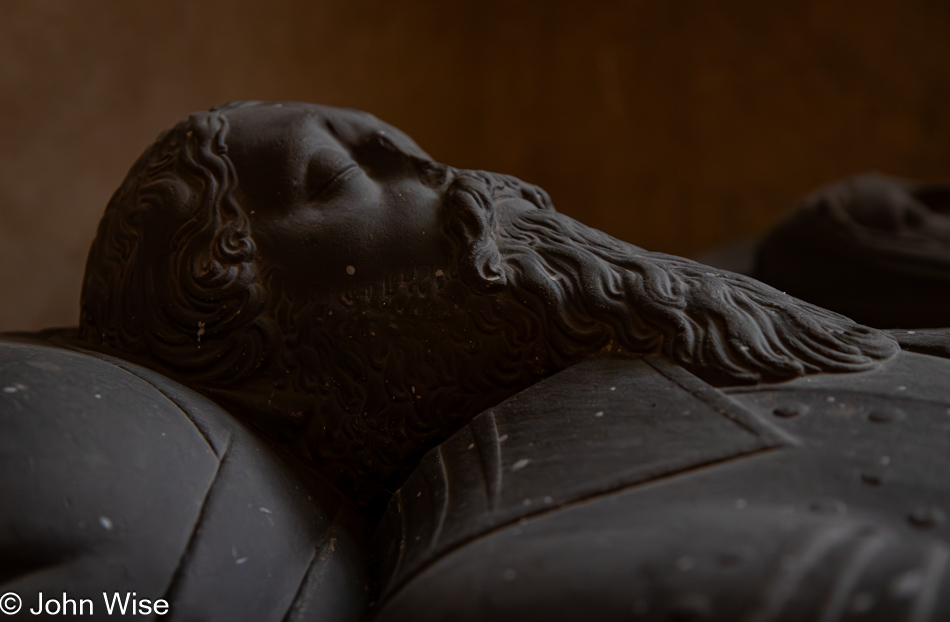
Lars Bengtsson Skytte and his wife, Anna Posse, are entombed here at the cathedral. Back in the early 17th century, Lars was mayor and then governor of various locations, ultimately earning him a place here at Storkyrkan. [If I recall correctly, the story behind the effigy’s missing nose is that Lars left most of his wealth to the local poor, and his disappointed heirs damaged his tomb. – Caroline]
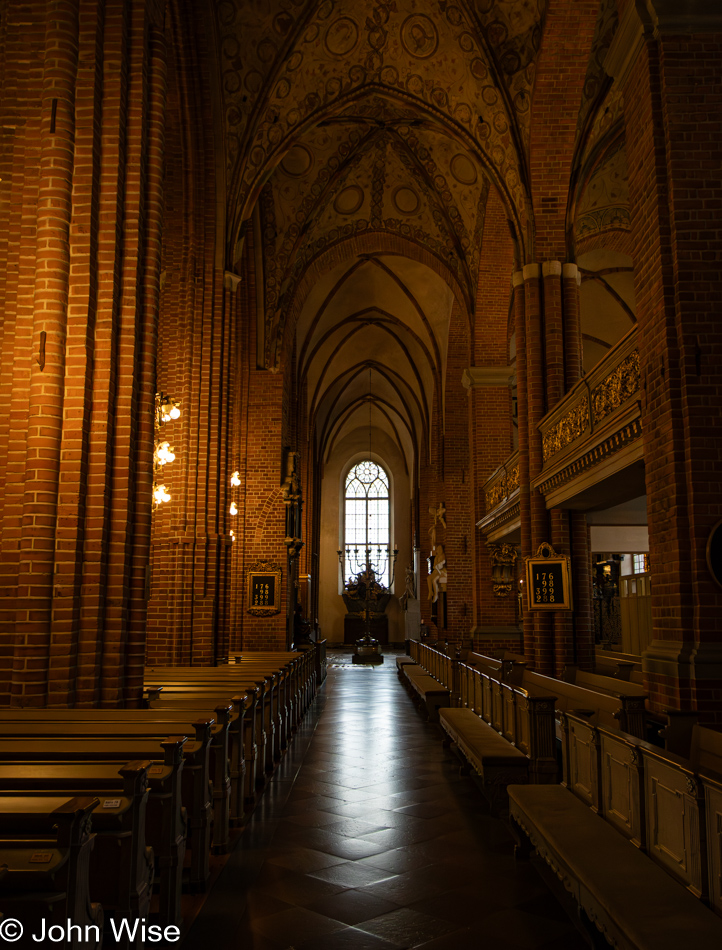
The medieval vault paintings are from 1346.
Update: I forgot to mention that we’d seen the grave of Carl Linnaeus, who is also buried here.
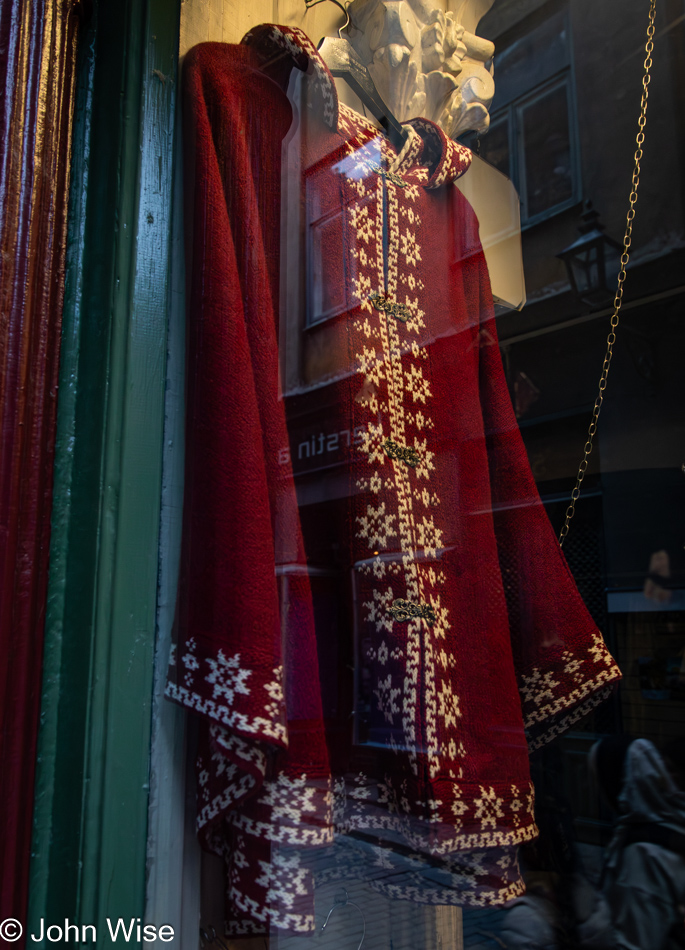
On our way toward the southern end of Gamla Stan, we passed the shop of designer Kerstin Adolphson. Caroline assumed it would be too expensive, which didn’t matter as the shop was closed anyway, and tomorrow we’d be out of Stockholm, so there was no sense considering the lost opportunity to browse. Once we got home, she learned that the prices are actually quite reasonable, but sadly, the website is poorly presented, with a limited number of items offered. Maybe we’ll be able to stop in on a subsequent visit.
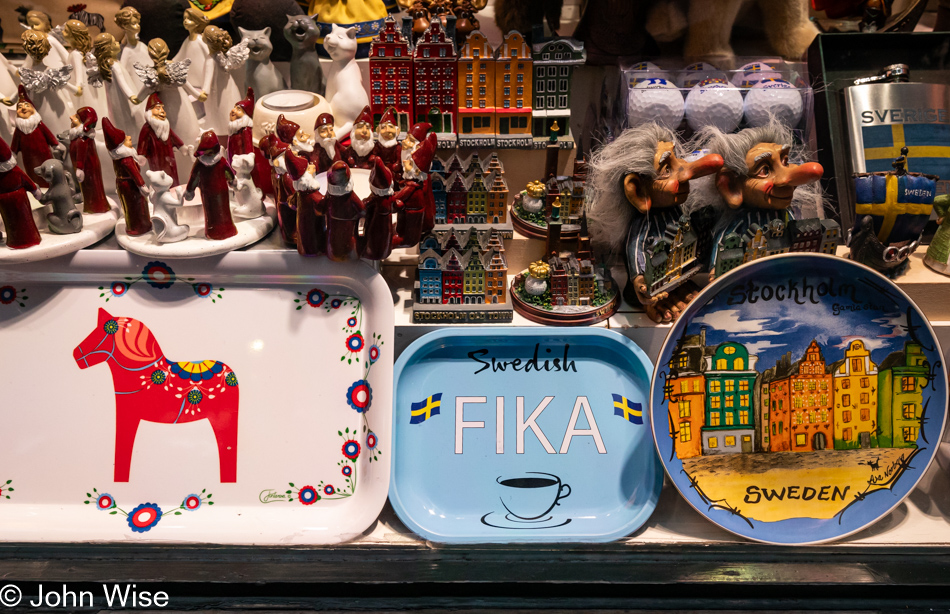
We did manage to stop in to pick up a few souvenirs for people back home but are having a hard time finding anything for ourselves (other than the yarn Caroline’s been collecting). We would have liked something with the word fika on it, but nothing really grabbed our desire to have it, so we’ll leave Sweden relatively empty-handed, but the same cannot be said about our experience.
On our way to dinner, we were pulled into conversation by a young man named Hamsa, originally from Iraq. He was standing out in front of an Italian restaurant, and I’d wager he really wanted us to sit down with them, but we already had reservations. Seeing we were early, we allowed the conversation to continue, and with only a few people walking by, Hamsa continued to ask questions and offer stories. This young refugee originally landed in Germany for treatment of a rare cancer in his knee when he was 14 years old. It was attributed to his exposure to American munitions. The specialist that ultimately treated him was found in Sweden, which is how he ended up here in Stockholm, where he now works and lives. The guy seems mostly happy, but he’s also aware of his immigrant status and the conversation around the community that there are “too many immigrants” while he offers up that without the immigrants, all tourism and local culinary and lodging services would grind to a halt due to lack of interest from the local populace that doesn’t want certain jobs. This wasn’t the first and wouldn’t be the last time we’d have this conversation with immigrants in Scandinavia.

Our reservation was for 8:00 p.m., but the charming 300-year-old Den Gyldene Freden Restaurant was able to seat us early. There’s no sign or menu in front of this place; you simply go through the door where the hostess is the giveaway that you are at a restaurant. We were taken downstairs, underground into the intimate spaces of short tunnels that serve as dining rooms; we are enchanted. If you read enough of these posts from our time in the north of Europe, you’ll recognize that we ate a lot of tartar, and this night was no different as we opted for the veal tartar as a starter. Our main courses were something called Cabbage Pudding that Caroline ordered while I asked for the Veal in Dill. We’d eat here again and again if we had the option. The song of the night while dining ended up being by Allan Edwall performing “Årstider.”

It was only 8:00 p.m. when we emerged from our incredible dining experience and recognized that we’d missed a passing rain. Too early to turn in, we decided to return to the underground.
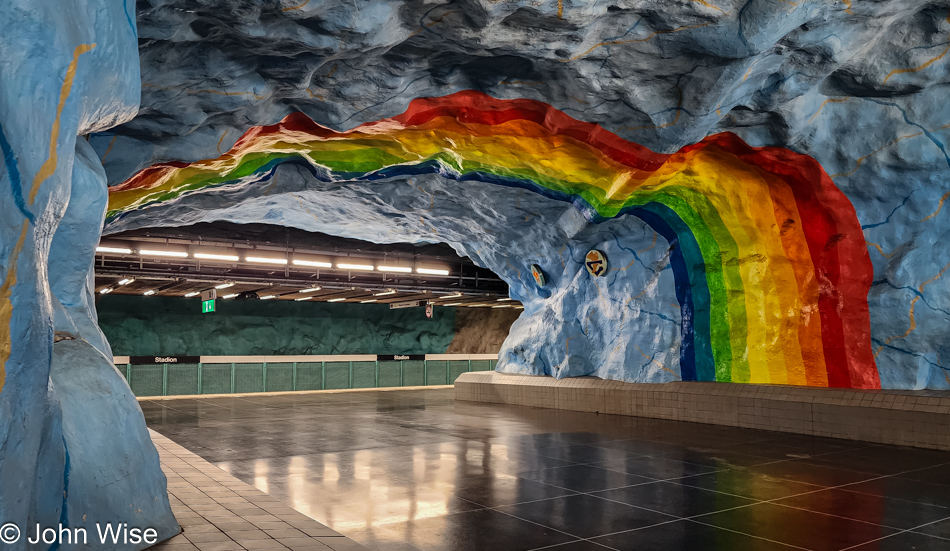
This time, our destination wasn’t more food but the unique character of some of Stockholm’s subways.
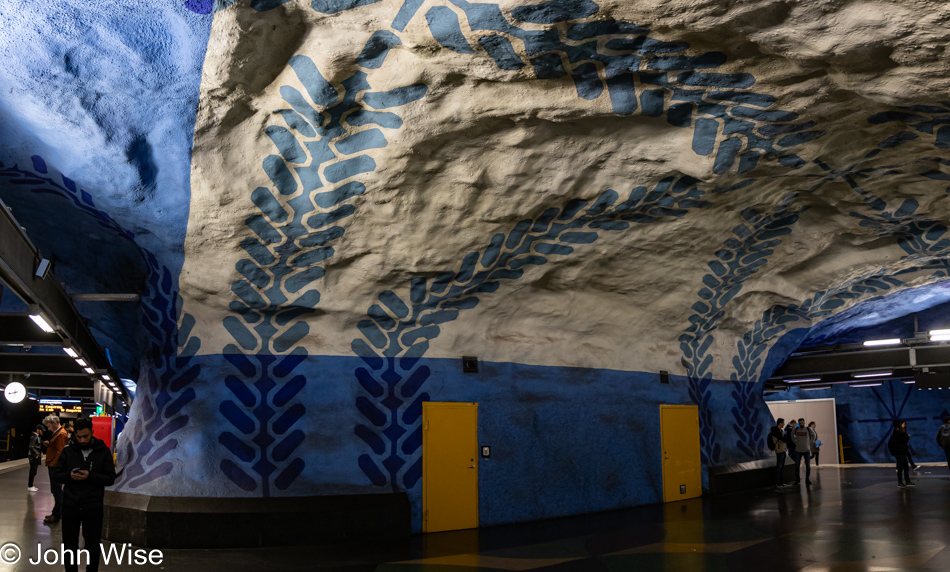
With a ticket good for an hour, we asked about a line that would bring us to some of the better-decorated stations and got on board.
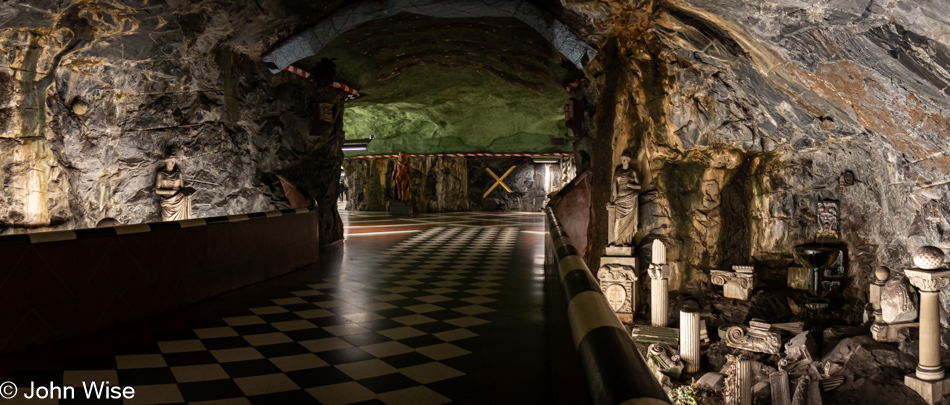
An hour is in no way enough time to see but a few stations, and with the two ends of the platforms both having potential sights to see, you’ll also spend a lot of time walking around.

This is the Västra Skogen station escalator and the ninth-longest in the world at 66 meters (217 feet) long, descending 33 meters (108 feet) into the earth. After riding it up, we turned around to come back down, and there were moments when my fear of heights was being triggered. As for the overall impression of our first full day in Stockholm, all I can say is WOW!
